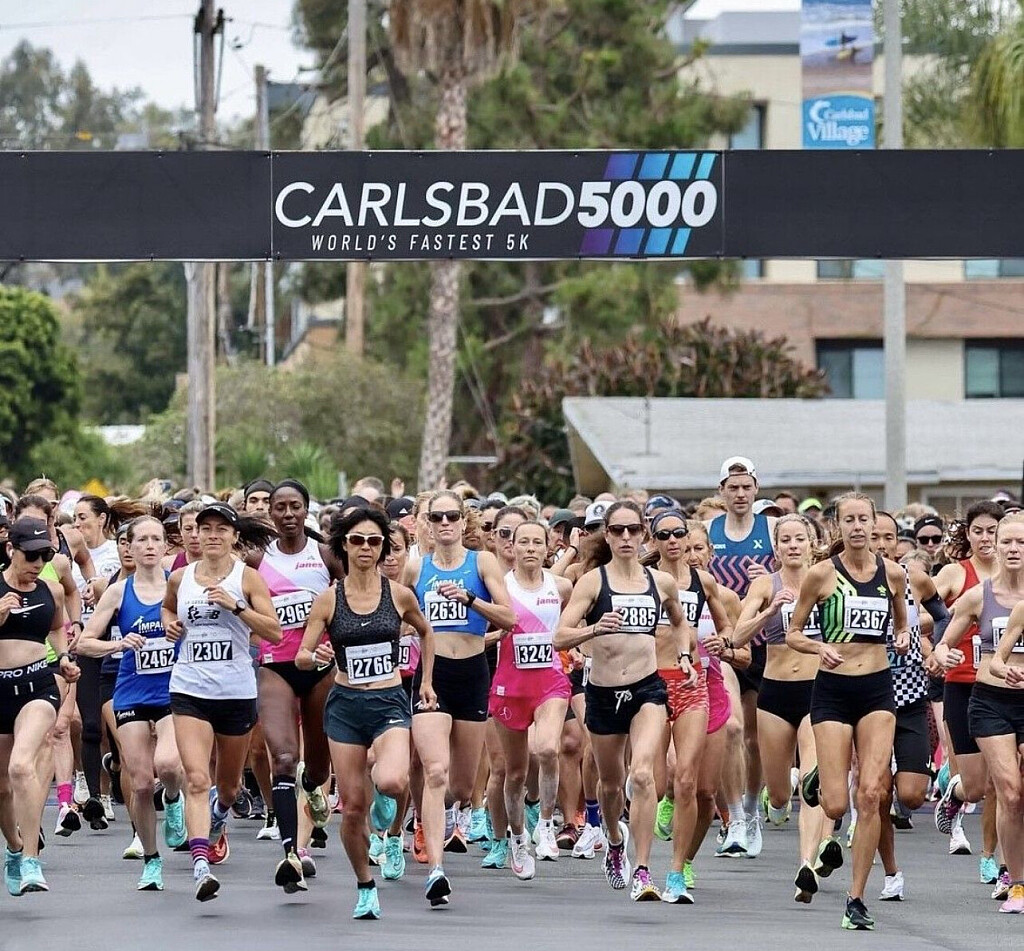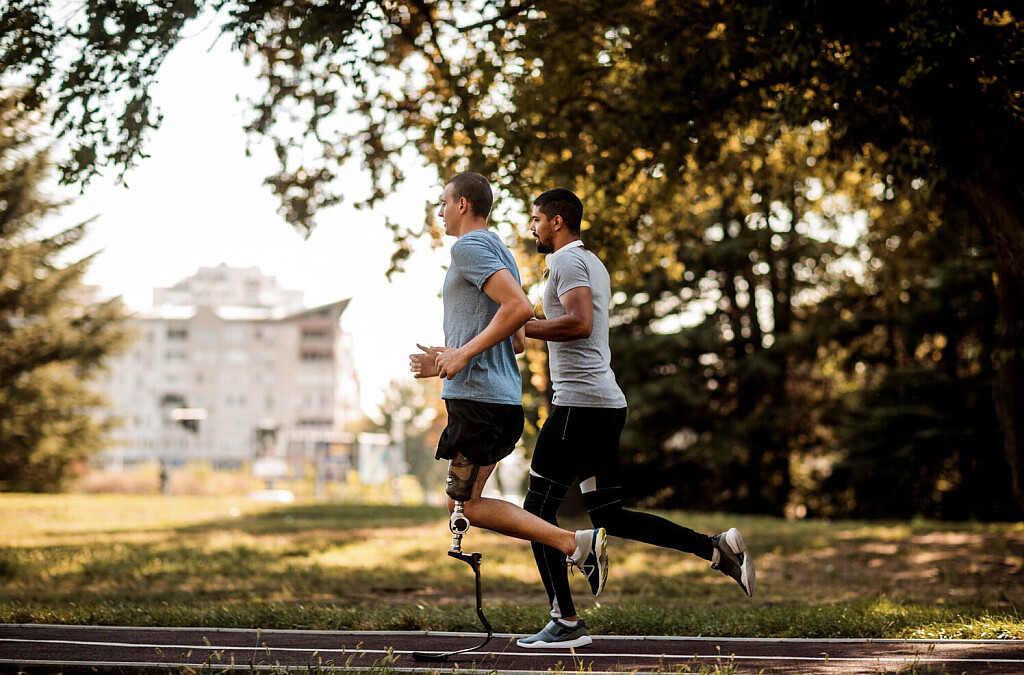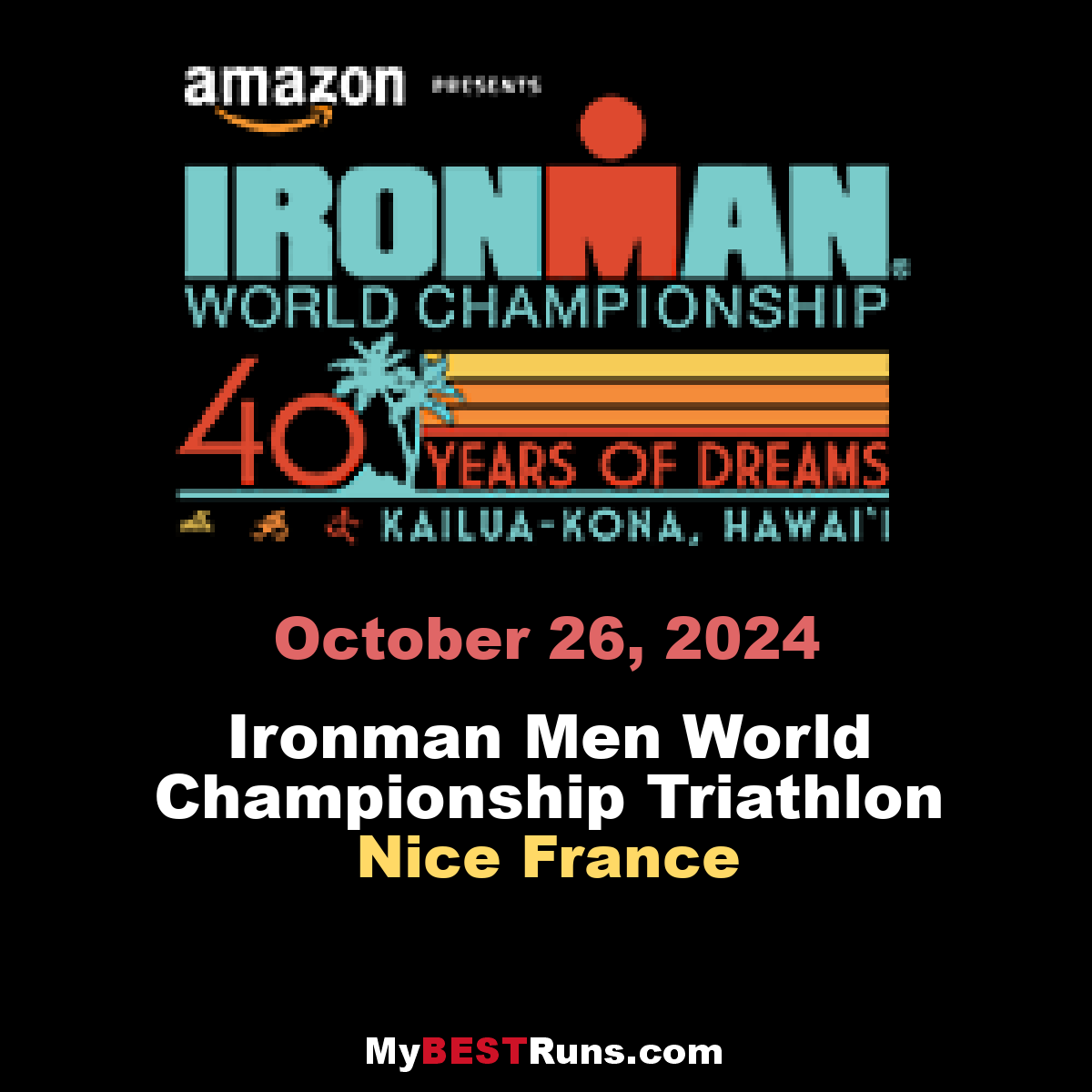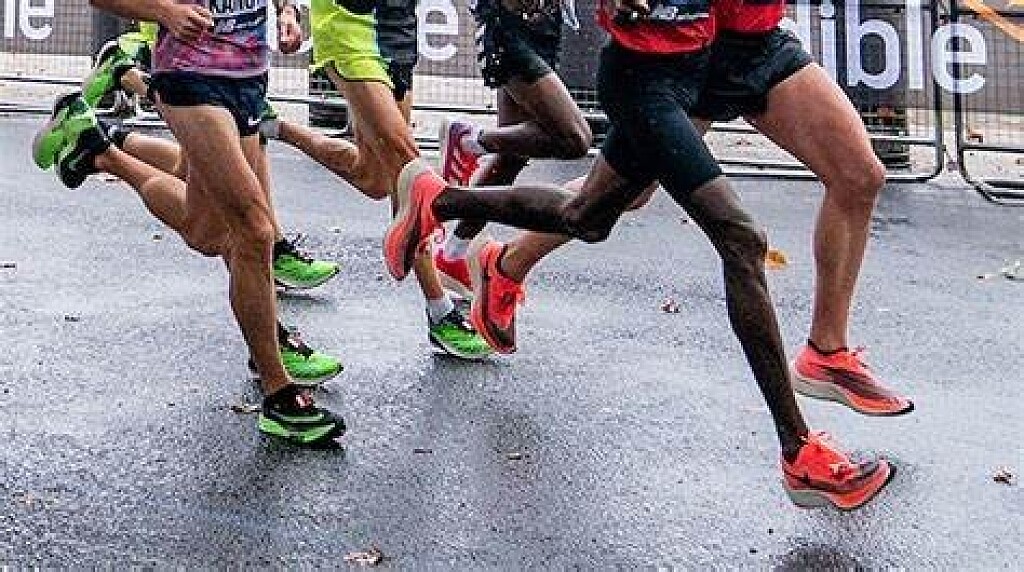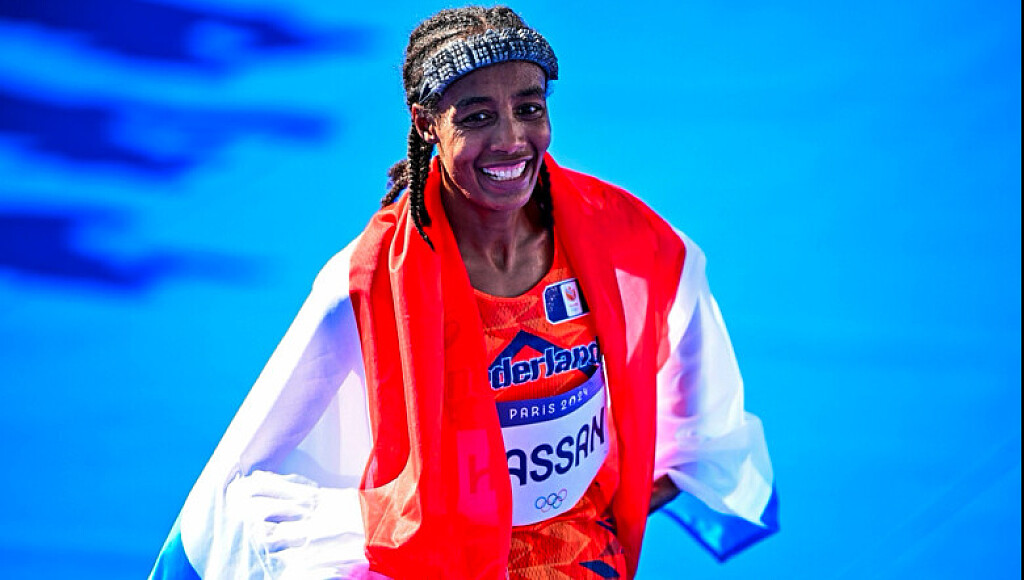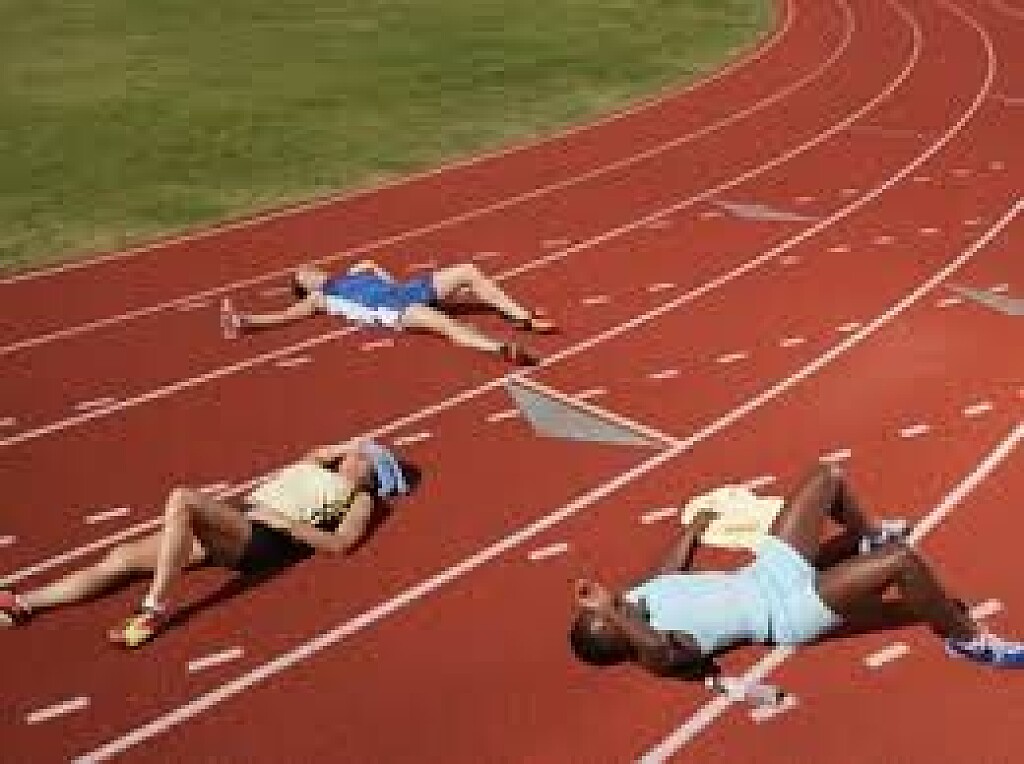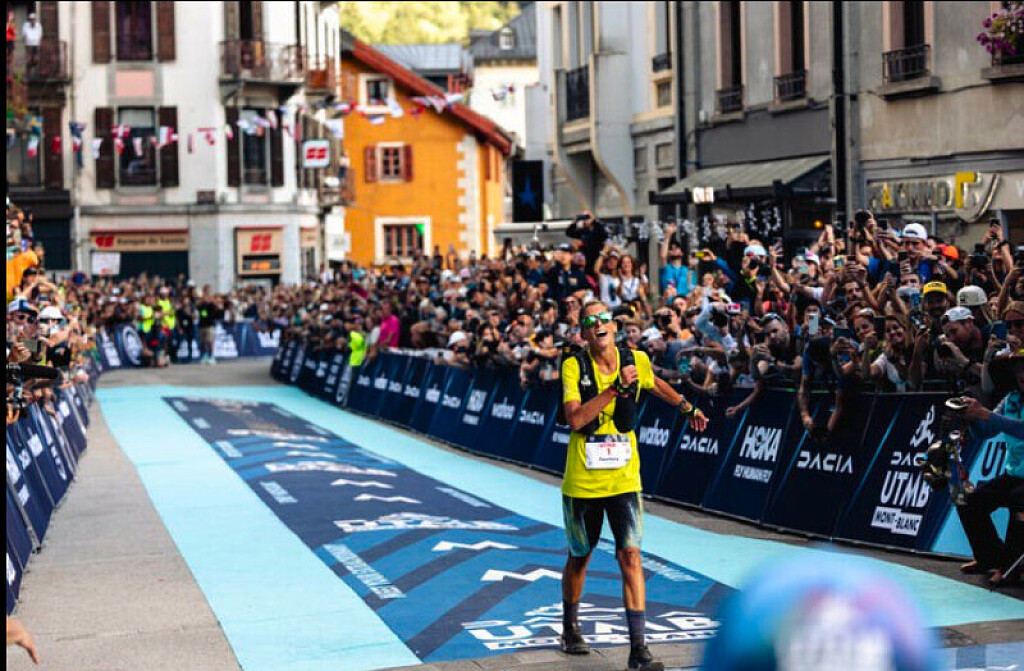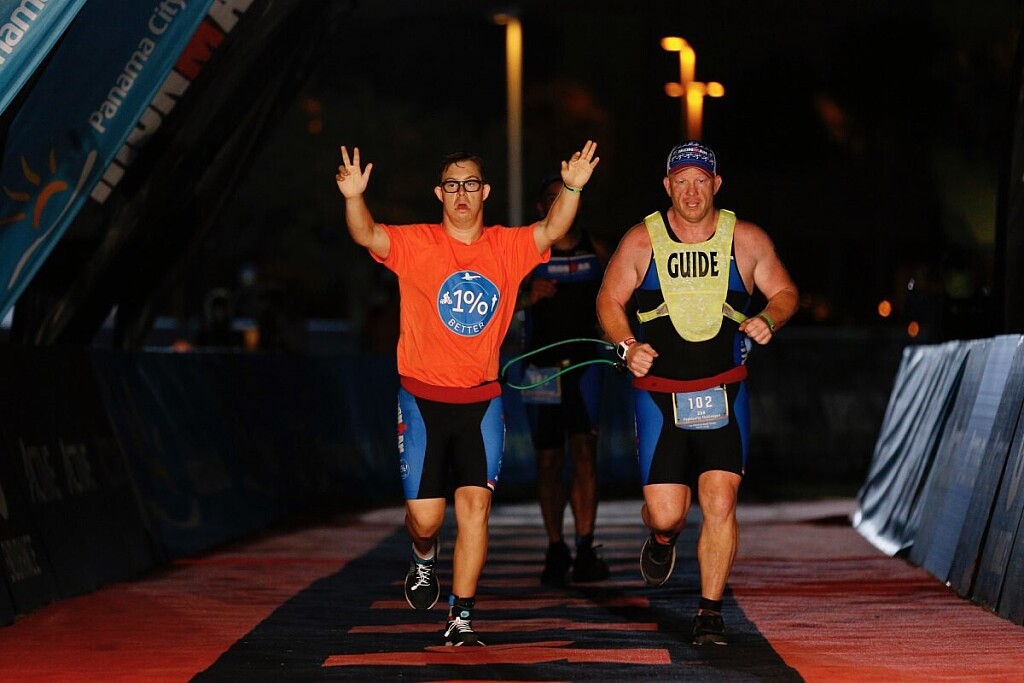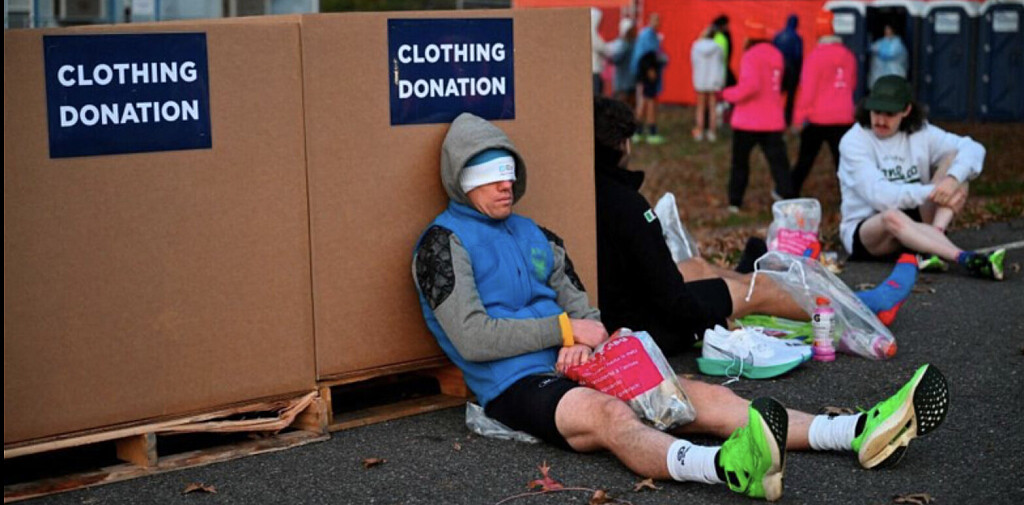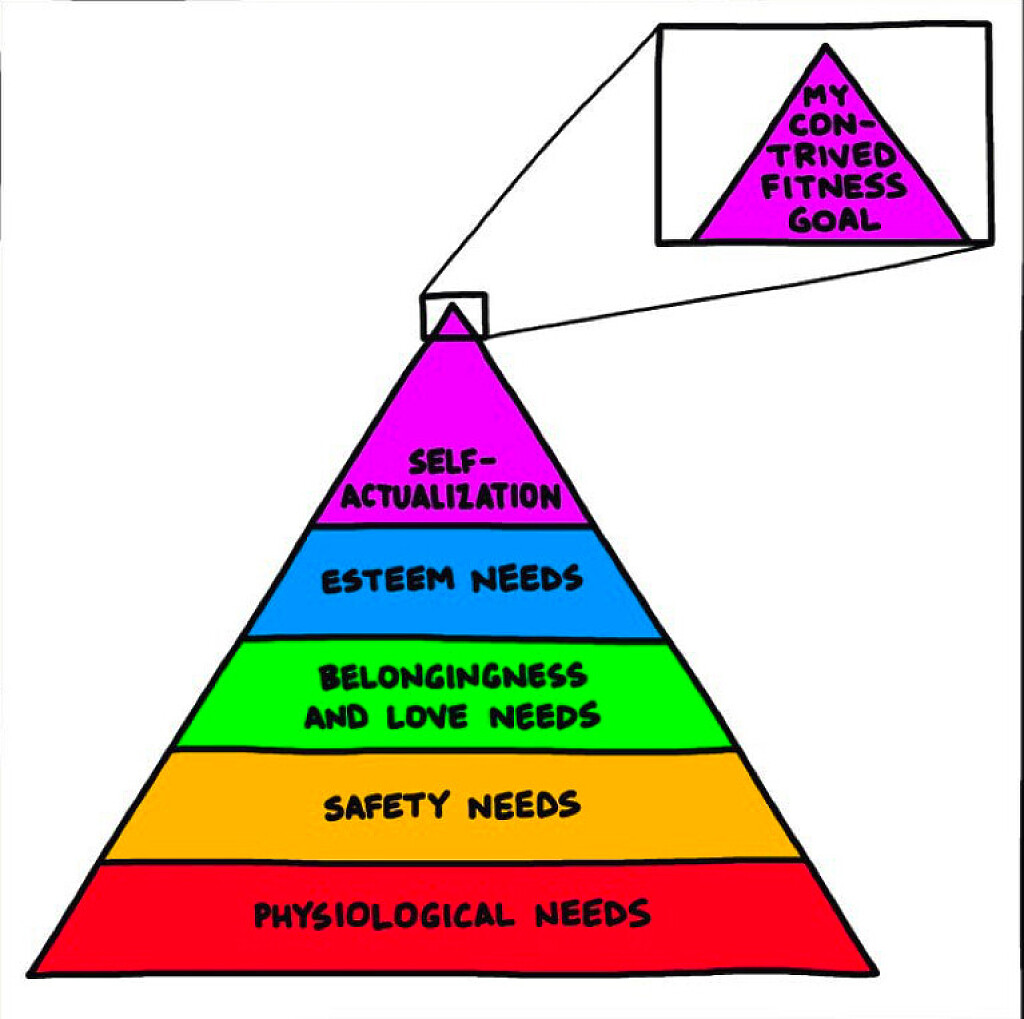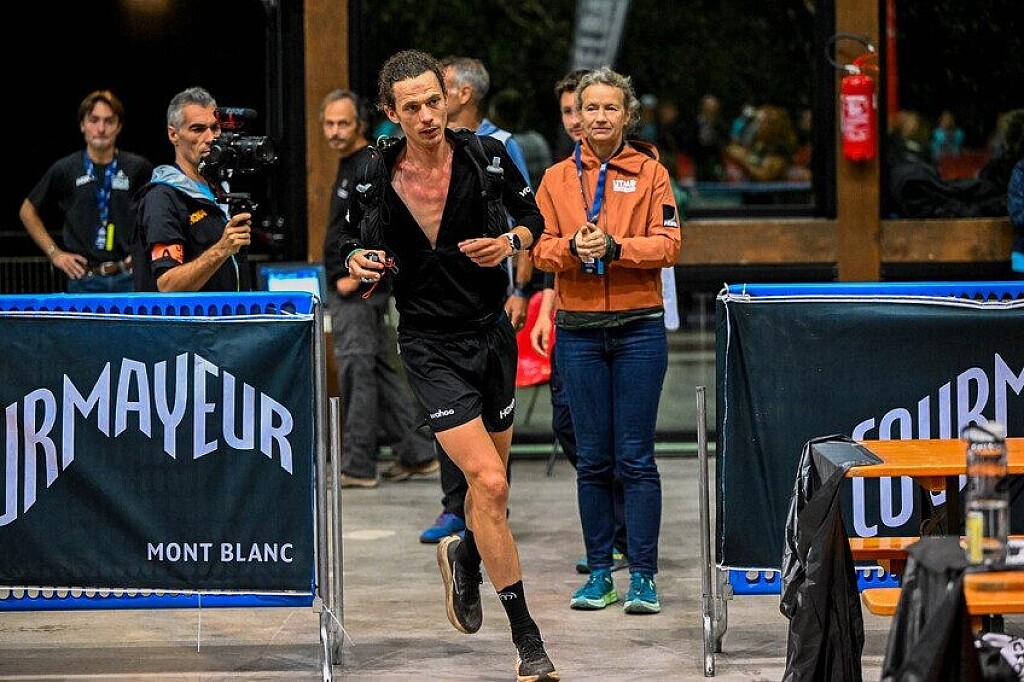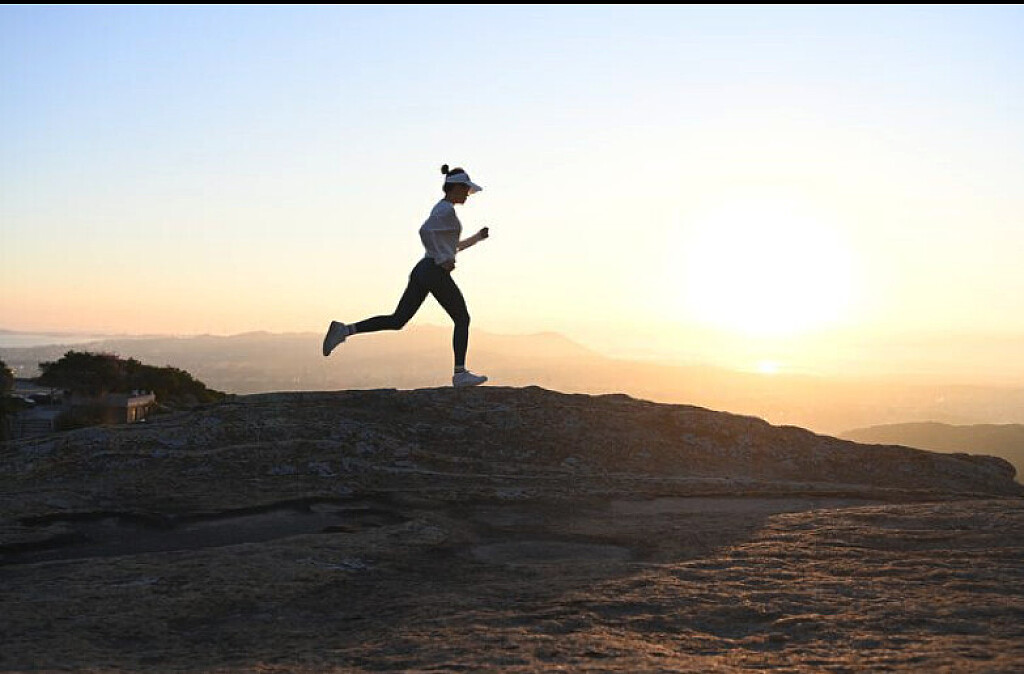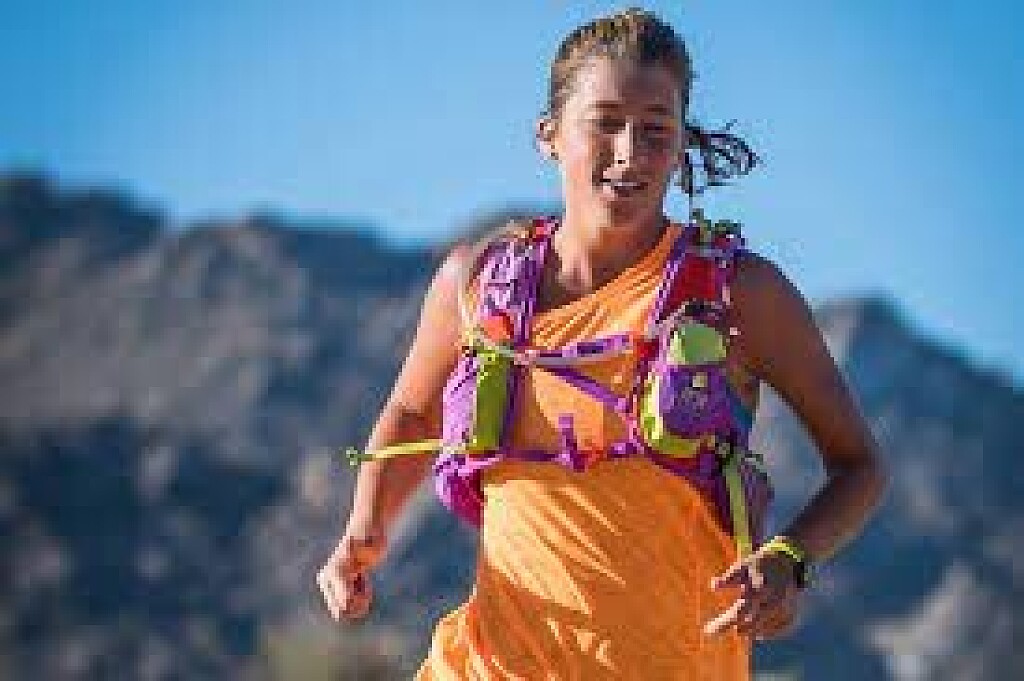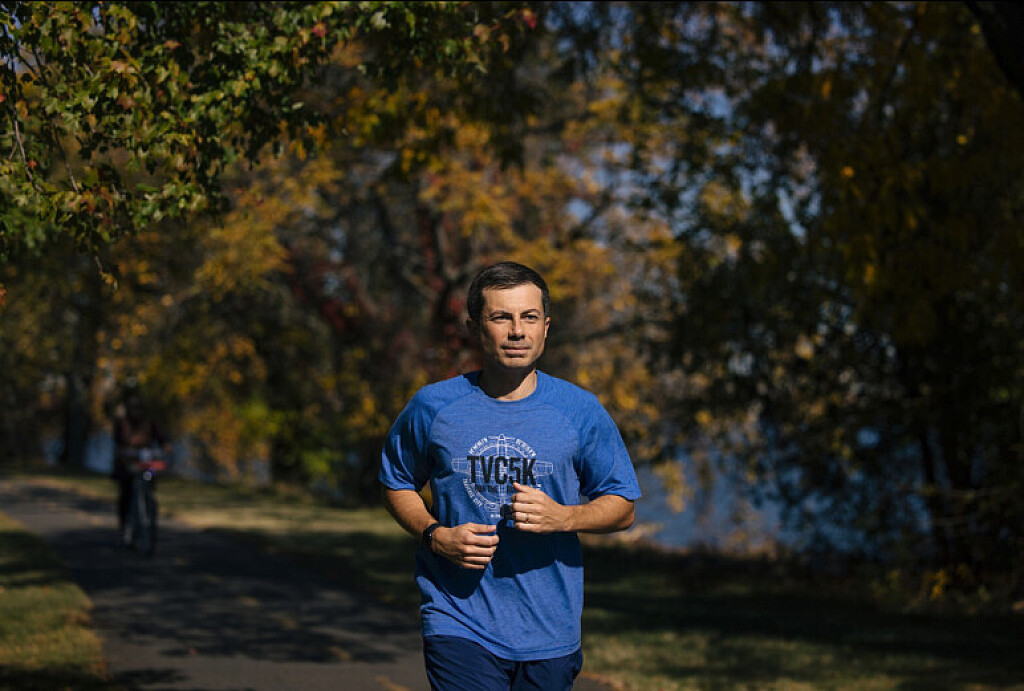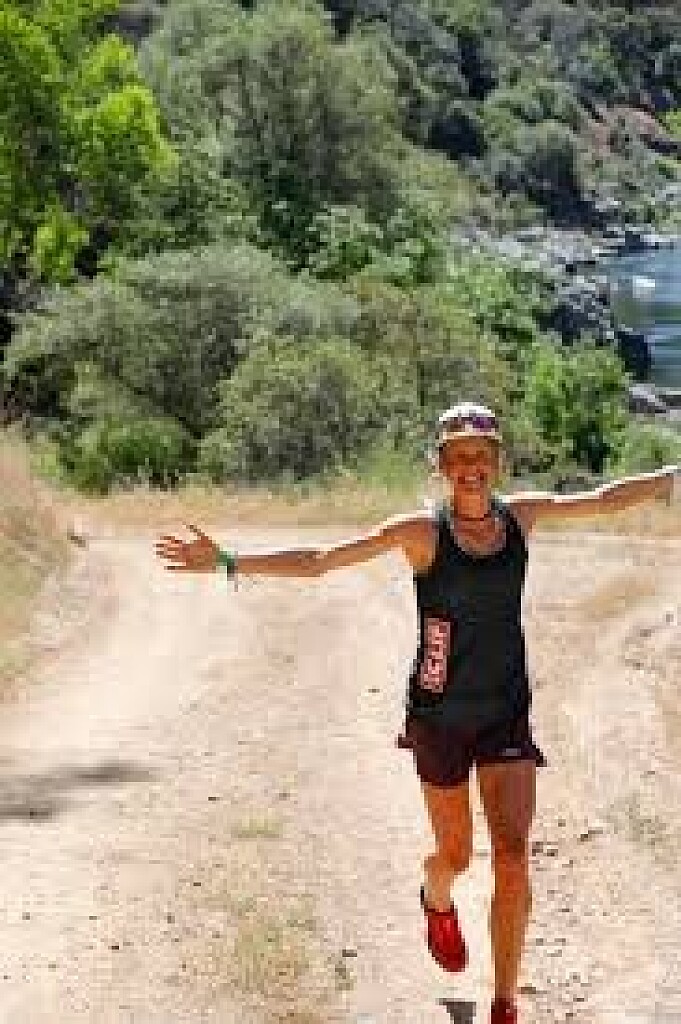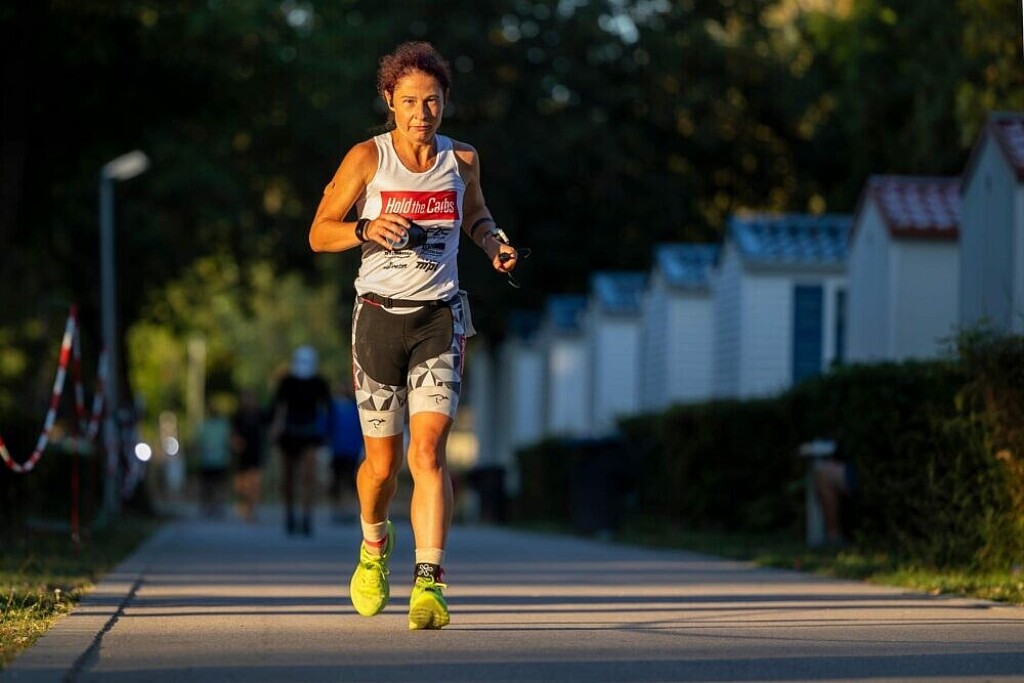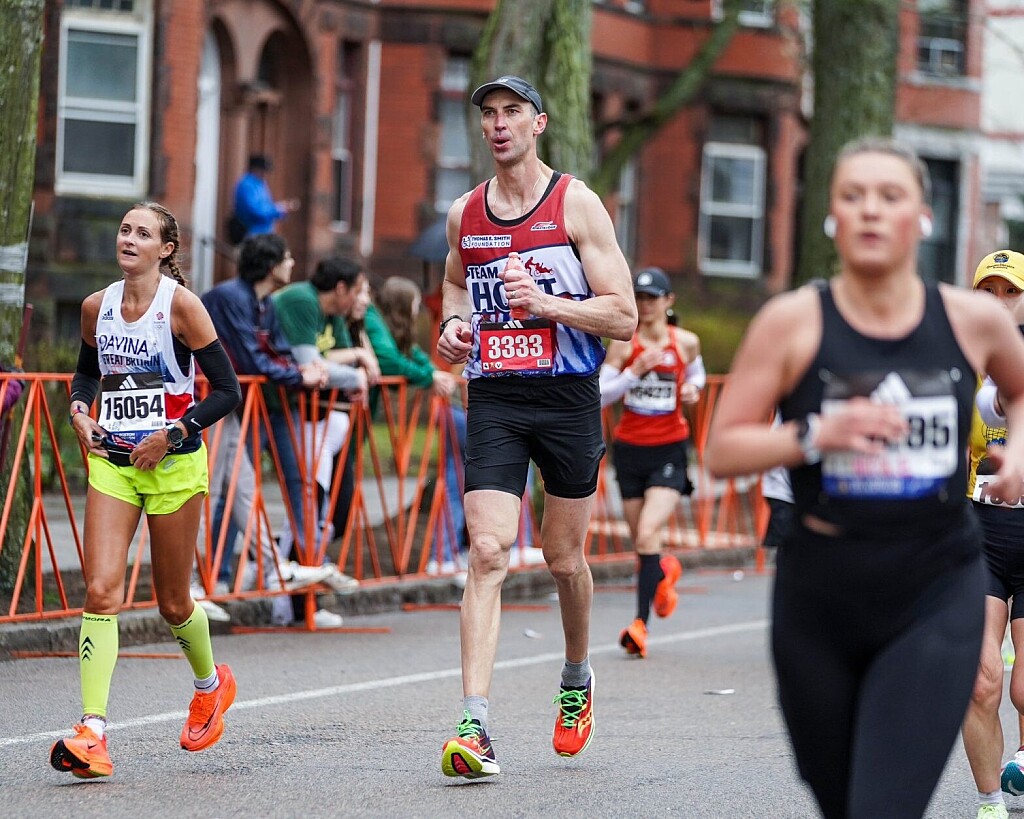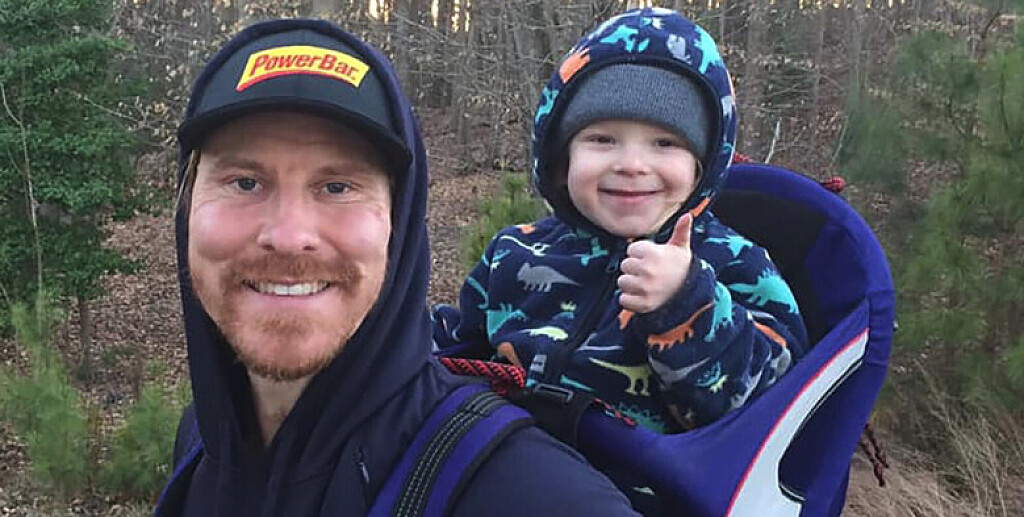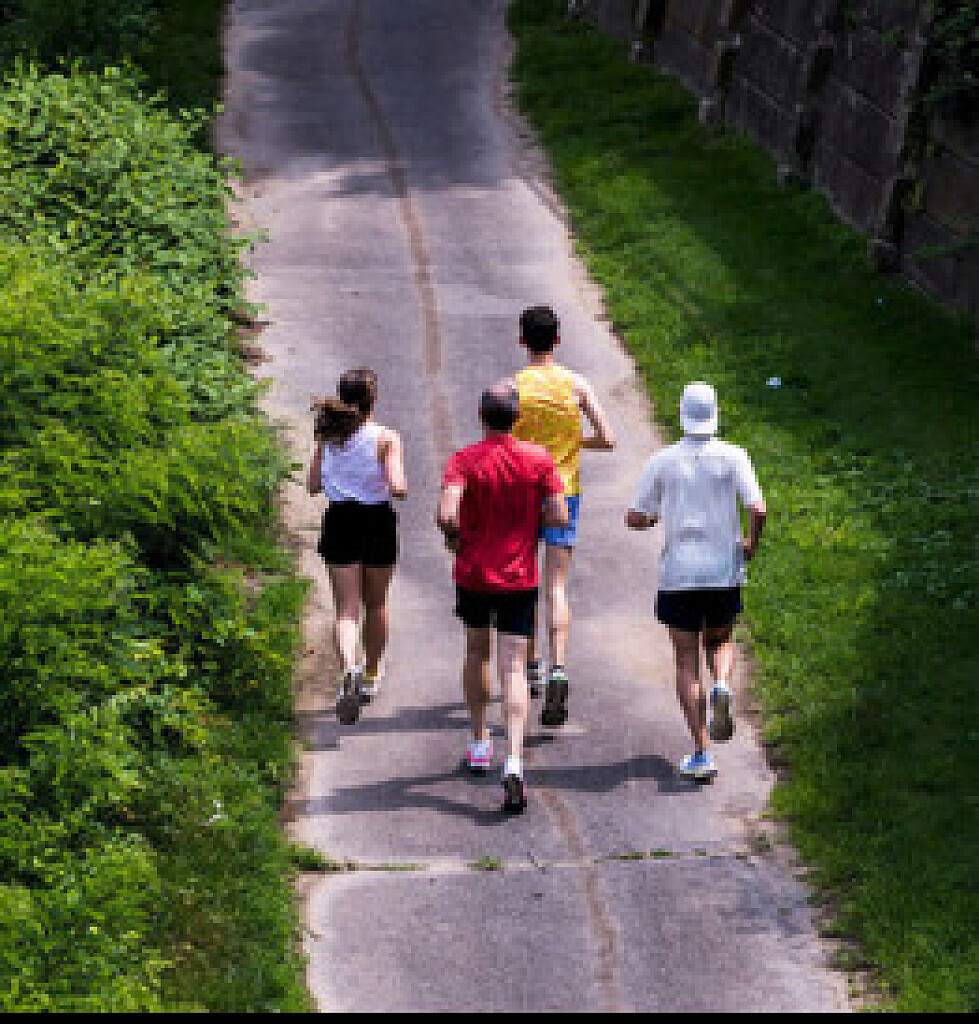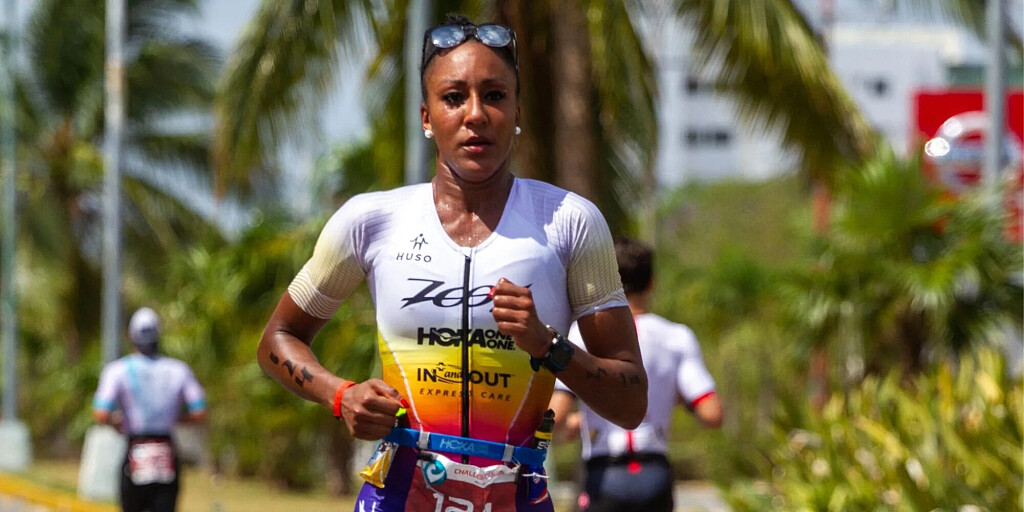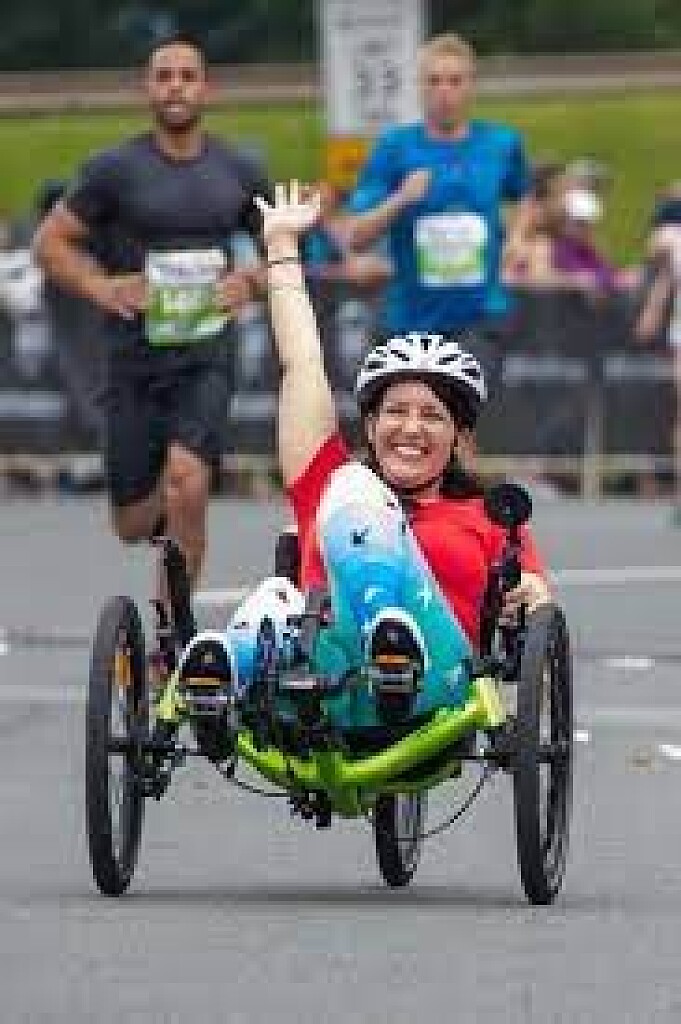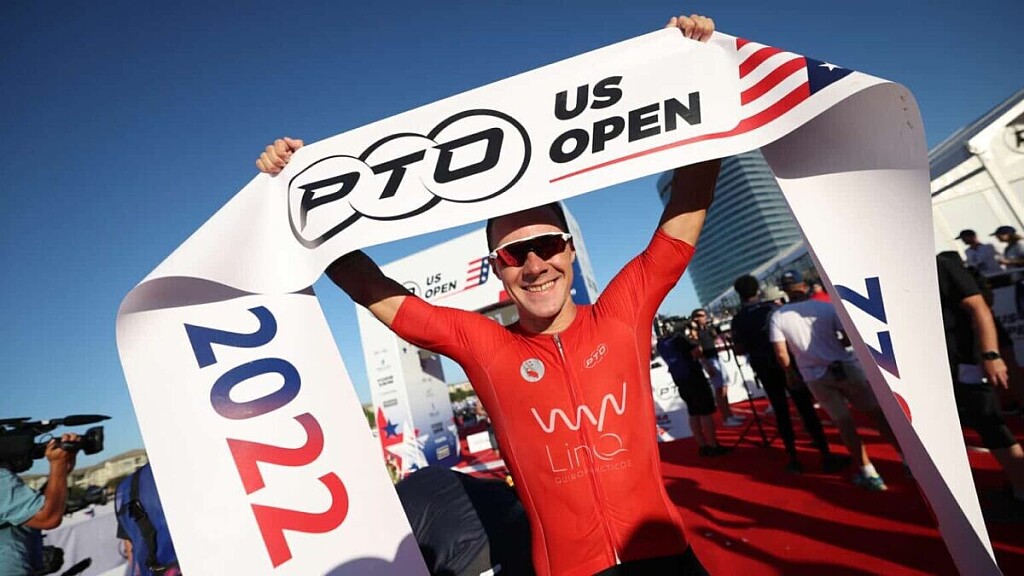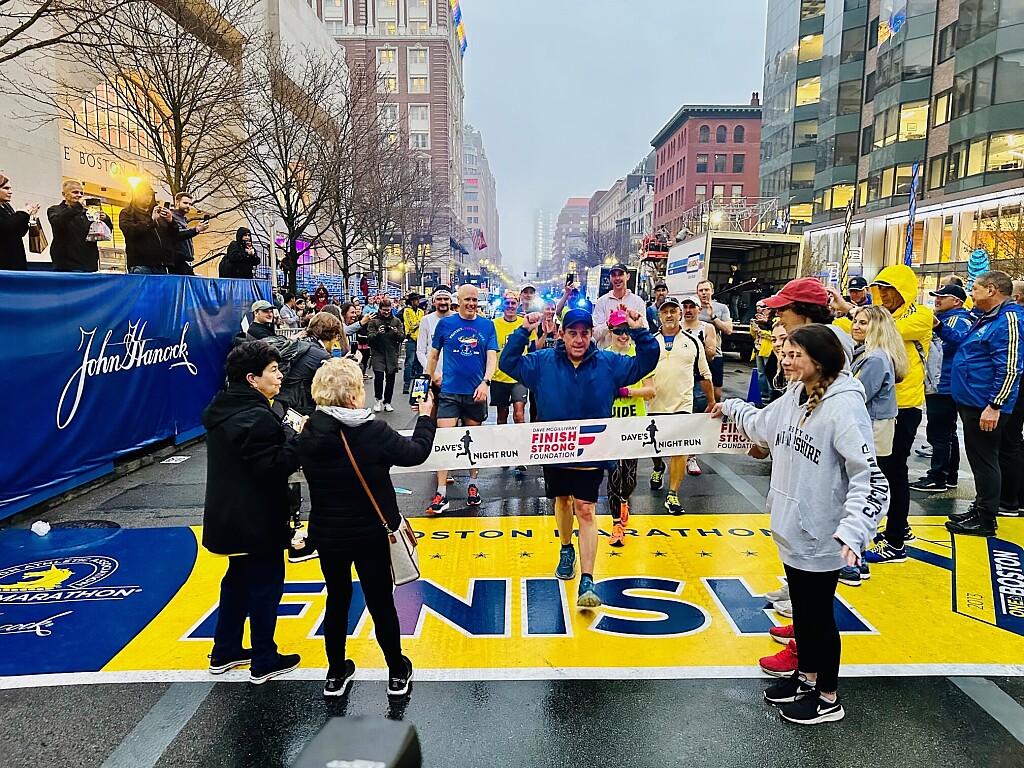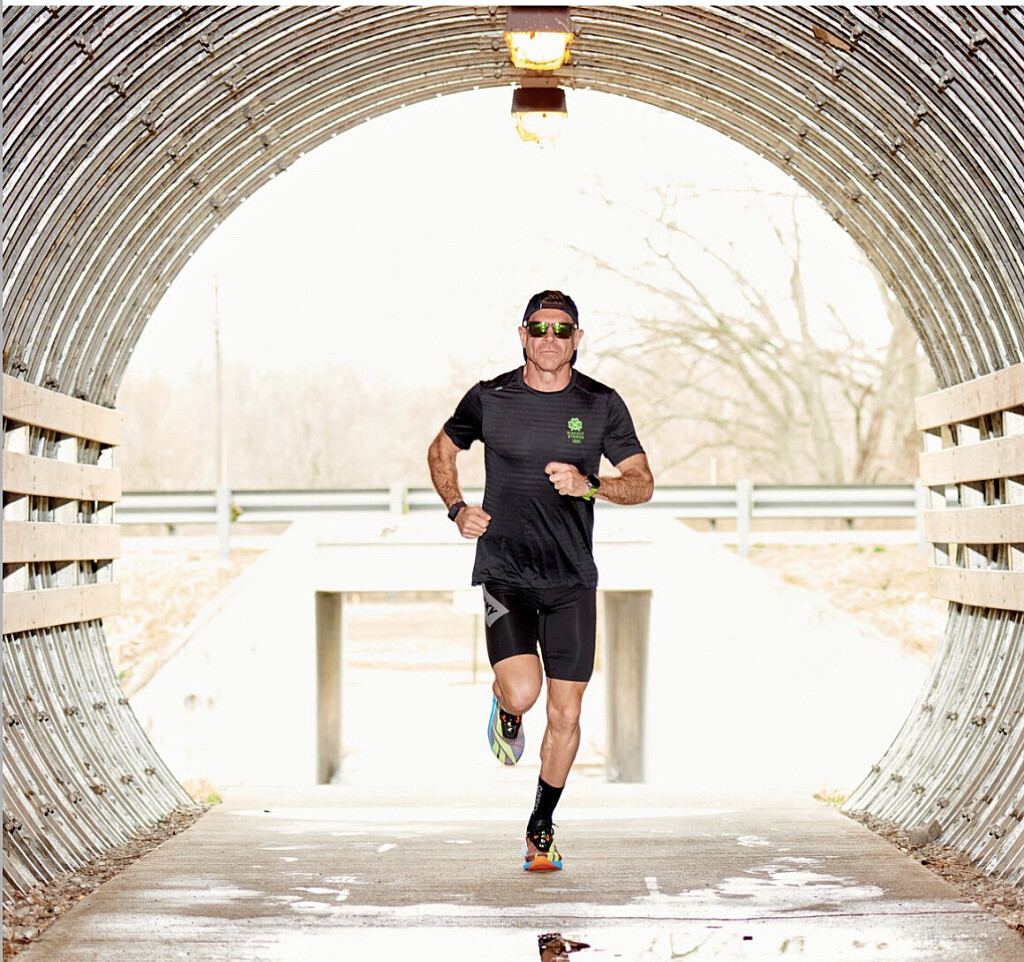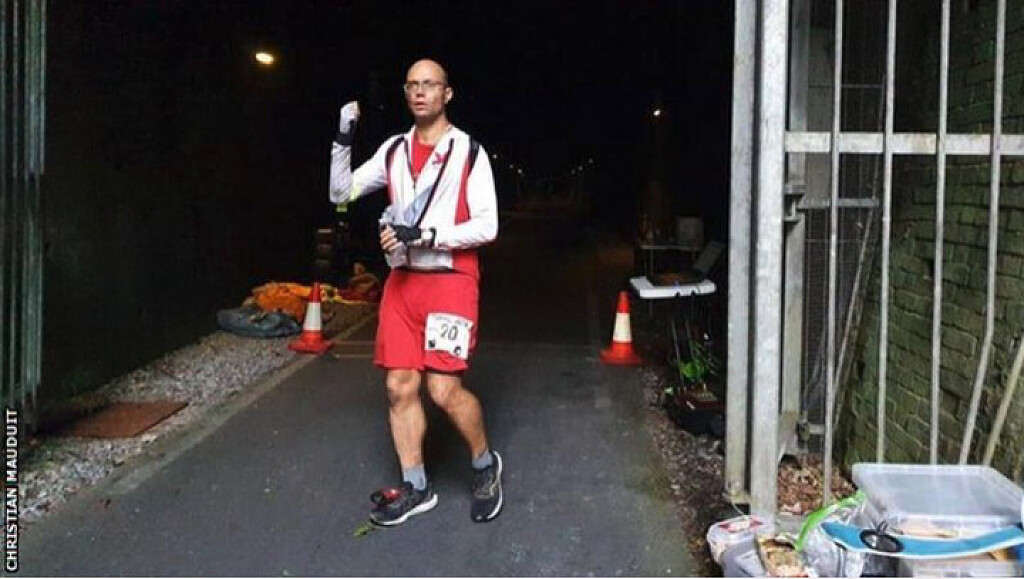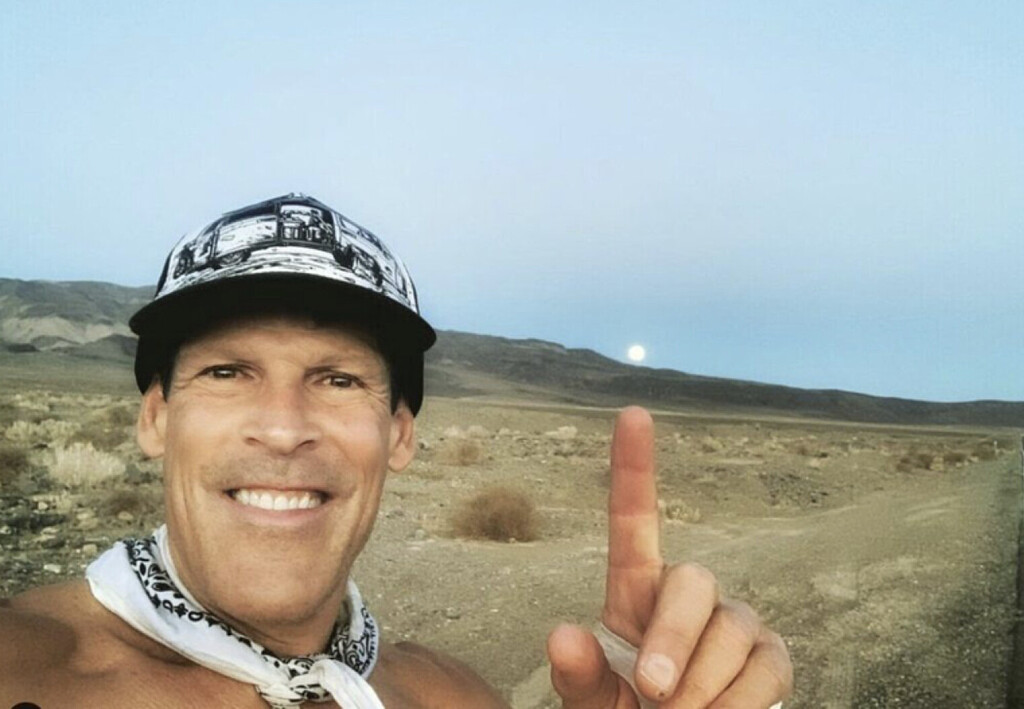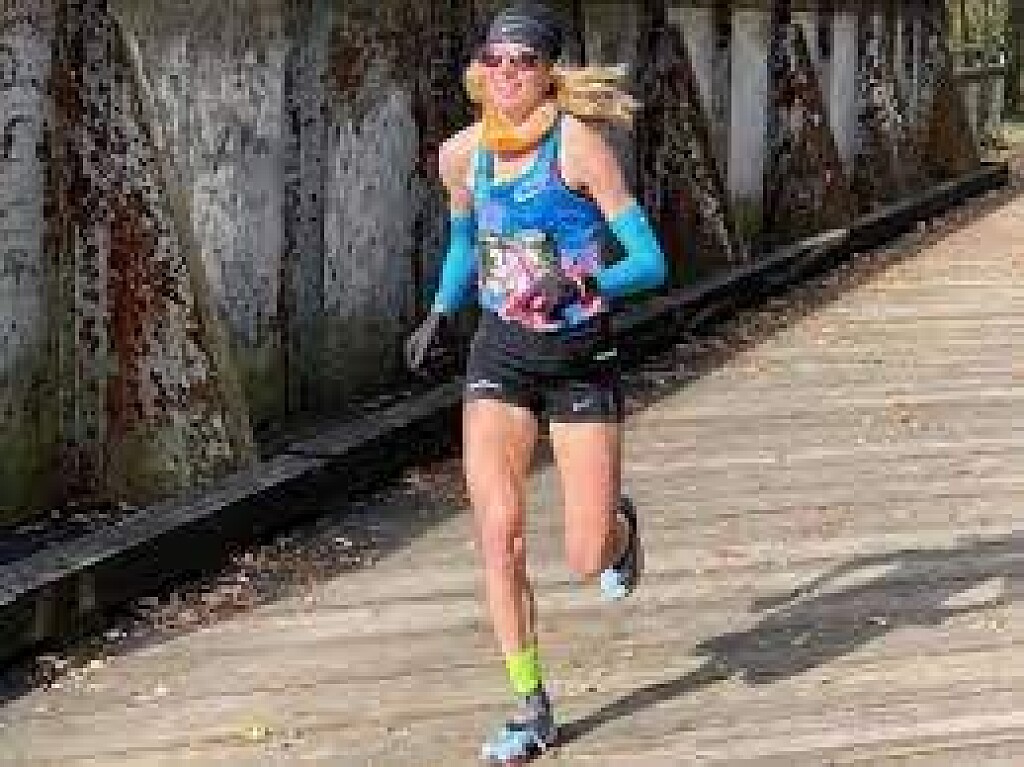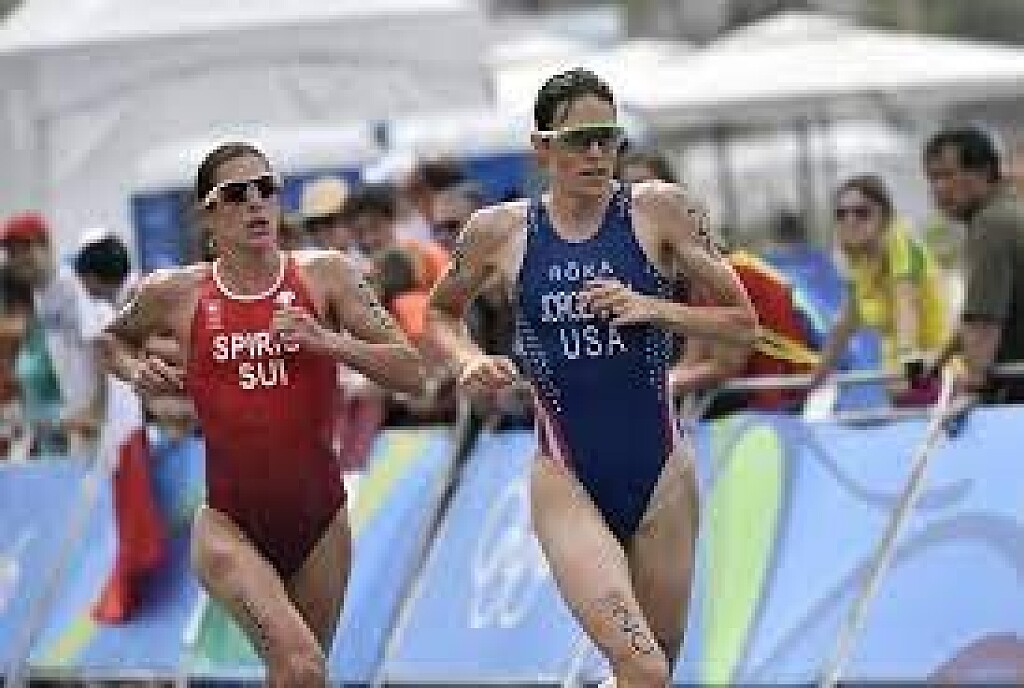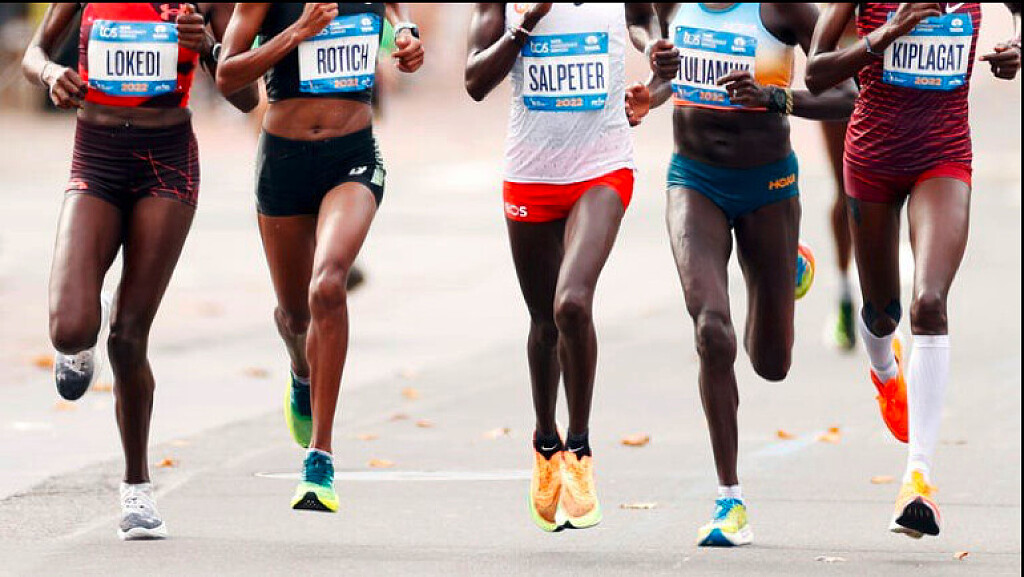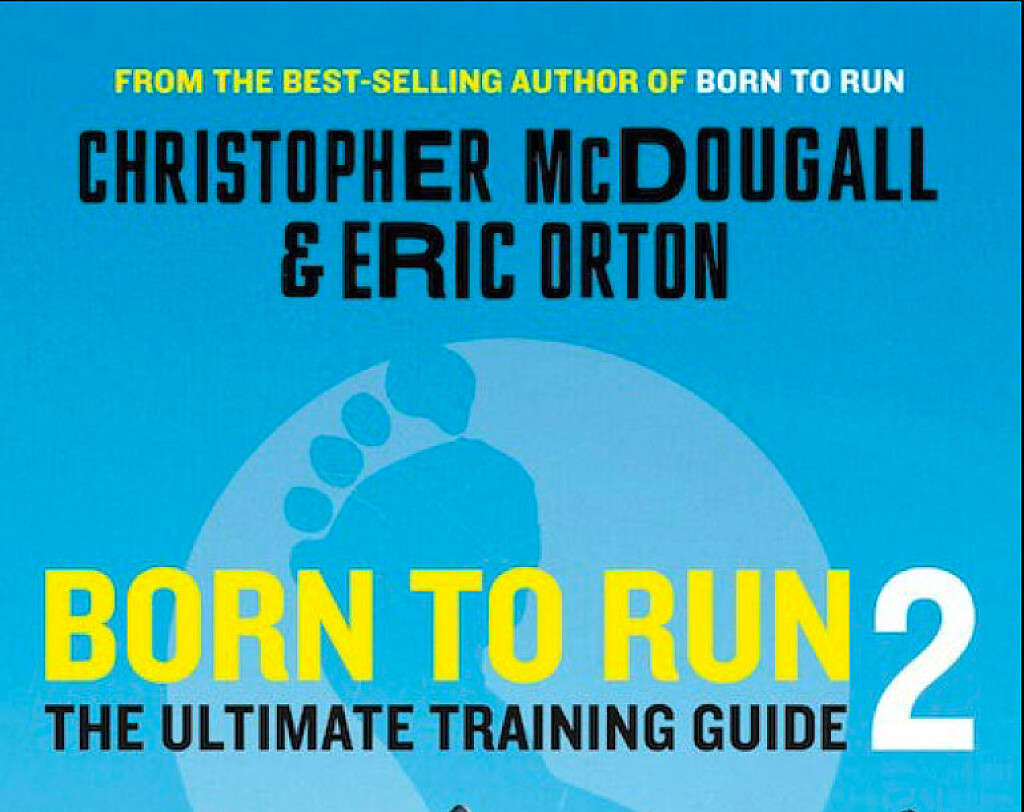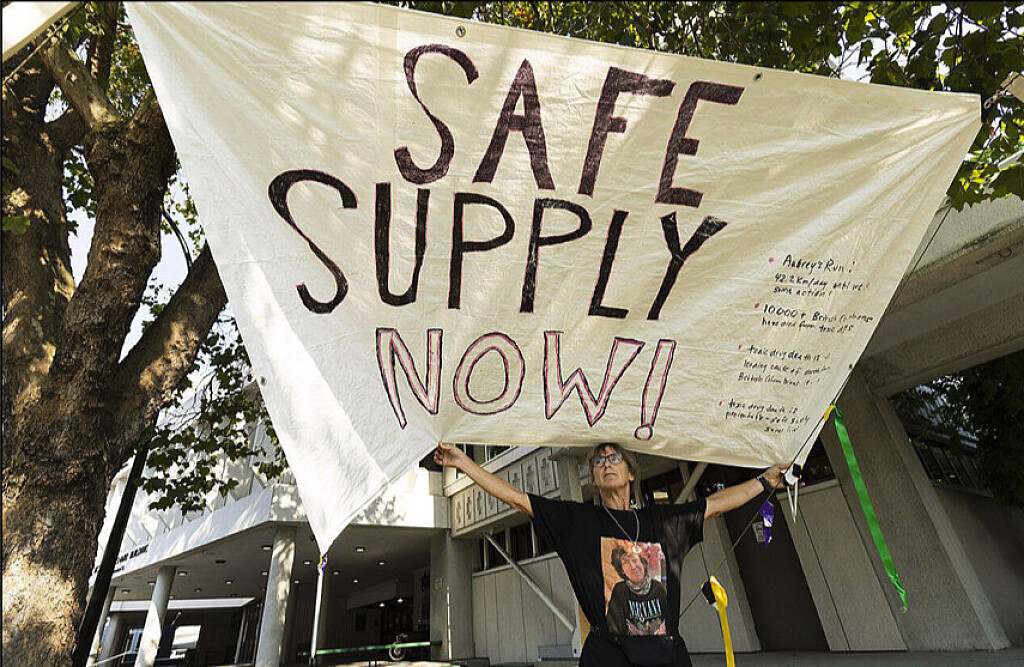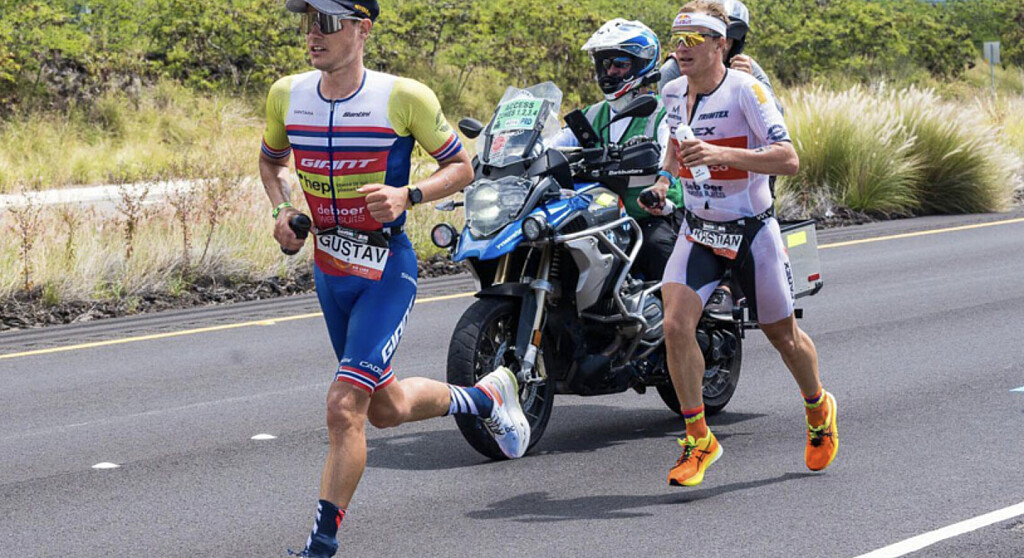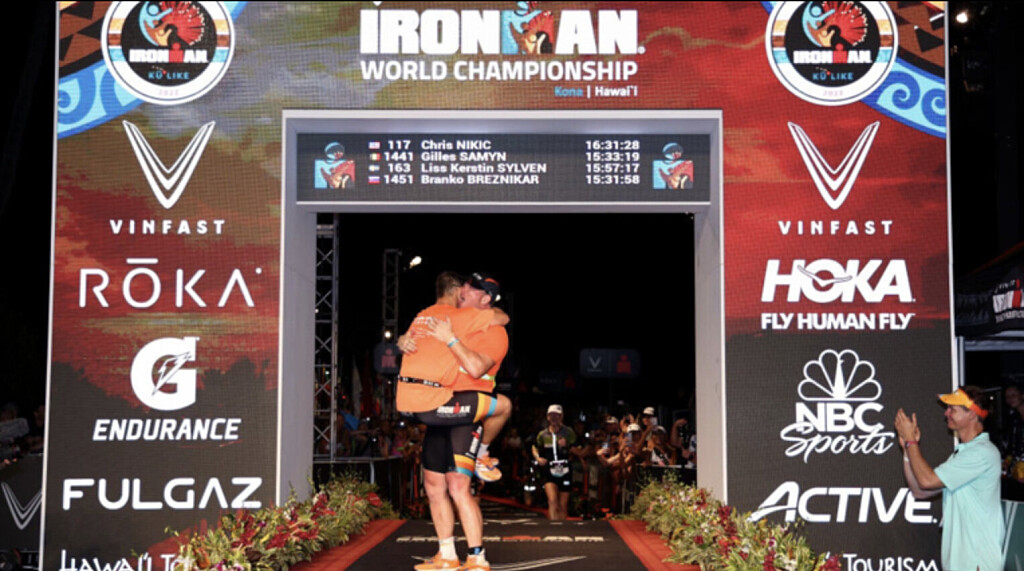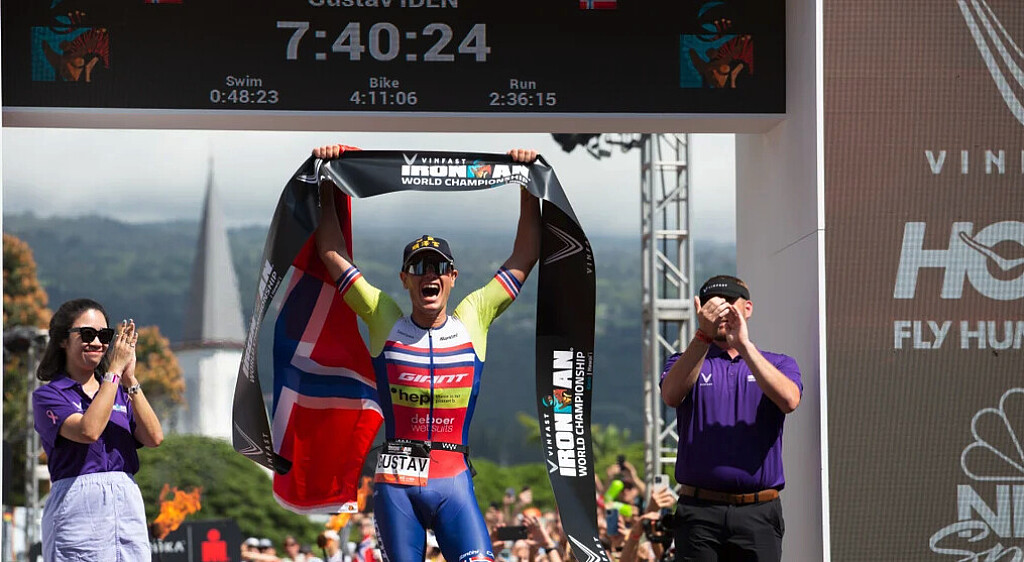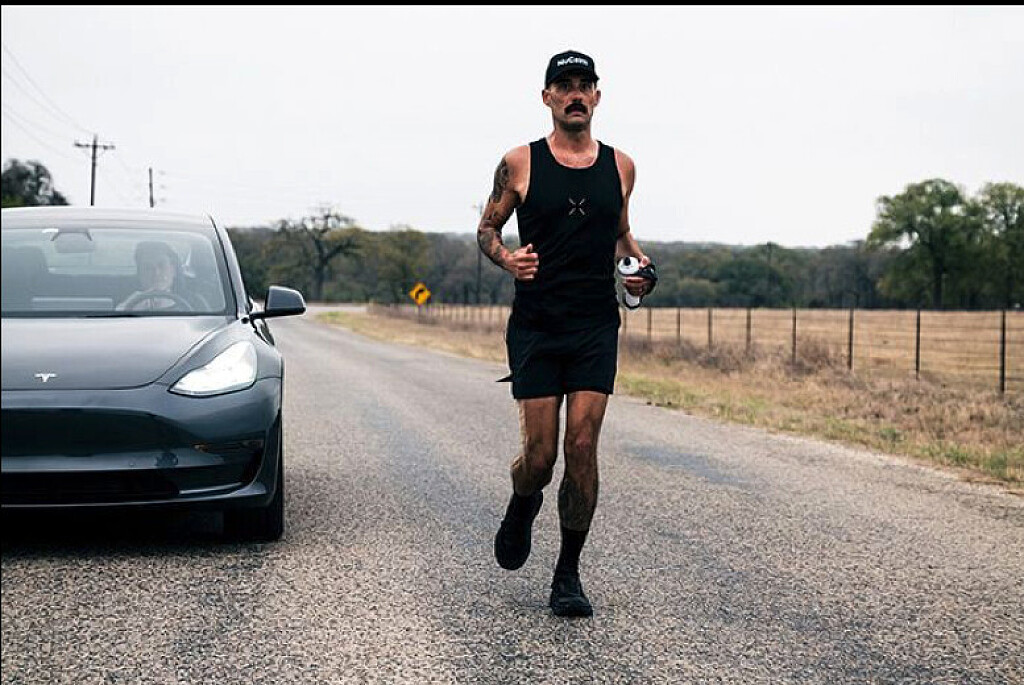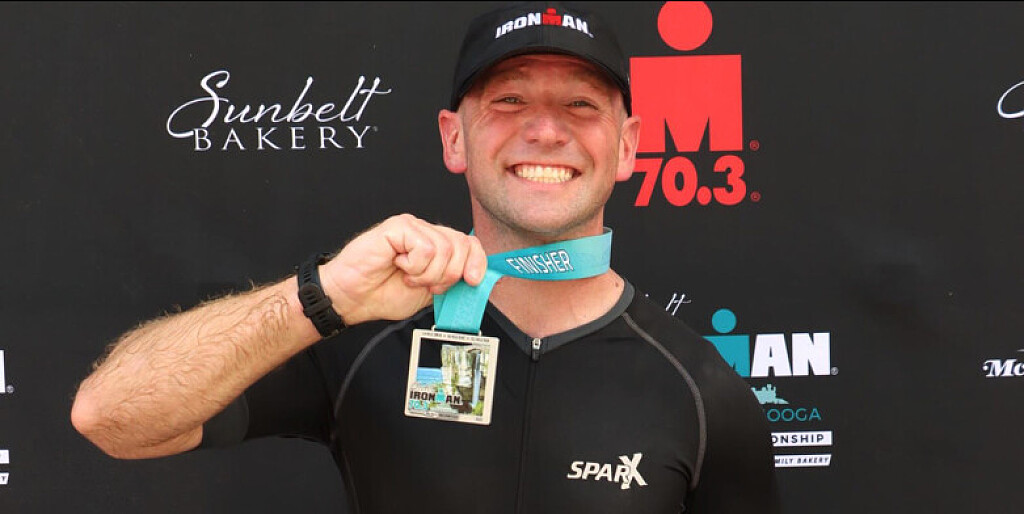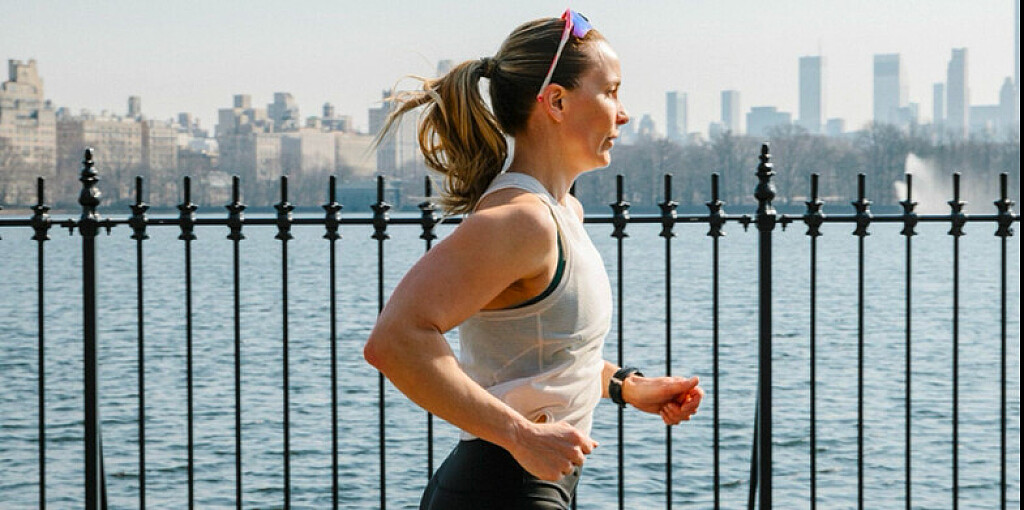Running News Daily
Running News Daily is edited by Bob Anderson. Send your news items to bob@mybestruns.com Advertising opportunities available. Train the Kenyan Way at KATA Kenya and Portugal owned and operated by Bob Anderson. Be sure to catch our movie A Long Run the movie KATA Running Camps and KATA Potato Farms - 31 now open in Kenya! https://kata.ke/
Index to Daily Posts · Sign Up For Updates · Run The World Feed
Articles tagged #Ironman
Today's Running News
Carlsbad 5000: Striving to Reclaim Its World-Class Status Amidst Challenges
The Carlsbad 5000, once celebrated as the “World’s Fastest 5K,” has experienced significant transformations over the past two decades, leading to concerns about its diminished prominence on the global stage. The men’s course record of 12:59, set by Kenya’s Sammy Kipketer in 2000, stands as a testament to the event’s former prestige. However, subsequent changes in ownership and reductions in prize money have impacted the race’s ability to attract elite international talent.
Ownership Transitions and Their Impact
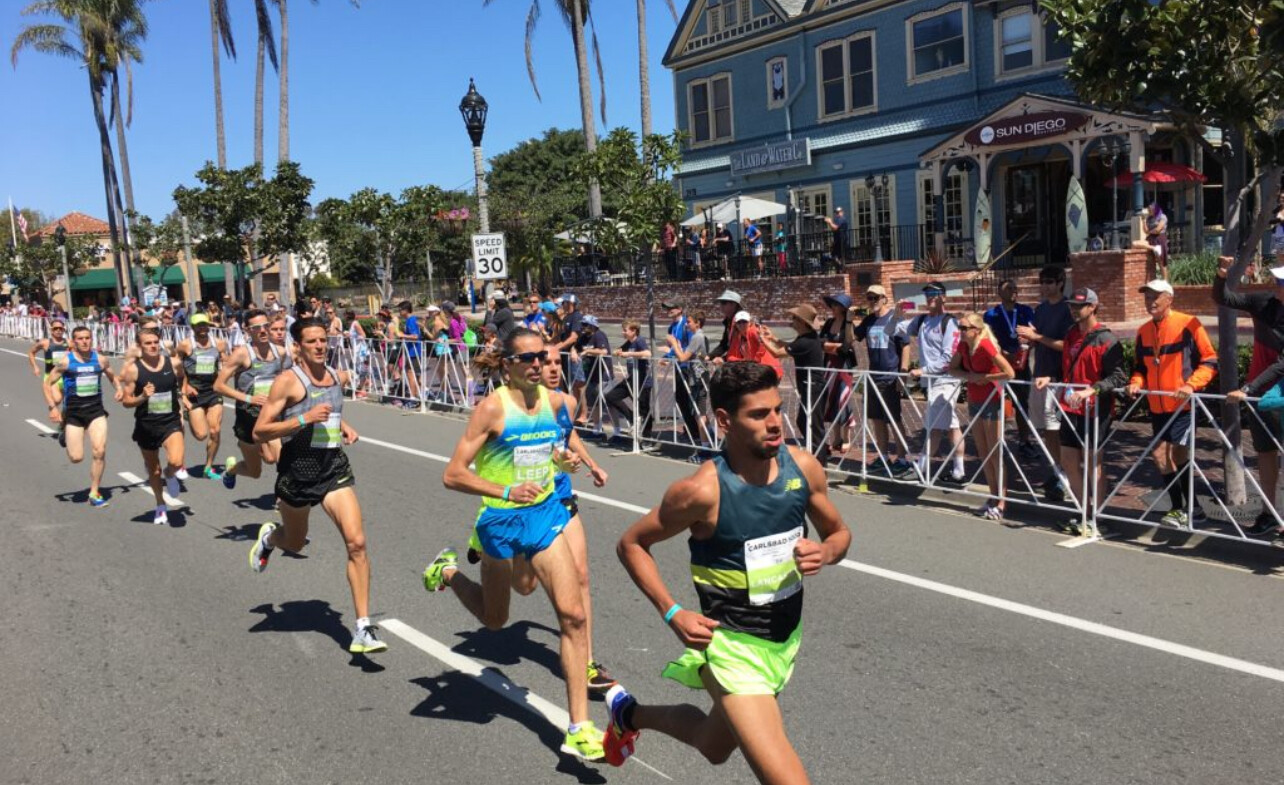
In June 2017, the Ironman Group, a subsidiary of China’s Wanda Sports Holdings, acquired the Carlsbad 5000. This transition led to shifts in race management and strategic direction, which some participants felt altered the event’s unique character. Concerns were raised about reduced prize money and a perceived decline in the overall participant experience. Recognizing these challenges, Groundwork Endurance, a San Diego-based company, acquired the Carlsbad 5000 in December 2018. The new ownership group includes U.S. Olympian Meb Keflezighi, who expressed enthusiasm for revitalizing the event and preserving its legacy. Keflezighi stated, “I am delighted to join the local ownership team in building upon the legacy of the Carlsbad 5000.”
Prize Money and Elite Participation
Historically, substantial prize purses attracted top-tier athletes to the Carlsbad 5000. For instance, in 2014, the event offered a guaranteed prize pool of $50,000, with $5,000 awarded to the overall champion. In contrast, the 2024 edition featured a total professional prize purse of $16,000, with $5,000 awarded to the first-place male and female finishers.
Additionally, amateur divisions offered a combined purse of $2,400, with $300 for first-place finishers in both the 40+ and 39-and-under categories. While these amounts demonstrate a commitment to rewarding athletic excellence, they may not be sufficient to attract the caliber of elite competitors necessary to restore the event’s world-class status.
Race Categories and Start Times
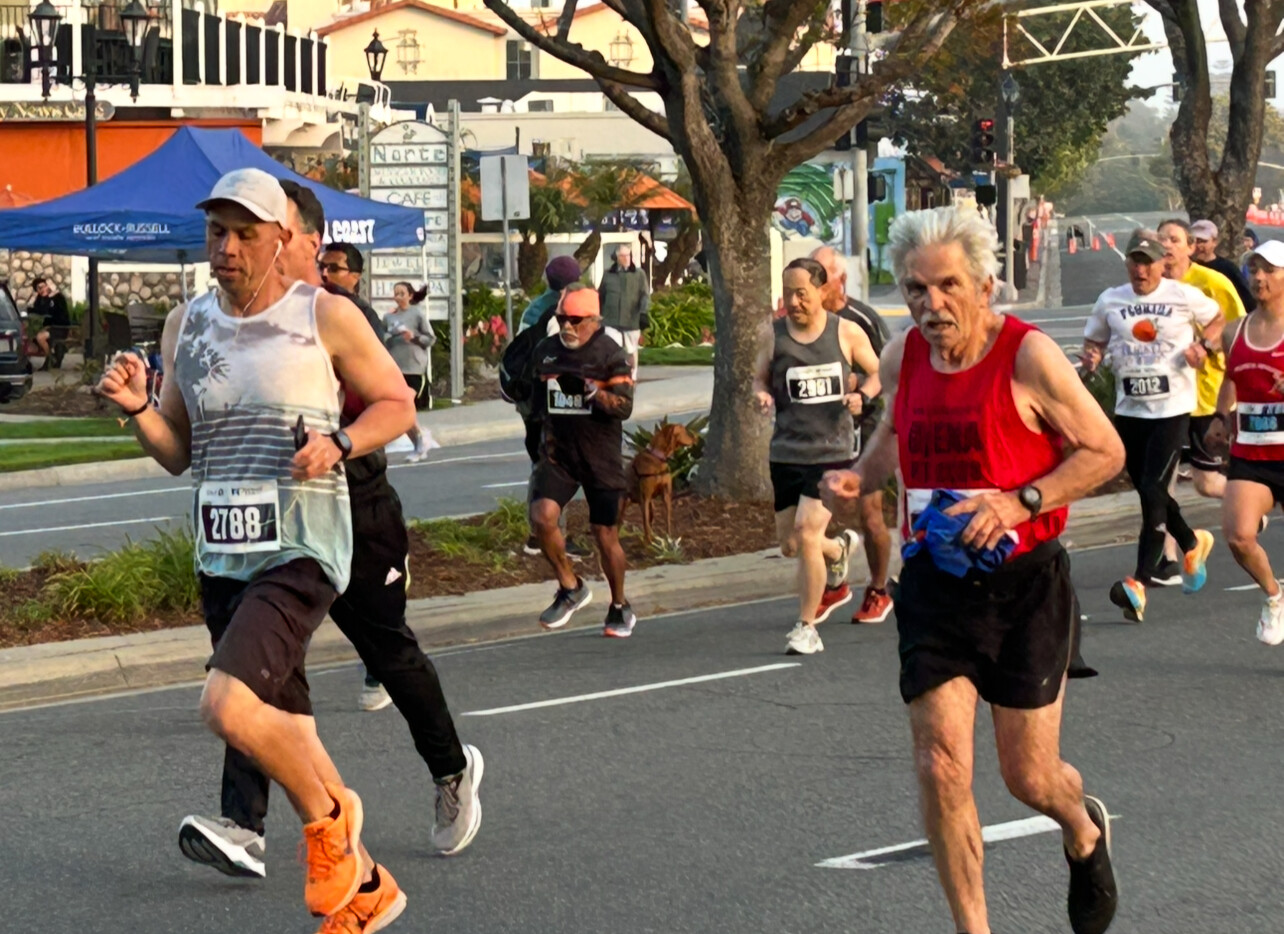
Traditionally, the Carlsbad 5000 features individual 5K races segmented by age and gender, each with its own start time. The categories include:
• Masters Men (Ages 40 & Above): This division caters to male runners aged 40 and over, providing a competitive environment among seasoned athletes.
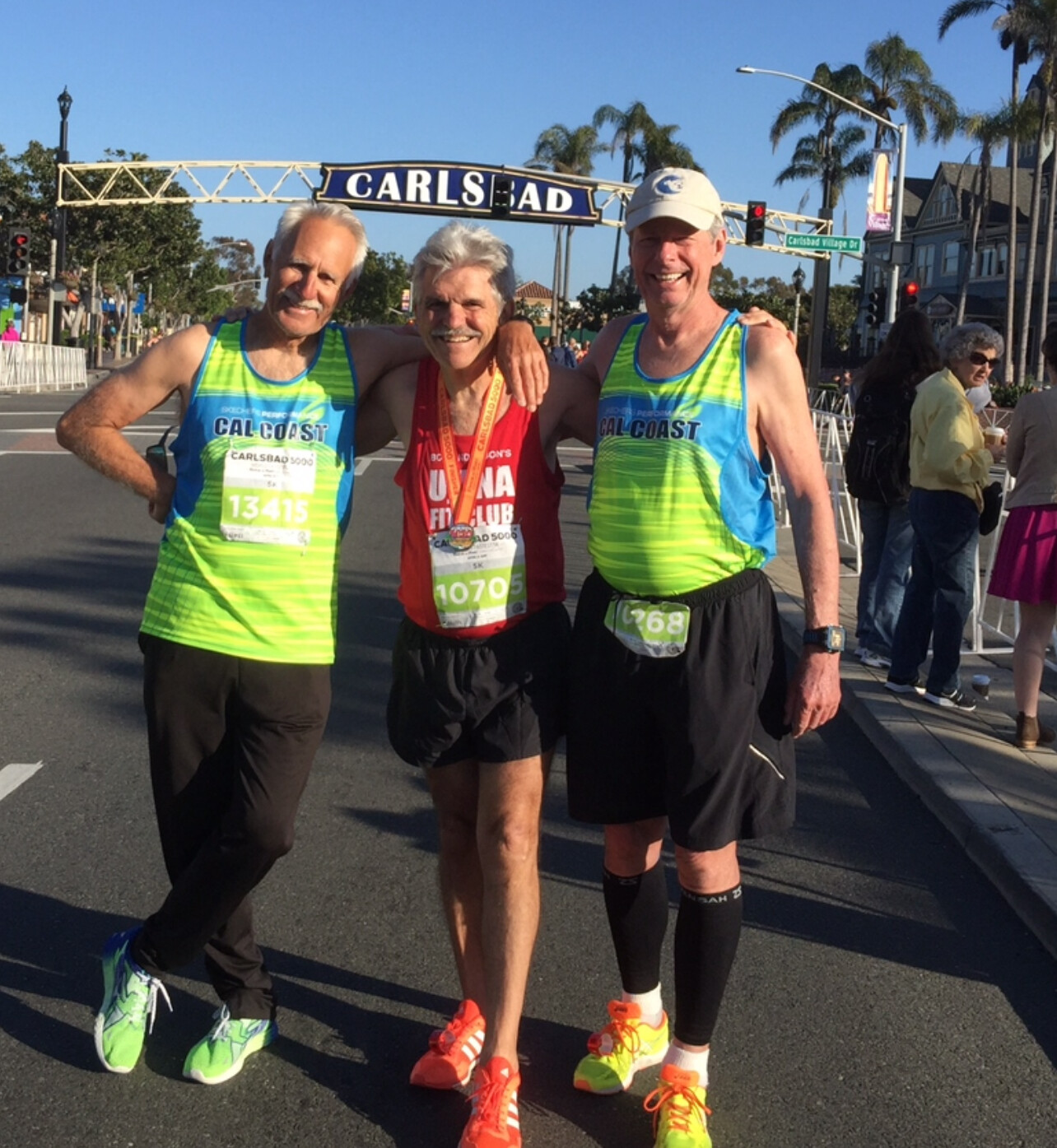
• Masters Women (Ages 40 & Above): Female runners aged 40 and above compete in this category, fostering a supportive atmosphere for experienced female athletes.
• Open Men (Ages 39 & Under): Younger male participants, up to age 39, race in this division, promoting competition among emerging runners.
• Open Women (Ages 39 & Under): This category is designed for female runners aged 39 and under, encouraging participation among younger women.
• People’s Race (All Ages & Abilities): A non-competitive race open to all genders and ages, welcoming joggers, walkers, and those seeking a more relaxed race experience.
"I ran the the Carlsbad 5000 for 25 straight years," says MBR editor Bob Anderson, "mostly because it had a master only race. I clocked 17:09 there when I was 49. It was such an exciting event." (Photos three and four)
This segmentation allows runners to compete alongside peers in similar life stages, enhancing the race’s appeal to a broad demographic.
Path Forward
To reclaim its position as a premier international road race, the Carlsbad 5000 may need to consider increasing its prize offerings to attract elite talent. Balancing financial incentives with the event’s rich history and community engagement will be crucial in revitalizing the race and restoring its reputation as the “World’s Fastest 5K.”
by Boris Baron with Bob Anderson
Login to leave a comment
Carlsbad 5000
The Carlsbad 5000 features a fast and fun seaside course where 16 world records have been set. Both rookie runners and serious speedsters alike enjoy running or walking in Carlsbad. Weekend festivities kick off Saturday morning with the beloved Junior Carlsbad, a kids-only event in the heart of Carlsbad Village featuring fun runs, toddler trots, and diaper dashes! On Sunday,...
more...What’s Your Why? Our Readers Share Their Biggest Motivators for Getting Out There to Run
We asked runners what motivates them to get out and hit the road—their answers may inspire you.
Why do you run? If you’ve never thought about it before, ask yourself now.


Being intentional about the reason why you run is a crucial part of maintaining motivation, especially if you’re just starting your running journey. Most of us know the research-backed benefits of running, but what is going to be that thing that gets you out the door when you don’t even feel like moving?
While your reason should be unique and personal to you, here’s some inspiration from our dedicated Runner’s World+ members and social audiences on Instagram and Facebook to keep in mind when considering what your why is.
For Myself
“Running is my ‘me time.’ It is time for me to simply run, listen to music, and enjoy the outdoors. It allows me to begin each day with a sense of accomplishment, and along the way I plan my to-do list, calculate finances, and solve problems. I do my best thinking when I am running. It also keeps me focused on my health and I always have at least one half marathon or marathon to train for.”—Jill Pompi (RW+ member)
“Because it’s the only thing in my life that’s just mine.”—April Thomson
“As a mom of three littles, running is my ‘me time.’ Time to fill my own cup; time to work toward a personal goal; time to show my kids that I enjoy movement simply because it helps me be happy, healthy, and strong!”—Marlena Shaw (RW+ member)
“It’s my time—no one asking me for anything. It’s me vs. me. Love the feeling after a long run.”—Spullins JB
“Running is just for me, and I run so I can be my best self. I don’t mean physically. Sure, I love how strong my legs feel when I cross a finish line or that good burn after a long run. But my best self is found when I hit the pavement and process whatever is going on in my life. I have two young kids (ages 3 and 14 months), and I am constantly being poked, pulled, and called. When I lace up my running shoes, the stress melts away and I am a better mother because of it.”—Melissa Hofstrand (RW+ member)
“To escape from reality for a brief moment and enjoy my ME time.”—Yuri Aguilar
“Sometimes to relax, regroup, and shake out anything bothering me… but usually to start my day off just right!”—Erin Carey Ryan
For My Health
“My health, specifically my heart.”—Kati Johnson (RW+ member)
“To maintain my health and challenge myself to reach new running goals.”—Gwen Jacobson (RW+ member)
“To fight bad genetics and hear my grandkids say, ‘Whoa, Grandma!’”—Michele (RW+ member)
“My asthma kept me from doing exercise for so many years. I’m running because I can finally do something I never thought possible.”—Patricia McHugh (RW+ member)
“To save my life. I am type 2 diabetic by way of having PCOS. By the time I was diagnosed with PCOS, I had developed full-blown diabetes. I run now to train for a half marathon I crazily signed up for and to get in shape for my first century ride next year. I will run and bike towards a cure.”—Stephanie Gold (RW+ member)
“I exercise and stay active so that I can be mobile and independent as long as possible as I get older. I choose running because it gives me such a great sense of accomplishment.”—Lisa Bartlett
“I run because last year I got Pulmonary embolisms in my lungs and now I want to improve my health and my lungs and spread awareness!”—Jennifer Cole
“Manage stress and support in quitting smoking.”—Aude Carlson (RW+ member)
“Keeps my AFib under control.”—Todd W. Peterson
“I want to be able to walk well into my old age. I have family members who have significantly lost mobility due to their unwillingness to exercise.”—Amy Watkins (RW+ member)
“To control my type 2 diabetes! It works!”—Mike Shamus
For Someone Else
“I started running after witnessing my mom complete a marathon and was overcome with emotion when she finished. I began running the very next year and completed a half marathon with my mom and have been running ever since. Running does so many things for me. It’s my escape, it keeps me centered, helps me to focus, a confidence builder but more importantly allows me to follow in the footsteps of my mom and continue to honor her. I wear a shirt with a picture of her running our last race together so that she’s running with me. I love to run!”—Chantal (RW+ member)
“My daughter.”—Jesse Sturnfield (RW+ member)
“To keep my sanity. Also, I wanna show my kids if they work hard, don’t give up, and find a love for something, they can accomplish anything in life. When they’re tired, stressed, unhappy, just to channel in and get the work done. They’ve been there when I run my marathons and have shown support and encouragement, and I’ll do the same for them. My daughter joined cross country this year and wants to join again next year. My son is wanting to join as well.”—Angela Yawea
“Because my dad ran. I lost him six years ago and clearing his flat I found his medal from Reading Half Marathon in 1988. Holding it inspired me to change. I have my dad’s and my medal from the same race together.”—Stumpy Taylor
For My Mental Health
“To keep my sanity!”—Libby Meyer (RW+ member)
“It’s my therapy.”—Allie Haight
“Running is my ultimate stressbuster! As a middle-aged tech leader, husband, and father to two preteens, running generates all the right endorphins and energy to ensure I’m on top of my game—all of my games!”—Annu Kristipati (RW+ member)
“Cheaper than therapy.”—Louie J. Frucci
“Running helps me dealing with my anxiety, my mental health, but especially this past year with grief. I lost my dad last year and couldn’t work out for two months. I was able to go back to working out thanks to running. Then I signed up for my first marathon. That was on the one-year anniversary of my dad’s passing. Running is my way to feel my dad close and be able to connect with him.”—Fadela (RW+ member)
“Because it has the power to mute my anxiety and self-doubt.”—Nicholas Kuiper
“Running makes me happy. It reduces my stress and anxiety and improves my mental health. It keeps my cardiovascular system strong.”—Suzanne Reisman (RW+ member)
“To stay calm in the chaos.”—Christine Starkweather
To Feel Powerful & Free
“Because it makes me feel powerful and healthy (sometimes only once it’s over).”—Laura (RW+ member)
“To be a real-life video game character.”—Erin Fan (RW+ member)
“Feels like I’m flying. Powerful and free.”—Tenaya Hergert
“I run because I want to be healthier in my 50s than I was in my 30s! And, also, running makes me feel powerful.”—Laura (RW+ member)
“Running gives me a voice.”—Becky Westcott Capazz
“It makes me feel strong and confident, that I can handle everything else in my day.”—Rebecca Eisenbacher (RW+ member)
“To feel free, manage anxiety, accomplish increasing mileage.”—Barbara Saunders (RW+ member)
“Total freedom. Slap your shoes on and be free.”—coach_shasonta
For Connection
“Running makes me feel strong and is my way of meditating. I also love that I’ve been able to connect with people and make so many new friends through running. I enjoy seeing my fitness progression.”—Gisele Carig (RW+ member)
“For my mental health and human connection with friends.”—lizpowers76
“Refreshes the spirit. BTW: I can no longer run; I train and enter races as a walker. Have made many new friends who accept me for just being there.”—Lewis Silverman
“I have many reasons. I connect with my running partners on some runs. I connect with God on others. I find a sense of accomplishment. I like to test what my body can tolerate.”—Tim Thomas (RW+ member)
“When I’m alone, I run to quiet my mind. It is meditative and rejuvenating. I also run to be social. The running community is the best.”—Andy Romanelli (RW+ member)
“Makes 77 feel young and hanging around with younger runners is a whole lot of fun. Not to mention I’ve been loving going for a run for more than 46 years.”—Barbara Ann Morrissey
Because I Love Racing
“I want to improve my 5K time.”—Courtney Danko-Searcy (RW+ member)
“The feeling I have on race day, within the first mile, that all the training is paying off.”—Mark Hopkins (RW+ member)
“My husband and I started running about six years when my son, who was about 12 at the time, had run over 25 5Ks. It took about a year until we were ready for our first 5K. We love running and training together. Running helps me at the end of a long teaching day, and it just feels so good after! We have since ran many 5Ks, some 10Ks, and two half marathons!”—Suzy Wintjen (RW+ member)
“It’s at the end of Ironman.”—Cheryl Turpin
“First, I began to improve my health, then I got hooked. Fifteen years later I am chasing my Six Star Medal.”—Jorge Mitey (RW+ member)
“It’s something I’ve always done since fifth grade. I got into racing 25 years ago. I love the challenge running gives me to constantly improve and get back out there whenever I’ve been injured or ill; and next month will one year since starting my first running streak! Most of all, I run because I love how it makes me feel. It has gotten me through the worst times in my life. Whenever I’m having a bad day, whether I’ve already gone running or not, I go running. It always calms me and makes feel better.”—Elle Escochea Grunert
So That I Can Indulge
“Because I love carbo loading.” —Bud Bjanuar
“I run so I can eat whatever I want and still be in shape!”—Christi Webb (RW+ member)
“I run to eat poutine.”—Robin Bosse
“So I can drink beer!”—Kathy Davis Ward
“Because I am a chocoholic.”—Chantal Englebert
“Faster than walking and I like tacos.”—Shelly Pedergnana
“I run to eat crispy pata.”—Arrin Villareal
To Get Outside
“Fitness and peace of mind. Also, a great way to explore neighborhoods and the outdoors.”—Sue Padden
“The feel of being outside with my dog. Watching him enjoy the run lets me enjoy the run.”—Stan (RW+ member)
“It’s my time with nature. It’s for me to clear my head and think.”—Assa Burton
“Running is my sanctuary. It’s where I can clear my mind, letting go of stress and finding clarity with each step. The rhythm of my feet hitting the ground is a meditative escape, helping me to focus and recharge. Physically, running keeps me in peak condition, building strength and endurance while boosting my overall health. But what I love most is being outside, feeling the fresh air, and soaking in the beauty of nature. Whether it’s a sunlit trail or a quiet street at dawn, running connects me to the world around me in a way nothing else can.”—Adam Scolatti (RW+ member)
Because I Can
“This is my ‘stock’ answer. I do because I can and I can because I do.”—Chip Kidd
“Because I’m not ready to give up yet.”—Martha Rhine (RW+ member)
“Because I was completely disabled, not able to move, stand, walk, talk, or do anything... stuck in the hospital for 13 weeks. When I was discharged and started to walk a little, I needed something to help me get some kind of life back. Running was it.”—Rob Snavely
“Because I’m 70, and not dead yet.”—Michele Glover
“Because I can. One day I won’t be able to and it’s not today.”—Mike Bravo
“Because one day I’ll be old and everything will hurt, and it’s the one thing in my life that lately makes me happy. When you’re running you forget everything. If you’re still thinking of debt, sadness, breakups, you’re not trying hard enough. Every day you have to push yourself.”—Miryam Hernandez
“Because I still can… at 73.”—Joanne Gile Michaelsen
“Forty-five years, why stop now? Never regret going for a run.”—Leslie Kitching
“Sixty-one years old. Been running since I was 15. Because a day without running is like a day without brushing your teeth.”—Sharon Graeber Hall
To Prove it to Myself or Someone Else
“To prove I can. And prove my mind is more powerful than my body.”—Colton James
“Because I still can, and everyone tells me I can’t!”—Lloyd K Leverett
“To tell people I did.”—Chris S. Charlett
“I’m 55. Basketball days are over. The need to compete is still there, and even if that means competing with myself, running allows me to do that.”—Shawn Davis
Because I Hate How I Feel When I Don’t
“I don’t know, but recently I injured my knee, and I was sad I couldn’t run. Thank god, it healed itself. I think running gives me inner peace.”—Jose Murga
“Because I hate the way my brain itches when I don’t.”—Joe Baron
“Because it’s better than smacking my family upside the head from being over stimulated. [It] helps my mental health.”—heatherbrubaker19
“I don’t like it until it’s over.”—Laurie Stinson Fuller
“So that I am tolerable to my husband!”—Dimitra Zakas
“It’s either that or sending my work computer flying out the window like a frisbee on the regular.”—Ayla Amon
“It feels so good when I stop.”—Sarah Wiley
Login to leave a comment
IRONMAN Kona 2024 World Championship head to head: Sam Laidlow vs Magnus Ditlev
The defending men’s IRONMAN World Champion versus a two-time fastest long distance record holder. Sam Laidlow and Magnus Ditlev are two of the strongest contenders set to take to the start line at the 2024 IRONMAN World Championship in Kona this weekend. Laidlow is looking to make it back-to-back World Championship titles. And Ditlev looks fired up with a score to settle after, in his words, Laidlow “dusted my ass the last two editions of this race.”
Kona is the stage for an epic showdown as the pair lock horns over the full distance for the first time since Nice 2023 but who could come out top trumps if it all comes down to a head to head in Kona? TRI247’s Jenny Lucas-Hill looks at how the pair stack up. Are we in for a battle of the ages?
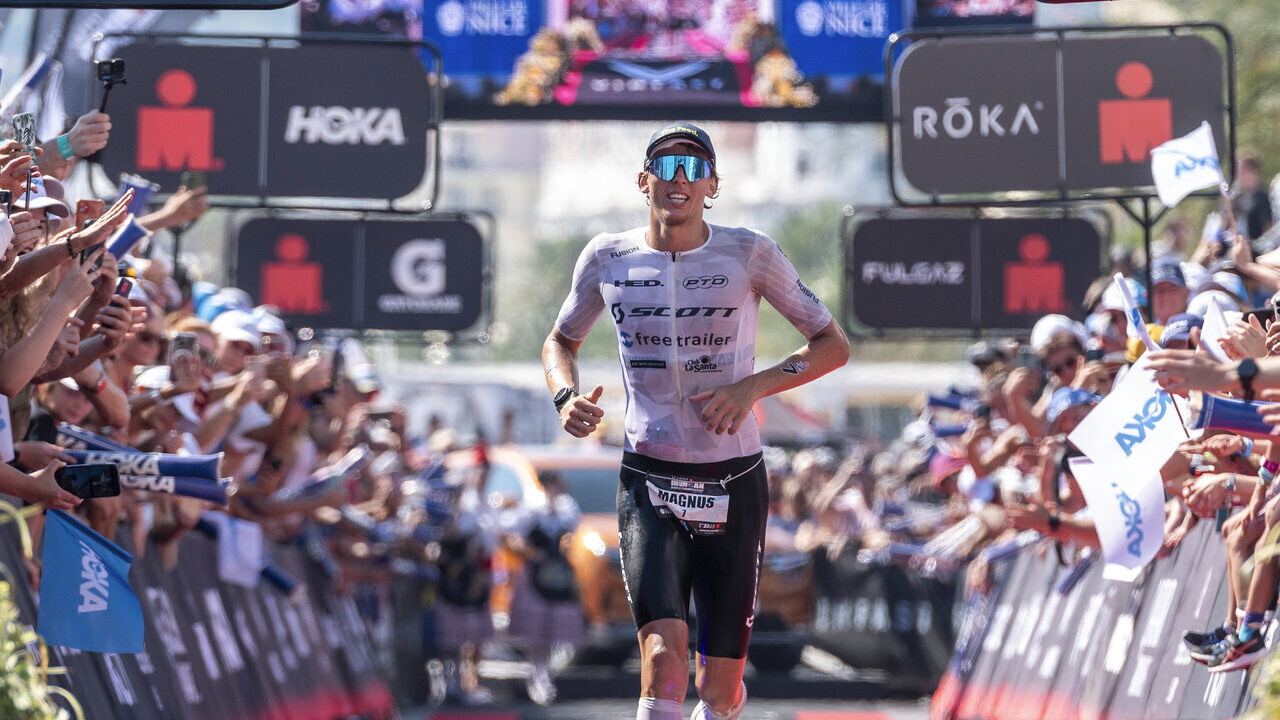
Sam Laidlow vs Magnus Ditlev – who’s most likely to take the crown in Kona?
Laidlow and Ditlev will surely feature top of many people’s podium picks for the IRONMAN World Championship in Kona. Laidlow coming in with a title to defend. And Challenge Roth record-setter Ditlev arriving at the start line with a title to try and grasp. We’ve only seen Sam Laidlow and Magnus Ditlev at the same race twice this year – and the score is 1-1. Ditlev finished 1st to Laidlow’s 9th at Miami T100. And Sam took the win at London T100, with Magnus trailing in 4th.
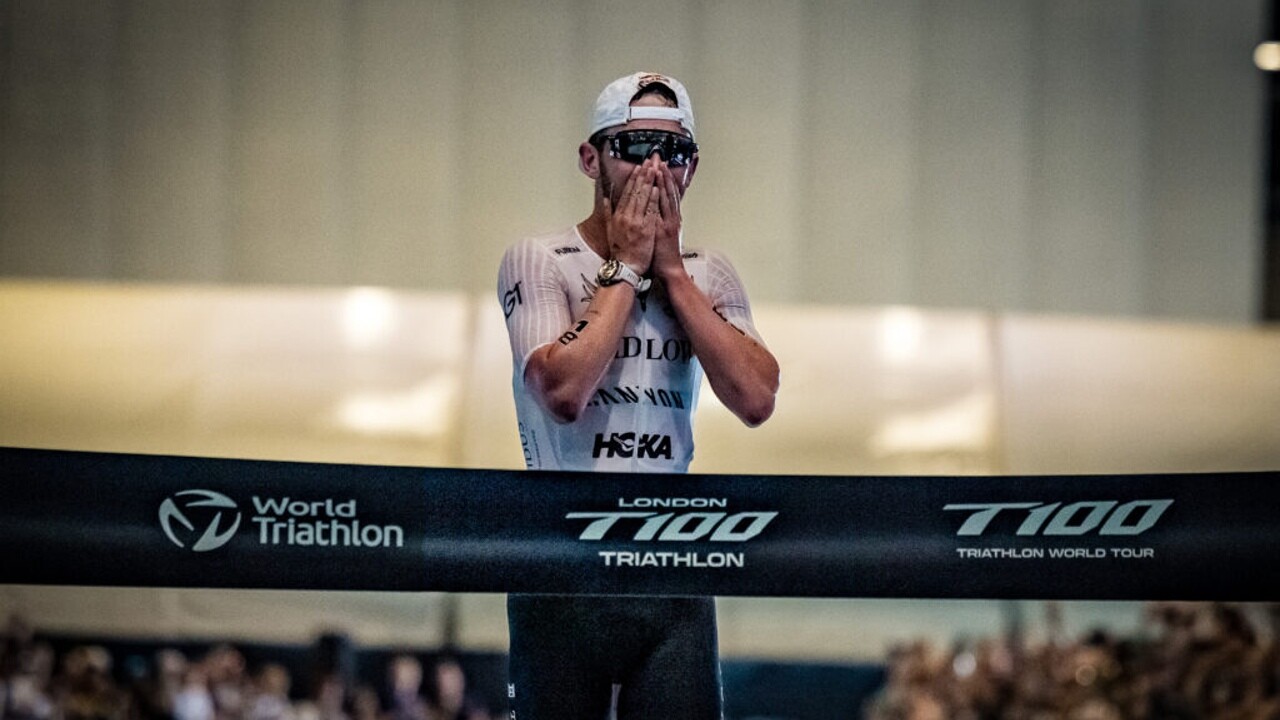
So as we see the pair go head to head over the full Iron distance for the first time since Nice 2023, which of these superstar athletes is most likely to leave the Big Island wearing the Kona victory crown?
Magnus Ditlev 2024 performances and form
The 2024 race season got off to a strong start for Magnus Ditlev, who placed third at last year’s men’s IRONMAN World Championship in Nice. An early-season race at Miami T100 in March saw him take a resounding win. On a day where the extreme heat and humidity saw other athletes dropping like flies – there were 6 DNFs – the Great Dane was able to stay strong and finish top of the podium ahead of a storming Sam Long.
But that dominant start to the season was then scuppered a little over a month later, as a bike crash just days before Singapore T100 resulted in a broken wrist which took Ditlev off the start list. We didn’t see him race again until June, where he finished 4th behind the sprinting trio of Marten Van Riel, Rico Bogen and Kyle Smith at San Francisco T100.
With a focus on that 100km distance, we didn’t see Ditlev on a full distance start line until July. Magnus returned to Challenge Roth, a race where he set a record-breaking time for the 140.6 mile distance in 2023. And any doubts over Ditlev’s form were soon extinguished, as he took the win – and broke his own record in the process. We’ve become accustomed to seeing Ditlev have to make up time on the bike after the swim. But what will be alarming for competitors is the strong swim he had in Roth – exiting the water just 51s back from the leaders. Wet conditions slowed him down a touch on the bike compared to 2023, but he still covered the 112 miles in under 4hrs. And that characteristically strong bike split was backed up by an incredible run – completing the marathon in 2hrs 34 mins, to cross the finish line eight minutes ahead of the rest of the field. And while many might note the absence of uber-runner Patrick Lange, who surely would have been making his way up to somewhere near Ditlev’s shoulder on the run if he hadn’t been forced to pull out of the race after the swim. What’s noteworthy is that Ditlev also ran a full three minutes faster than his Roth 2023 run split. A Magnus Ditlev who can exit the water within striking distance, tear up the field on the bike, and hold strong on the run is a Magnus Ditlev to be scared of.
Ditlev has been consistently in the mix this season, with two wins backed up by two fourth place finishes. And don’t forget, with Kona being that much later this year, the Great Dane has had more time to recover from his Challenge Roth effort compared to 2023. We know from Miami T100, he’s an athlete who can keep his cool when the heat is on – in all senses of the phrase. That characteristically calm, controlled confidence sets him up in a good place for Kona.
Sam Laidlow – the reigning IRONMAN World Champion’s 2024 performances and form
We haven’t really seen where Sam Laidlow is at over the full distance yet this year. That DQ at IRONMAN Vitoria-Gasteiz meant he kept out of the race dynamics – getting to the finish line to validate his Kona slot.
Laidlow has also been a little hit and miss in the T100 series, with a 9th in Miami and a DNF in Singapore to start the season. Though his most recent win in London and 2nd place in Ibiza after going shoulder to shoulder with Marten Van Riel (despite the pair taking a wrong turn), suggest his form is shaping up just in time for Kona. And we learned in 2023 that an up-and-down season doesn’t mean you should count Laidlow out. Don’t forget that last year he took the win in Nice just a few weeks after his DNF at the PTO Asian Open.
We know that it’s typically harder to be the person on top returning to defend a title, versus being the person chasing. But what’s interesting about Sam Laidlow is that he’s proven his ability to shake off the doubters. Many dubbed his Kona 2022 podium finish as a one-hit wonder. And his hit-and-miss season in 2023 might have proven them right, were it not for a dominant victory at the IRONMAN World Championship in Nice. When it mattered, he pulled it out the bag.
He proved again that he can tune the doubters out at London T100. He came into the race far from being a favourite for the win. And set tongues wagging as he was the only athlete who chose to swim without a wetsuit – many mocking the choice as he exited the water significantly further back than we’re used to seeing. But his choice was soon vindicated as he put down a confidence-boosting performance to take the win.
Where many athletes would crumble under the scrutiny of doubters and the pressure of defending a title, Laidlow seems to thrive. In fact, speaking after that win in London Laidlow said: “Whatever happens next, it’s great. I’ve got a lot of years ahead of me and if I win Kona this year, great. If I don’t, doesn’t matter. Of course I want to win and I’m going to do everything for that. But yeah, I’ve got nothing to prove, I’ve proven myself over the T100 and I’ve proven myself over Ironman.”
That ‘nothing to prove’ attitude, while still acknowledging that there’s everything to win, could give him the edge when the Big Island of Kona turns the screws this Saturday.
Verdict
The World Championship race in Kona will be the first time this year we get to see Sam Laidlow and Magnus Ditlev go head to head over the full Iron distance since last year’s IMWC in Nice. On the twists and turns of the French climbs, we saw Magnus Ditlev almost bike his way up to the front of the race. But it wasn’t enough to reel in Laidlow.
Cast our minds back to Kona 2022, and a similar story played out. Ditlev made a phenomenal charge to the front of the race which left even the mighty Norwegian duo of Blummenfelt and Iden struggling to hold his wheel. But it wasn’t enough to shake Laidlow, who not only reclaimed the lead – but set a new bike course record in the process. Ditlev picked up a drafting penalty which took him out of contention. And a Kona win wasn’t meant to be for Laidlow, who was overtaken by Gustav Iden just three miles from the finish line.
All of that means Ditlev will want to make it third time lucky and finally get ahead of Laidlow for good on the World Championship stage. He said in a recent Instagram video that he’s been having ‘nightmares’ ever since Laidlow “completely dusted [his] ass the last two editions of this race.” And both athletes have unfinished business on the Big Island. As much as Laidlow says it doesn’t matter – there’s got to be a part of him that wants to follow in the footsteps of Jan Frodeno and Patrick Lange to make it two for two.
Of course, I have to take some poetic licence in this hypothetical head to head scenario here. The likes of Blummenfelt – who was blisteringly quick at IRONMAN Frankfurt and is said to be targeting the overall Kona course record. And Patrick Lange, a former Kona champion who’s got a score to settle with that sub-2:30 marathon goal, will in reality be shaking up the dynamics – and hopefully creating an epic multi-athlete battle charging towards the finish line.
But if it does come down to a head to head battle between Laidlow and Ditlev for the win in Kona this year… despite all the signs being there that Laidlow could have the edge, my money is on Magnus Ditlev. Cool-headed he might be, but he’s clearly got some white hot flames in his belly to get out there and beat Laidlow to the finish line. A fired up Magnus Ditlev is a force to be reckoned with. Go prove me right, Magnus!
by Jenny Lucas-Hill
Login to leave a comment
Ironman World Championship Triathlon Men
The inaugural KONA™ race was conceptualized in 1978 as a way to challenge athletes who had seen success at endurance swim, cycling, and running events. Honolulu-based Navy couple Judy and John Collins proposed combining the three toughest endurance races in Hawai’i—the 2.4-mile Waikiki Roughwater Swim, 112 miles of the Around-O’ahu Bike Race and the 26.2-mile Honolulu Marathon—into one event. ...
more...IRONMAN Kona 2024: Kristian Blummenfelt targets World Championship RECORD
There is one triathlon summit Kristian Blummenfelt has yet to scale, and this Saturday (October 26) in Hawaii he bids to end the wait.
Kona 2024 sees the professional men return to the Big Island for the first time in two years to fight out the 2024 IRONMAN World Championship, with a stellar field set to line up.
Blummenfelt, third behind compatriot Gustav Iden in 2022, will likely start the favourite to top the podium this time, with his friend and rival still rebuilding from a 2023 beset by injury and personal tragedy.
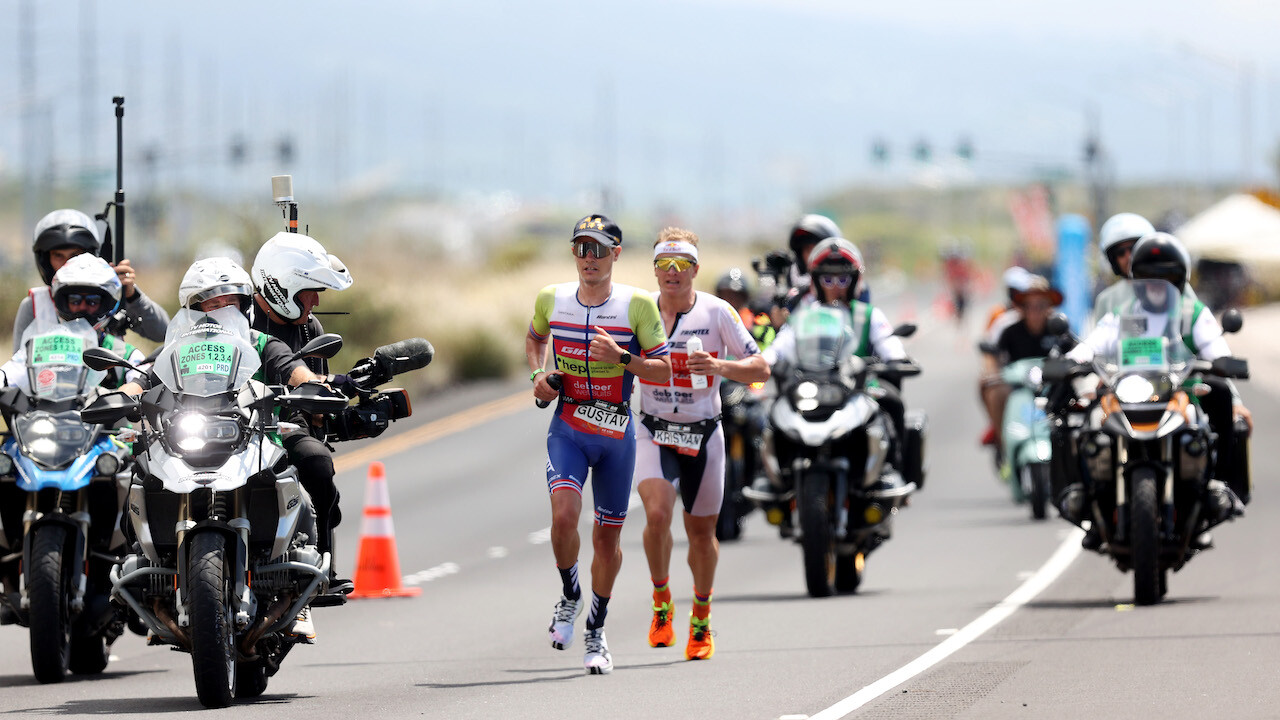
It will not be a cakewalk though (when is Kona ever a cakewalk), with defending champion Sam Laidlow, two-time king Patrick Lange and giant Dane Magnus Ditlev among those also set to toe the line.
Blummenfelt has already shown he is Ironman-ready for this test – remember how he aced Frankfurt less than two weeks after racing the Mixed Relay at the Paris 2024 Olympics? A blistering 7:27:21 – topped off by a 2:32:29 marathon – shocked many, including the man himself.
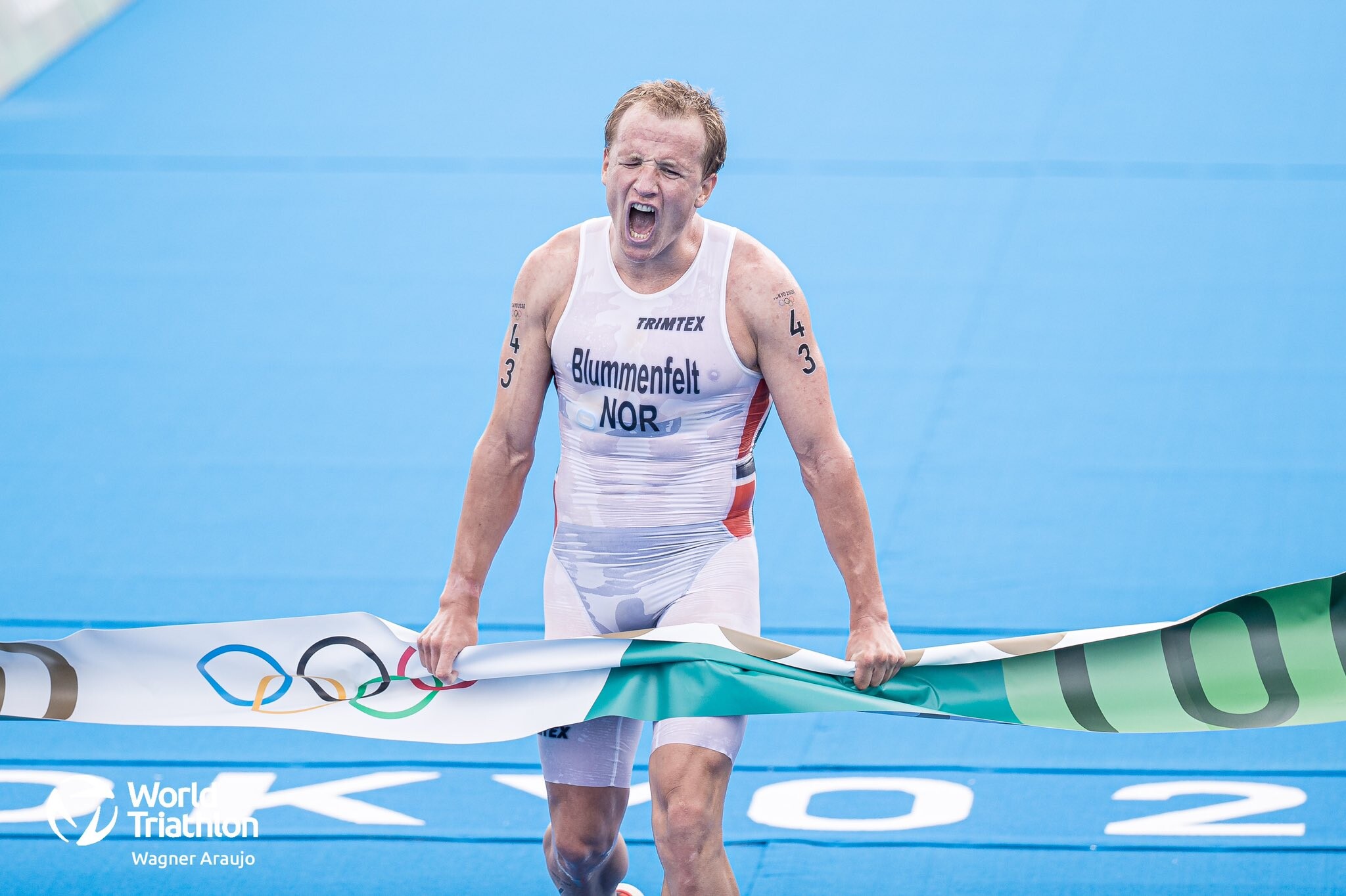
Blummenfelt Kona prep
Since then Blummenfelt and Iden have been preparing for Kona in the familiar surroundings of Flagstaff, Arizona. And according to Kristian’s coach Olav Aleksander Bu, things are going well.
The Norwegians are always brutally honest about where they are at heading into a race, and always fiercely ambitious with their goals. This time is clearly no different, Blummenfelt is aiming not just to win…
Bu told TRI247: “Prep has been good. It helps that it is a couple of weeks later this year. Race day will have to show what he is capable of ? The weather plays a big role, but a record is always a good target.”
The current Kona record remember was set just two short years ago, in the last Pro Men championship race on the Big Island. That was Iden with a spectacular 7:40:24.
Once Kona is in the rear view mirror, all attention will turn to what Blummenfelt does from 2025 on. That ambitious plan to move to pro cycling and the Tour de France appears to be dead, so he is once again all in on triathlon.
What next for Blummenfelt in 2025?
If L.A. 2028 is confirmed as a future goal, the big question will be how ‘Big Blu’ approaches the four-year cycle heading once more towards the greatest show on earth.
As Bu told TRI247 recently, 10 months of short-course preparation and racing heading into Paris 2024 was ‘mission impossible’, so it is likely the 30-year-old from Bergen would transition back down in distance much earlier next time round.
Bu explained: “We’ll have to come back to this later, but if LA becomes realistic, it means transitioning earlier with more short-course racing. However, with the development we have seen around the tactics, involving dedicated domestiques, it has become a less interesting sport from an individual level, and more a “team” sport.”
We also asked Bu who he fears among the opposition this coming Saturday, and his response as ever was illuminating. The focus is 100 percent on elite preparation and performance from his own athletes, and absolutely nothing else.
“I don’t know, as I really don’t pay attention to what others do. I obviously know some of the household names, which have been on the podium the last few years, but not how they are performing and who is on the start line.”
by Graham Shaw
Login to leave a comment
Ironman World Championship Triathlon Men
The inaugural KONA™ race was conceptualized in 1978 as a way to challenge athletes who had seen success at endurance swim, cycling, and running events. Honolulu-based Navy couple Judy and John Collins proposed combining the three toughest endurance races in Hawai’i—the 2.4-mile Waikiki Roughwater Swim, 112 miles of the Around-O’ahu Bike Race and the 26.2-mile Honolulu Marathon—into one event. ...
more...Why running ‘super shoes’ might not be so super for triathlons
Technology might be helping Patrick Lange's rivals more than it helps him, says triathlon legend Mark Allen.
Elite triathletes are running faster and faster every year – in no small part to the technology at their disposal – and that includes those much-hyped ‘super shoes’.
But ironically the ever-advancing plate-enhanced footwear on offer may be giving the sport’s fastest ever marathon runner more trouble than they are worth, according to six-time IRONMAN World Champion Mark Allen.
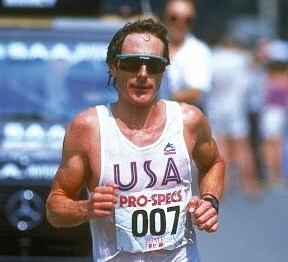
Germany’s Patrick Lange, two-time Kona champion himself, has made a career out of running down the opposition at the end of a brutal 140.6-mile race. Quite simply, nobody has ever been faster.
Twice Lange has come agonisingly close to running the sport’s first ever sub-2:30 marathon, clocking 2:30:27 at Challenge Roth in 2023 and 2:30:32 at IRONMAN Israel in 2022. Undoubtedly helped to an extent by ‘super shoes’.
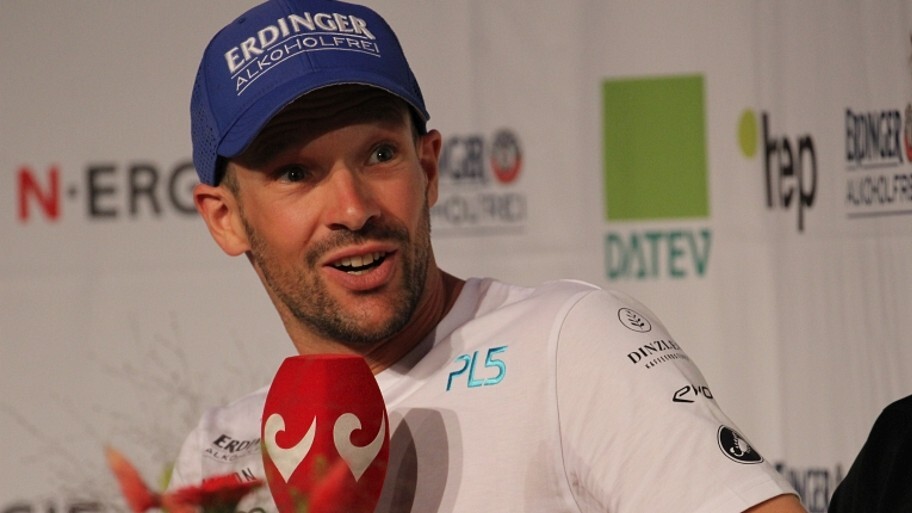
But Allen’s hunch is that those shoes are actually helping Lange’s rivals even more, allowing them to blunt his opportunity to run them down in the closing stages. He explained his rationale when speaking to TRI247 in the countdown to the upcoming 2024 IRONMAN World Championship in Kona.
Mark Allen on Lange
“The interesting thing in my opinion – I think the super shoes have helped some of the less talented runners more than the talented runners. It’s almost like when you throw on a wetsuit, that helps the less talented swimmer more than the talented swimmer.
“Just looking at some of the splits of guys compared to what they maybe had done in the past, it helped Patrick for sure I would say – some of the times he’s been running are phenomenal – but I think it’s helped guys who are maybe a little bit slower running, more than him. Which when it comes to first, second or third, makes it a little more difficult for a really good runner.
“So don’t count him out [in Kona], but also, unless the dynamic is just right and he can feed off the train of a pack, I think it will be hard for him to be top three.”
Despite Allen’s fears about how the race dynamic will impact Lange’s hopes of a third title in Hawaii on October 26, he does believe the German is in peak form coming into the race.
Patrick is peaking for Kona 2024
“A number of people, when I was in Nice for the IRONMAN World Championship, were saying they think he’s actually gonna have a really good race in Kona this year. The underground guys who are keeping track of him, who are there, seeing what he’s doing, knowing what he’s doing, knowing how he’s raced and all that.
“Even if he doesn’t have a win or a top three, I think he’s got that desire to go sub 2:30 on the marathon. So even if he doesn’t win, maybe we’re gonna see a sub 2:30 marathon, which would be kind of like one of those 27-year split times that stays on the record books for quite a while.”
by Graham Shaw
Login to leave a comment
Olympic Champions Are Wearing This $200 Cooling Headband. Does It Actually Boost Performance?
A new study tests the performance claims of Omius’ unique looking headband worn by Olympic legends Sifan Hassan and Eliud Kipchoge.
As the best men’s marathoners in the world prepared to race in Paris last month, Jake Leschly was waiting at the 3K mark, peeping over the shoulder of the spectator next to him, who was streaming the race broadcast on his phone. Leschly is the CEO of a small three-person company called Omius, which makes a bulky, futuristic-looking headband that purports to keep you cool—and he was about to get a pleasant surprise: “They introduce Kipchoge,” Leschly recalls, “and I’m like, ‘Son of a bitch, he’s wearing it!’”
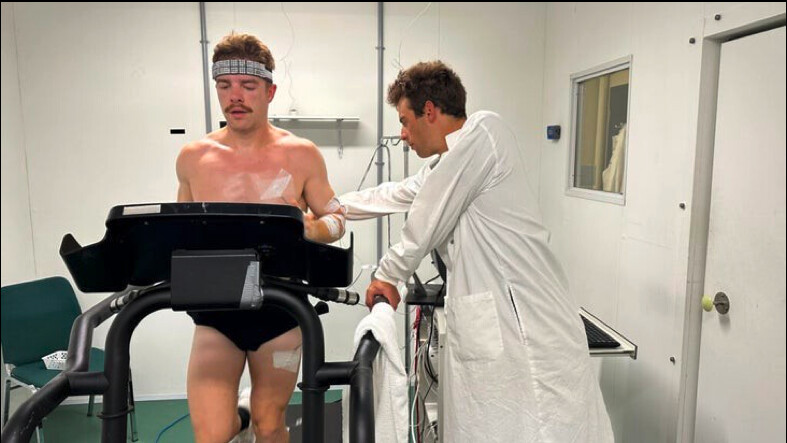
Omius’s headband first showed up in the triathlon world back in 2019. The fledgling company took a hiatus during the pandemic, but resumed sales in 2022. Triathletes have been enthusiastic: according to Leschly, 43 of the 53 pros at last year’s Women’s Ironman World Championship in Kona wore it, along with a third of the 2,000 age-group competitors.

But the headband’s conspicuous presence at this summer’s Olympic marathons—along with Kipchoge, other notables wearing it included Sifan Hassan and Hellen Obiri, the gold and bronze medalists in the women’s race, and Bashir Abdi, the silver medalist in the men’s race—brought it to a new audience. In the
The one simple trick that Omius relies on is to increase the surface area available for evaporation. The headband contains 20 cooling units, each of which consists of nine mini-towers of porous and heat-conducting graphite. Overall, this increases the surface area of the relevant patch of your forehead by a factor of five. The cooling units can be swapped in and out; Omius also makes visors and caps, and is developing other garments.
As long as you keep the headband damp and have airflow passing across it, water will evaporate from this large surface area, drawing heat away from your forehead and creating a cooling effect. Sweat can help moisten the cooling units, but in most situations you’ll need to periodically splash or spray them with water. You’ll generate enough airflow simply by running outdoors, but to use the headband indoors on a treadmill or stationary bike, you’ll need a fan. Leschly advises against cycling outdoors with it, because the cooling units don’t have appropriate impact properties.
The one simple trick that Omius relies on is to increase the surface area available for evaporation. The headband contains 20 cooling units, each of which consists of nine mini-towers of porous and heat-conducting graphite. Overall, this increases the surface area of the relevant patch of your forehead by a factor of five. The cooling units can be swapped in and out; Omius also makes visors and caps, and is developing other garments.
As long as you keep the headband damp and have airflow passing across it, water will evaporate from this large surface area, drawing heat away from your forehead and creating a cooling effect. Sweat can help moisten the cooling units, but in most situations you’ll need to periodically splash or spray them with water. You’ll generate enough airflow simply by running outdoors, but to use the headband indoors on a treadmill or stationary bike, you’ll need a fan. Leschly advises against cycling outdoors with it, because the cooling units don’t have appropriate impact properties.
You might think that the goal of sucking all this heat from your forehead is to cool your whole body down. That’s been the claim for some previous cooling devices, like palm-coolers that purported to lower your core temperature. But Omius isn’t going down that road. “It obviously does not change your core temperature,” Leschly says. “Nothing changes your core temperature.” Instead, he says, it’s a local effect that makes you feel cooler, enabling you to go faster. That’s not a crazy claim: one study, for example, found that applying a tiny amount of heat through a heat pad caused cyclists to slow down even though their core temperature didn’t change. But it makes Omius’s claims much harder to test.
Desroches’s study involved ten volunteers who completed a running test twice: once with the real headband and once with the sham headband. The test involved 70 minutes of running in a heat chamber set to 95 degrees Fahrenheit with 56 percent humidity at a predetermined moderate pace, followed by an all-out 5K time trial. The researchers measured all sorts of physiological data, including core temperature with a rectal thermometer, skin temperature with four different probes, and forehead temperature
It’s probably worth mentioning that the basic headband with cooling pieces currently costs $204. That’s considerably more than other cooling options like, say, pouring water on your head. As it happens, there’s another new study, just published in the International Journal of Sports Physiology and Performance by a team led by Samuel Chalmers of the University of South Australia, that explores the benefits of pouring water on yourself during hot runs.
While the details differ, the two studies are remarkably similar. In this case, 13 runners did a 10K time trial followed an hour later by a 60-minute moderate run, in a room set at 87 degrees Fahrenheit and 47 percent humidity. They completed this protocol twice; in one of the sessions, they poured two cups of water over their head, face, and arms every 2.5K or ten minutes. As with the headband, water dousing made them feel cooler and lowered their skin temperature, but didn’t change their core temperature. There is one key difference compared to the headband, though: they ran 1.0 percent faster in the water dousing time trial, which was a statistically significant benefit.
Because of the differences in protocol—the lack of a placebo trial
by Outside online
Login to leave a comment
How to Prepare For Your First Running Event
Are you signed up for your first running race this year? If so, you might be wondering what to do next. Many of us register for a 10k or half marathon in the hopes that doing so will simply motivate (or pressure) us to get to the finish line, and sometimes, it does. But let’s face it, Forrest Gump was just a movie. In real life, without proper preparation, you could wind up injured, unable to finish, or not even make it to the starting blocks, all of which would be really disappointing, to say the least.
Preparing for your first race requires careful planning, from training and getting the right kit to goal-setting and pre-race fuelling. Proper preparation ensures you’re physically ready for the race, have the energy to keep going and can overcome race day nerves, all of which will mean you have a more enjoyable race, and are likely to make it the first of many.
1. Set a goal
Once you’ve chosen a race and signed up, it can be smart to set an achievable goal. This can give you something to focus on during both your training and your race, and that can help you stay motivated, while achieving your goal can also give you a greater sense of satisfaction (for this reason, it’s a good idea to set a secondary goal in case you don’t make your primary goal.
Your goal could be something ambitious, like running a sub three-hour marathon, but it can easily be as simple as just finishing the race. When I did my first triathlon in 2012, I simply wanted to finish and I wanted to do so without walking during any of the running section. I didn’t finish anywhere near the podium, but I managed to achieve my goals and I was really happy with myself.

2. Make a training plan
For injury prevention, it’s obviously vital to make a smart training plan, and to leave yourself enough time before race day to actually execute it. There is no one way to train, and your plan will depend on where you’re starting and where you want to get to, but just as a rough idea, in our first marathon training plan we recommend 12 weeks for seasoned runners, but a full year for novices.
The most important aspect of training to remember is to build up gradually to give your body time to adapt to each increase in load, make ample room for rest and recovery and if possible, work with a coach and train in conditions similar to those you’ll be racing in.
3. Gear up
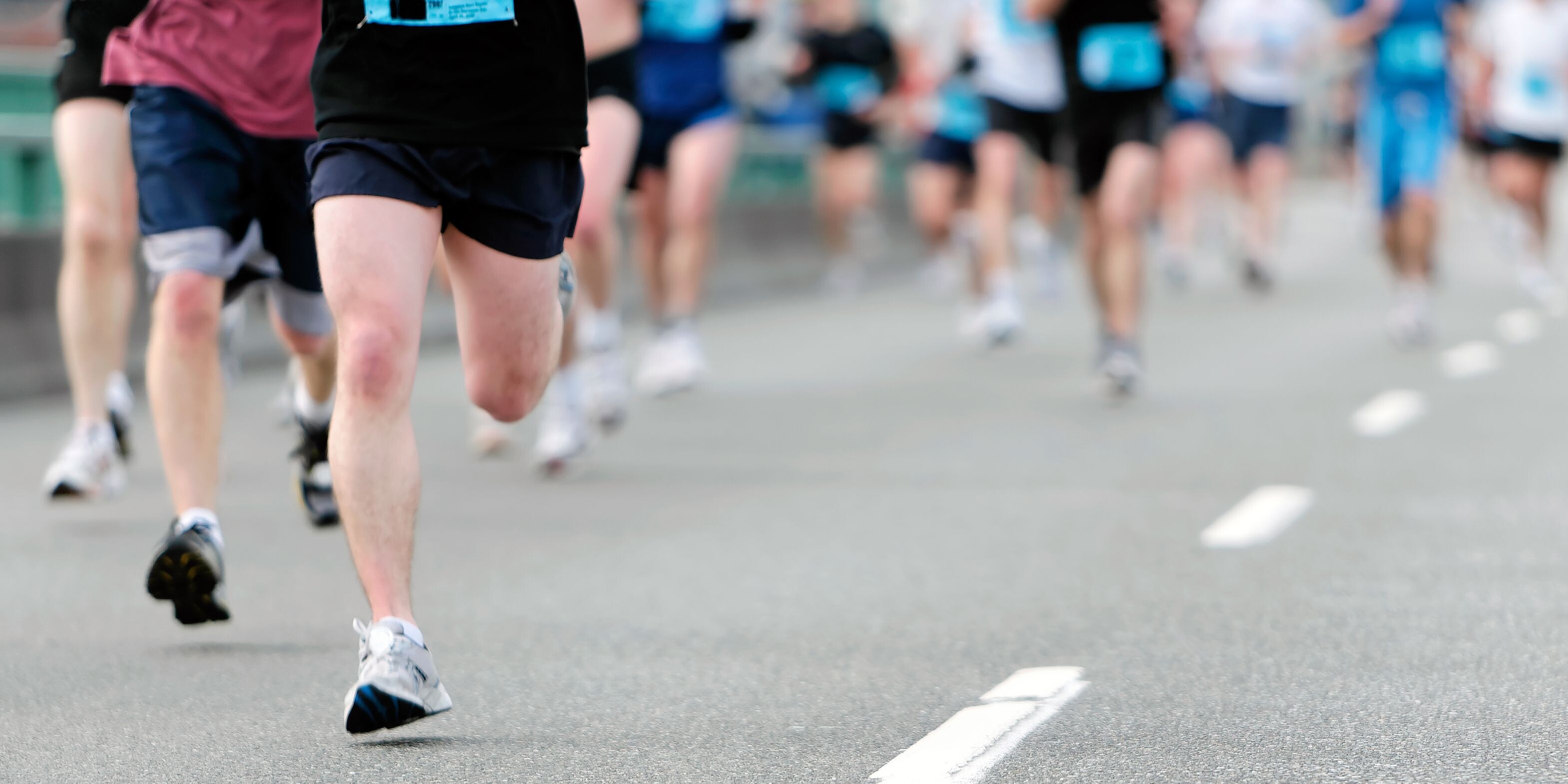
As you get closer to the big day, you’ll need to start to consider your gear. You’ll need to choose trail running shoes or road running shoes and have trained in them for a while to be sure they’re right for you. If you’ve already put in a ton of miles of them, you may need to replace them with an identical pair a few weeks before the race, and break them in. Once you’ve found the perfect pair of running socks, have a new or nearly new pair set aside for race day.
Use your training months to figure out what clothing you’re most comfortable in, taking into account the expected climate and conditions. Are you happiest in a pair of running shorts or do you prefer running tights? You’ll need a well-fitting running top that’s breathable and doesn’t chafe, and consider whether you want to run with a headband or running hat if you're expecting sunny conditions.
Remember, the general rule for running is light, breathable clothing that wicks moisture, but everyone is different. Reigning UTMB champ Courtney Dauwalter is well-known for running in baggy men’s running shorts and shorts, which isn’t common, but it definitely works for her.
4. Rest up
You’ll spend months slowly ramping up your mileage in order to reach your race distance, but once you get there, you’ll want to start to reduce both your distance and intensity in the final couple of weeks before your race, a practice known as tapering. During this time, you’ll focus on easy runs.
In the final two days before your race, get complete rest and lots of sleep. If you’re not a great sleeper, read our article getting better sleep for some tips on improving your sleep hygiene and routine.
5. Recce your route
Ultra runner Renee McGregor has ranked highly in some pretty rugged races, from Snowdonia to the Himalayas, and when I heard her talk about her accomplishments, she described making the podium in a gnarly race where the majority of participants took a wrong turn. Her advantage? She wasn’t necessarily the fastest runner, but she had checked out the race course ahead of time and knew where to go.
Understanding your route before you take off, if possible, can help you plan for when you’re going to want to slow down, or walk, where you can gain back some time, when and if you’ll need running poles and any tricky sections in a trail race where there’s the possibility of getting off-route.
6. Get in the right headspace
In addition to your physical training, it’s advisable to give your mental state some attention. Running a race can be exhilarating and empowering but it can also be nerve wracking and daunting. In the months leading up to your race, it can be worthwhile practicing mindfulness or meditation, which a 2020 study published in the journal Neural Plasticity found improved coordination, endurance and cognitive function. This could help you in the lead up to the race and in combating race-day nerves.
Know yourself and understand what you’ll need the day before your race and morning of to ensure you’re in the best head space possible. It might be good to minimize social contact and give yourself some quiet time to focus and get in the right headspace.
7. Fuel up
Just like filling up the tank of your car before you set off on a long drive, you’re going to want to make sure your body has plenty of energy stored before a race. For a race that’s not likely to take much more than an hour, you can simply make sure you eat well in the couple of preceding days, but fueling for endurance races can take careful fine-tuning. Following his second-place win at the 2023 UTMB, Zach Miller revealed that for him, managing his sodium levels with salt tablets was the secret to success.
For longer distances, you might want to consider increasing your carbohydrate intake – a practice known as carb loading – to increase your body’s glycogen stores. The best nutritional advice is to focus on well-balanced meals with protein and carbohydrates and not going overboard on refined carbs or fiber, which might wreak havoc on your gut. Learn more in our article on carb loading.
Though you should definitely eat well in the days leading up to your race, if you’re going to be able to eat during the race and are loading your hydration vest up with running gels, then you don’t necessarily need to carb load, but you will want to make sure your stomach can handle gels and take them with plenty of water to avoid the dreaded “runners' trots.”
Ultimately, for longer endurance races, working with a dietician will give you an advantage, since every athlete and every race is different. This will help you avoid the pitfalls of low energy availability and might help you figure out your unique nutritional needs faster.
8. Pre-hydrate
As we explain in our article on hydration tips for runners, hydration for a race doesn’t begin with filling up your hydration pack. Your behavior in the days before a long run can really affect your hydration levels on the big day, so avoid dehydrating foods like caffeine and alcohol.
According to Susan Kitchen, registered dietitian and USA Triathlon Level II and IRONMAN certified endurance coach, if you’re training for a big race, you want to avoid being in the heat unnecessarily in the days leading up to it, unless you're just doing a training run, but sitting outside on the beach sweating, or in a sauna, is not a good idea. Sip plenty of water in the days before your race, too.
9. Make a recovery plan
Chances are, all of your energy and efforts will be focused on that finish line, but the longer the race, the more you’ll want to make a recovery plan, otherwise it’s all too easy to end up having too many celebratory beers, which after a long run can be a bad idea.
Try to plan for at least a couple of days off work following your race to recuperate, hydrate and nourish your body, schedule a massage and engage in some of your favorite recovery activities to reward your body for all its hard work.
10. Set your alarm
The night before race day, make sure you set your alarm nice and early so you have plenty of time to prepare. Chiefly, you’ll want to have time to sip water, eat and give yourself enough digestion time before the starting gun goes.
In our article on what to eat before a half marathon, we explain that nutrition experts recommend runners eat a familiar breakfast around three to four hours before the race start, or a large snack 90 minutes to two hours beforehand. When deciding what time to get up, factor in that meal as well as how much time you need to get to the race plus any other pre-race rituals you want to observe.
by Julia Clarke
Login to leave a comment
7 Marathons in 7 Days on 7 Continents: Is There Such a Thing as Racing Too Much?
Don’t let your bucket list lead to burnout.
Setting running goals is typically a good thing. Goals keep you engaged and on track. They shape your training with purpose, structure, and accountability. However, sometimes an endless list of goals can backfire. More races. More consecutive events. More miles. It leaves us wondering: How much racing is too much racing?
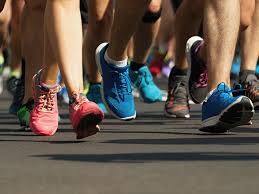
It’s healthy to test your limits and perceived boundaries, but running half marathons and marathons takes a toll—physically, mentally, emotionally, socially, and financially. Finding the sweet spot between your comfort zone and the danger zone is tricky.

So, we chatted with a few experts on setting values-driven goals, being ambitious but realistic, and using social media for support (beyond that quick hit of dopamine). Before you tackle your racing bucket list, read on.
How much racing is too much racing?
According to the experts, there’s no definitive answer to the “too much racing” question. “It depends on the person and what your short and long-term goals are and your current fitness conditions,” Raj Hathiramani, certified running coach at Mile High Run Club in New York City, tells Runner’s World. Even a series like the World Marathon Challenge, in which participants jet between all seven continents, completing a different marathon every day for one week straight, is doable if you’re prepared.
That said, training for an aggressive racing schedule requires time (for both running and recovery) and resources, like coaching, gym access, and funding to cover travel, race fees, childcare, and other family and household-related support.
“This is where I think a lot of people get it wrong,” Todd Buckingham, Ph.D., exercise physiologist at PTSportsPRO in Grand Rapids, Michigan tells Runner’s World. “They want to do a marathon or an Ironman, but they only have, say, three hours a week to train. That’s not going to be feasible.”
Buckingham points out that your training and race schedule needs to fit into the reality of your life and not the other way around. Otherwise, you risk overextending yourself and heading into events undertrained, which can lead to disappointment and injury.
How do you determine how much to race?
1. Start with your why
Before you start registering for races and scheduling training runs, ask yourself this question: “Why am I doing this?” There’s no right or wrong answer, but if you’re drawing a blank, or the big pay-off is external validation (are you already mentally editing your highlight reel?), you may need to re-evaluate your goals.
That’s because healthy, worthwhile goals should align with your personal values, according to Mike Gross, Psy.D., head of sport psychology services at Princeton University in Princeton, New Jersey. “Let’s get a sense of your ‘why’ and be really clear on that,” he tells Runner’s World. “Why in your heart do you want to do this?” he asks, noting that your why can serve as a compass that guides your actions and keeps you focused and on course in the face of obstacles.
If you don’t understand your reasons for doing something, you’re more likely to give up or follow through just for the sake of getting it done. “That’s when you’re just kind of white-knuckling it through the process. You’re starting to notice there’s no enjoyment in it, and that’s when some of the burnout symptoms start to arise,” Gross says.
For Hathiramani, the motivation to achieve his own “big” goal of running 50 marathons in 50 states was multi-pronged. Before formalizing the goal, he’d organically completed races in 10 states just by registering for events that appealed to him. He realized that participating in a race in each state would allow him to further connect with members of his running community, many of whom shared the same ambition.
Running in different states also gave Hathiramani an opportunity to access and explore parts of the country through the sport that he loves. “I thought it would be a really neat way to see the U.S., run some smaller races, some bigger races, and visit parts of the U.S. I’d never thought I’d be able to, whether it was the Shiprock Indian Reservation in New Mexico or a Christian camp in South Dakota,” he explains.
Keep in mind that not every challenging goal is defined by mileage. One of Hathiramani’s most meaningful goals was committing to strength training for at least 10 minutes twice a week. “That really helped my running, especially as I was getting older and running faster, longer distances. I felt that I needed more muscular endurance,” he says.
Buckingham encourages long-distance-oriented runners seeking a challenge to consider shorter, faster races. “A marathon, from a cardiovascular standpoint, is easy compared to a 5K or 10K,” he says.
2. Don’t race every race
Depending on the number of races you want to do and other personal variables, such as your racing experience and fitness level, you could aim to PR some events and simply finish others, as racing is more demanding and necessitates more recovery.
To that end, Buckingham recommends pursuing no more than two “goal races” a year—one in the fall and one in the spring—particularly if they’re longer, like a half or full marathon. “You want to give yourself several months in between to recover from the last marathon and get ready for the next,” he says, noting that attempting to “carry over” fitness in back-to-back events can backfire with injuries and other symptoms of overtraining.
For runners doing races in quicker succession, it’s key to incorporate recovery strategies in the days (or hours) between.“You can race hard for seven days in a row as long as you are adequately trained for that and adequately recover from it,” Hathiramani says. For example, he has done back-to-back marathons several times, but puts a specific focus on recovery between those finish and starting lines. This includes intentional practices like foam rolling, proper fueling, and quality sleep.
3. Take your time
The experts caution that imposing strict time constraints on your goals can increase your risk of injury, add unnecessary pressure, and take away from your overall enjoyment and satisfaction.
For example, Hathiramani embarked on his 50-marathon goal in 2010 when he was in his mid-20s, knowing that he wanted to finish by the time he was 40 years old. He finished “on time” in early 2024. This realistic timeframe allowed him to relish the experience and navigate unexpected obstacles, like COVID-related race cancellations.
“It was never about trying to achieve that type of goal in a certain amount of time. It was more about enjoying the process of falling in love with running,” Hathiramani says.
4. Be mindful with social media
It’s nearly impossible to escape the influence of the digital platforms that are now integrated into our everyday lives, but thinking about what you might do if you couldn’t share your goals with a wider audience is a useful thought exercise. That’s because it’s not exactly smart to set goals just so you can post about them.
However, social media is part of most runners’ lives, and there are positive aspects to online engagement. “If you put your goals out there by telling your family or friends or working with a coach, you get someone else that can help keep you accountable,” Hathiramini says, noting that the support of his community was instrumental in keeping him motivated to achieve a goal that spanned more than a decade. They not only celebrated his wins but also offered support when he needed it most. “They’re also there to help pick you up from any setbacks, too.”
Finally, with all of this in mind, don’t shy away from a big goal. “I think the mind and the body—the mind, more so—is pretty incredible in that it can expand its limits to what you desire to achieve,” says Hathiramani.
by Runner’s World
Login to leave a comment
UTMB Is Having a Golden Moment. But It’s Delicate.
After a year that included a maelstrom of controversy, the world’s most prominent ultra-trail running event has righted its path
“It felt like a golden era of trail running.”
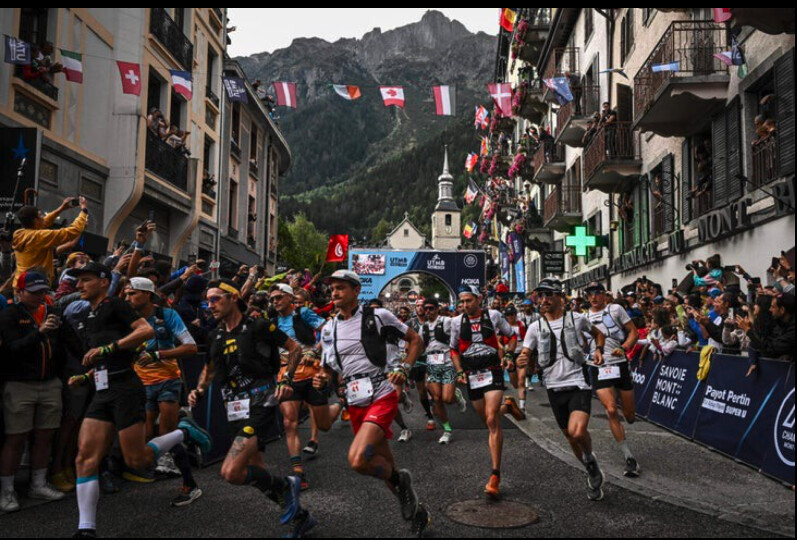
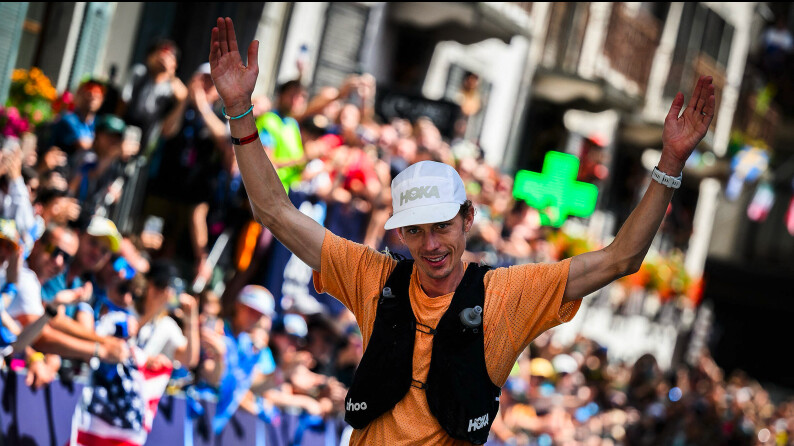
That quote came from Keith Byrne, a senior manager at The North Face and a UTMB live stream commentator for nearly a decade, who was talking about last summer’s UTMB World Series Finals in Chamonix, France.
The UTMB races during the last week of August last summer were, I thought, the most alluring in the event’s 20-year history.
After years of being frustrated by the course, American Jim Walmsley finally put it all together for a victorious lap around Mont Blanc. In doing so he became the first U.S. man to win the race, setting a course record of 19:37:43. He and his wife, Jess, had moved from Arizona to live full-time in France to make it happen. And then there was Colorado’s Courtney Dauwalter, who won the race handily in 23:29:14 to notch her third victory and continue the strong legacy of American women on the course. The win felt extra historic because it made her the first person to win Western States, Hardrock, and UTMB in the same year—arguably the three most legendary and competitive 100-mile events in the world, and she dominated each one.
The events came off without a hitch and included record crowds in Chamonix, plus a record 52 million more tuning into the livestream.
Throughout the fall and winter, harmony and happiness seemed to give way to chaos and discontent. But a year later, as the UTMB Mont Blanc weeklong festival of trail running kicks off on August 26, everything seems back to normal in Chamonix. What happened along the way is a tale of drama, perhaps both necessary and unnecessary, all of it culminating in course corrections by the multinational race series.
In short, what a year it has been for UTMB.
And now, hordes of nervous and excited runners from all corners of the globe are descending on Chamonix for this year’s UTMB Mont-Blanc races. Registration for UTMB World Series events is reportedly up about 35 percent year over year with even greater growth in interest for OCC, CCC and UTMB race lottery applications. There is more media coverage, more pre-race hype, and more excitement than ever before. More running brands are using the UTMB Mont Blanc week to showcase their new running gear with media events, brand activations, and fun runs. Even The Speed Project—although entirely unrelated to UTMB—chose Chamonix as the starting point of its latest so-called underground point-to-point relay race to try to catch some of the considerable buzz UTMB is generating.
So what happened? Did the UTMB organization do its due diligence and make amends with several significant changes in the spring? Was the angst and stirring of emotions just not as widely felt as the fervent bouts of Instagram activism claimed it to be? Have the participants and fans of the ultra-trail running world suffered amnesia or become ambivalent? Or is it all a sign of the race—and the entire sport of trail running—going through growing pains as it adjusts to the massive global participation surge, increased professionalism, and heightened sponsorship opportunities?
On the eve of another 106-mile lap around the Mont Blanc massif, I wanted to take a look at what happened and the current state of UTMB’s global race series that culminates here in Chamonix this week.
We caught a glimpse of what was to come shortly before UTMB last year, when the race organization announced the European car company Dacia as its new title sponsor. A fossil-fuel powered conglomerate didn’t sit well with some fans of the event, coming amid an era of widespread climate doom (even though the brand would be highlighting its new Spring EV at the UTMB race expo.) The Green Runners, an environmental running community co-founded by British trail running stars Damian Hall and Jasmin Paris, called it an act of “sportswashing” and released a petition calling on UTMB to denounce the partnership. (Hall even traveled all the way to Chamonix to deliver the petition in person.)
These grumblings of discontent and others that followed exploded into a social media firestorm shortly after UTMB. In October, it became public that UTMB had moved to launch a race in British Columbia, Canada, just as a similar event in the same location was struggling with permitting. A he-said, she-said back-and–forth left onlookers with whiplash. Then on December 1, UTMB livestream commentator Corrine Malcolm announced on Instagram that she had been fired and in late January, a leaked email from elite runners Kilian Jornet and Zach Miller to fellow athletes called for a boycott of the race series. All of it, jet fuel for social media algorithms.
“We’re at a turning point in trail running, but we can keep the core values if the community stands up,” the Pro Trail Runners Association secretary, Albert Jorquera, told me at the time.
In the midst of these dramas, I interviewed race founders Catherine and Michel Poletti over lunch at a Chamonix cafe. For nearly a decade now, I have met with the couple for candid conversations that helped frame online articles and magazine stories, and most recently for the book, The Race that Changed Running: The Inside Story of UTMB.
I plunged headlong into two articles with hopes of explaining it all. There was so much heat swirling around the UTMB stories, and so little light.
“The very thing that made ultrarunning so bonding was being torn apart by the community itself through social media,” said Topher Gaylord. A former elite runner who tied for second in the inaugural UTMB in 2003, Gaylord engineered UTMB’s first title sponsorship with The North Face and has been a close supporter of the Polletis for 20 years. “Some players are using social media to divide the community. That’s super disappointing.”
To me, it felt like the aggressive online activists were winning the day. Trail running suddenly seemed polarized, infected with the intertwined social media viruses of false indignation and close-mindedness. Twice, I deep-sixed my article drafts. Friends and editors convinced me they wouldn’t be read dispassionately. Who wants to be handed a fire extinguisher, when your goal is to torch the house?
Well, what a difference eight months can make. We now have some perspective and, with it, some answers.
Since its earliest days, UTMB’s volunteer founding committee believed in the values of the sport. The very first brochure produced for the race—a mere sheet of paper—featured a paragraph on values. In later years that statement became much more comprehensive, expanding to cover a wide range of topics and the race’s mission to support and protect them.
But maintaining those values in an organization that has gone from a singular race with a literal garden-shed office to a 43 global event series with a staff of more than 70 full-time employees is tricky at best. In an interview once, Michel Poletti paused, asking if I had seen a photo of a mutual friend that was making the rounds. He was climbing one of Chamonix’s famed needle-sharp aiguilles, one foot on each side of a razor sharp ridge—a perilous balancing act, big air on each side. It was his metaphor for trying to move ever up, while balancing business growth and heartfelt values.
Over the course of dozens of hours of interviews with the Polettis, I came to learn one thing: UTMB always moves forward up the ridge. In the process, UTMB corrects its course. It starts with a careful analysis after each edition, evaluating pain points in areas such as logistics, security, media, traffic, and others, discussing how they can be addressed. Historically, those course corrections haven’t been at the pace others might want—especially since the social unrest that developed during the Covid pandemic—but the organization has a reliable pattern of steadily addressing concerns.
And so, not too many weeks after that lunch meeting, UTMB set to work. First came a heartfelt effort they kept under the radar—traveling around the U.S. to listen and learn. They spent two weeks in the U.S. in February, visiting with American athletes, race directors, journalists, consultants, and their Ironman partners. “We need to learn from our mistakes and from this crisis,” Michel said.
Methodically over the ensuing months, UTMB rolled out a series of changes. Some were aimed at directly addressing the controversies, others were overdue for what is, by any metric, the world’s premier ultra-trail running event.
“My hope is that the trail running community understands that we are human,” Catherine had told me over the winter.
Four months ago, at the end of April, the race organization announced that Hoka would become the new title sponsor of UTMB Mont-Blanc and the entire UTMB World Series through 2028. It was a huge move because Hoka, one of the biggest running brands in the world, essentially doubled-down on its support of UTMB and trail running in general. The five-year deal brought benefits other than cash, too. Hoka has a strong history of inclusivity and growing representation among marginalized communities, an area UTMB has announced it intends to focus more on beginning this year. The deal also moved Dacia out of the title sponsor limelight, instead bringing a brand with a strong reputation in trail running to the fore.
Dacia was shifted to the role of a premier partner in Europe, and now plays an integral part in a new eco-focused mobility plan UTMB updated in July. Fifty of their cars can be signed out for use by over 70 staff and 2,500 volunteers, encouraging them to arrive in Chamonix using public transportation instead. The move is estimated to eliminate 200 vehicles driving into the valley. (The organization’s new mobility plan will transport an estimated 15,000 runners and supporters, eliminating the need for approximately 6,000 cars during the UTMB Mont-Blanc week. On average, a bus will run every 15 minutes between Chamonix and Courmayeur, Italy, and Chamonix and Orsières, Switzerland.)
In May, UTMB announced a new anti-doping policy it had developed with input from PTRA. The organization committed to spending at least $110,000 per year, money that will be allocated to test all podium finishers and a randomized selection of the 687 elite athletes in attendance. The new policies will be implemented by the International Testing Association, an independent nonprofit that has also conducted two free informational webinars for the 1,400 UTMB Mont Blanc elite runners.
Not long after the announcement, Catherine Poletti suggested this was just a start. Speaking at TrailCon, a new conference held in Olympic Valley, California, on June 26, she said, “It’s a first big step for us. And we’ll continue to develop this policy.” (The most important anti-doping protocol may still be beyond UTMB, however. “The elephant in the room is that we need a coordinated approach to establish out-of-competition testing,” Tim Tollefson, an elite U.S. runner and director of the Mammoth TrailFest in California, who spearheaded independent testing at his event in 2023. “Individually, we’re just lighting our money on fire.”)
In mid-June, UTMB addressed a longtime issue with top runners—prize money. A chunk of the funding from the ratcheted-up Hoka sponsorship was directed to supporting the bigger prizes for the OCC, CCC and UTMB races in Chamonix—about $300,000 this year, nearly double of 2023—as well as more prize money for the three UTMB World Series Majors. (The sequence was intentional. The organization wanted a new doping policy in place before increasing prize purses, since large cash awards are often thought to lead to a growth in doping.)
It’s a move that was long overdue—the most celebrated marquee event in any sport should reward its top athletes more than any other event—but not possible without Hoka’s increased involvement. The proposal was shared with PTRA in advance of the announcement, and the group provided feedback that was incorporated into the final divvying up of the purse. The total amount spent on prize money across all UTMB races is now more than $370,000.
“We increased the prizes quite dramatically,” said UTMB Group CEO Frédéric Lenart. “It’s very important for us to support athletes in their living.”
Finally, just last week, UTMB announced a new department within the company called “Sport and Sustainability.” The group is headed by longtime UTMB staffer Fabrice Perrin. He was a driving force behind the creation of UTMB’s live coverage back in 2012. Heading up relations with the pro athletes will be longtime elite trail runner Julien Chorier. Nicolas LeGrange, UTMB’s Director of Operations, will be in charge of sustainability and DEI, Diversity, Equity Inclusion.
On the DEI front, UTMB is calling its strategy “leave no one behind,” and they promise new initiatives coming this fall so that, according to Perrin, “every athlete feels a sense of belonging within our community,” he says. “I am committed to ensuring that we perfect symbiosis with the entire community of trail running.”
UTMB has already begun to embrace adaptive athletes, something it was criticized for lacking as recently as last year. This year’s UTMB Mont Blanc races will feature a team of 12 adaptive athletes who will be participating in the MCC, OCC and UTMB races. Under the direction of adaptive athlete and team manager Boris Ghirardi, who lost his left foot and part of his left leg after a motorcycle accident in 2019, the race organization recruited the athletes from around the world to showcase how adaptability and resilience are key elements of the UTMB values.
“I proposed this program to make a concrete action around adaptive athletes and the inclusion policy, and to prove that it was possible,” he said this weekend. “If you really get everyone working on this, you can change the game.”
And with that, UTMB Mont-Blanc 2024 is underway, resuming the golden era status that Byrne raved about last August. Starting this past weekend, banners have been unfurled over Place du Triangle de l’Amitié in the heart of Chamonix, kicking off the carefully choreographed trail running Super Bowl that is UTMB. The excitement begins on August 26 and culminates as the race for UTMB individual crowns reach a tipping point on August 31. (The golden hour of the final finishers on September 1 will be something to behold, too.)
“It’s like wrapping the Tour de France, Burning Man, and the biggest industry trade show into one giant, week-long festival,” Gaylord says. “It’s an amazing week for our sport, one of the biggest showcases we have.”
The aura of Chamonix and the opportunity to run a race there is drawing as much or more interest than ever before. It is perhaps the essence of what will keep the UTMB World Series afloat into the distant future. Runners will continue to chase Running Stones at qualifying events around the world, knowing the carrot of running one of the races around the Mont Blanc massif is second to none.
Trail running is booming on a global scale, and it’s not just UTMB shouldering the burden or reaping the benefits. The Golden Trail World Series, Spartan Trail Running, Xterra Trail Running—and even the World Trail Majors, Western States 100, and dozens of other more prominent trail races—are all trying to get a bigger piece of the pie, either by way of money or relevance.
UTMB Mont Blanc, as trail running’s most important race, is at the very beating heart of it all. And trail running is a soul sport, so when change and growth happen, it can feel threatening to all of us whose lives have been changed for the better by time spent with dirt underfoot and blue sky above. UTMB is big enough now that it’s urgently important that it make changes judiciously and preemptively.
As the world’s most significant trail race, the consequences of UTMB’s choices will ripple throughout the ecosystem. UTMB understands this. “Do we owe something to trail running? Yes, of course we do,” Michel Poletti once told me. That’s truer than ever now.
At TrailCon in June, Catherine Poletti summed up UTMB’s challenge. “Trail running is changing around the world. We’ve seen that evolution over 20 years. We need to adapt, to find a good balance, to accept different models and ways of organizing.”
Back in August 2021, I wrote an article here called, “UTMB, Don’t Break Our Hearts.” It came the summer after the organization announced its investment from the Ironman Group. Change– big change– was everywhere. Could the race around Mont Blanc maintain its soul and passion amid talk of multinational sports marketing, we all wondered? Michel Poletti closed the interview by saying, “Nous prenons un rendez-vous dans trois ans.” Simply translated: “We’ll schedule an interview in three years.”
Three years is now, and both UTMB and trail running’s landscape have changed dramatically, if not literally then certainly figuratively. We’ve seen UTMB adjust its rudder this past year, responding to concerns. Perhaps not at the pace any individual or specific group would like, and not to the extent some would wish. But it’s happening, and for that we should all breathe a cautious sigh of relief. Because if you love trail running, you have to care about what happens at the world’s biggest trail race.
As I write this in Chamonix very early on the morning of August 26, overcast skies are parting and blue skies are in the offing. The forecast for the week ahead is for bright sun with a few clouds. It’s a workable enough metaphor for trail running’s future. But one thing has to happen for it to come true. The race that changed running needs to continue to listen to its stakeholders around the world, and engage with them as it grows and develops in the days ahead. If that happens, Byrne’s vision of the golden age of our sport just might linger on. I can hope.
by Outside Online
Login to leave a comment
Walmsley and Schide favorites as Western States line-ups are finalized
Americans Jim Walmsley and Katie Schide, both UTMB winners, will head the finalized fields for the 51st edition of Western States 100 Endurance Run at the end of this month.
Western States is the oldest and arguably the most iconic 100-mile trail run in the world and the stars are again out in force Auburn on June 29-30.
Can Walmsley make it four?
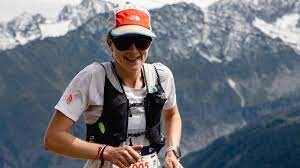
Last year Walmsley memorably ended his quest to finally add a UTMB title in Chamonix to his CV and he’s the current course record holder at Western States, which he’s already won three times.
His time of 14:09:28 from 2019 hasn’t been bettered since and he’s the highest-ranked runner in terms of the UTMB index at 934 (Kilian Jornet is top on 941).
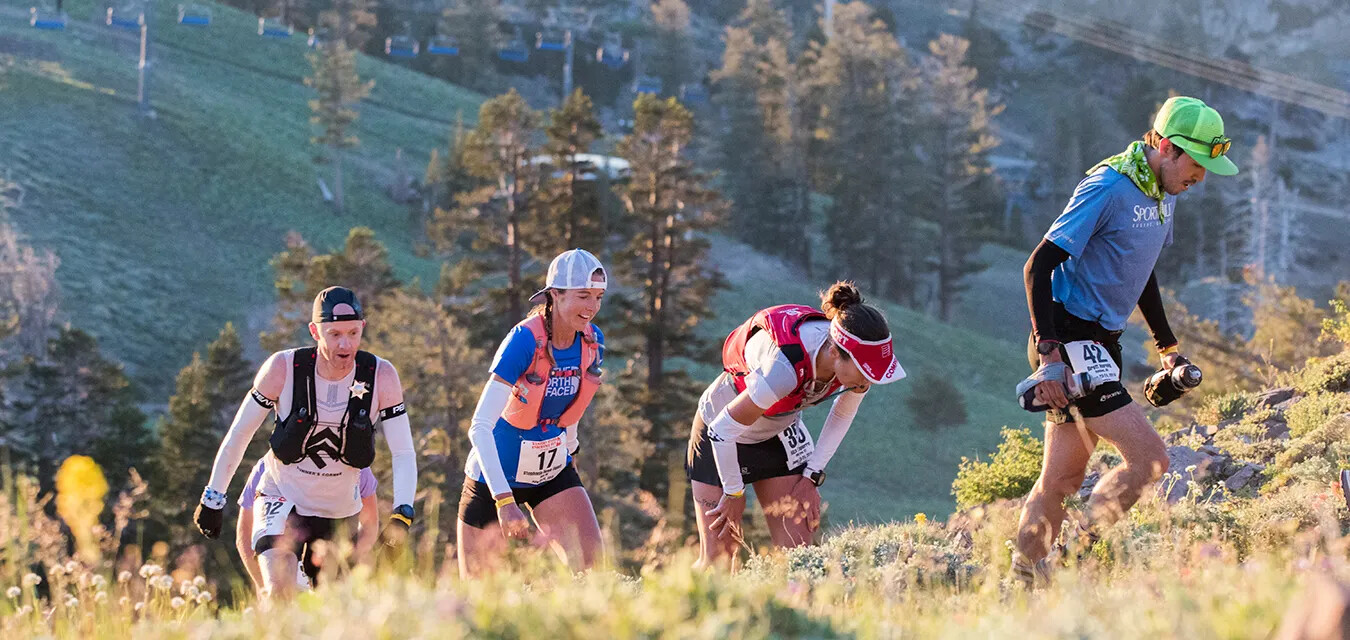
But he’ll face a raft of strong rivals including the 2023 runner-up Tyler Green (USA, UTMB Index 880) and several other top finishers from 2023, including fourth-placed Jiasheng Shen (CHN, UTMB Index 906).
Dakota Jones (USA, UTMB Index 902), Ji Duo (CHN, UTMB Index 889) and Hayden Hawks (USA, UTMB Index 910) booked their spots alongside Walmsley via Golden Tickets from top-three performances at other big events.
Schide the one to beat
And on the women’s side the 2022 UTMB winner Katie Schide (UTMB Index 825) will be looking to go one better than last year’s second place at Western States.
Only superstar Courtney Dauwalter on 847 is ahead of Schide on the UTMB Index but the reigning Western States champion (who smashed the course record time when beating Schide) won’t be back to defend her title.
That means that Schide, who underlined her form with victory at the Canyons Endurance Runs by UTMB at the end of April, starts as the clear favourite.
But she too will face tough opposition from the likes of Eszter Csillag (HUN, UTMB Index 768), who finished third 12 months ago, and three-time finisher Emily Hawgood (ZWE, UTMB Index 757).
Other big names lining up include former professional IRONMAN athlete Heather Jackson (USA, UTMB Index 764), Eleanor Davis (GBR, UTMB Index 753) and Emily Schmitz (USA, UTMB Index 736).
Jackson recently advertised her gravel racing prowess in a thrilling sprint finish at the famed Unbound event.
We’ll build up to the big event over the next couple of weeks here at RUN247.
by Jonathan Turner
Login to leave a comment
Western States 100
The Western States ® 100-Mile Endurance Run is the world’s oldest and most prestigious 100-mile trail race. Starting in Squaw Valley, California near the site of the 1960 Winter Olympics and ending 100.2 miles later in Auburn, California, Western States, in the decades since its inception in 1974, has come to represent one of the ultimate endurance tests in the...
more...World record holder, endurance sport pioneer Chris Nikic to Run 2024 Grandma’s Marathon
2-time ESPY award winner and Guiness world record holder Chris Nikic will be at the starting line of the 2024 Grandma’s Marathon, the organization announced today.
Nikic was born with Down syndrome and was unable to walk well until age 4, but recently he became the first person with Down Syndrome to complete each of the World Marathon Majors (New York City, Boston, Chicago, Berlin, London, and Tokyo) and earn the coveted Abbott Six Star medal.
In 2020, before completing any of his running-only marathons, Nikic became the first person in the world to ever complete an Ironman Triathlon – that competition consists of a 2.4-mile swim, 112-mile bike ride, and 26.2-mile run.
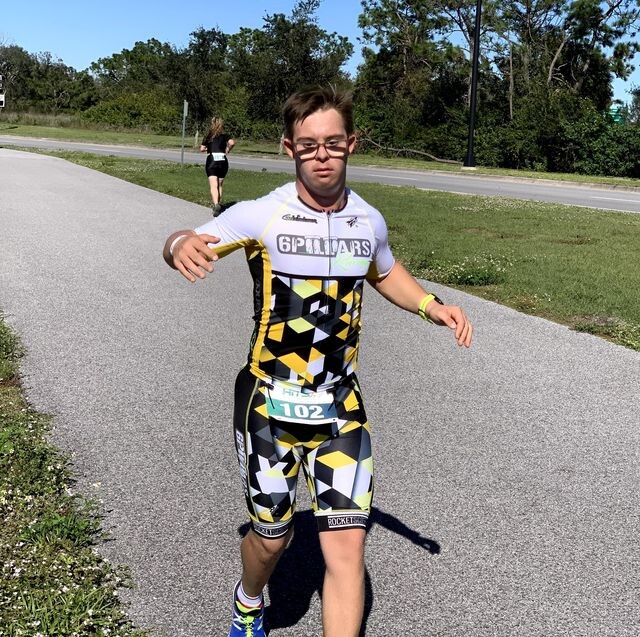
Nikic beat his own time two years later at the 2022 World Championships, and that mark of 16 hours, 31 minutes still stands as an official Guiness world record.
After accomplishing a goal that once seemed out-of-reach, Nikic co-wrote a book with his father, Nik, titled 1% Better: Reaching My Full Potential and How You Can Too.
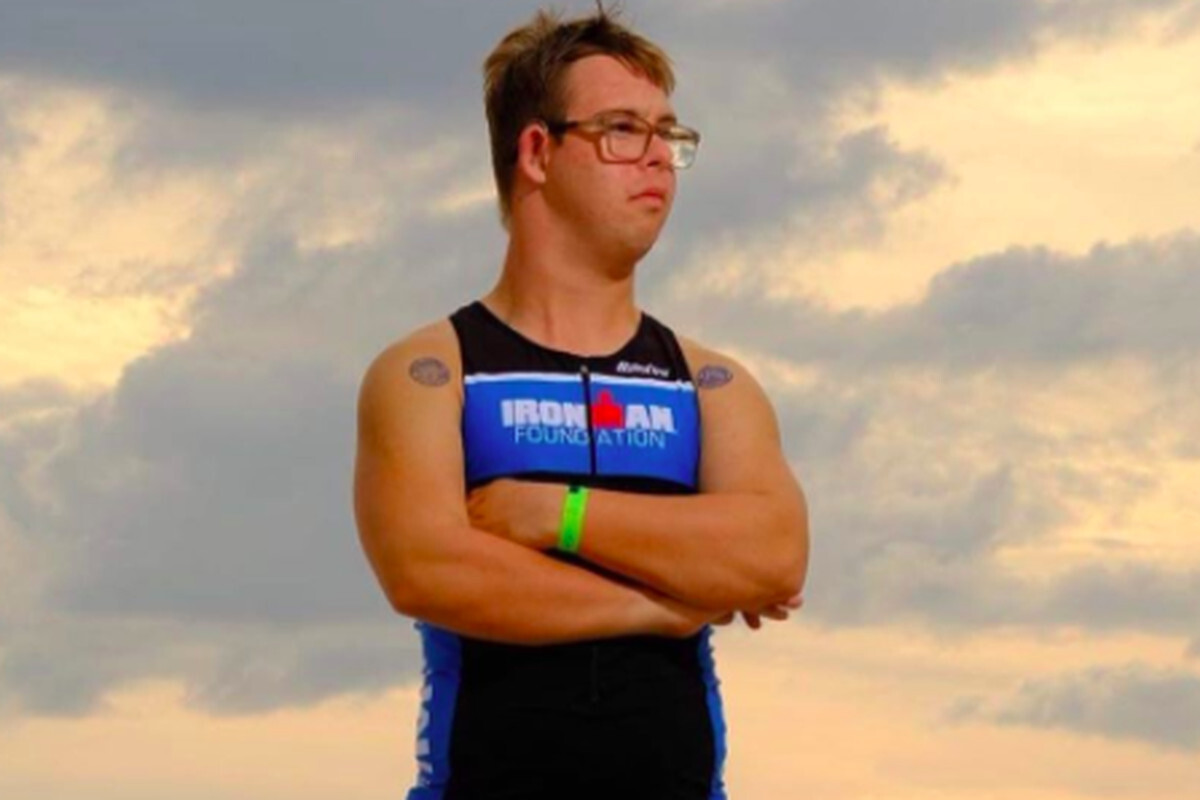
The book chronicles Nikic’s journey from childhood to his teenage years, when after high school he was an admitted “overweight, out-of-shape” 18-year-old. As he slowly developed an affinity for exercise, Nikic also slowly changed his perception of what was possible in his life.
“That’s when he wrote on the wall that he was going to be a ‘world champ’,” his father Nik said. “We didn’t dismiss what he was telling us as impossible, we took it to heart and believed him. Then, we got to work helping him achieve that goal.”
Chris will speak at the Essentia Health Fitness Expo at 12:00 p.m. on Friday, June 21, and Nik will follow that at 1:00 p.m. as a guest for a panel discussion on the inclusion of neurodivergent and disabled athletes in endurance sporting events like Grandma’s Marathon. Both presentations are free and open to the public.
The Nikics will also be visiting Northwood Children’s Services west campus on Thursday, June 20, with Chris set to speak to the kids and lead them through the “1% Better Challenge.”
“We’re honored to have Chris as part of our 2024 Grandma’s Marathon weekend,” Marketing & Public Relations Director Zach Schneider said. “We met Chris and his dad two years ago in Denver, and I don’t think there was a dry eye in the place after Chris had given his presentation. He’s exactly the type of person we want at our starting line, and we’re excited to continue the conversation about how those doors can be opened to other athletes like Chris.”
Down syndrome is a chromosome disorder caused by an extra chromosome 21, which prompted the creation of the Runner 321 initiative aiming to welcome more neurodivergent athletes into endurance sports. On race day in Duluth, Chris will wear race bib No. 321 as a symbol of that initiative.
ABOUT GRANDMA’S MARATHON
Grandma’s Marathon began in 1977 when a group of local runners planned a scenic road race from Two Harbors to Duluth, Minnesota. After seeing just 150 participants that year, the race weekend has now grown into one of the largest in the United States and welcomes more than 20,000 participants for its three-race event each June.
The race got its name from the Duluth-based group of famous Grandma’s Restaurants, the first major sponsor of the marathon. In addition to the 26.2-mile race, the organization has now added the Garry Bjorklund Half Marathon and William A. Irvin 5K to its weekend offerings.
As the popularity of Grandma’s Marathon has grown, our mission has stayed the same – to organize, promote, and deliver annual events and programs that cultivate running, educational, social, and charitable opportunities to our communities.
by Running USA
Login to leave a comment
Grandmas Marathon
Grandma's Marathon began in 1977 when a group of local runners planned a scenic road race from Two Harbors to Duluth, Minnesota. There were just 150 participants that year, but organizers knew they had discovered something special. The marathon received its name from the Duluth-based group of famous Grandma's restaurants, its first major sponsor. The level of sponsorship with the...
more...Here Are the Celebrities Running the 2024 Boston Marathon
Zdeno Chara and Meb are a few of the big names toeing the line in Hopkinton this year.Every year, the Boston Marathon attracts celebrities from various fields, from athletes to actors, and this year is no different. Last year, former Boston Red Sox players Brock Holt and Ryan Dempster took to the streets alongside legendary quarterback Doug Flutie, who won the Heisman while at Boston College.
This year, things kick off with former Patriots tight end Rob Gronkowski serving as grandmaster for the race. Gronkowski will also receive the Patriots' Award from the Boston Athletic Association, which honors a “patriotic, philanthropic, and inspirational” individual who “fosters goodwill and sportsmanship.”
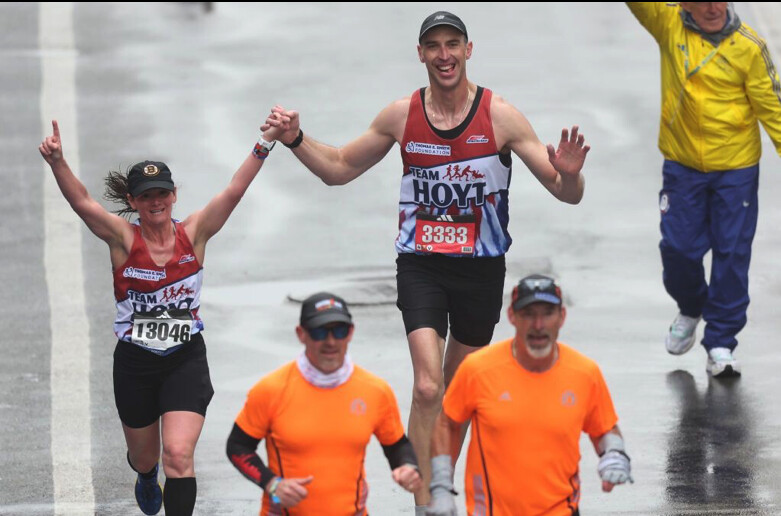
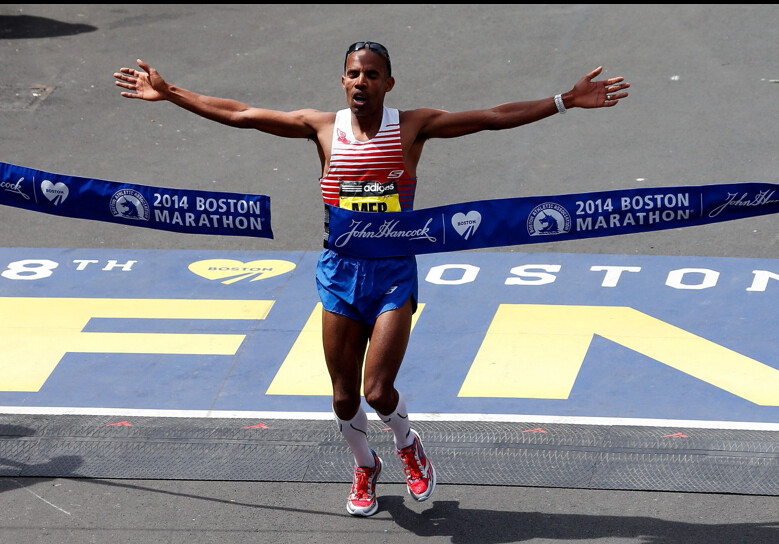
This year, spectators will see not only a few returning faces in the streets but also a few first-timers. So, what notable names can we expect to see lining up in Hopkinton this year for the Boston Marathon? 1
Meb KeflezighiMeb Keflezighi, now with New Balance, announced his return to the race earlier this year. In 2014, Keflezighi became the first American to win the men’s race since 1983.
Keflezighi, 48, will run the race to support his MEB Foundation, which supports “health, education, and fitness worldwide.”
“I will be returning to the streets of Boston, taking on the prestigious race and celebrating my victory from 2014,” Keflezighi said on Instagram. “Together, we can light the path for those in need and show the world the power of compassion and community. Let’s run with purpose and inspire others to join us in spreading kindness and hope.”2
Zdeno CharaChara, the legendary Bruins hockey player who stands a mighty six feet, nine inches and helped bring the Stanley Cup to Boston in 2011, is again running in support of the Thomas E. Smith Foundation and the Hoyt Foundation.
“I’m excited to be running the 2024 Boston Marathon to raise money and awareness for @thomasesmithfoundation & @teamhoytofficial!,” Chara said on Instagram. “These two amazing foundations impact the lives of those living with disabilities through financial and emotional support.”3
Nicolas KieferKiefer’s Boston Marathon run will see the former tennis pro complete the last of the big six, having previously run Berlin, Chicago, London, New York, and Tokyo.
Kiefer, who won silver in the 2004 Olympics, wrote on Instagram that he felt “extremely good” during his final training run before the marathon.4
Chris NikicAt 22, Chris Nikic completed his first Boston Marathon in 2021. He is the first person with Down Syndrome to finish the Hawaii Ironman and all Big Six marathons. Nikic aims to improve his Boston time to 5:35 in 2024, his third time running the race.
“Last long run (20 miles) before @bostonmarathon next weekend and @londonmarathon in 2 weeks,” Nikic said on Instagram on Sunday. “Looking to see if I can do better each marathon.”5
Daniel HummDaniel Humm, the chef behind NYC’s three-Michelin star restaurant Eleven Madison Park, hoped to run the New York Marathon but had to drop out due to an Achilles injury. Instead, he will be running in Boston, hoping to beat his time in the same race last year when he ran a 2:58:53.6
Matt WilpersFamed Peloton instructor Matt Wilpers will be running the marathon as a long-time personal goal and as a way to inspire others as he does during his popular workouts.
“My success is when my athletes are successful, so if I can push them to be stronger, better versions of themselves by going out and leading by example, like, I love this stuff,” Wilpers told Boston.com. “I’ll have fun racing a marathon, I’ll have fun racing a 5K. Whatever it is, this is what I do for fun. And so if this is going to get people excited, let’s go do it.”
by Runner’s World
Login to leave a comment
Early Morning Race Start? Here’s How to Reset Your Sleep Schedule
Training plans include time and distance on your feet, but rarely do they block out time in bed—maybe it’s time they do.
At first glance, the start times of most marathons—around 9 a.m. or 10 a.m.—seem easy enough. But when you factor in travel and wait time, runners often have to leave their home or hotel rooms before dawn to get to the start. That leaves typical sleep schedules in the dust.

“I had four races last year and all of them required getting up as early as 3:30 a.m.,” Joe English, elite-level master’s multi-sport athlete and former national coach for the Leukemia and Lymphoma Society’s Team-In-Training program, tells Runner’s World. Especially for the bigger races, where there are a lot of logistics involved, it’s necessary to get up and race super early.
So if you need to reset your sleep schedule before a race to accommodate those pre-dawn times, how do you do it and how long will it take?
Why You Should Reset Your Sleep Schedule
“Sleep used to take a back seat to exercise and nutrition, but in the past decade, we’re starting to realize that it’s really a tripod when it comes to athletic success,” James Maas, Ph.D., author of Sleep to Win: Secrets to Unlocking Your Athletic Excellence in Every Sport tells Runner’s World. “I have personally seen runners who adjusted their sleep and nothing else and have greatly improved their running as a result.”
Extensive research confirms this observation. A systematic review published in Sports Medicine in 2023 about sleep and athletic performance, found that while elite athletes feel rested with eight hours of sleep every night, they often sleep less than seven. Long travel and resting in unfamiliar environments often disrupted their sleep, as did the same things that keep many of us awake: social demands, work and family commitments, and lifestyle choices like diet.
The researchers also found, though, that extending sleep by about 45 minutes to two hours, rather than napping, improved both sleep quality and performance, as shown by metrics like strength and power.
To gain the same benefits, here’s how long it takes to reset your sleep schedule in order to wake up early for a race and how to make it happen so you’re ready for a solid performance.
How to Reset Your Sleep Schedule
If there is a race in your schedule that involves travel crossing time zones, both experts say it takes up to four weeks to adjust your sleep schedule, so start planning for that new wake-up time well in advance.
Here’s what you should do to adjust:
1. Set an Alarm—for Bedtime
You may have the best intentions to go to bed at a reasonable hour, but then OME (One More Episode) Syndrome sets in. Set an alarm to tell you it’s time to wind down.
Consider taking 30 minutes to an hour to move from your couch to your bed, giving yourself enough time to take care of that process. “I have an alarm that goes off at 9:15 every night and that’s when I know to start my wind-down time no matter what,” Ryan Hurley, a sleep performance coach and former ultramarathoner and Ironman racer tells Runner’s World.
2. Create a Consistent Routine
Part of good sleep hygiene—creating the ideal environment for getting a good night’s rest—is consistency. “If your focus is on having a regular sleep cycle all the time, an early race is going to have less of an impact, because you’ll be better rested [overall] and therefore more capable of dealing with that bump in the road,” says English. To help keep him consistent, English sets his lights to automatically dim at the same time in the evening to cue his bedtime.
3. Write Tomorrow’s To-Do List
Writing down your to-do list for the next day before you go to bed can help keep nighttime ruminating at bay. “By writing it down, you’re making space for it but you’re not bringing it into the bedroom with you to worry about,” says Hurley.
4. Act as Your Own Sleep Detective
Tracking your sleep can change your rest game in ways you don’t even yet realize, says Hurley. “I always thought that I was getting enough sleep because I was getting seven hours, and the common recommendation is seven to nine hours,” he says. “But it wasn’t until I started tracking my sleep that I realized I wasn’t getting enough REM sleep.”
“I’ve found that people aren’t very good at judging how much sleep they got,” Maas adds.
To assess your rest, ask yourself these questions: Do you tend to feel tired when you’re in a warm room, a dull meeting, have a heavy meal, or after a couple drinks? Do you typically fall asleep within five minutes of hitting your pillow? Do you sleep extra hours on the weekend? Do you need an alarm to wake up? If yes to any of these, you probably need more rest, he says.
5. Get Grateful
Having an “attitude of gratitude” sounds like a nice catch-all phrase we hear a lot these days, but it can actually help turn your mood around. “Every night, I review the good things that happened to me that day, and it helps puts me into a good mindset to fall asleep,” says Hurley.
6. Replicate Start Times
Replicating race conditions—which includes time of day—can help your body adjust by the time you hit the start. “You should do at least some portion of your training at the time of day of your race,” says English. “It helps acclimate you to running under the conditions in which you’ll be racing.”
How to Schedule Your Sleep the Night Before a Race
If adjusting your sleep schedule for four weeks before a race is unrealistic, English emphasizes that it’s likely, with the help of adrenaline, you’ll be able to push through a race on less sleep than usual. It’s more important to be well-rested the two weeks leading up to the race. Then, if you can, squeeze in a nap if you know you won’t get a full night’s rest before the race.
If you don’t sleep well the night before, don’t let it derail you. Instead focus on the training you’ve done to remind you that you’re ready for the race, English suggests.
To make sure you get the best sleep possible in the days leading up to the start to support your performance, here’s what to do:
Stay Awake Until Bedtime
If you have a 3 a.m. wake-up call, simple math would deduce that you should go to bed much earlier that night. Not so, says English. “The number one thing runners would tell me the night before the big race is ‘I’m going to go to bed at 4 p.m.,’ and I tell them that is a recipe for a disaster, because you’re going to confuse your body into thinking you’re taking a nap, and will wake up after two to three hours,” he says. “My advice instead is to go to bed at a reasonable hour, but not more than an hour or two earlier than normal.”
Go With the Flow
Whether it’s a 24-hour relay, a time zone change, or simply a super-early start time that you couldn’t prepare for, there will be some races that basically happen in your middle of the night. “I remember once I was at the Disney World Marathon which has a really early start, and I was on the bus at 3 a.m., which was midnight my time, and here I was just about to start running,” recalls English. Times like that, there’s only so much you can do, he says. “Just do what you can, and know that your training will carry you through.”
Make Time for a Well-Timed Nap
When you can’t get a full night’s rest, count on the power of a short-and-sweet nap. “Napping can increase your alertness, reaction time, and coordination,” says Maas, who coined the term “power nap.” The sweet spot for nap timing is less than 30 minutes or more than 90 minutes, according to Maas. “Otherwise, you’ll be groggy,” he says
Don’t Sweat the Alarm
The “will I wake up for the race?” panic is so ubiquitous that Jerry Seinfeld was put in charge of waking up a New York City Marathon runner who famously slept through his Olympic race. But let’s separate fact from fiction: According to English, this scenario likely won’t happen. “I’ve probably helped 5,000 runners reach the starting line of a race and I don’t recall anyone oversleeping,” he says. “If anything, it’s the opposite—they’re up at 2 a.m. because of the adrenaline.”
by Runner’s World
Login to leave a comment
Running 300,000 Vertical Feet In a Year: Noble Goal or a Fool’s Errand?
Arbitrary goals are nonsensical. They also can be the source of great joy.In the pursuit of any goal, we all face a moment of questioning ourselves, sometimes out loud.The first week of last December, I had that moment, a question as I power-hiked up an icy trail, listening to my own labored breath:The answer, of course, was: No, it was not necessary. I had a cold, or enough remnants of a cold that I should have been at home resting instead of semi-vigorously exercising outside.
But I had a goal. Or, rather, I had committed to a goal, with a deadline: 300,000 feet of uphill human-powered movement, in the year 2023. Before I started hiking uphill that day, I had logged 289,476 feet of climbing via running, hiking, ski touring, and cycling. I had 10,524 feet left to climb, and 24 more days to do it. And I wanted to get done early so I could stop worrying about it. So I kept tromping uphill.
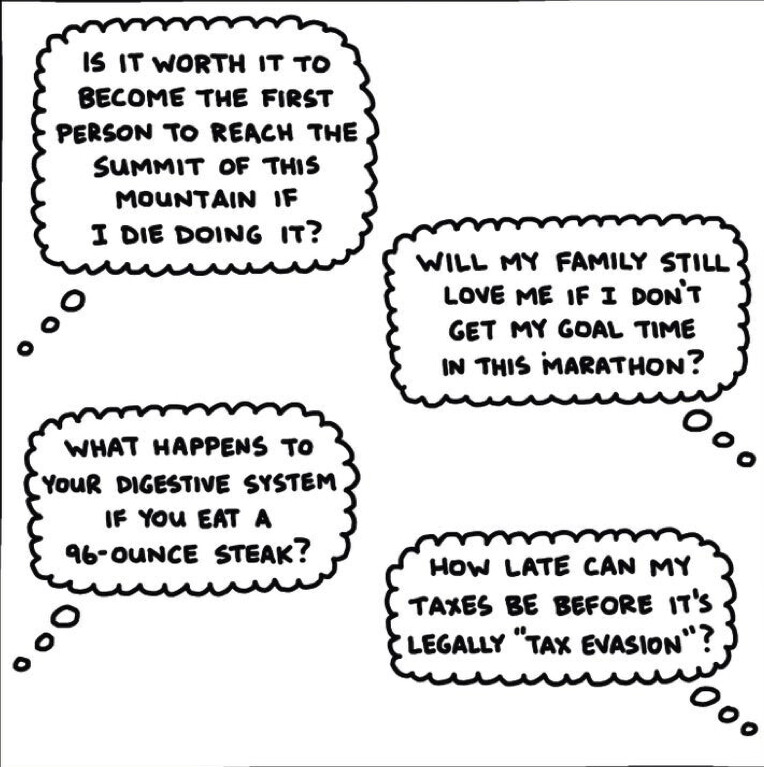
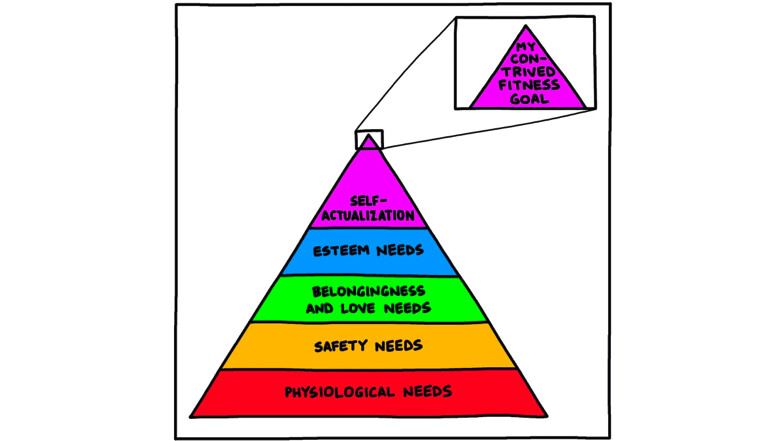
Even though I’d have a hard time convincing anyone it was “necessary,” in the sense of Maslow’s Hierarchy of Needs.Every year, human beings such as myself and yourself take part in an ancient ritual going back at least dozens of years: We decide how we are going to become a different person than we were the year before.
Sometimes we become completely different people, finally going to therapy, or deleting all of our social media accounts, or deciding to adopt the extensive and possibly unsustainable morning routine of a person who is an influencer on LinkedIn. Sometimes we just become a slightly different person, by committing to being on time, drinking more water, or meditating for one minute every day.
This probably sounds familiar. You may know it as a “new year’s resolution,” which is a common manifestation of this sort of idea, and also helpful in selling gym memberships. New year’s resolutions work for some people, but I have never had much success with them. Usually I think more along the lines of “what can I do that would make this year interesting/different from previous years?” Which I think is a good place to start, as opposed to “What’s wrong with me that I can attempt to fix or improve this year?” (If you’re asking yourself that same question, let me just say that you’re probably doing great, and at least a few people probably love you just the way you are. But yeah, we could all drink more water and eat more vegetables.)A few years back, a friend of mine mentioned he was going to try to log half a million vertical feet biking and hiking, and I don’t remember if he ended up getting it done, but I think he was probably inspired by a guy named Greg Hill who climbed and skied two million vertical feet in a year in 2010, and Greg Hill was probably inspired by himself, Greg Hill, skiing one million vertical feet in a year in 2005. I’m no Greg Hill. But what about 200,000 feet of ascent in a year? Certainly more doable by a middle-aged dad with a day job? That’s a little under 4,000 feet per week.
So I decided on that. I did a few backcountry ski laps at our local hill, just under 2,000 feet per lap, and hiked/ran up steep trails a couple times a week, trying to log a few hundred feet here or there. If Jay was awake and we had time between naps, I’d put him in the baby carrier backpack and chug up a trail for a few minutes or an hour, the dad version of a weighted training vest. I signed up for a steep 50K trail race, the Tiger Claw, which would get me almost 9,000 feet of climbing in one day, a big chunk.
Then in mid-May, my young friend Torrey, who has not been to my house recently to see my daily life trying to be a present and helpful dad, husband, self-employed artist and writer, said, “200,000 feet? I think you could do 300,000 easy.”
I thanked him for the encouragement by replying, “Fuck you,” and then we argued for a few minutes about who would buy dinner.
And then of course I started doing the math, which really amounted to a big question, How do I want to live my life this year, which is really a series of smaller questions:We’re lucky, as human beings, to have the time and resources to come up with ideas we refer to as “dreams,” and then spend time and resources pursuing those.
Some people put a lot of time and resources into one dream, like thru-hiking the Pacific Crest Trail, or climbing a big mountain halfway across the world, or completing an Ironman triathlon.Since I am a coward, I often tend to shy away from big goals with a high chance of failure, and instead choose to pursue goals with longer timelines, in order to have some flexibility. A bad week of weather can derail a big mountain summit attempt, and an injury can derail a plan to qualify for the Boston Marathon (I guess so could gastrointestinal distress on race day), but an annual goal of a bunch of vertical feet can withstand some bad weather or minor injuries during the year. Or, in my case, catching every communicable disease Jay brought home from daycare in his first six months of attendance, which included something like six colds, and norovirus or something similarly explosive and miserable.
Even with a week off here and there, I kept chugging along. I started a Strava club called 100 Grand, because I thought other people might think it was fun to try to log 100,000 feet of climbing, or 200,000 feet, or 500,000 feet, or whatever, depending on where they lived and how much time they had to devote to it. I know not everyone lives in a mountainous area, or even a hilly place, but I also knew about this group of people in Iowa and Illinois who race to see who can log 25,000 feet of vert the fastest (and in the smallest amount of horizontal distance) every December. I mean, look at this spreadsheet:Almost 2,000 people signed up for the 100 Grand Strava club, despite it launching in the middle of the year, and I’m not sure how much it motivated people, but I’m going to do it again in 2024. As soon as I finish mailing out stickers to everyone who clocked 100K or more in 2023.
As I rolled over 200,000 feet in September, and then 250,000 feet (in early October), I started to reflect on how the 300,000-foot number had changed my year of running. I have never been one to pay attention to my per-mile pace, but it went completely out the window this year, since a typical run for me looked like this:Mt. Sentinel is essentially a straight line two miles from my house and roughly 2000 vertical feet higher than my front door*, so I defaulted to it often this year. I stood on the summit 47 times, often enough that it started to feel quite ridiculous, but also a sort of home. Which is probably how my dad feels about certain holes on his home golf course, or how my brother feels about his favorite fishing spots.Every time I got home from a run, I’d check my yearly total on Strava as it ticked upward—except on the rare days I did a flat run, when I was short on time or had to run Jay to or from day care in the jogging stroller.
Eventually, I had a little less than 2,000 feet to go. Unless something crazy happened, I’d just need to get to the summit of Mt. Sentinel one more time and I could stop obsessing about it. My friend Forest had offered to go with me, but also said he understood if I wanted to go up alone. I decided to keep this one to myself, microspikes on my shoes for the icy sections, trekking poles as insurance to keep myself upright.
The last climb up the steep trail on the south ridge seemed like it was taking forever, and I watched several paragliders take off from near the top, a surprise sunny December day. I jogged through the snowy forest between the south and north summits, and then started the steep hike up the final 100 feet to the top. A figure in an orange jacket was starting down from the summit, headed my way.
The person stopped on the trail when they saw me, and without being able to see quite that far, I knew it was Forest. He started clapping, and then went back to the summit with me. He asked if I wanted to have the top to myself, to process it a little bit, and I said Nah, it’s just the last few feet of my dumb goal for the year. Which was true.
The closer I got to finishing, the more ridiculous it felt, and as much as I’d like to have had some epiphany about life, I know sometimes you just need a new motivation to get out the door and experience something, even if you end up on the same mountaintop *checks notes* 47 times. But as ridiculous as it was, I still followed through with it, which has some sort of meaning, maybe.
You don’t need to go far these days to find inspirational quotes about pursuing your goals, and I think everyone is looking for something different. The older I get, the more I think about a line from the late, great, philosopher and restaurateur Kenny Shopsin, in the 2004 documentary I Like Killing Flies:
by Outside Online
Login to leave a comment
The Iditarod Is Embroiled in a Controversy Over Moose Guts
Officials with dogsledding’s biggest race say a star musher broke the rules. His infraction: improper removal of moose innards.
What’s the weirdest rule in endurance sports? A few come to mind:
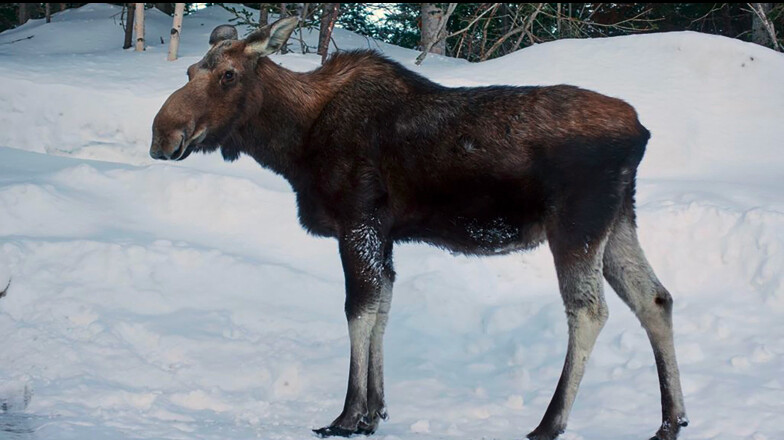
Regulations governing the New York City Marathon explicitly forbid runners from pooping on the pavement at the starting line. Article 7.01-G of the Ironman Triathlon rulebook prohibits nakedness in transition areas. And don’t get me started on the wackadoo bylaws enforced by pro cycling’s governing body, the Union Cycliste International, which govern the minutiae of oh so many aspects of bike racing, from the height of an athlete’s socks to the size and shape of his or her ugly helmet.
But in all my time covering professional outdoor competitions, I’ve never come across anything like Rule 34 in the regulations governing Alaska’s Iditarod, the Tour de France of dogsledding. The law, titled “Killing of Game Animals,” is below:
In the event that an edible big game animal, i.e., moose, caribou, buffalo, is killed in defense of life or property, the musher must gut the animal and report the incident to a race official at the next checkpoint. Following teams must help gut the animal when possible. No teams may pass until the animal has been gutted and the musher killing the animal has proceeded. Any other animal killed in defense of life or property must be reported to a race official, but need not be gutted.
Yes, the Iditarod requires you to disembowel the big mammals that you kill along the way. Not only that—officials will scrutinize the efficacy of your job gutting the animal in question.
At the moment, there’s a brewing controversy about the Iditarod’s Rule 34—specifically, whether or not a star athlete gutted a moose the right way.
The race kicked off this past Sunday, March 3, and mushers embarked on the 1,000-mile trip from the town of Willow, near Anchorage, to Nome, near the arctic circle. On Monday, news circulated that five-time winner Dallas Seavey had a terrifying encounter with a moose shortly after leaving a checkpoint in the town of Skwentna. Attacks by moose and other large mammals are rare, but do occasionally happen in sled dog racing. In 2022, a musher named Bridgrett Watkins was trampled by a bull just days before her rookie start in the Iditarod. In 1985, Susan Butcher was attacked while leading the Iditarod—the animal killed two of her dogs as she attempted to fight it off with an axe.
According to a report by the Associated Press, Seavey said the moose attacked his team at about 1:30 A.M. on Monday morning. It became entangled in his harness and sled and injured a female dog named Faloo so badly that she eventually had to be transported back to Anchorage. Seavey pulled out a handgun and shot the moose dead. “It fell on my sled, it was sprawled on the trail,” Seavey told an Iditarod Insider television crew. “I gutted it the best I could, but it was ugly.”
That’s where things get interesting. On Wednesday, March 6, the Iditarod announced that its panel of judges had issued Seavey a two-hour time penalty—a massive time gap in a race that’s sometimes decided by an hour or two. The reason for the sanction? Seavey did a substandard job of removing the animal’s innards. The race clarified exactly what gutting entails. “By definition, gutting: taking out the intestines and other internal organs of (a fish or other animal) before cooking it,” the race said in a public statement.
According to the investigation, Seavey spent about ten minutes at the kill site before mushing his dogs 11 miles to the next checkpoint, where he informed officials about the moose kill and also dropped off his injured dog (according to a Facebook post, Faloo is OK!). A race communique said officials eventually retrieved the moose carcass, properly processed it, and will distribute the meat as food.
Seavey’s kennel published a diplomatic statement on Facebook after the ruling: “As members of Team Dallas we are thankful for the guidelines and officials who make this race possible. Each race is riddled with its own set of challenges and part of being a great musher is being able to navigate them.”
Back to this unorthodox rule. I think most normal people can understand the need to ban runners from pooping on the asphalt, and even to prohibit triathletes from displaying their uncovered nether regions during a race. But what’s the deal with cutting open a dead animal in sled dog racing? An Iditarod employee who answered the race’s general phone line reminded me that the Rule 34 simply reflects Alaska state law. I hunted around the state’s rules and regulations and came across Statue 16.30.010, titled Wanton Waste of Big Game Animals and Wild Fowl.
It is a class A misdemeanor for a person who kills a big game animal or a species of wild fowl to fail intentionally, knowingly, recklessly, or with criminal negligence to salvage for human consumption the edible meat of the animal or fowl.
Turns out the weirdest rule in endurance sports is an extension of a pragmatic law. A full-grown moose can weigh up to 1,600 pounds, which can feed a lot of human beings. Improperly handling the intestines from one can spoil the meat. And the Iditarod employee I spoke to emphatically said that removing the entrails from an animal of that size takes much longer than ten minutes.
Whether or not the two-hour penalty keeps Seavey from attaining win number six is yet to be seen. The two-hour penalty will be added to Seavey’s mandatory 24-hour rest later in the race. On Wednesday, he passed the Idtarod’s official halfway point in Cripple, Alaska in first place, nursing a 47-minute lead on Nicolas Petit of Big Lake, Alaska. Seavey needs to gain an hour and 14 minutes between Cripple and Nome to win.
by Outside Online
Login to leave a comment
Jim Walmsley, Mathieu Blanchard will return to UTMB in 2024
2023 UTMB champion Jim Walmsley and 2022 second-place finisher Mathieu Blanchard have confirmed they will appear at this year’s Ultra-Trail du Mont-Blanc (UTMB) final, which takes place in Chamonix, France on Aug. 30, according to a report by iRunFar. A number of other ultratrail elites have also been announced, including the U.K.’s Tom Evans, who finished third in 2022 and who won Western States 100 in 2023, and Canada’s Christian Meier, the former pro cyclist who won the 145-km TDS race last year.
On the women’s side, Canada’s Marianne Hogan (who finished second in 2022) is confirmed, as are 2022 champion Katie Schide of the U.S., France’s Claire Bannwarth and New Zealand’s Ruth Croft (who won Western States in 2022). (Three-time UTMB champion and course record holder Courtney Dauwalter does not appear on the list.)
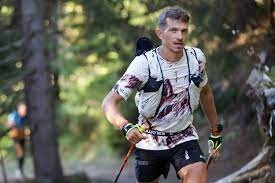
Four-time champion Kilian Jornet and 2023 second-place finisher Zach Miller will also not be returning. After the October, 2023 announcement by UTMB and its minority partner, the Ironman Group, of a new race in Whistler, B.C. in 2024, and the Dec. 1 announcement that UTMB livestream announcer Corrine Malcolm had been fired, the two publicly questioned the organization’s decisions and its treatment of athletes. There was talk of a boycott, though Jornet and Miller dispute this; in the wake of all of this, regular discussions between UTMB and the Pro Trail Runners Association (PTRA), of which Jornet is a founding member, became more frequent, with a view to smoothing relations between athletes and the race.
Walmsley moved to France for two years to hone his mountain-running skills before finally winning UTMB on his fifth try in 2023 (he Walmsley first ran UTMB in 2017, finishing fifth; he DNF’d in 2018 and again in 2021, then finished fourth in 2022). Blanchard, who has returned to France after living in Montreal for a few years (and taking out Canadian citizenship), finished fourth last year after following Jornet onto the podium in 2022. Hogan has been dealing with injuries for much of the last year and a half since her podium finish in 2022.
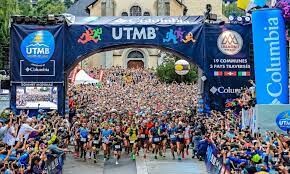
by Anne Francis
Login to leave a comment
North Face Ultra Trail du Tour du Mont-Blanc
Mountain race, with numerous passages in high altitude (>2500m), in difficult weather conditions (night, wind, cold, rain or snow), that needs a very good training, adapted equipment and a real capacity of personal autonomy. It is 6:00pm and we are more or less 2300 people sharing the same dream carefully prepared over many months. Despite the incredible difficulty, we feel...
more...Las Vegas to welcome the world's largest indoor track
Las Vegas is about to get one of the most impressive indoor sports venues in the world. The Z Athlete Village, which is planned to span more than 390,000 square feet (3.6 hectares), will be the largest indoor track and field arena ever built, and will have track athletes and fans alike clamouring for a chance to visit the facility.
According to the website, the new arena will offer a wealth of amenities that rival any other sports facility in the world, including a 400-metre indoor competition-ready track, a 200m Mondo hydraulic banked track, an outdoor turf training area, a recovery centre featuring cryotherapy and massage, four separate high jump pits, four pole vault pits, up to four shot put and weight throw areas and a cutting-edge indoor simulator featuring AI technology to measure athlete biomechanics.


In addition to being the largest indoor track and field arena ever constructed, the facility will also be home to the Indoor Running Track and Field Events League, with more than 48 weekends of track and field running and other sports events each year. The venue will welcome more than 192,000 participants and visitors annually, and league participation will provide athletes with the opportunity to compete in five meets throughout each 10-week season, including middle school, youth, adult, high school, collegiate and professional competitions.
The indoor running programs offered at the facility will provide runners of all ages with opportunities to train and compete in distances ranging from one mile to 5,000m. Training and competitions will be open to athletes competing in Ironman and special distance relay-running events. Participants in the RunRite Challenge will have the chance to win a share of more than $1,000,000 annually in cash, college scholarships and other prizes. The facility will also offer other services such as camps and clinics.
Finally, it’s not just sport that this new facility will provide. It will be part of the Z Athlete Village, a sports wellness resort also featuring other facilities such as the Villas, where visitors can stay for multiple days, the Indoor Courts for volleyball, basketball, gymnastics and other sports, and the Natatorium for swimming competitions.
The facility isn’t set to open for another two and a half years, but runners everywhere are already dreaming of their first visit. In true Las Vegas style, when the Z Athlete Village is finally completed, it will likely eclipse every other world-class track and field venue out there.
by Running Magazine
Login to leave a comment
5 creative ways to unlock your running potential
Every runner seeks the elusive formula for peak performance, and while traditional strategies play a vital role, exploring unconventional avenues can unearth untapped potential. Performance coaches, authors and the hosts of a new podcast called Farewell, Brad Stulberg and Steve Magness, recently shared some innovative ways to tap into your best performance.
These methods, adapted from the training of legendary ultrarunner Courtney Dauwalter, Kona Ironman champ Chelsea Sodaro, and Canadian Olympic champ decathlete Damian Warner, can help you build an arsenal of tools that will allow you to become your best running self, whatever your goals may be. Look Embrace curiosity over fear

In the premiere episode of Farewell, Stulberg interviews ultrarunning GOAT Dauwaulter, whose 2023 season saw her winning the triple crown of ultramarathons (UTMB, Western States 100 and Hardrock 100). Dauwaulter is known for her curiosity-based approach to racing and says that whenever she works her way through a unique challenge, she puts it into her “filing cabinet” of experiences built through more than a decade of running ultras.Consider approaching challenges with curiosity rather than fear.
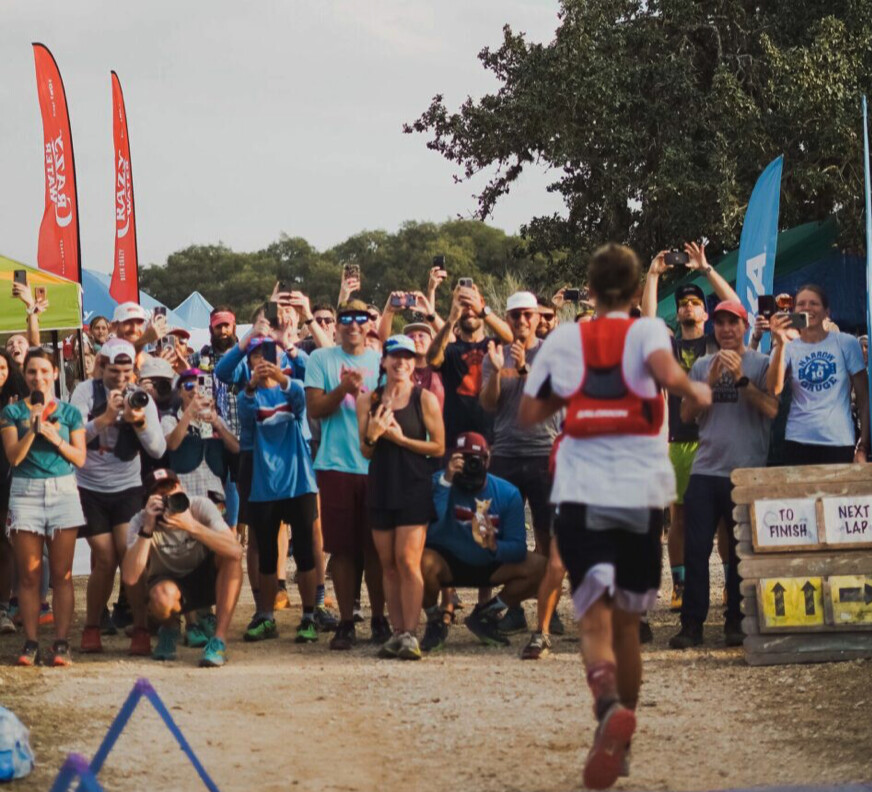
Dauwaulter’s journey started with curiosity-driven road marathons, leading her to conquer ultramarathons and achieve astonishing feats. When faced with a daunting task, adopt a mindset of exploration, saying to yourself: “let’s just see what happens,” rather than feeling like you must succeed at all costs. The unexpected outcomes might surprise you and expand your perceived limits.Use the power of “yes”
Chelsea Sodaro, the Kona Ironman world champ winner, draws inspiration from a mantra the athlete and her husband taught their daughter when she was going through a “no” phase—“yes, yes, yes.” This simple yet potent affirmation becomes a guiding force during challenging moments. Applying this mantra encourages a commitment to embrace difficulties and lean into the hard aspects of training. The next time you encounter a tough run or race, channel the spirit of “yes, yes, yes” to shift from resistance to resilience.Less is more: subtract to succeed
Stulberg suggests challenging the instinct to add more when faced with a hurdle. Research shows that humans tend to be “adders,” inclined to incorporate new strategies, rather than simply subtracting impediments. When striving for behaviour change, consider subtracting obstacles instead of seeking additional solutions. Reflect on what you can eliminate or modify to clear the path to success, allowing simplicity to fuel progress.Consistency trumps perfect practice
Through several decades of elite competition, Canadian Olympic champion decathlete Damian Warner has learned the importance of consistency over perfection. His coach’s mantra—that there’s no such thing as a bad practice—highlights the importance of routine, unexceptional training days. Warner’s gold medal-winning experience underscores the power of sustained, consistent effort, even when conditions are less than ideal. Recognize that excellence is often built through everyday dedication rather than sporadic extraordinary performances.You are not your thoughts
In overcoming mental health challenges like OCD and anxiety, Sodaro shares a unique strategy—naming her brain (she calls hers Regina, after the character in the movie Mean Girls). By personifying intrusive thoughts, she creates distance between herself and her mental struggles. Runners grappling with mental hurdles can apply this concept, acknowledging that their thoughts don’t define them. Naming and dismissing unwanted thoughts can provide mental clarity and resilience during demanding runs.Ultrarunner Adam Campbell’s tips to master your mid-race mindset” — Canadian Running Magazine
View on the original site.
In your pursuit of optimal running performance, integrating these unconventional approaches can inject a fresh perspective, foster growth, and aid in unlocking your true potential. Remember, innovation often lies in the willingness to explore the uncharted paths of curiosity, affirmation, simplicity, consistency and mental resilience.
by Running Magazine
Login to leave a comment
Five creative ways to unlock your running potential
Every runner seeks the elusive formula for peak performance, and while traditional strategies play a vital role, exploring unconventional avenues can unearth untapped potential. Performance coaches, authors and the hosts of a new podcast called Farewell, Brad Stulberg and Steve Magness, recently shared some innovative ways to tap into your best performance.
These methods, adapted from the training of legendary ultrarunner Courtney Dauwalter, Kona Ironman champ Chelsea Sodaro, and Canadian Olympic champ decathlete Damian Warner, can help you build an arsenal of tools that will allow you to become your best running self, whatever your goals may be.
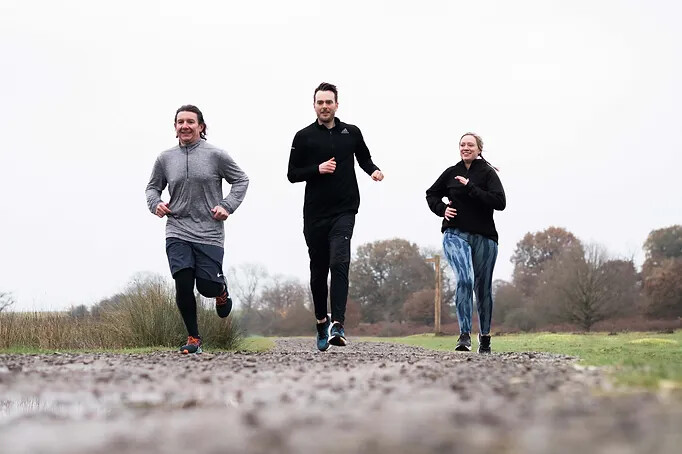
1.- Embrace curiosity over fear
In the premiere episode of Farewell, Stulberg interviews ultrarunning GOAT Dauwaulter, whose 2023 season saw her winning the triple crown of ultramarathons (UTMB, Western States 100 and Hardrock 100). Dauwaulter is known for her curiosity-based approach to racing and says that whenever she works her way through a unique challenge, she puts it into her “filing cabinet” of experiences built through more than a decade of running ultras.
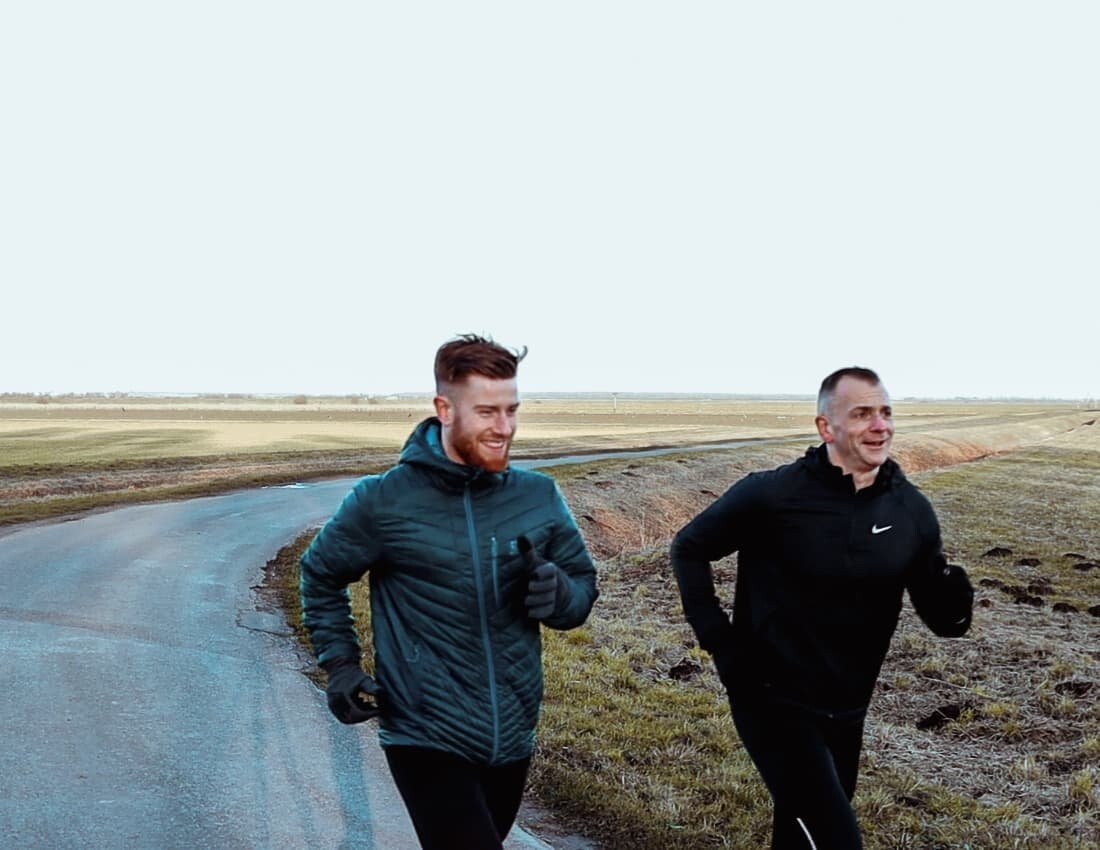
Consider approaching challenges with curiosity rather than fear. Dauwaulter’s journey started with curiosity-driven road marathons, leading her to conquer ultramarathons and achieve astonishing feats. When faced with a daunting task, adopt a mindset of exploration, saying to yourself: “let’s just see what happens,” rather than feeling like you must succeed at all costs. The unexpected outcomes might surprise you and expand your perceived limits.
2.- Use the power of “yes”
Chelsea Sodaro, the Kona Ironman world champ winner, draws inspiration from a mantra the athlete and her husband taught their daughter when she was going through a “no” phase—“yes, yes, yes.” This simple yet potent affirmation becomes a guiding force during challenging moments. Applying this mantra encourages a commitment to embrace difficulties and lean into the hard aspects of training. The next time you encounter a tough run or race, channel the spirit of “yes, yes, yes” to shift from resistance to resilience.
3.- Less is more: subtract to succeed
Stulberg suggests challenging the instinct to add more when faced with a hurdle. Research shows that humans tend to be “adders,” inclined to incorporate new strategies, rather than simply subtracting impediments. When striving for behaviour change, consider subtracting obstacles instead of seeking additional solutions. Reflect on what you can eliminate or modify to clear the path to success, allowing simplicity to fuel progress.
4.- Consistency trumps perfect practice
Through several decades of elite competition, Canadian Olympic champion decathlete Damian Warner has learned the importance of consistency over perfection. His coach’s mantra—that there’s no such thing as a bad practice—highlights the importance of routine, unexceptional training days. Warner’s gold medal-winning experience underscores the power of sustained, consistent effort, even when conditions are less than ideal. Recognize that excellence is often built through everyday dedication rather than sporadic extraordinary performances.
5.- You are not your thoughts
In overcoming mental health challenges like OCD and anxiety, Sodaro shares a unique strategy—naming her brain (she calls hers Regina, after the character in the movie Mean Girls). By personifying intrusive thoughts, she creates distance between herself and her mental struggles. Runners grappling with mental hurdles can apply this concept, acknowledging that their thoughts don’t define them. Naming and dismissing unwanted thoughts can provide mental clarity and resilience during demanding runs.
In your pursuit of optimal running performance, integrating these unconventional approaches can inject a fresh perspective, foster growth, and aid in unlocking your true potential. Remember, innovation often lies in the willingness to explore the uncharted paths of curiosity, affirmation, simplicity, consistency and mental resilience.
by Keeley Milne
Login to leave a comment
U.S. Secretary of Transportation Pete Buttigieg Treasures Time on His Feet
He has toddler twins and a very big job, but the cabinet member makes running a priority.
When you’re a “transportation guy,” as Pete Buttigieg calls himself, there’s no better place to run than Gravelly Point Park, in Arlington, Virginia, under the flight path of planes on final approach at Reagan Washington National Airport.
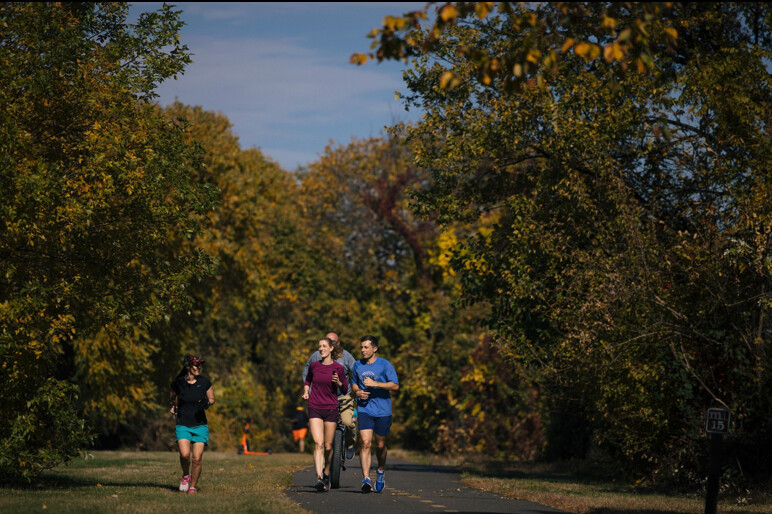
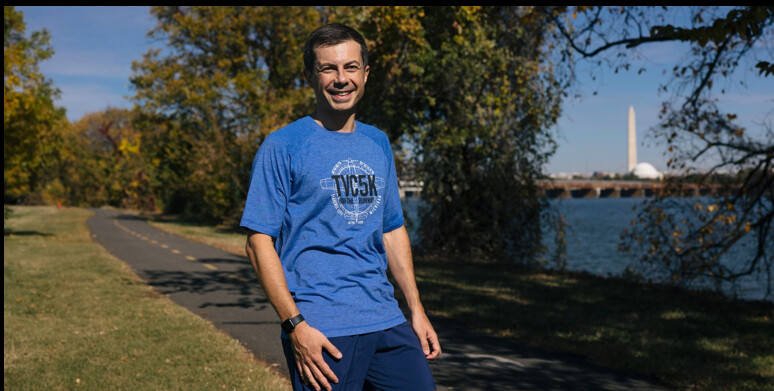
“It feels as though the planes are trying to land right between your eyes, and then you watch them go over your head,” said Buttigieg, the 41-year-old U.S. Secretary of Transportation. “It’s just really fun and motivating.”
Buttigieg—who in 2021 was sworn in as the youngest member of President Biden’s Cabinet—is (with all respect due to a government leader) a bit of a dork when it comes to planes.
“There it is!” he said, as a United Airbus passed close overhead. “You hear that swizzling noise in the air? That’s wake turbulence!”
“Turbulent” is a word Buttigieg uses regularly, although his political career has been mostly smooth sailing. In 2011, he was elected mayor of his hometown of South Bend, Indiana. Eight years later, he entered the Democratic presidential race as a longshot candidate and won the Iowa caucuses. He ended his bid in March 2020 and endorsed the man who’s now his boss, Joe Biden.
Recently Buttigieg squeezed a midmorning run with this reporter into a typically hectic day at the helm of a 53,000-employee department: getting his two-year-old twins fed, dressed, and off to daycare; meeting with the German minister of transportation; welcoming the newly confirmed FAA administrator to his post; meeting with colleagues at the Commerce Department; talking permitting processes at the White House; and then attending a state dinner for the Prime Minister of Australia. Wardrobe requirements included a suit, running clothes, and a tuxedo.
On days like that, running is a source of satisfaction and stress relief. As a cabinet secretary, Buttigieg is required to train with security; his detail trails behind him on a bike while he runs, or waits by the water’s edge while he swims. (When members of Buttigieg’s open-water swimming group tried to correct a hitch in the Secretary’s stroke, his security team protested, “Don’t fix that! It’s the only way we know which one is him!”)
For Buttigieg, knowing Secret Service members’ jobs revolve around his workout schedule is the ultimate in accountability. “It’s definitely kept me from hitting the snooze button more than once,” he said.
Apart from this interview, conducted at sub-10-minute-mile pace, and the occasional bit of bipartisan “jogging diplomacy,” as he calls runs with members of Congress, Buttigieg tends not to mix work with training. He runs about five days a week, usually early in the morning, when most people are too focused on their own workouts to recognize him.
“I get spotted a little bit, but not enough to disrupt my training,” Buttigieg said. “Once in a while somebody wants to take a selfie when I’m mid-run, and I’m never sure how to handle that. Usually I just do it.”
Humble run beginnings
As a teenager, Buttigieg did not take to running naturally.
“It’s difficult to overstate how unathletic I was,” said Buttigieg, who joined the track and cross-country teams at St. Joseph’s High School in South Bend. “I was the kid who was so far behind at a cross-country meet that I might take a wrong turn because there was nobody left on the course. So it meant a lot to me, years later, when I got to be speedier.”
His progression from back-of-the-packer to one of the fittest members of the executive branch took years. As an undergrad at Harvard, Buttigieg would run on the treadmill or along the Charles River, but never more than three to four miles. At Oxford, where he was a Rhodes Scholar, Buttigieg added rowing to his endurance repertoire. By his mid 20s, running had become a “comfortable habit”—and a gratifying one.
“There’s a level of coordination that I may never have to be good at basketball,” he said. “But running—the more you do it, the more rewarding it becomes.”
When Buttigieg joined the U.S. Naval Reserve in 2009, he excelled at the 1.5-mile run that was part of the requisite fitness test, getting close to a perfect score of 9 minutes flat.
“For a while I was the fastest guy in my unit, which felt great because I was always the slowest guy in my high school,” he said.
In 2014, during a seven-month deployment as a counterintelligence officer in Afghanistan, Buttigieg ran a half marathon at the U.S. base in Bagram. In addition to the typical instructions about course markers and fluid stations, the pre-race briefing included warnings to participants about the potential for rocket attacks. He ran his current PR of 1:42.
A triathlon two years in the making
Buttigieg continued to run throughout his mayorship of South Bend and his 2019–20 presidential run. In 2021, his first year as transportation secretary, he was training for a half-Ironman in Michigan when he and husband, Chasten, adopted premature newborn twins, Penelope and Gus. Suddenly, instead of miles, Buttigieg was counting ounces of formula. Long training runs were scrapped during sleepless nights and Gus’s hospitalization with RSV.
It took until this year before Buttigieg could try another tri. Preparing for a half-Ironman (1.2-mile swim, 56-mile bike, 13.1-mile run) is a major undertaking for anyone. But when you’ve got 2-year-olds, Buttigieg said, “physically redirecting and restraining them is a huge part of parenting.” He followed a 16-week training plan he got online and relied on Chasten to hold down the fort with their kids on weekend mornings while he did long runs or four-hour bike rides.
“I would try to make up for it later in the day, but there’s no way I could’ve done this without Chasten being very supportive,” Buttigieg said. “While there’s an ethos of self-discovery and self-reliance in endurance sports, it really does bring out how dependent you can be on others to support you.”
During the race, held in mid-September in Michigan, Chasten and the kids hung out at a nearby playground—“we were playing with fire when it came to naptime”—and were at the finish line when “Papa” crossed in 6 hours and 31 minutes, largely on the strength of a 2:05 half marathon leg.
“It was pretty thrilling, although there was a fair amount of pain,” Buttigieg said. “But the kids really got into it, and that’s part of why you do this, to be in good health for the people you love.”
Buttigieg said he was wrecked for a couple of days post-race, but he now hopes to take his fitness out for an occasional spin—perhaps a run at a half marathon PR. But he won’t undertake another 6-hour race anytime soon.
“I don’t think I can do something this time intensive again while I’ve got this job,” he said. “It’s too much to ask of Chasten.”
A runner’s perspective on infrastructure
After he averaged about 25 miles per week during his triathlon buildup, now it’s back to shorter workouts for Buttigieg. And with more than 100 miles of traffic-separated pathways up and down the Potomac, the nation’s capital is an endurance athlete’s paradise. “There are few better places to run in the whole world, I would argue,” he said.
The Washington area represents the kind of well-connected, accessible and pedestrian-friendly infrastructure the Department of Transportation wants to build more of through its National Roadway Safety program. For Buttigieg, helping communities around the country build separate paths for running and biking is about a population’s safety as much as its fitness.
“I worry sometimes that a path like this is viewed as purely ornamental,” he said. “I would argue that the recreational case is pretty compelling, but also fundamentally, safety is on the line. The very layout of our roads can either incentivize or discourage active transportation, and they can either make it safer or more dangerous.”
Buttigieg formed a new perspective on road design in 2016, when he was part of a group of U.S. mayors who traveled to Denmark. Buttigieg saw 1970s-era photos of Copenhagen, which now rivals Amsterdam for highest rate of bike commuting, and recognized the look of a lot of car-dependent American cities.
“That’s when the lightbulb went off,” he said. “It’s not some immutable Nordic cultural characteristic that changed things. It was some conscious decisions made by planners to make it more attractive and safer. By doing that, they reduced congestion, they reduced pollution, and over the long run, they increased safety.”
Buttigieg has a lot of priorities beyond encouraging active transportation. He wants to train more air traffic controllers. Strengthen HazMat requirements for railroads. Build more roads and bridges. Budget cuts or a government shutdown would make it harder to accomplish those projects.
When political roadblocks lead to frustration, he works through it with exercise. He is a transportation secretary who gets to where he needs to be, psychologically and physically, by putting one foot in front of the other.
“Especially in the early morning when the dawn’s just breaking over the river here, it’s hard not to feel even in our troubled Washington that there’s some magnificence to our nation’s capital,” Buttigieg said. “You count your blessings after a run, if not always during one.”
by Runner’s World
Login to leave a comment
Australian ultrarunner makes history by racing UTMB and Ironman World champs
Ultrarunner Lucy Bartholomew made running and triathlon history on Sunday, becoming only the second woman ever to finish the 171-kilometre Ultra-Trail du Mont-Blanc (UTMB) as well as the Ironman World Championships in the same year.
Bartholomew ran remarkably well at both events, taking a tenth-place finish at UTMB in 27:39:22, and completing what was only her second Ironman in 10:43:41, with a 3:31 marathon time.
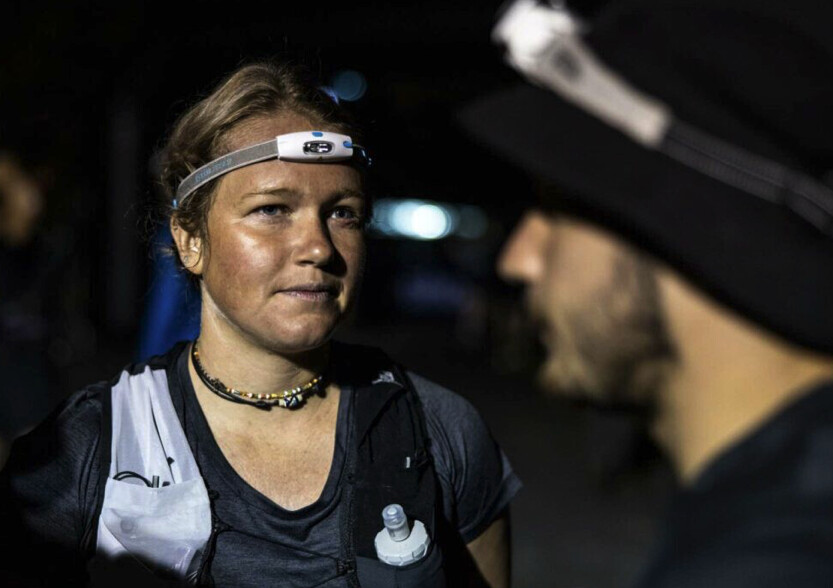
The double–nearly 400 kilometres of challenging racing–has only been conquered by one woman before Bartholomew: Ireland’s Diana Hogan-Murphy, in 2014. Bartholomew is also the fastest person of any gender to have completed both events in the same year.Bartholomew shot to fame in the ultrarunning world in 2018, when she was the third female at the Western States 100. The runner shared on social media that she lost some of the joy in racing in the years following her WSER podium, and after her 2022 race ended in a DNF, she wasn’t sure if she’d race 100 miles again.
“You show up (almost) every day to run so that you can run even more on the race day, finish and not be able to run, only to want to run, and then run to aid in the recovering of the running and to prepare for more running,” Bartholomew explained. “To take myself out of this cycle I decided to tick a bucket list idea to do an IRONMAN triathlon. It was a ‘one day, someday’ objective that I pulled forward to help pull me out of feeling stuck.”Bartholomew’s first Ironman, in Western Australia in December 2022, qualified her for the Kona World Championship event in Hawaii.
While the runner had only planned to complete one Ironman, she felt she couldn’t miss the opportunity to race in Hawaii. “Not being one who steps down from a challenge, it seemed right to go one more,” she said.
“I’ve swum, biked and run my way to fantastic recovery from UTMB and moderate triathlon fitness for Kona,” Bartholomew said pre-race. “It was a fun, fine balance to play with these two big events so close to each other.”
by Running Magazine
Login to leave a comment
Viktoria Brown smashes her own 6-day record
Whitby, Ont.’s Viktoria Brown has conquered the multi-day racing scene, and she just keeps getting better. Brown ran a whopping 747 kilometers at the EMU 6-day Race in Hungary, besting her previous Canadian 6-day record of 736 km. Runners competed on an 898.88 meter-long certified road loop that was 100 per cent asphalt.
Brown is well-known for her many multi-day records, and for recently competing at Badwater 135, the scorching ultra in Death Valley, Calif., where she finished fourth.
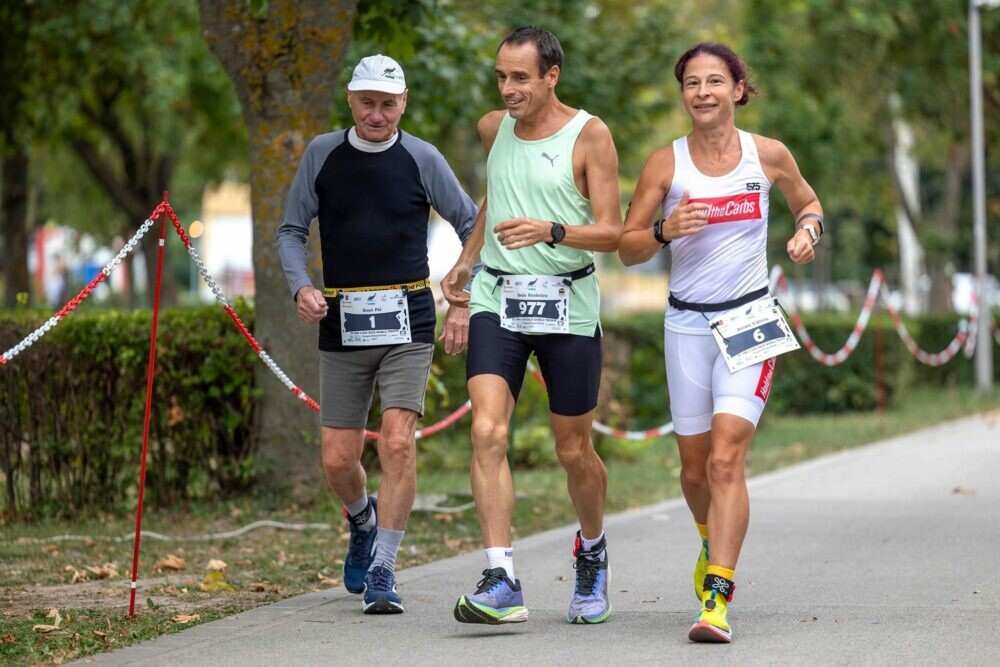
She holds the 48h Canadian record (363 km), and the 72-hour Canadian record (471 km), and was the owner of the 72h WR, recently bested by Danish athlete Stine Rex. She entered EMU having trained minimally, and became ill with salmonella poisoning partway through the event.”My goal at this race was to hit 800 kilometers,” Brown told Canadian Running.
“Only three women have ever done that, and I believe that without the salmonella poisoning, I would have hit it,” she said. “I only ran 56 km on day five, while I ran 110+ km on all other days, including 151 km on day six.”
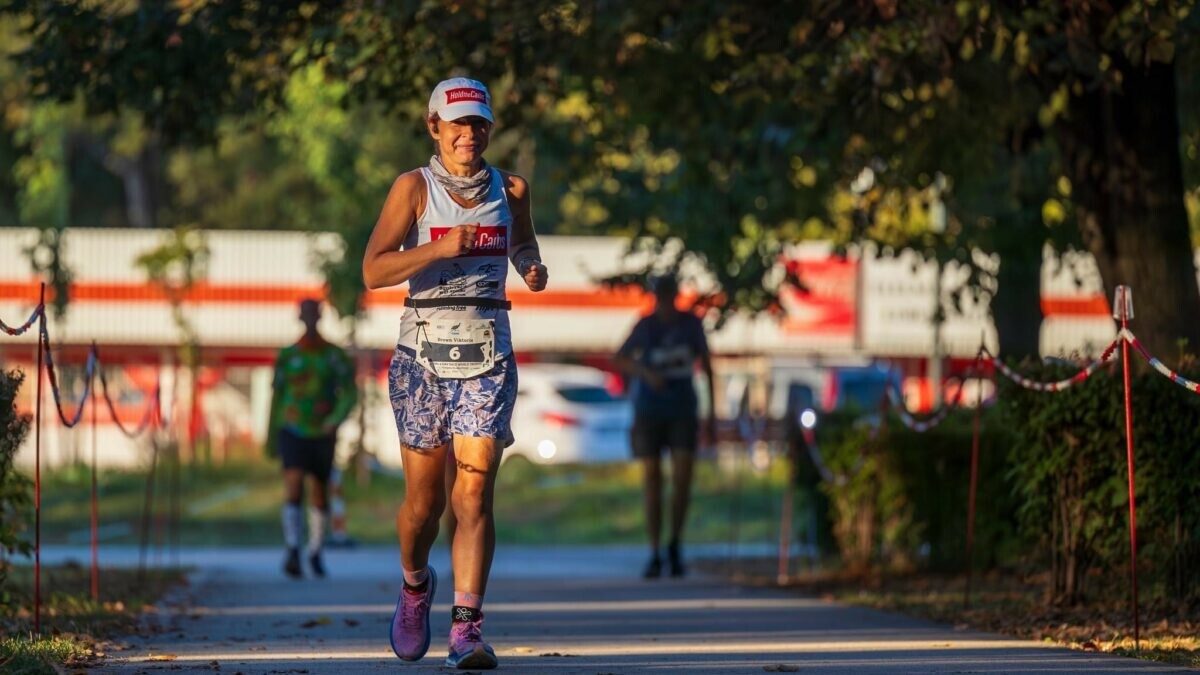
Ultras are often a test in troubleshooting, and this is only magnified by multi-day racing.”Vomiting started at noon on Monday (the start of day five) and went on all day until I went down for sleep around 10 pm,” Brown said. “I got up at 3:30 am, was back on the course at 4 a.m., and ran straight until the race ended, 32 hours later.” Brown says she was extremely lucky to have a medical doctor on her crew, whom she credits with bringing her back from illness.
To combat the salmonella, Brown slept for six and a half hours to reset her body.”I wasn’t throwing up anymore, although my body was completely empty and I still had diarrhea,” she said. “But that meant that five-10 per cent of the intake was absorbed, so we could slowly start to refuel.” Brown had to walk until late afternoon on Tuesday, both because her body was recovering and due to intense heat during the daytime.”By late afternoon I was able to start jogging, then running, and then even running relatively fast by the end.”
Brown says she felt she was unable to train for this race, but her excellent base fitness proved to be enough. “After the 48h World Championship in August (that I won) I had some slight pain under my right knee, so I could only do minimal training,” she explains.”By the time the injury healed, I caught a cold, so then I couldn’t train at all. Maybe being more rested for this race helped more than the training would have,” said Brown.
Post-race, Brown says it’s hard to catch up on sleep, but she has a surprising lack of soreness and no blisters.”My body is in great shape, but my mind will need some serious recovery,” the runner said. “These races are extremely demanding mentally.” Brown will compete next at the Kona Ironman World Championship in Hawaii in October, and later at the 24-hour world championship with Team Canada in Taiwan.
by Keeley Milne
Login to leave a comment
Zdeno Chara Training For The New York City Marathon
With one Boston Marathon already on his resume, former Boston Bruins captain Zdeno Chara is now training to run in the 2023 New York City Marathon on Nov. 5.
Right up until the end of his 24-season NHL career, Chara left his teammates in astonishment at his daily workout regimen, and that discipline and passion to push his body to the limits has not waned.
With one Boston Marathon already on his resume, former Boston Bruins captain Zdeno Chara is now training to run in the 2023 New York City Marathon on Nov. 5.

Right up until the end of his 24-season NHL career, Chara left his teammates in astonishment at his daily workout regimen, and that discipline and passion to push his body to the limits has not waned.
“No,” Chara told The New York Post recently, “I didn’t take any kind of break. I kind of sustained the physical training. I was adding to my running, getting higher mileage, getting higher bike distances. And then at one point, I knew that I would like to talk to somebody who is more experienced and somebody who would be able to put me on maybe more specific programs to reach some of the goals I set for myself. And obviously marathons was one of them. Some triathlons, Ironmans would also be in my vision.”
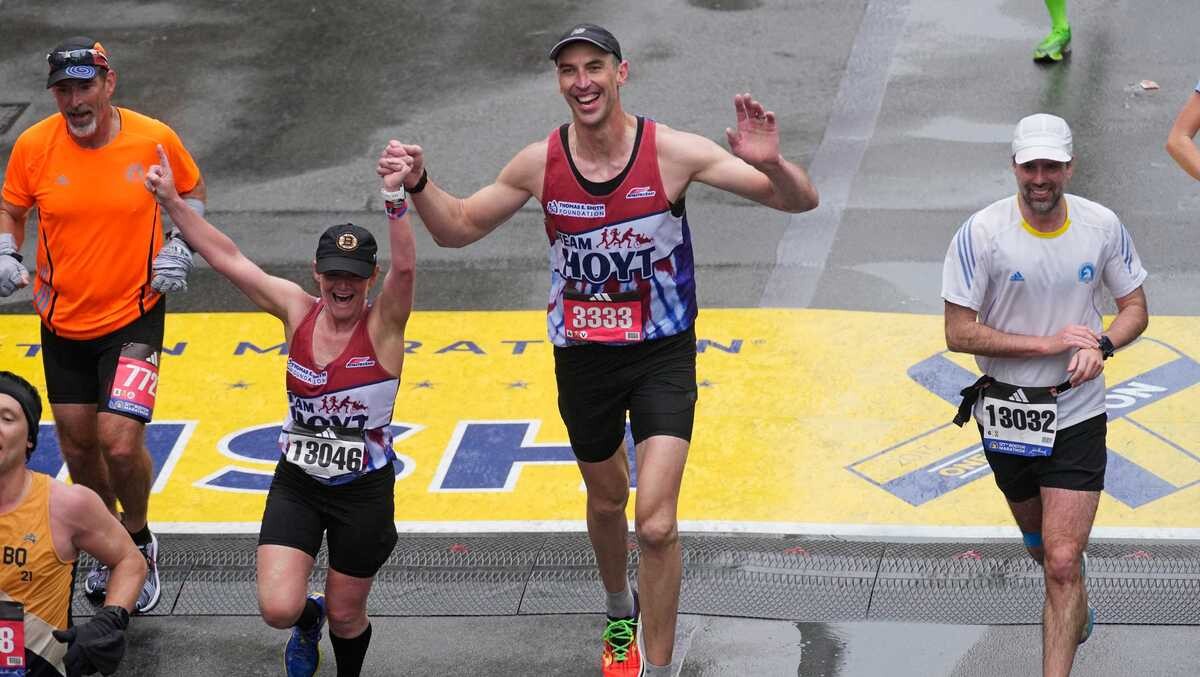
The 6-foot-9, 250-pound future Hockey Hall of Famer finished the Boston Marathon in 3:38.23, and now in November, he’ll run the New York City Marathon in partnership with New Balance. However, the 46-year-old Chara has no plans on stopping there. He told The Post that he also plans on running marathons in Berlin, Tokyo, London, and Chicago.
“Finding the limit,” Chara said. “Sometimes you get into different mindsets and you learn about yourself a lot through these challenges, through these good runs, bad runs. It’s just, I don’t know how to really explain it, but it’s something that it’s teaching you something about yourself. And it’s a very humbling experience.”
Zdeno Chara is also becoming to not just running marathons but to the running community and support surrounding it.
“Being part of racing or being a part of some runs, it’s addictive,” the Boston Bruins legend said. “It’s something that you start and then it becomes something that you’re looking forward to the next one and then you want to be part of the next one. It’s something that draws me in.
You have spread out crowds throughout the races [that] number thousands of people and it’s electrifying. It’s unbelievable energy and it’s exciting. And then once you get to the finish, it’s super, super rewarding.”
by Jimmy Murphy
Login to leave a comment
TCS New York City Marathon
The first New York City Marathon, organized in 1970 by Fred Lebow and Vince Chiappetta, was held entirely in Central Park. Of 127 entrants, only 55 men finished; the sole female entrant dropped out due to illness. Winners were given inexpensive wristwatches and recycled baseball and bowling trophies. The entry fee was $1 and the total event budget...
more...3 Years After a Car Accident Put Him in a Coma, This Runner Finished an Ironman
Now he runs for his young son with an incurable heart disease.Whether it’s one mile or 100 miles, running is my time to reflect, and appreciate every breath, heartbeat, and mile along the journey, and to celebrate the gift of life.
I’ve always enjoyed running and I started competing in 6th grade on the track and field team for my middle school. I loved being a part of a team atmosphere, and as I entered high school, I still wanted to run, but my coaches preferred that I throw shot put and discus because I was doing a lot of strength training and some powerlifting at the time. I enjoyed the throwing events, but had an interest in running over the years, and would ask my coach to put me in a sprint relay or two throughout the season. Outside of track, I also started swimming competitively when I was 15, and when I wasn’t at swim practice, I was usually jogging.
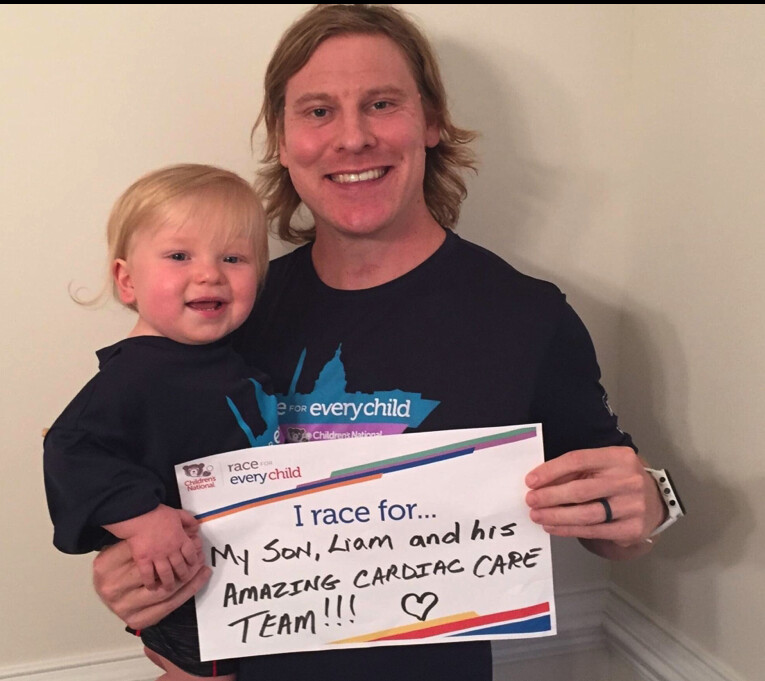
Growing up, I also had a dream of wanting to complete an Ironman triathlon. I saw the Hawaii Ironman on television when I was 5 years old and was inspired by the athleticism and inspirational stories of the athletes.
Unfortunately, one month after I graduated high school in July 2004, I was involved in a near-fatal car accident. The injuries were catastrophic: my heart went across my chest, I sustained shattered ribs, pelvis, left clavicle, and severe nerve damage to my left shoulder. Nearly every major organ in my body was damaged, failed, or lacerated. I also had a concussion from the impact of the crash and experienced 60 percent blood loss.
The EMS and rescue workers who got me out of the vehicle were later given awards for their work. I was then flown by a medevac to the hospital, and my trauma team explained to my parents that it would be a miracle if I survived the first 24 hours. Well, I did and I would spend the next two months in a coma, on life support. I was brought back to life eight times during the 14 major operations I had over that time.
When I came out of the coma, I had lost 100 pounds, and had to learn how to talk, eat, drink, tie my shoes, comb my hair, and brush my teeth all over again. The thought of walking was just that—only a thought—due to the damage to my crushed pelvis.
However, with help from my medical team, I was slowly able to stand, with restraint belts around my waist while being held up by physical therapists on each side. I then progressed to standing on my own with a walker, then a cane, and then shuffling my feet a few inches at a time across the floor to learn how to walk again.
After months of intense physical therapy, I was able to walk around my local high school track, which was a triumphant day. A few months after that, I was able to jog a mile around the track, and I kept progressing from there.
A year after leaving the ICU in 2005, I finally started college, and joined the swim team (even though I was just doggy paddling or doing light kicking with the kick board once or twice a week for 30-minute sessions.) Then two years later, in 2007, I was able to live my dream of crossing the finish line of the Hawaii Ironman triathlon, and also complete my healing process.
It was a team effort to save my life that terrible day and help me heal 100 percent from the EMTs, medevac team, pilots, surgeons, nurses, and physical therapists. So crossing the finish line at Ironman was my way of saying thank you to everyone who was a part of my journey and encouraging me every single step along the way.
Completing that race inspired me to continue racing, and eventually get into trail running, which I love.
Today, though, I run for my son, Liam. My wife, Pam, and I have two amazing children, Clara, who is 6 years old, and Liam, who is 4 years old. My children are my absolute world and they inspire me on a daily basis. My son, Liam, has a very critical form of congenital heart disease (CHD). CHD is a defect in the heart’s structure that’s present at birth, affecting nearly 40,000 babies each year in the U.S alone. His oxygen levels will always be lower than normal, so he gets dusky in color when he gets upset or cries.
Since birth, he’s undergone four major open heart surgeries, and other related procedures. His surgeries are palliative—not cures. He also has heterotaxy, which is when the organs are not in the correct location of the body, which can affect their ability to properly function. Liam’s lungs and liver are impacted, and he does not have a spleen so he is at higher risk for infections.
As Liam grows, he will require more cardiac operations. There is currently no cure for his type of congenital heart disease, and due to the cardiac defects that he has, there is an increased risk to liver dysfunction in the future.
We have been prepared that in Liam’s 20s or 30s, there’s a possibility he will need a heart transplant. This thought is very difficult for us as a family, but we hold onto the hope that medicine and surgical innovation will continue to advance over the next few years.
In Liam’s honor, I will be running the Grindstone 100K this year in Virginia. It is also my hope to raise awareness of congenital heart disease.
It’s been nine months since Liam’s most recent open heart surgery, and he is getting stronger each month. Seeing his improvement, and watching what he’s overcome has inspired and filled my heart with such gratitude. I’m going to get to that finish line for my son to celebrate his recovery!
I’m grateful for my family, and the second chance at life I was given after my near-fatal car accident, so having the opportunity to make it to the starting line of these events is a gift.
With Liam’s operations, running has been therapeutic for me—it’s a time for quiet reflection, and observing what my son has been able to overcome in his young life. It’s also a time to find inspiration on how I can help him, my family, and other families who are going through this journey.
Anxiety, depression, and PTSD can become overwhelming leading up to my son’s open-heart surgeries, but running allows me a physical and mental release from the stress.
When I get out there on the trails, I’m able to confront the concerns and worries that I have. Running has always been joyful, and these days it’s also my way to reduce stress, and inspire my children to see that when you work hard and set goals, you can achieve anything. Running is also my way to raise awareness on congenital heart disease and do all I can to help find a cure for the type of cardiac defects that my son, and many other heart warriors have. These tips have made my running journey a success:
1. Stay consistent
Each week I strive to hit a certain mileage that safely builds off the previous weeks, which then helps build a solid foundation for future training. The more consistent I am with mileage, nutrition, and pace, the better I feel at the starting line. I break larger goals into smaller, more achievable goals that over time help build confidence in my training. Over time, small goals can become big wins during the season!2. Rest and recover
In my first few years of running, I felt inspired to get out the door and train as much as possible each week. However, as I’ve been running more over the years, I have come to realize how important rest and recovery are after each training session. Having high mileage weeks is certainly an integral part of the training plan, but after every three to four weeks, I’ve found that taking the time to decrease the mileage during that “recovery” week helps keep me healthy and well rested.
3. Mix up your training and racing
I’m a bit of a hybrid endurance athlete, and I love to race in a variety of long-distance events, from marathons, to 100 mile ultramarathons. I have multiple goals in each discipline, and depending on the time of year and overall goals for the season, I’ll specifically focus on the upcoming race and how I can best prepare for it. This keeps it interesting! My weekly training plan includes swimming, biking, running, and strength training. The variety of the training and different goals has kept me feeling fresh and motivated.
Brian’s Must-Have Gear
→ PowerGel Green Apple: I’ve included Powerbar products in my training and racing since I started competing in sports in middle school, and they are a training staple of mine that I use every single day. During a training run or in the middle of a 100-miler, this is a delicious way to get much needed energy to keep running strong.
→ Nike Kiger 9 Men’s Running Shoe: These are my favorite trail running shoes because they are just the right amount of weight with optimum cushion. The way the shoe is designed, my feet feel secure, mile after mile, and I’m able to get an efficient and smooth foot strike with quick turnover. I also love the style and color range of this shoe, and they have the right amount of grip on technical terrain.
→Inner Armour Sports Nutrition Whey Protein Matrix: With the amount of training I do each week, recovery is essential in order to make the most of the next training session right around the corner. I’ve found great success in this protein formula because it tastes great, it helps hold onto the lean muscle mass when training, and aids the recovery process so I feel refreshed the next day when I get back out on the trails.
by Runner’s World
Login to leave a comment
All About the 4x4x48 Challenge That’s Like an Ultra But With a Plot Twist
It’s like an ultra, just with a plot twist.There’s something tempting and motivating about having a distinct finish line on the horizon. Runners love a good goal to work toward—and a good challenge that helps them get there.
That’s likely why a growing number of programs, training techniques, and events draw in new and seasoned runners who seek adventure. These trendy programs include Jennifer Aniston’s 15x15x15 workout (15 minutes on a stationary bike, elliptical, then treadmill), the 75 Hard challenge, Ironman competitions, and coast-to-coast ultramarathons. One of the latest to enter the workout chat is exploding on social media: the 4x4x48 challenge. So, we tapped two running experts to catch us up about the pros and cons of 4x4x48, then asked them for a safer, more sustainable way to try it if you’re not quite ready to go all in.
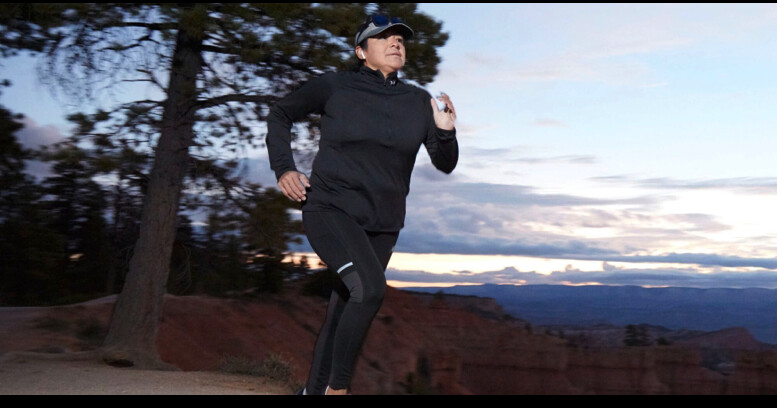
What the 4x4x48 Challenge Is All About
During the COVID-19 pandemic David Goggins, a retired Navy Seal, ultrarunner, endurance athlete, and public speaker came up with the 4x4x48 challenge. As he witnessed races being canceled around the world, Goggins wanted to offer an alternative endurance “event” that individuals could dare themselves to conquer outside of the classic race environment.
To complete a “4x4x48 Goggins Challenge,” which will earn you a T-shirt if you take part in the official program during Goggins’ announced dates (it’s currently on hold, according to his website), athletes must:
Run 4 miles
Repeat every 4 hours
Continue this pattern for 48 hours
All in, a 4x4x48 challenge calls for running 48 miles in 48 hours. For those who aren’t runners, Goggins suggests swapping in another form of cardio (such as swim, bike, or row, for example) for 45 to 60 minutes every four hours.
For some runners, four miles feels like an easy shake-out or a warmup. For others, that’s the longest they’ve ever tackled. Regardless of how much or how often you run, there are some important factors to consider before deciding to attempt a 4x4x48.
The Benefits of the 4x4x48 Challenge
Challenging yourself with high-intensity workouts can be beneficial as part of a well-rounded training program, which should include sufficient rest, recovery, and exercise variety, says Nicole Thompson, ACE-CPT, a San Diego, California-based personal trainer, health coach, group fitness instructor, and medical exercise specialist.
The 4x4x48 challenge is certainly high-intensity and high-frequency. Thompson says that the potential pros for a 4x4x48 challenge include:
Mental Toughness
Successfully completing a task this tough “requires mental strength, discipline, and determination, which can enhance your mental resilience and willpower,” she explains.
Increased Calorie Burn
Running for extended periods at regular intervals can result in significant calorie expenditure. A 150-pound runner can expect to burn around 450 calories during each four-mile stint at a 10-minute-per-mile pace. Over the course of the entire 4x4x48 challenge, this tallies up to 5,400 calories. This is nearly double the 2,900 or so the same person would burn during a four-hour marathon.
Possible Improved Cardiovascular Fitness
“This intense running schedule will challenge your cardiovascular system, which could improve endurance and aerobic capacity,” Thompson says. Although adaptations and improvement typically occur over the course of weeks and months with consistent training—rather than in a mere two days—participants may notice some improvements in cardiovascular capacity after they recover.
Practice in Time Management
Sticking to a strict schedule requires excellent time management skills (and likely, a trustworthy alarm), which can be beneficial in other areas of life, such as work or school.
The Drawbacks of the 4x4x48 Challenge
It’s vital to keep safety top of mind and avoid pushing yourself beyond your limits, Thompson advises, which would only set back your fitness journey—not progress it.
“Honestly, for most runners, the 4x4x48 challenge will have more cons than pros,” believes Erin Beck, NASM-CPT, an Orange County, California-based director of training and experience for STRIDE Fitness. “The structure doesn’t allow your body proper recovery and it requires a high mileage count that the average athlete won’t be ready for.”
According to Thompson, the following are possible drawbacks of the 4x4x48 challenge:
Overtraining and Injury Risk
“The risk of overtraining is high due to the intensity and frequency of the runs, which can lead to fatigue, muscle strains, or other injuries,” Thompson says.Sleep Disruption
The frequent runs will very likely disturb your usual sleep schedule (unless you normally get less than four hours, which we don’t recommend). In turn, this can affect recovery and overall performance.
Lack of Recovery Time
With only four hours between runs, your body may not have sufficient time to bounce back, increasing the risk of injury and burnout.
Nutritional Challenges
Remember that calorie count we mentioned? Eating and hydrating enough during the 48 hours can be difficult, and inadequate fueling may lead to performance issues or some serious health-harming ripple effects, such as dehydration or forcing your body to use muscle mass rather than energy from the food you eat to power your run. (Don’t miss our complete guide to what happens when runners don’t eat enough.)
“This is an extreme and highly demanding physical challenge,” Thompson says. If you do a 4x4x48 challenge, “it’s not recommended to do this type of run frequently or on a regular basis. Always prioritize your overall health and well-being by consulting with a qualified coach or trainer to ensure the challenge aligns with your fitness goals and capabilities.”
And be sure to run this challenge—or any endurance event—by your doctor to get their thumbs up to ensure it’s a wise choice for your fitness level and overall health, Thompson adds.
Why Sleep Is Such a Limiting Factor in 4x4x48
Sleep is essential not only for optimal performance and recovery, but also for overall health and longevity. A 4x4x48 challenge makes it really tough to get the recommended seven to nine hours of sleep, and the snooze time participants do get is interrupted and fairly likely to be low-quality.
“While doing this type of intense running challenge for two days may not have a long-term impact on overall health and recovery, it can lead to acute sleep deprivation, which can have immediate effects,” Thompson says.
Thompson explains that in just 48 hours, sleep deprivation can:
Lead to decreased focus, attention and memory; essentially impairing cognitive function
Compromise coordination and reaction times, increasing the risk of accidents or injuries during the runs
Raise cortisol levels, affecting the body's ability to handle stress and recover properly
Weaken the immune system, making you more susceptible to illnesses
Increase irritability and mood swings, while decreasing emotional resilience (basically, making you not-so-pleasant to be around)
For those who opt into the 4x4x48 challenge, it’s essential to prioritize R&R as much as possible during the breaks between runs.
“Even brief naps and dedicated periods of rest can be beneficial for recovery,” Thompson says. “Then once the challenge is complete, be sure to allow yourself enough time to catch up on sleep and give your body the chance to fully recover.”
Our bodies have a magical way of slowly getting back on track after a night or two of less-than-stellar sleep, Beck says. That said, it’s crucial to not over-tax your system—and carve out time for an extra hour or two of sleep each night—until your body has time to bounce back from the daunting physical (and mental) demands of something like 4x4x48.
A Better Way to Try the 4x4x48 Challenge
For most people, it would be best to avoid attempting this type of run more than once, if at all, Thompson says. Or stick to once or twice per year, max. And exercise caution if you do decide to do it, stopping if you feel aches or pains and prioritizing that recovery.
“It’s more practical and beneficial to focus on a well-rounded and sustainable training program that includes a mix of running, cross-training, rest days, and proper recovery,” Thompson adds.
If you’re really craving a challenge, ante up and give one of these Beck- and Thompson-designed modifications a shot:
→ Beginner: Run 4 miles per day, 4 days per week for 48 weeks. “Over the course of a year, this will help you safely increase your stamina, burn calories, tone your entire body, rack up the miles and support your heart health,” Beck says.
→ Intermediate: Run 4 miles every 12 hours for 48 hours.
→ Advanced: Run 4 miles every 8 hours for 48 hours.
Both of these latter options will allow for a nearly-full night of sleep, plus more recovery time between runs.
Regardless of which path you choose, if you decide to try some form of 4x4x48 challenge, “pay close attention to how your body responds to the challenge. If you feel excessively fatigued, experience persistent pain or notice signs of overtraining, consider cutting back or stopping the challenge,” Thompson says. And if you finished the challenge, make sure to take the next few days off from exercise.
The Bottom Line on 4x4x48
The 4x4x48 challenge is an endurance running event that requires zero qualifier, entry fee or specialized course. It might appeal to the ultramarathoner who’s looking to rack up mileage in a new manner. But running 4 miles every 4 hours for 48 hours is very demanding on the body and brain, so proceed with caution and train your way up to that mileage, rather than just jumping right into it.
It’s also wise to take time to reflect on why you’re feeling called to try the 4x4x48 challenge, if you are. Will running in this way get you closer to your health and fitness goals? Or is seeing pals and athletes on social media creating some FOMO?
“Ask yourself: ‘Is this 4x4x48 something I can do to stay fit for the rest of your life? And is it a healthy approach to fitness for you?’ Your journey has to be sustainable to be successful,” Beck says.
by Runner’s World
Login to leave a comment
Professional triathlete Sika Henry will compete at Comrades Marathon
The pro triathlete believes she may have found a new sweet spot with ultra distances.
Sika Henry has never shied away from new challenges. After spending several years working to qualify for her pro card and becoming the first Black American woman to do so in May 2021, she shifted toward a new focus of ultramarathons.
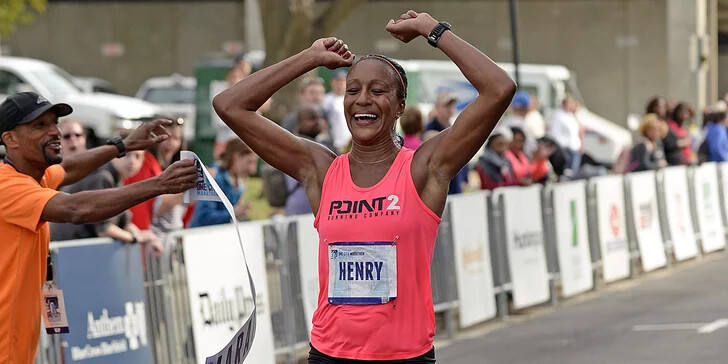
Henry’s first was the 2021 JFK 50 Mile in Maryland, where she finished as the second overall woman. Nearly a year later, after deciding to take a break from triathlon, she set a record of 8:34:20 with her win at the Dismal Swamp 100K in Chesapeake, Virginia.
It seems the endurance built from triathlons—with its back-to-back-to-back swim, cycle, and run—work better for Henry than a straight-up marathon.
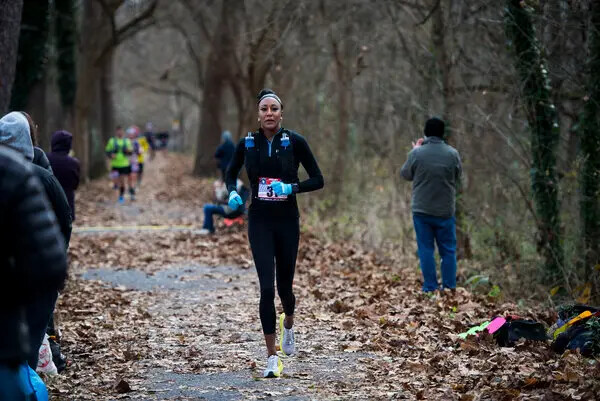
“I think I’m more mentally strong and can endure a lot for a really long period of time, which I think I developed from triathlon,” Henry tells Runner’s World.
Henry’s success at Dismal Swamp set the stage for her next ultramarathon endeavor: the Comrades Marathon, a 90-kilometer race and the world’s oldest ultramarathon in South Africa, taking place on June 11. (The race course, which alternates between Durban and Pietermaritzburg each year, will be run “down” this year.) Henry will be racing as an elite with the Durban-based Phantane Athletics Club, a partnership that came after she met some athletes at last year’s Ironman World Championship in Kona, Hawaii. In addition to the fact that the club will provide her with bottle and fluid support at the race, Henry was also enthused about representing them after learning about how they work to identify talent and give back to underprivileged athletes in South Africa.
Henry’s buildup for Comrades included the Dismal Swamp 100K and an early 2023 marathon at Houston. Next up was the Boston Marathon, where she received a special invitation to race as part of a team along with Alisa Harvey, Ingrid Walters, and Shawanna White to represent Marilyn Bevans, who is known as a pioneer for women’s distance running as the first Black American woman to have broken 3 hours in the marathon.
“[Bevans] has been a bit of an idol of mine for quite some time—one of the reasons why I chased a sub-3-hour marathon was to be part of ‘The List’ [of Black American women who have hit the milestone],” Henry says. “So to come back years later and have all these other races and everything under my belt, it was an honor to get to represent her.”
Henry ended up finishing Boston in 3:08:30 after going in with the plan to use the race as a training run for Comrades by holding a 7:15 to 7:30 pace. Henry found that she was nailing it until she hit mile 21, where Pioneers Run Crew and TrailBlazHers Run Co. were stationed. Henry went on to run the last miles at 6:30- to 6:40 pace, negative-splitting the race by 3 minutes.
by Emilia Benton
Login to leave a comment
Comrades Marathon
Arguably the greatest ultra marathon in the world where athletes come from all over the world to combine muscle and mental strength to conquer the approx 90kilometers between the cities of Pietermaritzburg and Durban, the event owes its beginnings to the vision of one man, World War I veteran Vic Clapham. A soldier, a dreamer, who had campaigned in East...
more...ALS Hasn’t Stopped This Woman from Running a Marathon in All 50 States
“The powers of hope and community propelled me forward and got me across every single finish line.”
Reason for Running: ALS takes away my ability to use my muscles, so I will be out there as long as possible to celebrate what my muscles can still do.
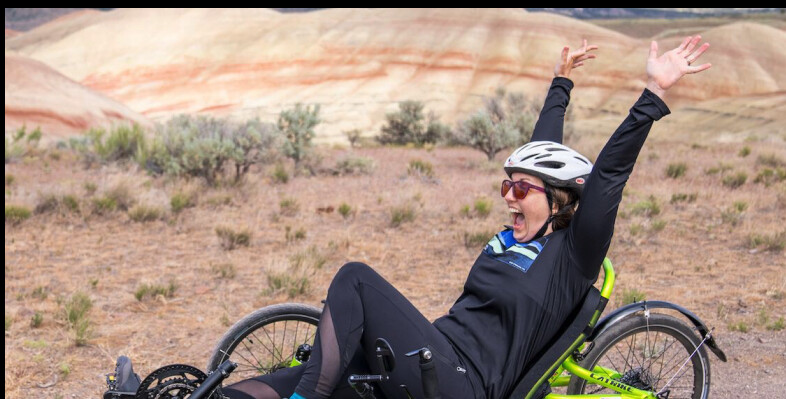
“Don’t worry,” my new husband, David, said in 2009 when I moved from Atlanta to Washington, D.C., to begin our married life. “It never snows here.” But then we were hit by three blizzards in six weeks! I got tired of being cooped up in our tiny apartment, so I found the treadmill in the basement. Fifteen minutes later, sweating and gasping for air, I felt awake and alive in a way I never had before. Add in the goal of training for a race just a bit outside my comfort zone and I was hooked.
My first race was the St. Patty’s Day 8K in downtown D.C. in 2010. I was so distracted by the scenery—running down Pennsylvania Avenue, crossing the National Mall in front of the Capitol—that I forgot to be nervous! After that, I used running as a way to explore my newly-adopted city, which was also useful for my job as an urban planner for the federal government.
In two years, I worked up to my first marathon: the 2012 Yuengling Shamrock Marathon in Virginia Beach. By then, I’d gotten into triathlons too and my first 70.3 (a.k.a. a half Ironman) was the 2013 Carolina Half at my alma mater in Davidson, North Carolina.
However, while training for the 70.3, my run and bike times were slowing down, and my hamstrings were incredibly tight. During the race, I had to walk a lot of the downhills because I felt like I was going to trip over my toes. I assumed I was overtraining or had a weird race injury, but the physical therapist I went to said, “your muscles just don’t seem strong enough for someone who just did that long of a race.” She referred me to a neurologist.
My blood tests, MRIs, spinal tap, CT, and first electromyography (EMG) all came back normal, but my symptoms kept getting worse. In just six months, I went from finishing the 70.3 to walking with a cane after falling in the middle of a D.C. intersection. My fifth neurologist re-did the EMG and diagnosed me with probable ALS in May 2014, which was confirmed in August. I was 33 at the time.
ALS is a death sentence—the average life expectancy is only two to five years. In that time, the person loses the ability to walk, talk, eat, move, and eventually breathe. The only approved drugs extend life expectancy by less than a year.
But everyone is different. My “brand” of ALS seems to respond positively to low-impact, gradual, strength building. I am convinced that swimming, Pilates, weight machines, and riding a trike have all helped me live more than nine years with this disease.
When I reached the fifth anniversary of my ALS diagnosis (a milestone that only 20 percent of people live to see), I realized that I was still waiting for the disease to catch up with me—which isn’t truly living. Living means making long-term plans, striving toward future goals, and believing that tomorrow will be better than today if you’re willing to put in the effort.
So I decided to set the craziest goal I could think of: a marathon on a trike in all 50 states. Through our foundation, the Team Drea Foundation, we decided to film a documentary to raise awareness and funds for ALS research. To date, we’ve raised $1 million!
We began filming in May 2019, and I was at state number seven on my marathon list. Our plan was to film for a year, through Alaska (state 21), and get the film out as quickly as possible so people could actually run with me in some of the remaining states. Then of course, the pandemic hit. No one knew how long races would be canceled or if I would be strong enough to continue. So we decided to keep filming.
I hate to spoil the ending of the film, but yes, I made it! Go On, Be Brave follows my journey to become the first person with ALS to do a marathon in all 50 states. The documentary turned out more beautiful and inspiring than I could have ever imagined—and I was there! The powers of hope and community propelled me forward and got me across every single finish line.
As grateful as I am for the 50-state marathon journey, I am also enjoying the pressure of being off.
Over the next year, my husband David and I will be traveling to more than 50 planned film screenings and book events for my soon-to-be published (September 2023) memoir, Hope Fights Back, with co-author, Meredith Atwood. That doesn’t leave a ton of time for training, but we hope to partner with races along the way. I love exploring new places on the trike so I will be out there as long as I have the strength.
I never knew how truly magnificent the human body was until mine started failing me. When you think “I want to take a step,” there’s instantaneous signaling through your motor neurons and your muscles respond. It’s miraculous. When you are running, take a moment to appreciate what your body can do.
Because I move frustratingly slowly through the world on a walker, freedom is the best word to describe how I feel on the trike. When I’m training or in a race, I travel at a runner’s pace and it reminds me that I am an athlete. Breathing hard, working my muscles, these are all things I should no longer be able to do with ALS, but I can! I will never take for granted what my body is still able to do.
These three tips have made my running journey a success:
1. Live your life
Time will pass either way, whatever your mood. When I was diagnosed with a terminal illness, of course I went through a grieving process. But I realized that all I could control was my attitude.
2. Remember that tomorrow is not promised
Every day that I am out there is a good day. Whenever I start getting in my head about the weather or my knees hurting, I remember that, one day, I will no longer be able to do this. So many of my friends have died or no longer have the ability to move—that snaps things back into perspective really quickly.
3. Keep putting one foot in front of the other
When that’s too much—stop, rest, reset, and find the right motivation to keep fighting. Any forward progress is enough. One hard day, hope will fight its way right into becoming belief.
Andrea’s Must-Have Gear
→ Catrike Folding Trail: I couldn’t get anywhere without my Catrike recumbent trike. It’s great for people with back problems, balance issues, or other medical issues. Even runners must have other folks in their lives who could use some exercise but can’t run. It’s like Mario Kart for adults!
→ Rabbit EZ Tights in Gibraltar Sea Mountain: I may have a teeny obsession with fun, colorful leggings and rabbit’s buttery soft EZ Tights are absolutely the softest around. Also, my husband and I have to negotiate which color of their Jogalongs we’re going to wear—otherwise we’re liable to be twinning!
→ CLIF BLOKS Energy Chews Tropical Punch: My go-to fuel during a race. Six chews times 50 marathons equals 300 of these addictive little suckers I have consumed!
by Runner’s World
Login to leave a comment
Pro triathlete takes shots at Olympians after doping ban
Ironman champion Collin Chartier said he won't blame a "tainted burrito or tainted COVID vaccine" for his positive EPO test.
American professional triathlete Collin Chartier was handed a three-year ban from competition on Monday after a positive result for erythropoietin (EPO) in a random drug test from February. The Ironman champion took to Instagram to address the positive test, stating that he was not going to make excuses, instead admitting his guilt. At the end of his apology note, Chartier took blatant shots at Olympic runners Shelby Houlihan and Zane Robertson, both of whom have faced doping bans in recent years.

Shots fired
“I am not going to give myself or anyone else the bullshit excuse like a tainted burrito or tainted COVID vaccine,” Chartier wrote. The “tainted burrito” was a reference to Houlihan’s post-doping-ban excuse in June 2021, while the COVID vaccine line was a nod to Robertson’s more recent doping bust in March.

After testing positive for the steroid nandrolone in Dec. 2020, Houlihan claimed it was due to contaminated meat that she ate at a food truck the night before her test. Robertson took a similar route following his ban, blaming his positive test (which occurred in May 2022) on a COVID-19 vaccine he received in Kenya.
Chartier’s apology has not been well received by the triathlon community, with many of his peers going after him online. While there is no excuse for his actions or decision to use EPO, at least he admitted to cheating.
“Tell the whole truth”
Chartier’s apology has sparked an important conversation in the triathlon world surrounding dopers and the help they receive to cheat. Many other pro triathletes have demanded that Chartier take his admission of guilt a step further by exposing anyone who helped him cheat and any other athletes whom he knows have doped.
“Tell the whole truth,” eight-time Ironman champion Ben Hoffman wrote on Instagram. “How did you do it, who helped, who else is involved, and give the full story of why.” Former Ironman world champion Sebastian Kienle commented directly on Chartier’s apology post, writing, “Let me guess, you bought [the EPO on] the internet and also learned how to use it—all from the internet. Nobody helped you, nobody knew.”
These athletes—and many fans—have said Chartier’s apology feels hollow and insincere, since he has yet to identify others who helped him or who are also cheating. They object to any praise he may be receiving for being honest about having cheated, insisting that he has a further role to play in cleaning up the sport. (Robertson admitted to doping after originally making the bogus COVID vaccine excuse.)
Although Chartier said he is retiring, he is now serving a three-year ban from competition. Houlihan was given a four-year ban and is not eligible to race again until 2025. Robertson announced his retirement before his ban was made public, but was still given an eight-year ban.
by Running Magazine
Login to leave a comment
Five Recovery Foods That Pro Athletes Can’t Get Enough Of
The best athletes don’t just train hard—they also recover smart. And a big part of effective recovery is the post-workout meal.
A good after-exercise nutrition plan can help an athlete replace the energy they burned during a workout, repair and rebuild muscles, and provide the fuel they need to crush their next training session, according to Jordan Hill, a Colorado-based registered dietitian and certified specialist in sports dietetics with Top Nutrition Coaching. The resulting gains can be significant.

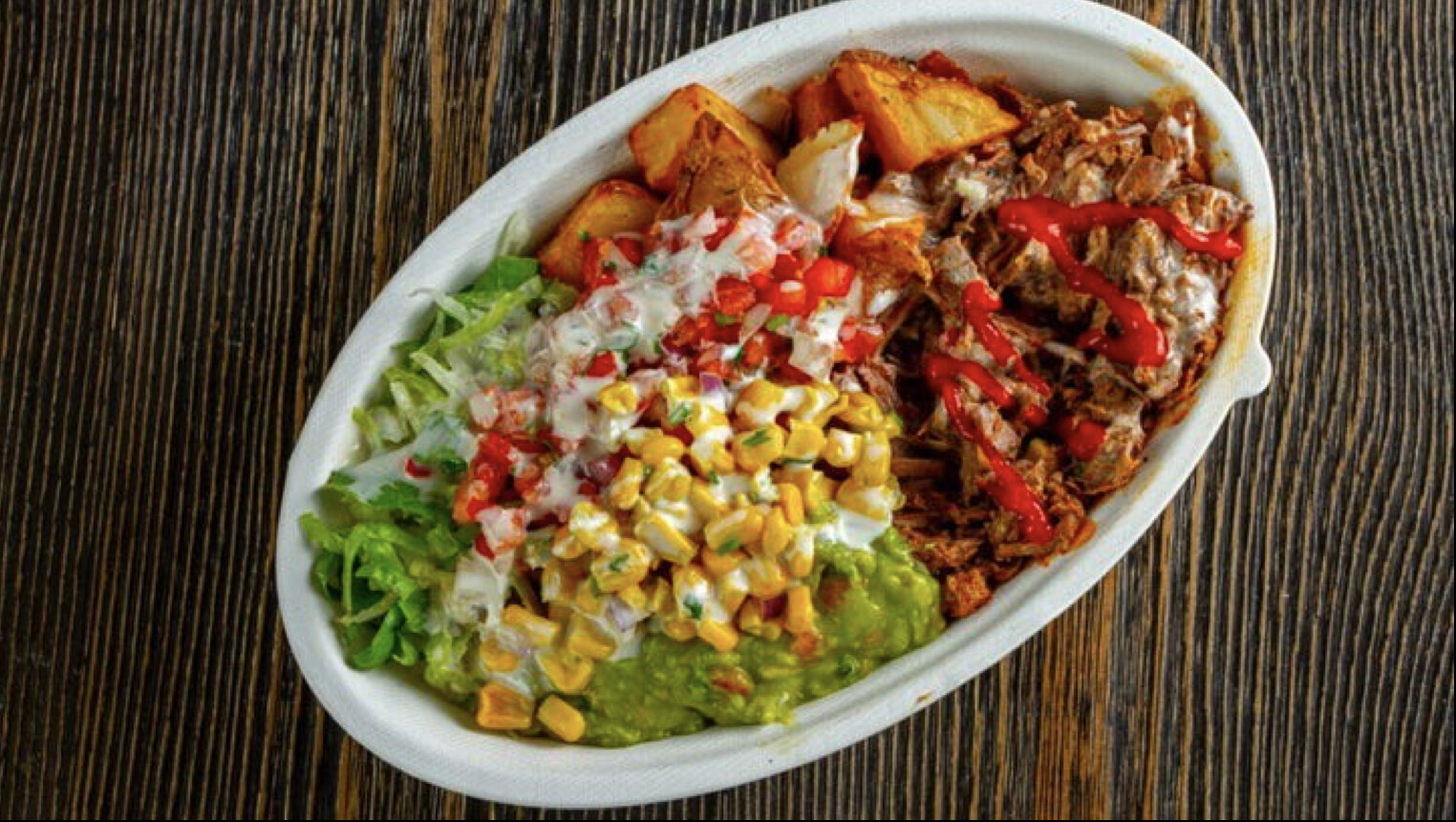
Just ask Lea Davison. When the two-time Olympic mountain biker worked with a nutritionist some 10 years ago to dial in her post-workout fueling plan, she “really noticed the difference,” describing a reduction in rabid hunger and a feeling of being “stronger all around.”
When curating a post-workout snack or meal, folks should look for two main things: carbs and protein, says Hill. Carbs help reduce inflammation, boost immunity, and stimulate the release of insulin, a muscle-building hormone that also helps refill your body’s glycogen stores (your muscles energy source). Protein helps refill your glycogen stores as well, and also halts muscle breakdown and promotes the growth of new muscle, Hill explains. Moreover, when combined, carbs and protein reduce cortisol, a hormone that causes muscle breakdown.
Athletes should consider foods rich in antioxidants like fruits and vegetables, and omega-3s like nuts, seeds, and fish, as they tamp down inflammation and further assist in the recovery process, Hill explains. It’s also important to keep in mind hydration and electrolyte replenishment, especially sodium and potassium.
When it comes to carbs and protein, the amount you consume matters. After an intense workout, look for a three-to-one ratio of carbs to protein, or closer to a two-to-one ratio if your goal is weight loss, says Hill. You can calculate your target amount of protein in grams by dividing your bodyweight in kilograms in half. Then, multiple that figure by two or three to get your carbohydrate value in grams, Hill explains.For example, with the three-to-one ratio, someone who weighs 150 pounds (68 kilograms) would have a target protein goal of 30 to 35 grams and a target carbohydrate goal of 90 to 105 grams. Keep in mind this guidance applies only to intense workouts—the type that leave you sweaty, tired, and potentially sore the next day. Following a gentler workout—say, a yoga session or quick 20-minute strength routine—these specific ratios aren’t as important, says Hill, who recommends folks in those scenarios just follow their general eating patterns for the day.
Last tip: Pay attention to timing. Women should aim to eat their protein amount within 30 minutes of a workout. That’s because certain hormone fluctuations that occur in women post training can accelerate muscle breakdown, explains Hill, and getting in protein quickly can help combat that. Women can eat their carbs alongside the protein, or eat the carbs separately up to two hours after the workout. The guidance is a little less strict for men: so long as they eat both the protein and carbs within two hours of exercising, they’ll reap the benefits.
Need some inspiration for your next post workout meal? We tapped two-time Olympic mountain biker Davison and four other elite athletes to learn what they typically feast on after a tough training session.Pro snowboarder and Olympic silver medalist Julia Marino usually gravitates towards a smoothie with a mixture of frozen fruit, coconut milk, yogurt, and protein powder. “It’s not too heavy,” says Marino of her go-to snack. “When I’m done working out and pretty warm, I’m craving something light and colder that’s easily digestible.”
Meagan Martin, a pro climber and American Ninja Warrior women’s champion, is also a fan of the post workout smoothie. Her concoction often features a mix of frozen fruits and veggies (like banana, pineapple, blueberries and spinach), along with cinnamon, chia seeds, almond milk, almond butter, and sometimes whey protein. “I have this after any workout,” says Martin. “Whether it’s a climbing session or a cardio workout, it’s just the thing my body needs.”
Hill, the nutritionist, endorses these types of smoothies as a great way to get antioxidants, hydration, and protein following a workout. Just be sure to pay attention to portion sizes to ensure you’re hitting a good ratio of carbs to protein, she advises.
During cold months, Davison frequently refuels with a fruit smoothie, similar to the ones described above. But after a long ride on hot days, she favors a DIY slushie: She blends a scoop of unflavored protein powder with lemonade and frozen, locally-picked strawberries.“It’s easy to drink,” she says, adding that the tartness of the lemonade helps counterbalance the sweet chews, bars, and gummies she consumes during her ride. If her workout concludes at home, she’ll quickly whip this up within the 30-minute recovery window, or, if she’s ending a ride at a trailhead, she’ll make it in advance and stash it in a Yeti cooler so it stays chilled.
This concoction, says Hill, offers “great hydration” and electrolytes in addition to protein. The strawberries and lemonade (so long as it’s sugared) provide carbs, she adds. If you’re making this at home, Hill recommends monitoring the portion size to ensure the carb to protein ratio is sufficient.Adidas-sponsored athlete Chris Nikic, who in October became the first person with Down syndrome to finish the Ironman World Championship, is a Chipotle devotee. The 23-year-old athlete’s favorite food is rice, and every day for lunch he orders a heaping burrito bowl with all the fixings: brown and white rice, brown and black beans, chicken, veggies, corn, cheese, and guacamole. The end result is “a four-pound bowl,” says Nikic, who is currently training for the Tokyo Marathon and notes the meal tastes best after a run.
Nikic’s go-to is a “great option,” says Hill. It provides protein, lots of carbs—including both easy-to-digest simple carbs from the white rice and satiating fiber-rich carbs from the brown rice—as well as antioxidants from the veggies.
When it comes to post exercise fueling, Dylan Bowman is a creature of habit. For years now, the professional trail runner has consumed the same recovery meal pretty much every day. He’ll scramble two eggs with greens and onions and then “liberally” butter two pieces of bread. Sometimes, he adds avocado if he’s feeling extra hungry. “I love it because it’s simple and quick,” Bowman explains. “I can get it in quickly and get the recovery process started before I begin the work day.”
This meal hits the big components, says Hill: protein with the eggs, healthy fat with the avocado, and carbohydrates with the toast. If you need more calories depending on the intensity of your workout, Hill recommends either increasing the portion sizes or pairing the meal alongside something else, like oatmeal with berries and honey.When Davison is craving “real” food (i.e. something she can chew, not just sip) she whips up eggs fried over medium with toast, or concocts egg tacos with cheddar cheese, salsa, scrambled eggs, and corn tortillas. “Eggs are my go-to for lunch mostly,” she says.
The breakfast taco option is really similar to Bowman’s staple and provides carbs from the tortillas plus protein from the eggs. The salsa adds antioxidants. Depending on the intensity of the workout, Hill might recommend adding extra carbs to properly refuel—things like orange juice, chocolate milk, or a small cup of fruit.
by Outside
Login to leave a comment
Dave McGillivray Completes 51st Consecutive Boston Marathon
After all other participants had long finished their Boston Marathon journeys, Dave McGillivray crossed the finish line at 7:28 p.m. yesterday evening. McGillivray oversaw the course throughout the race earlier in the day, taking runners across the starting line and helping to ensure their safe arrival on Boylston Street. This is McGillivray’s 51st consecutive completion of the Boston Marathon and the 36th of which he has completed at night after seeing to his race day duties.
“It doesn’t feel so long ago that I was 18 years old, sitting on the curb at mile 21, wondering if I would ever get a chance to finish the Boston Marathon. If I could go back and tell my younger self that he goes on to finish that day and 50 more editions, I can’t imagine his reaction,” said McGillivray. “I’m grateful for the more than a dozen friends and colleagues who joined me on the journey to the finish line today. I had to dream big to get to this moment, and I couldn’t do it without my community and my family that support me every step of the way.”
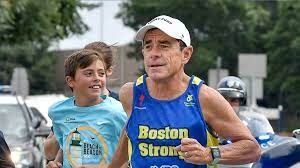
The weekend featured two other special moments for McGillivray. On Saturday, Team With A Vision inducted McGillivray into their hall of fame during a dinner at the Westin Copley Place. Team With A Vision pairs blind and sighted runners together to complete endurance races across the country. Their efforts support the Massachusetts Association for the Blind and Visually Impaired, which delivers professional, peer, and volunteer support to over 1,200 individuals each year, giving them the support they need to live with dignity and independence. All funds raised support MABVI’s statewide vision rehabilitation services, including 34 low-vision support groups, Assistive Technology and Training Centers, and 400 volunteers matched 1:1 with blind individuals.
In addition, McGillivray was a featured speaker during the Boston Marathon Expo, where World Marathon Challenge champion Becca Pizzi interviewed him about his long history with the race. He shared photos, videos and stories with the crowd, and signed copies of his books for attendees at the Dave McGillivray Finish Strong Foundation booth following the presentation.
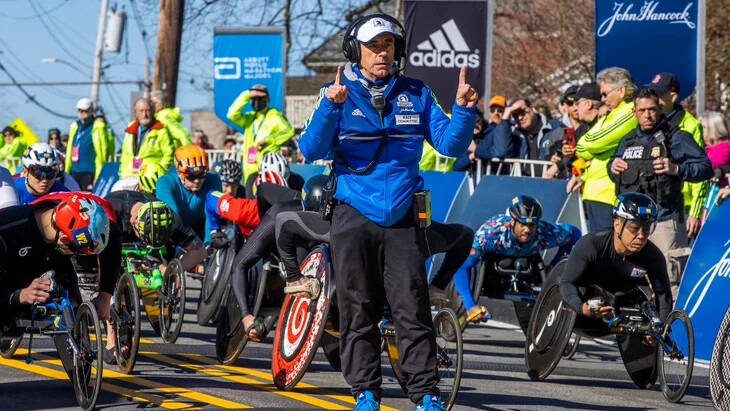
McGillivray is one of just a handful of runners who have marked half a century or more of completing the world’s most famous marathon. Alongside his rich connection to this race, his running resume includes completing the World Marathon Challenge (seven marathons in seven days on seven continents,) nine Ironman Triathlon World Championships, a 1,250-mile run along the U.S. East Coast in 1980 to again benefit the Jimmy Fund, a 24-hour run (120 miles,) a 24-hour bike (385 miles,) and a 24-hour swim (27 miles.) He triathloned around the six New England states by swimming one mile, biking 80 miles and running 20 miles every day for 32 consecutive days. Over the span of his life, he estimates he’s run more than 150,000 miles.
For more information on Dave McGillivray, visit www.davemcgillivray.com and follow him on Facebook, Instagram, LinkedIn and Twitter.
ABOUT DAVE MCGILLIVRAY
Running legend Dave McGillivray has increased the self-esteem of millions of people through his work as an entrepreneur, philanthropist, motivational speaker, author, and athlete. Dave is best known for his athletic feats including his 80-day trek across the United States, running the 3,452 miles from Medford, Ore., to Medford, Mass. in the summer of 1978 to benefit the Jimmy Fund. In addition, he’s received great acclaim for directing or consulting on more than 1,400 events throughout the world including the Boston Marathon, the Olympic Marathon trials, and the Olympic Games. For more information on Dave McGillivray, visit www.davemcgillivray.com and follow him on Facebook, Instagram, LinkedIn and Twitter.
by Running USA
Login to leave a comment
Boston Marathon
Among the nation’s oldest athletic clubs, the B.A.A. was established in 1887, and, in 1896, more than half of the U.S. Olympic Team at the first modern games was composed of B.A.A. club members. The Olympic Games provided the inspiration for the first Boston Marathon, which culminated the B.A.A. Games on April 19, 1897. John J. McDermott emerged from a...
more...How 51-year-old Ken Rideout Runs Sub-2:30 Marathons
Relentless dedication and strength training are some of the keys to his success
Ken Rideout insists he’s just an average guy who likes to run marathons as fast as he possibly can.
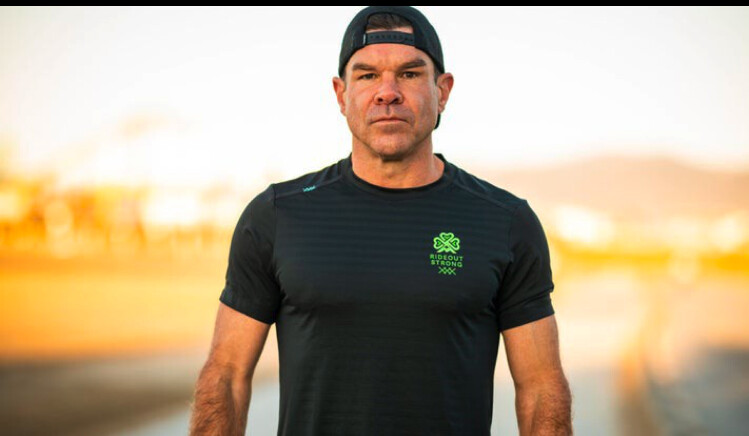
He admits he’s never been a great athlete, but, at the same time, his commitment to training and his results are extraordinary. The 51-year-old resident of Nashville, Tennessee, has blossomed into one of the world’s top masters runners with a fierce competitiveness that has helped to consistently run some astonishingly fast times at World Marathon Majors races over the past several years.
He won the 50-and-over division at the New York City Marathon (2:33:31) in 2021 and the Boston Marathon (2:30:21) in 2022 and he has come in second in that age division in London (2:29:54), Chicago (2:29:53) and Berlin (2:35:48). He also won the 2021 Myrtle Beach Marathon outright in 2:30:58 just before turning 50.
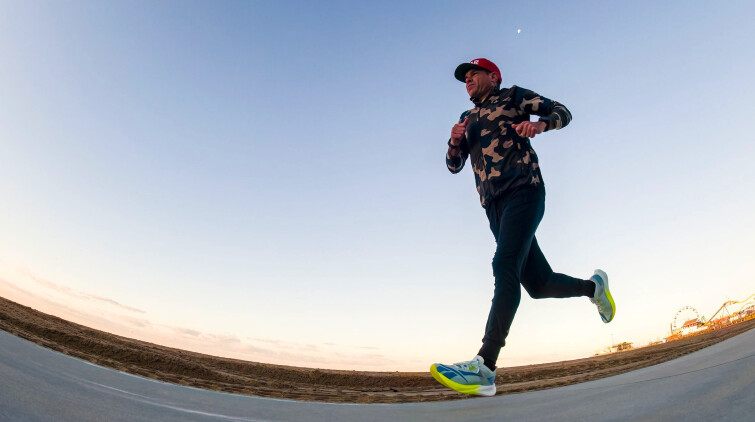
On March 5, he’ll toe the starting line at the Tokyo Marathon in an attempt to once again compete for a podium finish in his age division. He ran 2:29:14 to win his division in Tokyo.
At 5-foot-10, with a muscular physique, Rideout breaks the mold of both typical elite runners and faster recreational runners. It’s his relentlessness to being the best he can be — including and especially his strength training — that sets him apart as an age-group runner and not any inherent talent as an endurance athlete.
“When I am in a race, my mindset gets to the point that I’m gonna run until I collapse,” Rideout says unapologetically about his steadfast approach. “I’m gonna give every ounce of energy until there’s nothing left to give. Win or die trying, that’s the message. If you have that mindset, you can’t lose.”
Growing up in a troubled family in a rough suburb of Boston and taking up boxing at an early age, Rideout has applied a fighter’s mentality and a notorious work ethic to every challenge he’s faced in life, sometimes to his own demise.
As a teen, he took a job as a prison guard where his dad and brother were incarcerated. He worked his way through college, eventually earning a sociology degree from Framingham State University. Although he became a self-made, overachiever as a financial services sales executive, he admitted he suffered from imposter’s syndrome working alongside many Ivy League colleagues and eventually struggled with burn-out, and was diagnosed with substance use disorder tied to his excessive opioid use.
After working through a recovery program, Rideout found a more balanced path in life, channeling his energy into endurance sports, following a mostly vegan diet and the joy he shares with his wife and their four young children.
Rideout first applied his intensity to triathlon and qualified for the Ironman World Championships three times and won the 40-44 age division at Ironman Wisconsin in 2015 with a 9:36:15 effort. But that sport took too much time away from his family, so he turned his focus to marathons in 2019.
So how does someone who started running in his late 30s and didn’t really focus on it until his 40s become fast enough to run 5:45 pace for a marathon after turning 50? Being unabated in his approach every single day.
“I’ve heard some people say I’m lucky to be able to do this at my age, and I’m like, ‘I’m not lucky,’ I work my ass off every day,” he says. “I eat a perfect diet during the week. I work out twice a day. I’m a freaking lunatic with this stuff. I live this full-time.”
Despite his exuberance and intensity, Rideout says he’s grateful that most of his running brings a Zen-like calm to him. He admits he doesn’t want his energy to lead him to a dark place again. When he can, he listens to podcasts or audiobooks while he’s running because he wants to be able to maximize his time to train and learn something at the same time.
“This is just my outlet,” he says. “Running is one of the things that makes me feel good about myself.”
When Rideout turned his focus to running five years ago, his training initially consisted of a 10-mile out-and-back run with 1,200 feet of vertical gain six days a in the Pacific Palisades neighborhood of Los Angeles. The other day of the week he’d typically run 20 miles as hard as possible. While that helped continue to build his aerobic base and led him to a 2:40 effort at the Los Angeles Marathon, it only got him so far.
In 2019, he hired coach Mario Frailoli, who added structure to his training by increasing the length and adding specificity to his long runs, implementing speedier workouts into his routine and also encouraging him to slow down on his easy days that help optimize recovery. He also makes sure that he stays between 70 and 80 miles per week. Since then, he’s run 2:36 or faster six times, including a 2:28:25 personal best at the age of 48 at the 2019 California International Marathon.
In addition to his run training, he works on strength in his home gym four days a week with a circuit that includes pull-ups, squats, bench press and numerous core exercises, as well as boxing drills — including punching a heavy bag. His functional strength and athleticism are among his biggest assets, something that many recreational runners lack, Fraioli says.
Plus, because he’s not burdened by having 35 years of running in his legs, he still has considerable elastic recoil in his legs. (And yes, his carbon-fiber plated Reebok Floatride Energy X shoes also help, Rideout says.)
“He’s doing it right, and honestly, he has been doing it all long,” Fraioli says. “He has more than 10 years of aerobic development under his belt and a lot of that came on a bike and in the pool. And I think the strength training really just helps to keep him in one piece. It’s giving him that structure and that guidance and honestly just keeping him from, you know, completely running himself into the ground.”
Although he still works in the financial world, Rideout has also helped train mixed martial arts fighters and boxers, and is the co-host of the combat sports podcast, “The Fight with Teddy Atlas.” Because of his success and notoriety, he has been all over the media in recent years, including appearances on high-level podcasts with Rich Roll, Joe Rogan, Samantha Nivens, Dr. Andrew Huberman and Fraioli’s “The Morning Shakeout” weekly running show a couple of times.
Rideout has been eager to share his story — and fans and followers seem to appreciate his vulnerability — but insists he’s not special or extraordinary, especially as an athlete.
“Everyone has what I have. I’m an average guy” says Rideout, who played hockey and football in college. “The only thing I do that other people don’t do is I try as hard as I can, I dedicate myself to being the best I can be. And I would say that if there’s one metric that matters above everything — and you don’t need to be a rocket scientist to know this — it’s that consistency is the most important thing. Show up every day.”
by Outside
Login to leave a comment
Tunnel Ultra: The mind-bending 200-mile ultra-marathon in the dark
How do you like to spend your weekend off?
Do you put your feet up in front of the TV? Maybe shopping is your way to unwind? Perhaps you're a bit more adventurous and enjoy a stroll in the countryside?
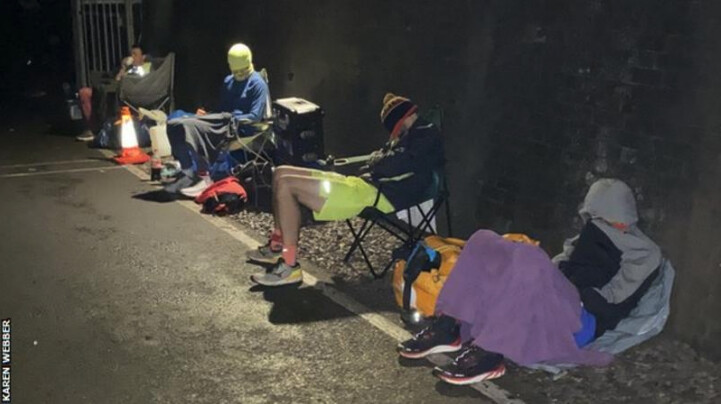
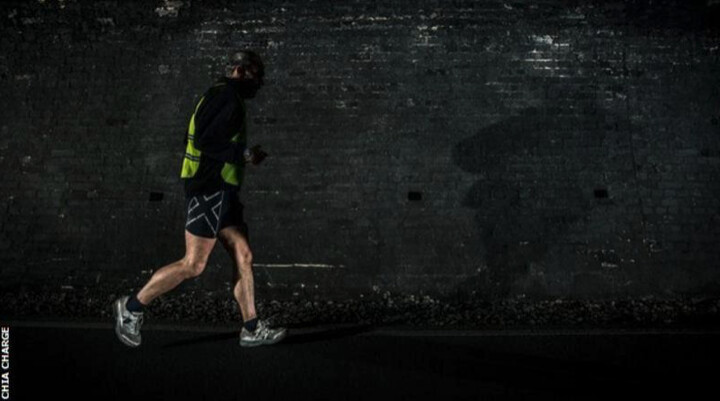
That doesn't quite cut it for some people, who choose to run a 200-mile ultra-marathon in a disused railway tunnel instead.
The Tunnel Ultra is a race like no other. It's easy to find longer events. Some even involve repeating the same loop for days on end. But nowhere else can you take part in a race so twisted that you spend more than two days in darkness doing a one-mile shuttle run 200 times, or so punishing that one runner went temporarily blind - then thanked the race organiser for the privilege.
No outside support is permitted, headphones are banned and runners are not allowed to run side by side. Oh, and there is a strict time limit of 55 hours.
The Tunnel website describes it as "a mind-bending test of extreme endurance and sensory deprivation". It is more health warning than marketing slogan.
"I could be sat on the sofa watching Strictly with the wife and kids. Or do I want to be in a dripping tunnel, tired and miserable, knowing I've got work on Monday?" Guy Bettinson, a 45-year-old programme manager from Cumbria who won the Tunnel in 2020, wonders out loud. "I'd rather waste my weekend putting myself through misery."
"It's so pointless. You're not getting from A to B, which makes it such a massive mental challenge," says Andy Persson, another finisher that year. "If you can push your mind further than you think is possible, it's quite empowering."
Christian Mauduit, a French software engineer who won the 2021 edition, says: "I'm chasing that internal adventure - that meeting with myself. It's like a little kid - they want to see how close they can come to the fire. I'm still that little kid."
Bettinson describes every ultra-marathon start line as a "mid-life crisis anonymous meeting". "We've all got issues," he says. "It's clearly some kind of therapy."
The race takes place in Combe Down Tunnel, a mile south of Bath city centre, and starts at 4pm on a Friday in March. No more than 40 runners make it that far, partly because of a strict - and deliberately opaque - qualification process and largely because the tunnel is not big enough to accommodate many more. "Even the start line is weird," says Mauduit. "You have to stand one behind another in a queue."
Combe Down was restored as a cycle path in 2013 after 47 years under weeds. It is the UK's longest foot tunnel - and the obvious setting for an ultra-marathon if your name is Mark Cockbain.
"I like things that have got an X-factor," says Cockbain, a prolific former ultra-runner who set up the Tunnel in 2019 to add to his brilliant yet brutal portfolio of events as a race organiser. "As soon as I got permission to use the tunnel, it was a no-brainer."
The race is low key in the extreme. A fold-up table outside one end of the tunnel serves as race HQ. There is no shelter or rest area to speak of unless runners have the foresight to bring a camping chair. They must all share a portable toilet which, by the end of the weekend, would not look out of place at a music festival. Refreshments are limited to water and tea, while the most luxurious snacks are Pot Noodles. If you're lucky, they might not be out of date.
"I cut back on delicacies," says Cockbain in the matter-of-fact style for which he has become famous in the ultra-running community. "You can get through any of these races with a bit of water and food. I wanted to make it all about the running."
For Mike Raffan, a 43-year-old IT manager from Aberdeen who finished second in 2021, that's part of the appeal. "It's nice that there isn't any nonsense," he says. "The Tunnel is pure, unadulterated running. You run from one end to the other in a straight line, turn around a traffic cone, come back again, and just keep going. That's it." Persson agrees. "There's no fanfare. If you're looking to be pampered, you've come to the wrong place."
All of which adds up to a notoriously low finish rate. Of the 31 runners who started the inaugural Tunnel, only two completed it, and 13 in total in the three years it has been in existence.
"I don't want there to be no finishers," says Cockbain. "But I do want them to go through hell to get there."
So how exactly do you survive a race that is deliberately designed to break you physically, mentally and emotionally?
In one sense, it is simple. "The only things you have to think about are moving, eating, drinking, sleeping and going to the toilet. That's the limit of your universe," says Max Newton, a fundraising manager from Sheffield who was among the seven finishers in 2020. "All that jazz in real life is nonsense."
"One tactic for me is 100% commitment," says Raffan. Those words carry added weight from someone who ran 182 miles in 42 hours around his back garden three months after open-heart surgery in 2020. During another Cockbain race he continued running in conditions so bleak that his eyeball froze. "I never thought about not finishing the Tunnel. Before the race I told them, 'Do not let me stop unless there's a medical reason for it'."
Mauduit's approach is similar. "I'm asking myself all the complex questions - 'Why am I doing this? Should I go there?' - before the race, in training. During the race I just finish the lap - there's no question."
"You have to be all in. If doubt creeps in, you're gone," says Cockbain. A 50-year-old electronics engineer by trade, he completed 199 marathons and 106 ultras - including some of the toughest in the world, notably five Spartathlons, three Badwaters, a double Badwater and a 300-mile race in the Arctic - before knee problems forced him to stop running in 2011. "I could sit in a corner and hit my head with a spoon for three days if that's what I decided to do."
Bettinson admits the "possibility of failure was a big thing" when he stood on the start line, yet he went on to finish in a scarcely believable 43 hours nine minutes. It remains a Tunnel record by more than six hours and is "up there with some of the all-time greatest ultra achievements", according to Cockbain, not a man given to hyperbole.
Repeatedly running along the same stretch of tarmac throws up a mental challenge rarely found in races of any distance, let alone 200 miles (the total distance is actually 208 because the tunnel is slightly longer than a mile).
"The difficult thing with doing 100 laps is there are 100 chances to stop," says 49-year-old Newton, who also ran a 300-mile lapped ultra last summer. Even if runners quit mid-lap, they must make their way back to the start line. Mauduit agrees that the turnaround point at race HQ is often the most difficult. "Once you're on the course it's easy - everyone can do two miles," he says.
"When you reach the start line again you're facing two choices. One is calling it a day. You will still suffer, your legs will hurt, the pain will follow you for hours, and you have to deal with the fact you gave up. Or you can beat your own personal record in the tunnel and write history. You only have to be motivated for five seconds - just enough time to pick your butt up and get into the tunnel. During the Tunnel I don't do 200 miles; I do two miles 100 times."
A positive mindset is universal - some would argue essential - among those who have completed the race.
"When it's really hurting and I'd rather be in bed, I say to myself, 'I love this tunnel and I can't believe I've got this opportunity'," says Persson, a 57-year-old counsellor from Bristol who once ran 900 miles from Land's End to John O'Groats in 17 days.
"You've got to embrace it - there's no point fighting it or being grumpy. You have to find the bits that make it good," says Newton. Alan Cormack, who finished second in the inaugural Tunnel, adds: "You don't have to worry about weather, mud, navigation. And you don't have to carry a pack."
With no scenery, music or conversation, surely it must be boring? "On these runs you're often very busy," says Mandy Foyster, who staggered over the finish line five minutes inside the time limit in 2021 to become the only female runner to have completed the race. "You don't have time to get bored - you're doing maths in your head and you're so focused on keeping going."
Persson says "my personality likes routine", while Mauduit positively loves it. He once ran 238 miles in 48 hours on a treadmill, but says his favourite events are six-day races. His record is 541 miles.
For Raffan, ultras are his meditation. "People ask what I think about when I'm running. Absolutely nothing. At the best points your mind is empty. When you're in that proper trance state you're not thinking about anything."
Running 200 lengths of the tunnel means running 200 times past a speaker built into the wall at the midway point that resembles a giant eyeball and pumps out classical music on loop all day and night. "There are these little submarine-style windows which glow different colours," says Newton. "It's like super stereo."
Cormack describes it as a screeching violin, which Bettinson claims "adds to the weirdness and psychological torture". Mauduit is more direct: "It drives you nuts."
More psychological torture comes in the form of darkness. There is only dim lighting in the tunnel - which is shared with cyclists and walkers during the day - and even these are switched off between 11pm and 5am.
"Not only are you in the darkness, but you are alone and you have no headphones. It's like a giant meeting with you and your feet," says 47-year-old Mauduit. "All human bodies are conditioned by daylight. In a standard race, when the sun rises you feel great. In the tunnel you have no reference - it's always night."
"It became a very big battle to stay awake," says Foyster, a seasoned ultra-distance athlete whose idea of celebrating her 50th birthday was to cycle between Ben Nevis, Scafell Pike and Snowdon and sleep on the summits of each. "When I got to the end of the tunnel I'd step out in the daylight and just stand there for 10-15 seconds."
Foyster put more thought than most into keeping the so-called sleep monsters at bay - "I had perfume to spray and a Vicks to stick up my nose - anything to stimulate your senses" - but her most valuable tool was a small spray bottle. "When I felt myself falling asleep I sprayed myself in the face with water. That was absolutely fantastic."
Some runners might grab a power nap outside the tunnel - and pray it doesn't rain. Others treat sleep as an inconvenience in a race with an already demanding time limit. A rare few don't even afford themselves the luxury of sitting down.
"If you stop you've got to start again. If you don't stop you don't have to start again. I just kept going," says Bettinson, whose 17 years in the Army have proven an excellent grounding for ultra-running. "I did end up lying down a couple of times, but you're in so much pain by the second night that you can't sleep anyway. And you're just wasting time by not moving."
Raffan pulled out of the 2019 Tunnel after 100 miles to join his wife and daughter at the zoo. It remains his only DNF from more than 50 ultras. When he returned in 2021 he deliberately did not bring a chair. "I ended up sitting on somebody else's, but that was good because whenever they needed it, it forced me to get out."
"I don't trust myself to set an alarm and wake up, so I didn't take the risk," says Mauduit. "The only time I stopped was at the refreshment table or to go to the bathroom."
If sleeping is optional in the Tunnel, hallucinations are all but guaranteed.
"I saw a family of abominable snowmen, a massive slug and I thought I was on the edge of a cliff," says Karl Baxter, who failed to finish the race in 2020 but conquered it with less than an hour to spare the following year.
"Orange blobby monsters kept floating at me out of the darkness," says Foyster, who blames her good friend Baxter for convincing her to sign up for the race. "I wasn't in a tunnel a lot of the time - I was running through Egyptian tombs or over a suspension bridge with deep ravines."
Mauduit recalls: "On the last day it got insanely bad. I was seeing stairs; I was walking on a glass floor. I couldn't escape from it. The hallucinations were an order of magnitude stronger than anything I've ever had before. It was mind-blowing."
Cockbain has seen it countless times. "It's just total carnage," he says. "People are losing their marbles. If they stop for a rest, they can't remember which way they're going."
The effects lasted beyond the race for Persson. "I saw ticker tape, carvings in the wall, and I was convinced there was a glass conservatory with flowers. My wife and daughter picked me up and I was still hallucinating by the time I got home. I've never had that level of it before - it was so extreme."
Training for the race varies wildly between competitors. Bettinson's longest run in the build-up to his victory was a mere 12 miles; Foyster "did a lot of fast walking"; Cormack, who was scared of the dark as a child, favoured night-time runs; and Baxter attempted to simulate the boredom with lengthy treadmill sessions or by running up and down a one-mile stretch of road. He managed 48 of them one day.
Eating and drinking strategies are equally individual, but, given that runners burn about 20,000 calories during the course of the race, hunger triumphs over health. Dentists and doctors, look away now.
Pizzas, chocolate, cake and flat cola fuelled Foyster for nigh on 55 hours. Baxter polished off tube after tube of salt and vinegar crisps, all eaten on the move to save time. Jam sandwiches, flapjacks and Pot Noodles - "they really hit the spot" - kept Newton going. Raffan tucked into supermarket meal deals and butteries - a "really dense, stodgy" Scottish pastry - but describes cold custard as his "secret weapon". Persson's menu of quiche, sausage rolls and overnight oats seems positively gourmet by comparison.
Bettinson is powered by a concoction of Lucozade, pineapple juice and beetroot juice. He also liquifies food and puts it in baby pouches "so it's easy to get down". Because it is impossible to replace the energy you are burning, his plan is "fuel early and then cling on".
As the saying goes, what goes in must come out, although most runners visibly wince when they remember a toilet situation that Newton laughingly describes as "a disgrace".
Bettinson says: "The first time I did the Tunnel it was a little chemical kiddy loo that you'd take camping. It was in a half-collapsed tent with a broken zip. Mark deliberately put it in a puddle, so you had to get your feet wet just to get inside it, and after the first 50 miles it was like a festival loo - you had to hover over the top."
Even if runners can cope with the boredom, darkness and sleep deprivation, pounding tarmac for longer than some weekend breaks last takes an immense physical toll.
"Of course your legs will hurt - you're running 200 miles. What did you think was going to happen?" says Mauduit, a man whose CV also features winning a Deca Ironman - a triathlon consisting of a 23-mile swim, 1,118-mile bike ride and a 262-mile run.
"Everything after 20 miles involves pain," says Bettinson, who admits that theory was tested when his hips were in "absolute agony" 100 miles in. "Anyone can get round it - you just have to want to."
Newton's approach veers towards the spiritual. "In a weird way, if you run through excruciating pain it doesn't hurt any more," he says, with the caveat that this approach doesn't always translate to his partner Anna. "She's worried I'm going to die. She has seen me in a bad state - sometimes it has been a bit messy."
Cockbain has this advice: "The feeling of wanting to give up doesn't last - if you put something in its place."
Runners know better than to expect sympathy from Cockbain, whose stable of events also includes an unsupported 300-mile run from Hull to the south coast as well as a race where pairs of runners in boiler suits are chained together and have 24 hours to cover as much ground as possible. You can sense the disappointment in his voice when he recalls how The Hill, which involved climbing up and down a hill in the Peak District 55 times - equating to 160 miles - in 48 hours had to be scrapped after the pub which doubled as the checkpoint closed down.
Perhaps Bettinson sums up Cockbain best: "Mark has a motivational speech at the start of his races: 'If you're going too slow, speed up.'"
Baxter, a 51-year-old from Norfolk who spent 12 years in the Army and now drives lorries for a living, turned an ankle during his second attempt at the Tunnel. "It came up like an egg. I sat down for 20 minutes and I was going to quit. Mark said, 'A twisted ankle never killed anyone' and told me to carry on. It taught me a lot. Once I got to 150 miles I knew I was going to finish."
Individual motivation comes in different forms, but a common thread among finishers is the time, energy and money they have invested in a race that often few people outside their close circle of family and friends know about. Nobody gets into ultra-running for the glory, least of all those taking part in Cockbain's events.
"My wife is handling all the family by herself, working and having no fun," says Mauduit, who rode his motorbike from Paris to take part in the Tunnel. "I'm having this five-day vacation so I should do something good with that."
Bettinson flips the question on its head. "My why for being there is I chose to be there. I've paid the money, I've done the training, I've turned up. Why on earth wouldn't I finish?"
Foyster, meanwhile, does it for the sheep. Having grown particularly fond of the animals during endurance adventures such as running the width of the UK or cycling the length of it, she now uses ultra-marathons to help raise funds for a sheep sanctuary in Lincolnshire.
"When I was struggling in the Tunnel, my friend sent me videos of the sheep. I'm thinking of them at the tough times," she says. "Some people ask me if I have a coach. I say my coach is a sheep called Bella."
Foyster, who works at an animal sanctuary near Norwich, has run the London Marathon dressed as a sheep and even had a fancy dress costume lined up for the Tunnel, but never got chance to wear it because she was in such bad shape later in the race. What was the outfit? "A sheep dressed up as Darth Vader."
The gruelling nature of Cockbain's races and the derisory finish rate creates a special sort of camaraderie among runners, evident from the dark humour on the start line to the support they offer each other as they push beyond their limits.
"Everyone feels like they're in it together. It doesn't feel competitive," says Newton. Cormack, who runs a cleaning company in Aberdeen, adds: "Nobody cares if you're first or you're 20th." Bettinson says: "Mark's events feel less like a race and more about the entrants against the event as a collective. You're only ever racing against yourself."
Foyster, 56, says she goes into any event with a "1,000% determination to finish it", but her unwavering drive in the Tunnel took her to a place she had never been before.
"After 100 miles my body started to break down," she recalls. "By 150 miles I had adopted my walk-shuffle approach, and in the last 10 miles I completely lost my mind. I kind of went over to the other side.
"At mile 192 I became completely disorientated and started going the wrong way. I thought I was wandering along a quiet country lane. I didn't know who I was or what I was or what I was doing."
In a rare moment of weakness/graciousness (delete depending on the coldness of your heart), Cockbain allowed Foyster's friend to accompany her as she staggered to beat the time limit. He even turned cheerleader on Foyster's final lap.
"At mile 198 my vision went," says Foyster. "I couldn't see anything. I crashed into the wall a few times. I had a broken tooth. I felt like I just needed to collapse on the floor. It was the first time that I'd felt worried about myself physically.
"Mark appeared behind us on a bicycle shouting 'you've got to go faster'. I was running blind - I was running into a white mist. I felt like I was sprinting flat out. I kept running until Karen the timing lady caught me in her arms." Foyster had finished in 54:55, not even time for another lap.
Because she was "in a complete and utter state", Foyster says she did not get to savour the finish line moment. "That's the only bit I regret."
She didn't miss much. "There are only a handful of people there. You get a bit of a clap, Mark shakes your hand and gives you your medal," says Persson. "It's not like you've got people patting you on the head," says 55-year-old Cormack, who then slept on the back seat of his car because he was too tired to put his tent up.
"Mark said a few words - I was so knackered I can't remember what - and I just picked my box up and went to the train station," says Bettinson. "It was a busy weekend and there were a lot of people ready for a day out. There was me, absolutely stinking, wheeling this box and eating bits of scabby old sandwich."
Foyster was so spent that she had to be carried to her hotel room. Baxter, who did some of the carrying, says: "That was just as hard as the last few miles."
"If you finish one of Mark's races you get respect from him. That means a lot," says Newton. Bettinson agrees. "Most of my medals I chuck in the bin. If it's one I'm bothered about I keep it in a drawer. I've kept the Tunnel one."
Cockbain's goal is simple: "All I want is that someone walks away remembering it for the rest of their life. Ultimately we're going to live and die. How are you going to fill up the middle of that? Achievements last forever."
"Races aren't pretty - that is real life," says Foyster. "The Tunnel is the hardest I've pushed myself. I've never needed help like that, so my overwhelming feeling was I was so grateful."
Mauduit, who describes the Tunnel as an "awesome race", adds: "I thank Mark for putting it together. I discovered something new. It was a blast. It all makes sense because it doesn't make sense. It's worth every penny."
Baxter remembers clearly his feelings in the week after the Tunnel. "I was buzzing. I felt on top of the world. I felt invincible." Newton recalls: "When I was telling people about the Tunnel I was talking with a smile on my face."
But what on earth is next for those who have completed one of the most challenging ultra-marathons invented?
Baxter tells a story typical of a certain breed of ultra-runners. "My girlfriend said, 'Is that it?' I said, 'No way. I want to go further.' Plus, no-one has done it twice." He may have company. "I'll be back one day," says Mauduit. "I'm thinking about it."
Cockbain recognises the signs from his own running days. "It's a drug. It's an addiction. It's a never-ending 'what's next?' You never get satisfied."
Even Bettinson, the record holder, says: "My holy grail is I want to finish an event where I know I've given absolutely everything - even if I don't finish. It could be one mile or it could be a thousand miles.
"I'm still chasing that unicorn."
by BBC
Login to leave a comment
More Prize Money Is Flowing Into Trail Running. What Does That Mean for the Sport?
Annie Hughes, one of the top trail runners in the U.S. for the past two years, had another amazing season running ultra-distance races in 2022. On September 17, the 24-year-old Hoka-sponsored runner and part-time college student won the Run Rabbit Run 100 in Steamboat Springs, Colorado, her fourth win of 100 miles or longer since April. Earlier this year, she won the Coldwater Rumble 100 in January, Cocodona 250 in April and the High Lonesome 100 in July.
Those were all exceptional efforts in really challenging races, but the big difference she experienced after crossing the Run Rabbit Run finish line, 21 hours and 26 minutes later, was that she won $17,500. (And yes, she was handed one of those cartoonish, oversized checks at the awards ceremony.)
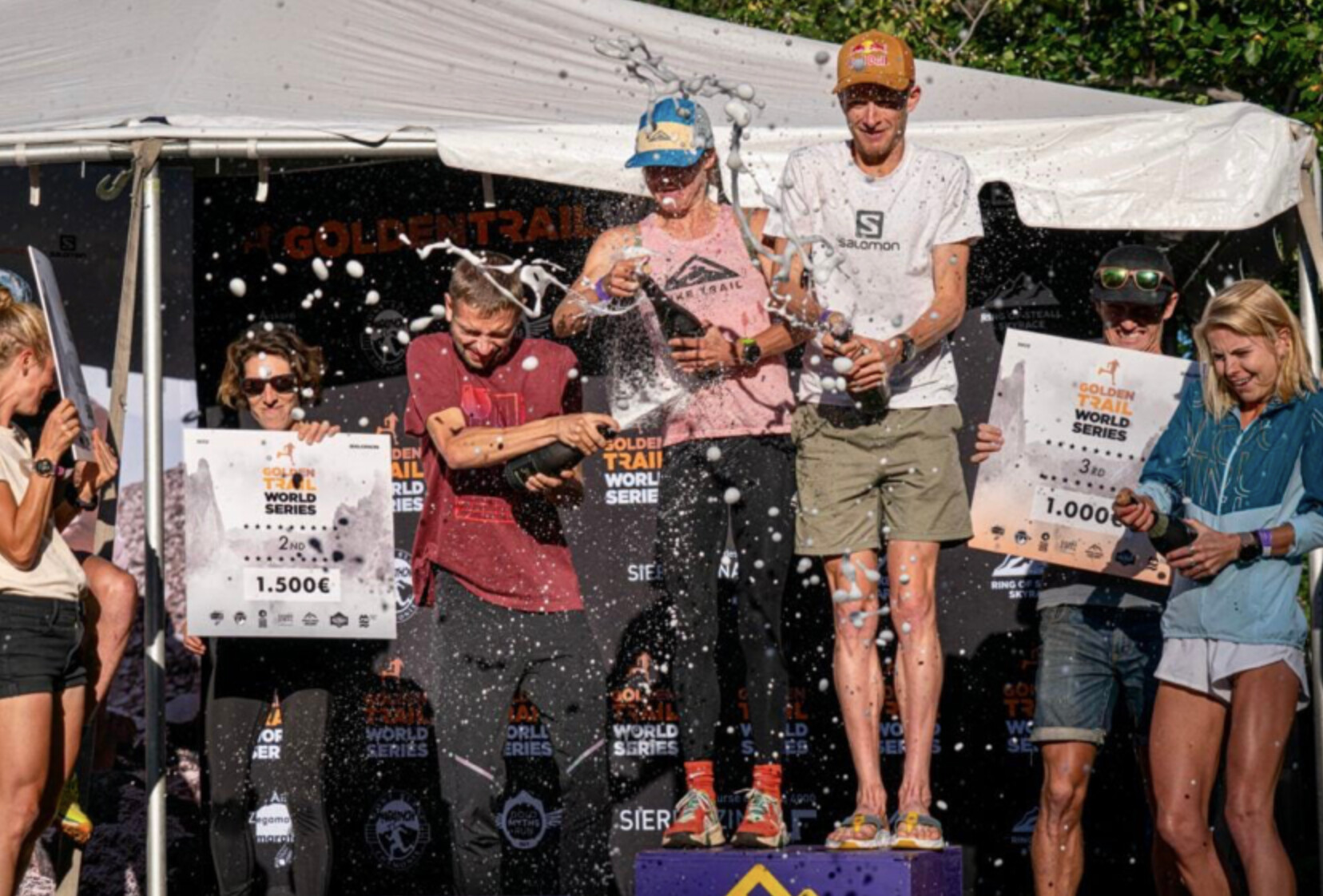
Run Rabbit Run is one of the rare American trail races that offers a relatively large prize purse, and for a decade, it's been the largest in the sport. Hughes earned $15,000 for winning the women's race and split another $5,000 with Arizona trail runner Peter Mortimer (who placed 12th overall) as part of the event's new team competition.
"That wasn't the reason I was drawn to the race, but it was definitely pretty cool to win that much money," Hughes said. "I'm glad I did it, because it wound up being a really great race with an amazing course on a beautiful day."
The origins of trail running were always more about the joy and freedom of ambling through the natural world, and less about the specific time and pace of any run or race, which is why winning big cash prizes is mostly uncommon in the sport, even for top-tier runners like Hughes. Over the past two years, Hughes has won 10 races of 50 miles or longer, yet her Run Rabbit Run victory was the first time she's ever earned money for her efforts.
More sponsorship money and bigger cash prizes are flowing into the sport, helping the top athletes earn a full-time living in the sport and become global stars. But that evolution has also created a desperate need for a unified governing body and more consistent drug-testing as doping becomes a more acute concern.
A Windfall of Prize Money
Historically, America's biggest and most notable trail running races haven't offered any prize money at all-Western States 100, Hardrock 100, Dipsea Trail Race, Leadville 100, Mount Marathon Race, Seven Sisters, Black Mountain Marathon/Mount Mitchell Challenge-partially because races simply couldn't afford to pay it, and also because, at the soul of the sport, that's not what the races were historically about or why most top runners were competing.
But with the continued growth of the sport-trail running has grown by 231 percent over the past 10 years, according to one report-and the dawn of a new level of professionalization over the past decade, there is a lot more money being injected into the sport. That includes more high-profile events and race series, more brands investing in the sport, more sponsored runners and trail running teams, as well as a growing expectation that prize money should be part of the equation as it is in road running, triathlon, and even obstacle course racing.
For many years, The North Face 50 near San Francisco was one of the only ultra trail races in the world to offer a significant prize purse. From its inception in 2006, until it disappeared after 2019, that race famously awarded $30,000 in prize money, which included $10,000 to the top finishers in the men's and women's races, plus $4,000 for second and $1,000 for third. It was a race to look forward to at the end of the calendar year, both for the cash awards and the prize-induced competition that drew top runners from around the world.
During that span, Run Rabbit Run, though a lower-profile race, quietly began dishing out some of the biggest payouts in the sport, in part because race organizers Fred Abramowitz and Paul Sachs believe in rewarding its top athletes for their efforts (as well as giving back to the community via even bigger charitable contributions). The race winnings come primarily from entry fees of the 600-runner event and sponsors, if and when the race has them. That wasn't possible back in the early days of the sport, when entry fees were minuscule and cash sponsors were mostly non-existent, but things have started to change.
Abramowitz and Sachs, who both earn their living as attorneys, are unique in that they want to give back to the elite athletes and the Steamboat Springs community, but they also want to help grow the sport. Abramowitz outlined what he calls "A Blueprint for Sponsors of Ultra Running," a three-page document that explains how and why trail ultrarunning-both as a sport and as individual races-can connect to more casual runners, sports fans, and the general public.
He points to the rampant growth of NASCAR, Professional Bull Riding, and professional poker over the past 20 years from their roots as fringe sports, relatively speaking, to mainstream spectacles with massive fan bases, TV contracts, and social media followings. Trail and ultrarunning aren't there yet, Abramowitz has noted, but they've certainly been growing rapidly.
"Today millions watch those events, though the actual number of participants is minuscule," Abramowitz wrote in his missive. "Ultrarunning can learn from these events: it needs new ideas, new ways of attracting the already committed runners and the casual sports fan to our terrific sport. Fields need to be competitive and races [need to be] dramatic; there are hundreds of 100-mile races, but those that offer competitive fields are a handful at most. Most ultra-races offer spectacular scenery in interesting venues."
Abramowitz said sponsors should support races such as Run Rabbit Run that offer prize money not merely because it's good for sport, but also because prize money can attract competitive fields, and competitive fields attract interest-from spectators, participants, potential sponsors, and the general public. He also points out that having prize money at more domestic races is a way to keep the sport from becoming entirely Euro-centric, which has been an increasing trend in the past several years.
The trend of cash purses seems to be increasing, and on the face of it, that's good for elite athletes capable of podium finishes. But it's a complex topic and one that certainly will simultaneously increase the competitiveness of the sport while, some argue, continue to pull the sport away from its organic, racing-in-nature roots that was mostly viewed as the antithesis of competitive road racing.
On the same day Run Rabbit Run paid out $75,000 in total prize money, the Pikes Peak Ascent awarded $18,000 in prize money for its top 10 finishers-including $3,000 apiece to the men's and women's winners-while the Pikes Peak Marathon, on September 18, had an additional $10,500 in total prize money for the top five runners. The races also offered $2,000 (Ascent) and $4,000 (Marathon), respectively, as course-record bonuses, and a $10,000 premium to any runner surpassing a pie-in-the-sky time well ahead of the course records. None of those records were broken, but the $28,500 in total prize money-partially backed by the Salomon-sponsored Golden Trail Series-was one of several large prize purses offered at U.S. races this year.
Other big American prize purses were also primarily tied to the Golden Trail Series events-the $50,000 spread over four races at the mid-June Broken Arrow Sky Races in Olympic Valley, California, and the September 25 Flagstaff Sky Peaks 26K race in Flagstaff, Arizona, where runners competed for $18,000 in prize money and a chance to compete at the Golden Trails World Series Final, and the $15,000 winner's earnings at the Madeira Ocean & Trails 5-Day Stage Race in October.
Also of note, the November 18-20 Golden Gate Trail Classic paid out $25,000 in total prize money to the top five finishers in both the 100K and half-marathon races, which were part of this year's nine-race $270,000 Spartan Trail World Championship Series.
Meanwhile, the Cirque Series, sponsored by On, paid out $3,600 in total prize money at each of its six sub-ultra mountain running races in the U.S., including $1,000 for the men's and women's winners. The Mt. Baldy Run-to-the-Top on September 5 in Southern California offered $3,000 to runners who broke the event's longstanding course records, and Joe Gray and Kim Dobson obliged by taking down each mark.
Most U.S. Trail and Mountain Running Championships have a minimum of $2,000 in prize money. Typically that comes from regional sponsors eager to support the local race organizations, such as the case with Northeast Delta Dental's contributions behind this year's Loon Mountain Race in Lincoln, New Hampshire, which hosted the U.S. Mountain Running Championships. That event had a $1,500 total prize purse that was paid out to the top three men and women in each race, but it also had an additional $1,500 for an Upper Walking Boss premium that was spread among the top three fastest times in each gender on the super-steep upper part of the course.
Meanwhile, the 2022 World Mountain and Trail Running Championships in Thailand paid out $66,000 to the top five finishers over four races, including $4,000 to the winners of each event.
"(The prize money) is way better than it's ever been, both for the athletes earning it and the number of sponsors who are contributing to it," says Nancy Hobbs, executive director of the American Trail Running Association and the chairperson of the USATF Mountain Ultra Trail Council that oversees national championship races and the U.S. Mountain Running Team.
From a longer view over the past decade or so, Joe Gray agrees there is more money coming into the sport than ever before. As a top-tier pro since 2008 and 21-time U.S. champion, he's regularly won more prize money at high-level races in Europe for more than a decade. But more than the growth of prize money, he has seen more brands interested in putting money behind athletes, races, and the sport in general.
"I think there has always been prize money there, and if you're successful you could make a lot more money really quickly," said Gray, a two-time World Mountain Running Champion. "I do think there is more money coming from the sponsors paying out better contracts and bigger bonuses, which I think will wind up being more beneficial to athletes overall."
Most elite trail runners get annual stipends from their sponsoring brands and bonus money for top performances. Gray is backed by Hoka, but he also has sponsorship deals with Fox River Socks, Kriva, Never Second, Knockdown, Tanri, Momentous, Casio, and GoSleeves. In addition to Hoka, Annie Hughes gets additional support from Ultraspire, Coros, and Tailwind Nutrition. But the life of professional trail runners-independent contractors who don't get healthcare and retirement program benefits-can get expensive with the growing cost of travel, regular bodywork/physio treatments, and private health insurance.
The sport's top-tier elite athletes-Joe Gray, Kilian Jornet, Courtney Dauwalter, Jim Walmsley, Maude Mathys, and Scott Jurek, among others-make a good living from their sponsorships. But there are really only a handful American trail runners making more than about $50,000 a year from shoe brand sponsorships. (Most "sponsored" trail runners are making somewhere between $10,000 to $30,000 per year.) The bottom line is that winning prize money, for those who are fast enough to consistently finish on the podium in big races, certainly helps make ends meet and is necessary to keep the sport's top athletes from having to work other jobs so they can focus entirely on training, recovery, and racing.
"This [2022] is the first year I've gone all-in on trail running," said Hughes, who worked as a waitress in Leadville the previous two years. "I'm able to live off what I make, but I'm not really saving anything. So it was really nice to win that money because then I can put some away in savings."
Higher European Standards
So far, Abramowitz appears to be right about the sport shifting to more of a European focus, and it's, at least in part, tied to the increased prize money that has attracted competitive athletes. While many top-tier European events have paid out modest prize purses for years, some of those races have also helped out visiting runners by way of travel stipends, hotel accommodations, or appearance fees. That's partially because European races are generally larger (500 to 1,000 participants or more) than U.S. races (typically fewer than 500 participants).
Unlike Hughes, who only raced in the U.S. this year, American runner Abby Hall, who runs for the Adidas-Terrex team, raced three times in Europe and earned prize money each time. She placed second in the Transgrancanaria 126K in the Canary Islands in March (which doubled as the Spartan Trail World Championship), finished third in the CCC 100K in Chamonix in August, and won the Transvulcania by UTMB 72K back in the Canary Islands in October.
Like Hughes, Hall receives an annual stipend and race bonuses from her sponsor, but admits it's been nice to have more opportunities to win money-both because it helps her make a living wage and because it's consistent with other professional endurance sports.
"In the past, it hadn't even been a consideration before, for how income would work out as an athlete," Hall said. "But this year it actually added up to be a decent amount. I'm grateful for the opportunities."
In 2022, American runner Hayden Hawks won an off-the-radar 100K a race in Krynica, Poland, and brought home the 100,000 zloty winner's prize ($26,000), one of the bigger individual purses ever awarded in trail running. In 2017, when Hawks won the CCC race, he didn't win anything because UTMB had refused until 2018 to offer prize money at its races, partly because race founders Catherine and Michel Poletti have believed that increased prize money will bring more incentive for some athletes to consider doping or that agents would take too big of a cut.
UTMB finally began offering prize money to podium finishers in 2018 with a total purse of about $34,000 (35,000) and continued that through 2021. But after forging a business relationship with Ironman and launching the new UTMB World Series, it has increased the prize money awarded in Chamonix. In 2022, UTMB said it paid out about $162,000 in total prize money (the approximate equivalent of its stated 156,000 prize purse) to the top 10 men and women finishers of the UTMB, CCC, and OCC races.
That includes $10,400 to the winners of each of those races, with approximately $5,200 going to second-place finishers and $3,125 for third. Fourth- and fifth-place finishers in each of those races earned about $1,500, while 6th through 10th took home $1,000.
While those more notable ultrarunning paydays can be big windfalls for a trail runner, they still pale in comparison to what elite-level road marathoners and triathletes earn at the biggest races that have a much larger audience, including live TV coverage. For example, the 2022 Boston Marathon awarded $876,500 in prize money and $150,000 to the winners, while New York City Marathon paid out $530,000 in total prize money at its November 6 race, including $100,000 to the men's and women's winners. The 2021 Ironman World Championships in St. George, Utah, had a $750,000 prize purse, including $125,000 to the winners, similar to what was awarded at the 2022 Ironman World Championships October 6-8 in Hawaii.
While only a few top trail runners could have opted to pursue a marathon or triathlon career instead of trail running, what's more relevant is the spike of growth trail running. Although it is not yet internationally televised as major marathons and triathlons are, the surge in participation and livestream viewing options is starting to bring in more media attention and sponsorship money than ever before. And more media attention begets more participation and professionalization.
"I think we'll definitely see ultra-trail running continue to grow for years to come," says Mike McManus, director of global sports marketing for Hoka. "I think it's at a point where it's just on the cusp of the real growth that's coming and all that will come with it, similar to where the marathon was in the 1980s and triathlon in the 1990s. It might never be as big as marathoning, but trail running will definitely get more built out as it continues to grow."
"It's nice to make some money for the sport we do. This is my job, and being able to support my family with a decent chunk of money is pretty nice," Hawks says. "I definitely don't go after races just for money, but if there is a gap in my schedule where I can win a little bit of money, I am definitely going to take advantage of that for sure. I want to continue to be in this sport and live this lifestyle as long as I can, so knowing that there are sponsors and races investing more in runners is something I am really grateful for."
The Ongoing Dilemma
While Abramowitz and Sachs have been eager to give out prize money at Run Rabbit Run, not all races are equipped to do so. Many U.S. races are garage-shop operations that barely break even, while some are just too small to make it happen. The Western States 100-Mile Endurance Run (WSER) is operated by a non-profit organization, and offering prize money goes against the mission of the race, says race director Craig Thornley.
The biggest concern that race directors have, including Thornley, is that prize money attracts athletes willing to use performance-enhancing drugs because the sport lacks a comprehensive anti-doping strategy that includes both post-race testing and out-of-competition testing.
"In general, I think the prize money is probably a good thing because professional athletes are able to make a living," Thornley said. "But I think, as a sport, we'll probably have to be more aware of people trying to use drugs or some other ways to get that prize money."
A few years ago, the Western States 100 famously announced its zero-tolerance policy regarding the use of performance-enhancing drugs (PEDs) that prohibits any athlete who has been determined to have violated anti-doping rules or policies-by World Athletics, World Anti-Doping Agency (WADA), U.S. Anti-Doping Agency (USADA), or any national sports federation-is ineligible for entry into the WSER. Although Western States has regularly drug-tested its top finishers, only a few other big trail or ultra-distance races test its finishers with a WADA-sanctioned program.
Thornley believes the incentive to cheat has probably increased as more brands have stepped up to sponsor athletes, but the increase in prize money probably makes it more tangible.
He's not the only one. Ultrarunning coach and podcaster Jason Koop, an outspoken proponent for authentic drug-testing in the sport, agrees, saying that it's time for the sport to collectively start developing mandatory drug-testing protocols, even on a small scale. While he doesn't believe doping is prevalent in trail running, he believes it's definitely already an issue.
"People would be fooling themselves if they thought that every trail running performance was clean. If you think that that's the case, then I have a bridge to sell you," Koop says. "Prize money or no prize money, I think the bigger thing is that the ecosystem is developed enough and there is enough financial reward at stake to where everyone kind of owes it to everybody else to get something done."
In other words, it's time for the sport to take some next steps-either by big governing bodies or small factions of people interested in the long-term health of the sport-to develop more structure and universal anti-doping policies.
by Trail Runner Magazine
Login to leave a comment
Top 10 most popular running stories of 2022
Tt’s time to recap the most popular running stories. This year, the running community saw a lot of firsts and controversies. It was the first time we were made aware of a 6-year-old running a marathon; it was also the first time we saw a runner who chain-smoked during a marathon. As many of us returned to our favourite races and conquered new goals, we can’t ignore some of the mind-boggling stories.
Here is a countdown of the top 10 most popular running stories of the year.
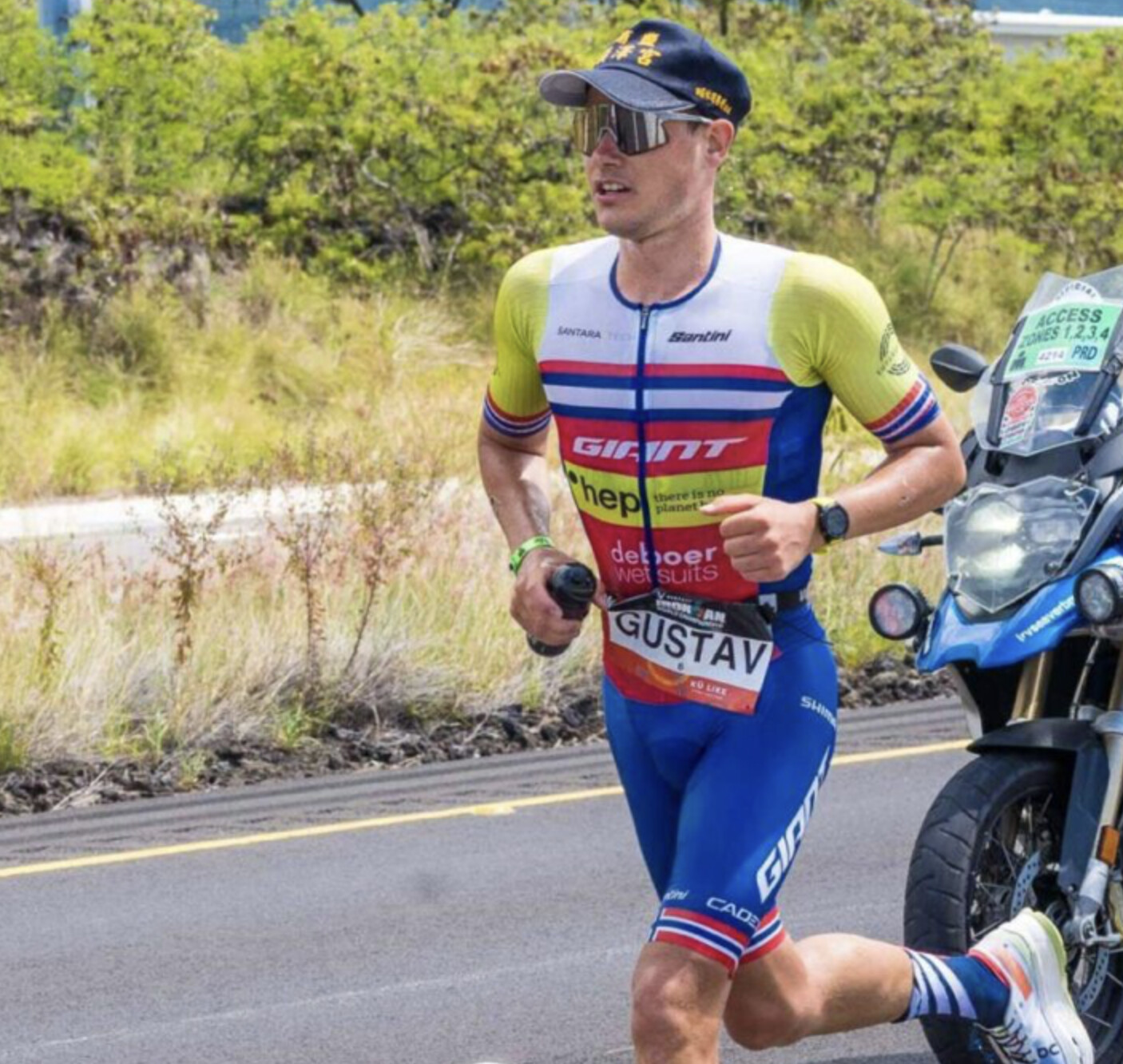
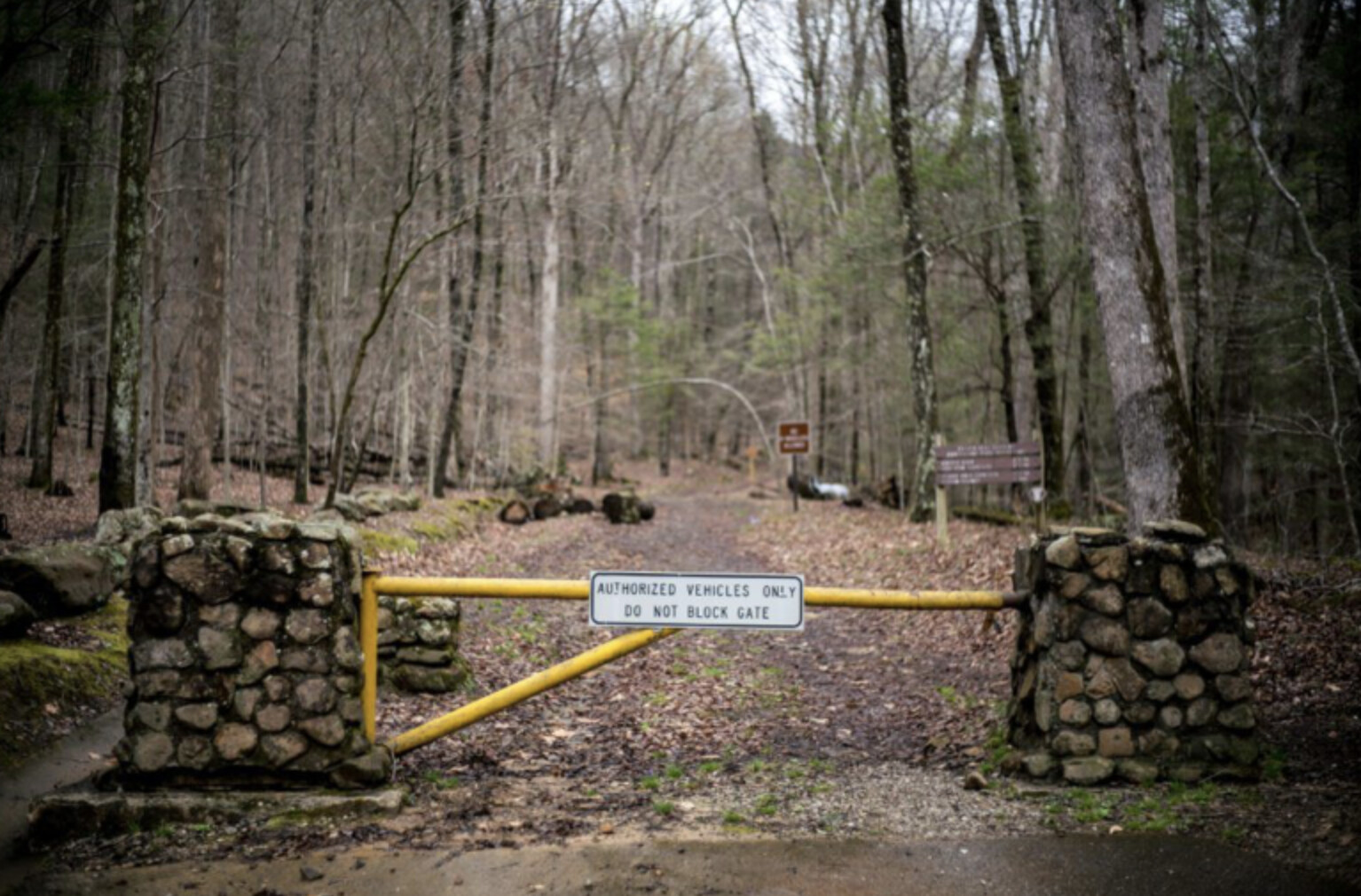
10) Ironman World Championship champion’s “chunky” shoes spark controversy
In October, Norway’s Gustav Iden made headlines as he ran a 2:36 marathon after a 180-kilometre bike and 3.8 km swim, earning his first Ironman world championships title. It wasn’t only his wild time that turned eyes, but the On Cloudboom Echo 3 carbon-plated running shoes that he wore, which have a reported stack height of 50 mm (legal for Ironman races).
9) Six-year-old’s marathon sparks controversy on social media
In May at the Flying Pig Marathon in Cincinnati, Ohio, a family of eight from Bellevue, Ky., all completed the 26.2-mile race together in eight hours and 35 minutes, including two children aged 12 and six. The family took on tons of criticism over the advisability of allowing a six-year-old to cover the marathon distance. Many experienced marathoners and coaches, including Lee Troop and Kara Goucher, have weighed in online, stating that six is too young for the marathon.
8) Turkey trot runner takes out his competitor at finish line
In November at a local 10K turkey trot, Xavier Salvador of Washington, D.C., impeded the line of Jack Huber of Delmar, N.Y., with 50 metres to go, after noticing Huber threatening to pass him on the right. Instead of checking if Huber was OK after the fall, Salvador made sure his GPS watch was stopped.
7) Barkley Marathons ends with no finishers (again)
In March, for the fifth straight year, the Barkley Marathons in Frozen Head State Park near Wartburg, Tenn., came to an end with zero finishers, after the only remaining two competitors, Karel Sabbe and Greig Hamilton, bowed out on their fourth loop (of five) of the 20-plus mile course. Sabbe’s fourth loop was one for the history books, as he was found off-course in another town, chatting with a garbage can who he thought was a person.
6) ‘Ultramarathon man’ Dean Karnazes attacked by coyote during 150-mile race
In August, acclaimed ultrarunner and author Dean Karnazes posted a video that he was attacked by a coyote during Headlands 150-mile Endurance Run, held outskirts of San Francisco. Karnazes said was OK, but that he had several cuts on his face and body from the attack.
5) “Poopgate” continues as Arizona high school bans track use
In February, human feces were found under the bleachers at the Red Rock High School track in Sedona, Ariz., which resulted in a ban on public use. In the aftermath, there was plenty of buzz and finger-pointing on social media about the ghost pooper’s possible identity, using the hashtag #poopgate. To this day, it is still a mystery who did the deed.
4) California man runs an ultramarathon in roundabout
In November, a runner from Healdsburg, Calif., was getting tired of his usual running routes, so he went out on a six-hour, 58-kilometre run around the local roundabout, never once switching directions. The best part is that, a week later, he did it again, in the opposite direction.
3) WATCH: Florida high school runner gets sucker punched mid-race
In March, we saw a candidate for “wildest video of the year” when a high school runner at a Florida track meet was sucker punched and knocked to the ground by another athlete during a 1,600m race.
2) Colorado runner wins all four races at Disney Marathon weekend
In January, Brittany Charboneau of Colorado climbed to the top of the podium on four occasions during the Disney Marathon Weekend in Orlando, Fla. She won the 5K, 10K, half-marathon and marathon over four days, while dressed as her favourite Disney characters. Simply amazing!
1) Chinese man runs a 3:28 marathon while chain-smoking
In November, we witnessed one of the wildest running stories ever, when Uncle Chen went viral for chainsmoking cigarettes during the Xin’anjiang Marathon in Jiande, China. It is well known that smoking cigarettes hinder running performance, but that didn’t seem to bother 50-year-old Uncle Chen, who clocked an impressive three hours and 28 minutes.
by Running Magazine
Login to leave a comment
Camille Herron sets new 100-mile record at Desert Solstice Invitational
Ultrarunning champ Camille Herron, 40, set a new American 100-mile track open record in 13:02:16 (pending verification) on Sunday at Desert Solstice Track Invitational in Pheonix, Ariz., bettering her record from last year’s event, when she finished in 13:21:50.
“Desert Solstice was a magical experience once again,” Herron shared on social media post-race. “I aimed to go quicker than 100-mile pace, to achieve my 50 mile and 100K track American records. Then it was a test of ultra grit.”
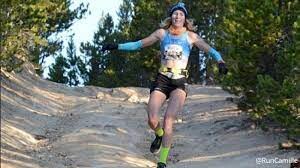
Herron nailed her goals, improving her American records in the 50 mile (5:57:46) and 100K (7:35:50), along with multiple age group records–for a grand total of eleven records at the event. She tapped out of the 24-hour elite invitational race at the 100-mile mark.
Herron led the race until the 50-mile mark, when she took an 11-minute break to deal with some GI distress. “I persevered through the pain, fatigue, and a few bouts of puking to get my 100-mile track American record–unofficially a track world record and masters WR too, 13:02:16, 7:49 per mile (4:51/km),” the runner shared.

“I feel the best in my life right now at age 40 (turn 41 on Christmas),” added Herron. It’s an exciting time in my career, and we’ll keep the ball rolling into 2023. I’m looking forward to a break to recharge and go to Ireland for Christmas.” 2022 is ending on a high note for the athlete, who has had a challenging year dealing with some controversy around the ratification of her world 100-mile road record set at Jackpot Ultrarunning Festival in February.
California-based repeat champ Marisa Lizak was the overall winner of the 24-hour race with 252.18 kilometres (156.7 miles), bettering her PB for the fixed time by four miles, and qualifying her for the U.S. 24-hour team. Lizak, who was second at Spartathlon earlier this year, now ranks third on the all-time chart behind Herron and Courtney Dauwalter.
New Canadian 12-hour record
Canada’s Amanda Nelson set a new Canadian 12-hour record of 135 kilometers, (previously 134.025 km) and was the 3rd place female finisher in the 100-mile event behind Herron and Lisak. She was the 5th woman finisher in the 24-hour event with 15 hours of running.
Nelson set out to tackle the 24-hour Canadian record, but readjusted her goals after experiencing some severe GI issues.”I hit my B goal in the 100-mile event, with my second fastest time of 14:53:47. On my way to 100 miles I managed to better my existing 12-hour national record,” Nelson says.
Heading into the race, Nelson says she knew track running wasn’t her thing. “I do not enjoy such a tight, flat loop course but I needed to see how I could do in an elite field of runners,” she says, describing it as “a whole other feeling.” Nelson says faster paces felt easier for longer and shared, “it was fun for a while, chasing other like-minded athletes. I did what I could on that day.”
Nelson opted to stop after the 100-mile mark, explaining: “Not every race is going to go as planned and we have to learn to trust ourselves and listen to our bodies. I feel that stopping after 100 miles was the right decision for me this past weekend and still feel incredibly accomplished with what I had achieved.”
Whitby, Ont.’s Viktoria Brown was also competing but shared that she wasn’t feeling her best from the start of the race, mentally and physically, and ended up dropping out after 11 hours. After an extremely successful season that included breaking three national records and competing at IRONMAN Kona, Brown says she had possibly simply reached her limit for the year.
“My 24-hour split at 6 Days in the Dome of 213 kilometers puts me in second place for the Canadian 24-hour team, behind Amanda. I feel that I made the right decision to save myself for a better day.”
Login to leave a comment
Gwen Jorgensen to make shock triathlon comeback ahead of Paris 2024
The 2016 Olympic champion Gwen Jorgensen has announced a surprise return to triathlon – with the Mixed Team Relay at the Paris Olympics in 2024 her primary target.
The American was a legend of the sport, becoming what was then the ITU World Triathlon Champion in both 2014 and 2015 in addition to her Olympic title, the USA’s first ever triathlon gold medal.
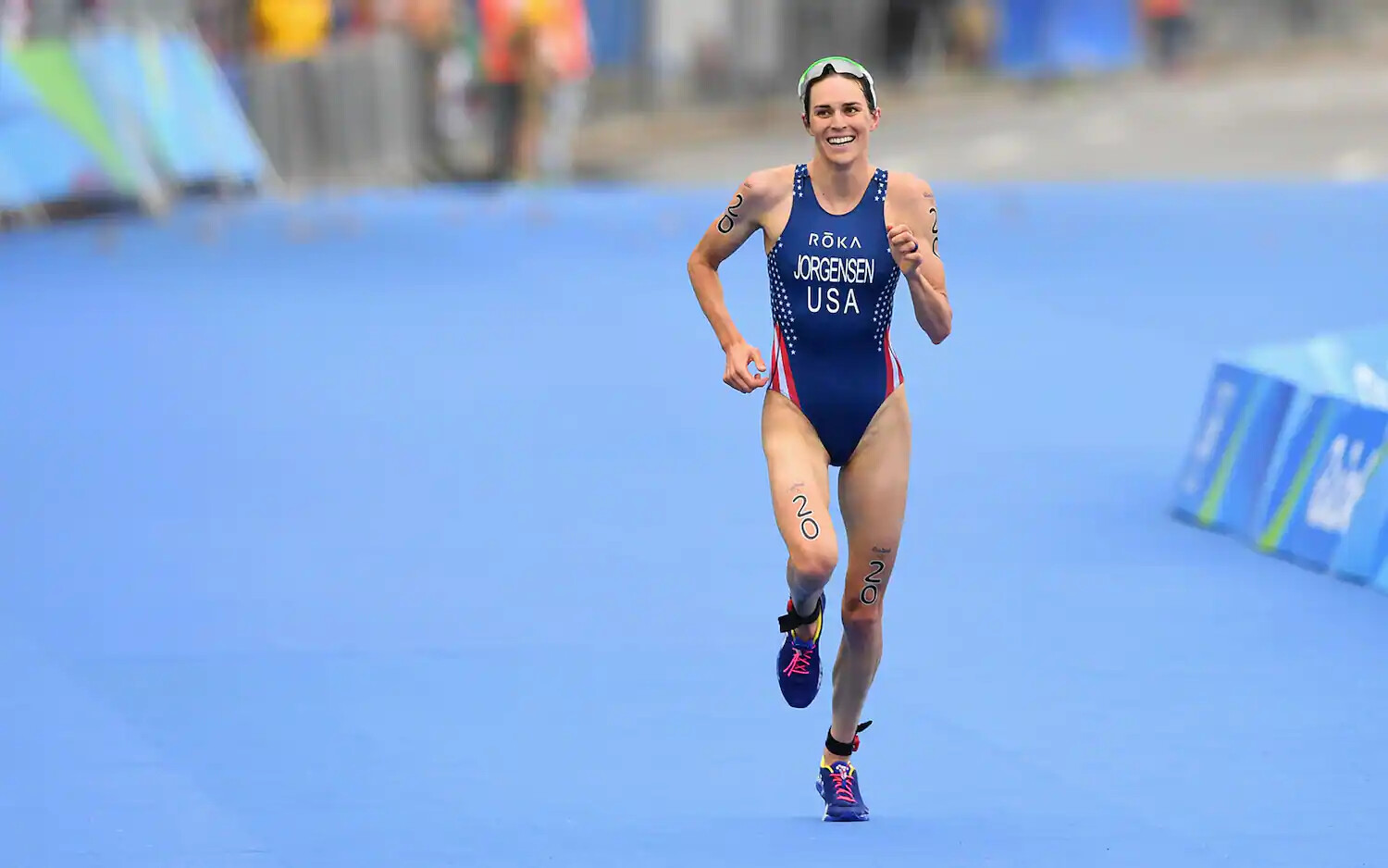
She announced her retirement late in 2017, with her focus then switching to running and trying to win an Olympic Marathon title in Tokyo but injuries hampered that and she recently gave birth to her second child, George, who is a younger brother to five-year-old Stanley.
Inspired – and inspiring
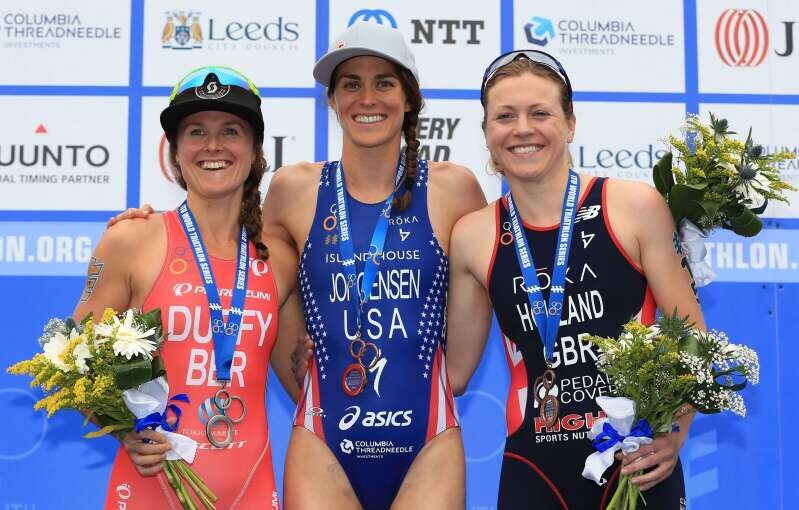
She revealed her shock comeback to swim / bike / run on her social media channels, posting on Instagram: “I am thrilled to announce my return to the blue carpet. I’m collaborating with my team to return to form and look forward to the work ahead as I invest in myself and USA Triathlon.
“I am inspired by the mixed-team relay’s silver medal in Tokyo and aspire to contribute to that team in 2024. I believe team USA can be one step higher in Paris!
“As a mom of two and long-time supporter of USA Triathlon, I strive to set an example that motivates and inspires my family, moms everywhere, and team USA.”
And World Triathlon responded immediately to the news, saying: “We are thrilled to welcome you back on the blue carpet Gwen Jorgensen.”
Going into more detail on a YouTube video, embedded below, she added: “I’m coming back to World Triathlon – what was then ITU – but what I’m really excited about is the Mixed Team Relay, which wasn’t an event at the 2016 Olympics.
“That is what is really motivating me to come back to triathlon. The Olympics are coming up really quick and the timeline is super short.
“There is a qualifying event in August 2023 and for me to even get on that startline is going to be super difficult so I’m probably going to be forced to race earlier than I’d like to but… I just gotta dive in and get started.”
The USA can qualify three women for the Olympics, with the likes of Taylor Knibb and Taylor Spivey two of the leading current contenders – and Jorgensen will have to race the individual to be in contention for the Mixed Team Relay (which features two women and two men).
‘Having kids doesn’t mean your career is over’
She speaks candidly about the practicalities of looking after her two children while fitting in her training and explained that an au pair will help with that process.
“I always thought I couldn’t be a mum and an athlete and it was other women who actually inspired me and let me know that I actually can do both.
“Nicola Spirig was probably the biggest motivator for me. She got silver at the 2016 Olympics having had a child. And then she had two more kids and came back and went to the Tokyo Olympics.
“She was a big motivator showing me that having kids doesn’t mean your career is over.”
There have been other inspiring examples too, highlighted by Chelsea Sodaro winning the IRONMAN World Championship at Kona this year, 18 months after giving birth to her first child.
by Jonathan Turner
3598
Login to leave a comment
Who Wore Which Shoes at the New York City Marathon?
The running shoe hype train was high in New York City with a few fast yet-to-be-released shoes in the men’s and women’s elite fields.
For a few miles early in the New York City Marathon, Desi Linden surged into the lead of the women’s elite field. The two-time Olympian and 2018 Boston Marathon champion didn’t think she’d run away and win the race that way, but she was just trying to keep the pace honest.
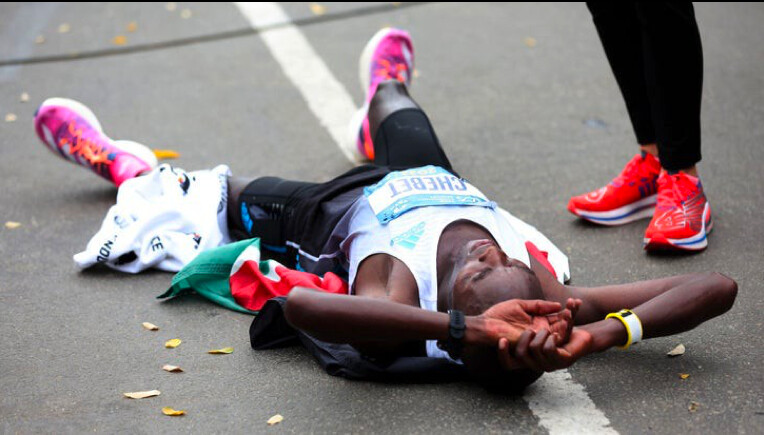
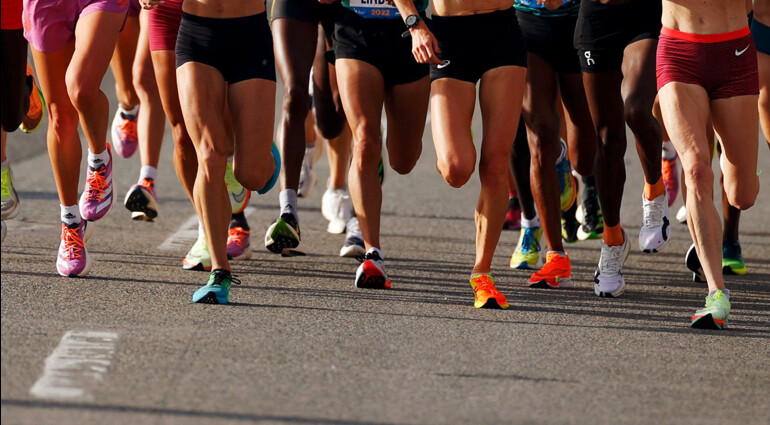
However, hiding in plain sight on her feet as she was off the front of the pack was a yet-to-be-released pair of orange, white and black Brooks prototype racing shoes. A day later, no one is willing to give up any details of the shoe, except that, like all of the other top-tier racing shoes in both the men’s and women’s elite fields, it features a carbon plate embedded in a hyper-responsive foam midsole. And although it’s all in accordance with World Athletics regulations, it won’t be released in Spring 2024 … so we’ll all have to wait a bit to see what that shoe is all about.
Linden’s shoes weren’t the only speedy outliers among the top 25 men’s and women’s finishers. While Nike, Adidas and ASICS shoes were the most prevalent brands among elite runners, there were several shoes that aren’t yet available to the public.
For example, the first runner to cross the finish line of this year’s New York City Marathon, women’s winner Sharon Lokedi, was wearing a pair of Under Armour Velociti Elite shoes. That’s notable for several reasons—because it was Lokedi’s first marathon, because the shoe won’t become available until early 2023 and because it’s the first podium finish at a major international marathon for a runner wearing Under Armour shoes.
There were also three pairs of yet-to-be-released Hoka Rocket X 2 shoes on the feet of three Hoka NAZ Elite runners — two of whom set new personal best times, Aliphine Tuliamuk (7th, 2:26:18) Matthew Baxter (12th, 2:17:15). Those fluorescent yellow shoes with orange, white and blue accents and blue laces were on the feet of Hoka pros at the Boston Marathon in April and Ironman World Championships in Hawaii in October, but they won’t be released to the public until late February or early March.
Meanwhile, the winner of the men’s race, Evans Chebet, was wearing a pair of Adidas Adizero Adios Pro 3, a shoe worn by four other runners in the top 25 of the men’s race and six among the women’s top 25, making it the second most prevalent model among the elites. Oddly, that was the same shoe worn by Brazil’s Daniel do Nascimento, who went out at record-setting sub-2:03 pace on his own, only to crumple to the ground at mile 21 after succumbing to fatigue and cramping.
The most common shoe among the top finishers was the Nike ZoomX Vaporfly Next% 2, which was on the feet of 11 of the 50 runners among the women’s and men’s top 25 finishers. There were eight runners wearing either the first or second version of the ASICS MetaSpeed Sky.
Six runners wore Nike Air Zoom Alphafly Flyknit shoes, three wore Nike Air Zoom Alphalfy NEXT% 2. There were two pairs of On Cloudboom Echo 3 in the field, including those worn by Hellen Obiri who finished sixth while running a 2:25:49 in her marathon debut, while three runners wore Puma Fast R Nitro Elite.
And what about actor Ashton Kutcher? He wore a pair of purple Nike Air Zoom Alphafly NEXT% Flyknit shoes and finished in a very respectable 3:54:01.
Matt James, the former lead of the Bachelor, finished in 3:46:45 with Shalane Flanagan as his guide wearing a pair of New Balance FuelCell Comp Trainer shoes. Flanagan wore Nike Air Zoom Alphafly Next% Flyknit shoes, as did Meghan Duggan, an Olympic gold medalist hockey player who ran a solid 3:52:03. Lauren Ridloff, actress from “The Walking Dead,” ran in a pair of Brooks Glycerin 20 and finished in 4:05:48, while Chelsea Clinton, daughter of Bill and Hillary Clinton finished in 4:20:34 wearing a pair of Brooks Ghost 14 and Tommy Rivers Puzey (aka “Tommy Rivs,” a former elite runner who survived a deadly bout of cancer in 2020, wore a pair of Craft CTM Ultra Carbon Race Rebel and finished in 6:13:54.
Here’s a rundown of what was on the feet of the top 25 women’s and men’s finishers in the Big Apple.
1. Sharon Lokedi (Kenya) 2:23:23 — Under Armour Velociti Elite
2. Lonah Salpeter (Israel) 2:23:30 — Nike ZoomX Vaporfly Next% 2
3. Gotytom Gebreslase (Ethiopia) 2:23:39 – Nike ZoomX Vaporfly Next% 2
4. Edna Kiplagat (Kenya) 2:24:16 — Nike ZoomX Vaporfly Next% 2
5. Viola Cheptoo (Kenya) 2:25:34 — Adidas Adizero Adios Pro 3
6. Hellen Obiri (Kenya) 2:25:49 — On Cloudboom Echo 3
7. Aliphine Tuliamuk (USA) 2:26:18 — Hoka Rocket X 2
8. Emma Bates (USA) 2:26:53 — ASICS MetaSpeed Sky+
9. Jessica Stenson (Australia) 2:27:27 – ASICS MetaSpeed Sky
10. Nell Rojas (USA) 2:28:32 — Nike Air Zoom Alphafly Flyknit
11. Lindsay Flanagan (USA) 2:29:28 – ASICS MetaSpeed Sky
12. Gerda Steyn (South Africa) 2:30:22 — Adidas Adizero Adios Pro 3
13. Stephanie Bruce (USA) 2:30:34 — Hoka Rocket X 2
14. Caroline Rotich (Kenya) 2:30:59 — ASICS MetaSpeed Sky+
15. Keira D’Amato (USA) 2:31:31 — Nike Air Zoom Alphafly Flyknit
16. Des Linden (USA) 2:32:37 — Brooks Prototype
17. Mao Uesugi (Japan) 2:32:56 — Adidas Adizero Adios Pro 3
18. Eloise Wellings (Australia) 2:34:50 — Adidas Adizero Adios Pro 3
19. Sarah Pagano (USA) 2:35:03 — Adidas Adizero Adios Pro 3
20. Grace Kahura (Kenya) 2:35:32 — Nike ZoomX Vaporfly Next% 2
21. Annie Frisbie (USA) 2:35:35 — Puma Fast R Nitro Elite
22. Molly Grabill (USA) 2:39:45 — Nike Air Zoom Alphafly NEXT% Flyknit
23. Kayla Lampe (USA) 2:40:42 — ASICS MetaSpeed Sky+
24. Maegan Krifchin (USA) 2:40:52 — Adidas Adizero Adios Pro 3
25. Roberta Groner (USA) 2:43:06 — Nike Air Zoom Alphafly NEXT% 2
1. Evans Chebet (Kenya) 2:08:41 — Adidas Adizero Adios Pro 3
2. Shura Kitata (Ethiopia) 2:08:54 — Nike ZoomX Vaporfly Next% 2
3. Abdi Nageeye (Netherlands) 2:10:31 — Nike ZoomX Vaporfly Next% 2
4. Mohamed El Aaraby (Morocco) 2:11:00 — ASICS MetaSpeed Sky+
5. Suguru Osako (Japan) 2:11:31 — Nike ZoomX Vaporfly Next% 2
6. Tetsuya Yoroizaka (Japan) 2:12:12 — Nike ZoomX Vaporfly Next% 2
7. Albert Korir (Kenya) 2:13:27 — Adidas Adizero Adios Pro 3
8. Daniele Meucci (Italy) 2:13:29 — ASICS MetaSpeed Sky+
9. Scott Fauble (USA) 2:13:35 — Nike Air Zoom Alphafly NEXT% 2
10. Reed Fischer (USA) 2:15:23 — Adidas Adizero Adios Pro 3
11. Jared Ward (USA) 2:17:09 — Saucony Endorphin Pro 3
12. Matthew Baxter (New Zealand) 2:17:15 — Hoka Rocket X 2
13. Leonard Korir (USA) 2:17:29 — Nike ZoomX Vaporfly Next% 2
14. Matthew Llano (USA) 2:20:04 — Under Armour Velociti Elite
15. Olivier Irabaruta (Burundi) 2:20:14 — On Cloudboom Echo 3
16. Hendrik Pfeiffer (Germany) 2:22:31 — Puma Fast R Nitro Elite
17. Jonas Hampton (USA) 2:22:58 — Adidas Adizero Adios Pro 3
18. Alberto Mena (USA) 2:23:10 — Nike ZoomX Vaporfly Next% 2
19. Jacob Shiohira (USA) 2:23:33 — Nike Air Zoom Alphafly Flyknit
20. Edward Mulder (USA) 2:23:42 — Nike Air Zoom Alphafly Flyknit
21. Jordan Daniel (USA) 2:24:27 — Nike ZoomX Vaporfly Next% 2
22. Nathan Martin (USA) 2:25:27 — ASICS MetaSpeed Sky+
23. Jeff Thies (USA) 2:25:45 — Nike Air Zoom Alphafly NEXT% 2
24. Shadrack Kipchirchir (USA) 2:28:15 — Puma Fast R Nitro Elite
25. Abi Joseph (USA) 2:29:16 — Nike Air Zoom Alphafly Flyknit
by Outside
Login to leave a comment
Take a Sneak Peek into 'Born to Run 2'
Thirteen years after the publication of Christopher McDougall's popular book, Born to Run, the author teams up with renowned running coach Eric Orton for Born to Run 2: The Ultimate Training Guide, a fully illustrated, practical guide to running for everyone from amateurs to seasoned runners, about how to eat, race, and train like the world's best. Born to Run 2 will be available on December 6, 2022, but you can read this excerpt from the book.
Chapter 8: Form - The Art of Easy
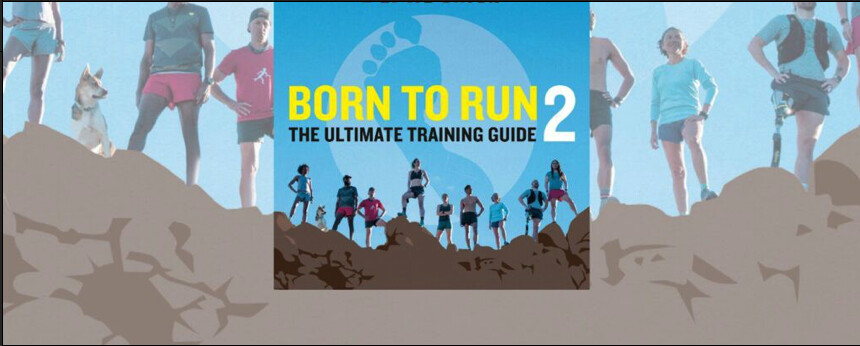
Eric promised he could teach running form in ten minutes. If I had to estimate, I'd guess he was miscalculating by a factor of at least 7,000 percent, so I subjected his proposition to lab testing and gave it a try myself:
I hit Pause and checked my watch. Then I tried it again. Each time, I found Eric's estimate to be wildly exaggerated. It wasn't even close to ten minutes. More like five.
One song. One wall. Three hundred seconds. If someone had only shared this secret with Karma Park, it could have saved her a world of misery.
Karma was such a disaster, the Navy honestly couldn't tell if she was a terrible runner or a terrific actor. How she even made it into boot camp was a mystery.
The strange thing was, running was her only weakness. Chuck her out of a boat at sea? No problem. Pull-ups, push-ups, crunches? Piece of cake. Karma was a competitive swimmer and varsity wrestler growing up, so two-hour workouts were in her blood. But ask her to run a mile and a half? In under thirteen minutes? Not a chance. Over and over she tried, and every time she ended up walking, grabbing her ribs from stitches and wincing from aches in her legs.
"I'm pretty sure the recruiter fudged the numbers on my Physical Readiness Test so she could get me in," Karma believes. "I finished the run and thought, Oh crap, I'm a minute too slow, and she's like, 'No, no, you're good.' "
When Karma got to basic training, she gritted her teeth and did her best. The Navy was her ticket to a dream life, so there was no way she was giving up. Karma was twenty-five at the time, with a wife in law school and hopes of becoming a surgeon. The surest path toward financing their future was a career in the military. Besides, she had a debt to pay back. Karma came to America from South Korea at age eleven, and while, yeah, maybe Alabama wasn't the most welcoming place for a foreign kid with budding gender issues, Karma was still deeply grateful for the life her family was able to create there.
"I really wanted to serve this country," she says. "But in boot camp I was in and out of sick bay all the time." Karma chanted the drill instructors' mottoes to herself-Pain is only skin deep! Heel to toe! Heel to toe!-but the harder she pushed, the more she broke down. "At first maybe they were checking that I wasn't dogging it," Karma recalls. "I can see how I would be suspected because I feel that other recruits faked it to get out of running, but I was in so much pain, they knew something else was going on."
Finally, Navy doctors diagnosed Karma with chronic hip displacement. She was ordered to report to the long-term sick bay, where she'd be stuck for as long as it took-a month, six months, a year-for her to either heal or quit. Those were her options: get better, get faster or get out.
Karma was crushed, but privately vindicated: ever since she was young and her mom would sign the whole family up for local 5Ks as a way of assimilating into their new home, Karma knew she couldn't run. "My dad and I would walk at the back of the pack, and I thought, This is the most ridiculous thing ever. We have cars and bikes, why are we running? I was really fit in all the other aspects of PE, but with running, I tried and tried and never got any better."
Back in civilian life, Karma struggled. She put her own education on hold and began managing a Subway so her wife could finish law school. She began putting on weight, but when she tried to exercise, her old leg injuries flared up and she finally discovered the real cause of her pain was rheumatoid arthritis. The medication made her lethargic and bloated, and her body ached so badly she needed a cane to walk.
Karma was in a bad spiral that nothing could stop. Except her wife's lover.
"My wife had an affair with a guy who was really fit," Karma says. "When I confronted her, she told me I was fat. That hit me really hard." So hard that after she and her wife separated, Karma decided to punish herself with the thing she detested most. "I decided to drown my emotional pain by subjecting myself to physical pain," she says. "When I left the Navy I swore off running-I hate it hate it hate it, never running again. This time, I decided to run myself ragged into an early grave. I hated myself and hated running, so this is what I'll do."
For once, Karma's injuries came to the rescue. Her legs seized up before her heart, and while she was searching for a new way to beat on herself, she had the enormous good luck to meet Sheridan. With that amazing woman by her side, parts of Karma that she hadn't even realized were hurting began to heal. For the first time, she had the confidence and support to face her gender identity and begin transitioning to the self that had always been buried.
She also resolved, once again, to get back into shape.
If you're keeping score at home, by now Karma has struck out three times as a runner. Over the years, I've heard a lot of stories like this from busted ex-runners-and lived one myself-but this is the first instance where I thought, okay, maybe it's time for the mercy rule to kick in and let it go for good. But against those odds, Karma stepped up again. When Sheridan gave birth to their first son, Karma set her jaw and decided their baby wasn't going to grow up with a parent hobbled with a cane or gone before their time.
"That's how I began my journey into learning how to run properly," she says.
This go-round, Karma attacked the problem from a different angle: What if her brain was the problem and not her body? Karma is a math whiz and comes from a medical family, so she was a little annoyed at herself for not realizing sooner that if your equation keeps giving you the wrong result, adding the same numbers isn't going to help. Rather than running harder, she thought, maybe there was a way she could run smarter.
Her eureka! moment occurred soon after, when she noticed that her legs hurt more on downhills than ups. That's when it hit her: What if she treated the entire planet like a hill? Get up on her forefoot, in other words, instead of heel-toe, heel-toeing it like she'd always been told.
"When I mentioned this to a friend, she immediately said, 'Haven't you read Born to Run? That's what it's all about.'"
Karma picked up a copy, and there, on page 181, she found the role model who would change her life. Not Ann Trason, the courageous science teacher who nearly outran a team of Raramuri runners in the Leadville Trail 100. Not Scott Jurek, the gracious and unbreakable hero who rose from a rough Minnesota childhood to become the greatest ultrarunner of all time. Karma didn't even see herself in Jenn Shelton, that patron saint of human fireballs, or Caballo Blanco, the lovelorn loner who used running to heal a broken heart.
Nope. When Karma looked into the mirror, grinning back at her was Barefoot Ted.
I'm not happy about this now, but when Caballo Blanco and I first met Ted McDonald, we were ready to Rock-Paper-Scissors over who was going to clunk him on the head and chuck him into the canyon. Ted likes to say "My life is a controlled explosion," which only confirmed my conviction that he has no idea what "control" means.
I was slow to see what Jenn and Billy Bonehead and Manuel Luna liked about Ted. It took a few clashes before I finally got it, including a toe-to-toe shouting match in the middle of Death Valley, where I threatened to leave Ted by the side of the road to die while he was yelling in my face, "I don't care how big you are! I'll fight you!"-at the very moment, by the way, when we were supposed to be crewing for Luis Escobar in the Badwater Ultramarathon.
But I couldn't miss the fact that lots of other people really enjoy him. Ted is a lot on a slow day, but he's also a huge-hearted friend and his own kind of genius. When I sent word to Ted that a group of my Amish ultrarunning buddies were traveling through Seattle en route to a Ragnar Relay, he immediately threw open the doors of his Luna Sandal shop and made them at home in an improvised bunkhouse. Nearly every year, Ted travels back down to the Copper Canyons and hands a wad of cash to Manuel Luna, the Raramuri artisan who taught him how to make huaraches. Not because they're partners; because they're friends.
Still, it was gratifying to see that Luis had as much steam shooting out of his ears as I did after we invited Ted to join us in Colton for our photo shoot. For forty-eight hours we couldn't get a yes or no out of the guy, which would have been fine if he'd just stayed silent as well. Instead, Luis and I kept getting cryptic little teaser texts, like digital art smiley faces that dissolved from our phones a few seconds after appearing. It felt less like waiting for a friend to show up (or not) and more like being stalked by the Zodiac Killer.
Then lo and behold, an Amtrak train pulls into San Bernardino station and out pops Barefoot Ted, a big Santa Claus backpack full of sandal-making supplies over his shoulder. He'd spent six hours getting there, and immediately began hand-crafting a gorgeous pair of custom sandals for each of our volunteer models. While his hands were busy, so was his mouth: Ted cut loose with a thirty-minute spoken-word performance that left us all slack-jawed in astonishment as he prattled on, fluently and kind of brilliantly, about everything that had been rattling around inside his skull while he was captive on the train. ("Turning everything you see into food is a superpower. Do you have it?" is the only line I remember.) Soon after finishing a dozen sandals he was gone, grabbing a lift back to Santa Barbara that same night because, unbeknown to us, he'd had a pressing commitment there all along. What a guy.
As a runner, Ted was a true revolutionary. He was so far ahead of the pack when it came to minimalism, the rest of the country took years to catch up. Not that he didn't make a compelling argument from the start. It's just that in typical Ted fashion, the story took a direction only a man who calls himself The Monkey would follow.
If you recall, Ted only began running in the first place because he dreamed of becoming America's Anachronistic Ironman. Which meant, for reasons known only to Ted, he wanted to spend his fortieth birthday completing a full triathlon (2.4-mile ocean swim, 112-mile bike ride and 26.2-mile run) but only using gear from the 1890s. If Ted has one quality greater than his raw athleticism it's his absolutely bulletproof self-confidence, so when he found he could handle the swimming and cycling but not the running, the problem couldn't be his body: it had to be the running.
Close: it was actually the running shoes. The first time Ted ran barefoot, his planetary axis shifted. "I was totally amazed at how enjoyable it was," Ted says. "The shoes would cause so much pain, and as soon as I took them off, it was like my feet were fish jumping back into water after being held captive."
On a barefooter's blog, he found the Three Great Truths:
Change the way you run That was the opposite of everything Ted had ever been told about running, but everything Ted had ever been told about running wasn't working. Besides, it immediately made sense. No decent basketball player just heaves the ball in the air and hopes for the best. No serious tennis player slashes their racket around like a club. Ted had spent a few years as a teacher in Japan, and he knew that sushi chefs and martial artists spend years perfecting the basic steps of their craft. In the world of movement, form and technique reign supreme.
Ted didn't know any barefoot runners in person, only online, so he set off on this quest for reinvention on his own. He found himself in the same predicament as a Czech soldier he'd heard about who, during the Second World War, spent his long nights on guard duty dreaming of Olympic glory. Rather than stand and shiver, the soldier began running in place, lifting his knees high to clear the snow and, to avoid being heard, landing as silently as possible in his heavy boots.
Back home after the war, the soldier replaced slippery snow with wet laundry: he washed his clothes by running on top of them in a bathtub full of soap and water. (Get a load of that, Mr. 100 Up: one sloppy stride in a sudsy tub and you're not starting over, you're heading to the emergency room.)
Those weird home experiments paid off spectacularly. Coached only by his own ingenuity, Emil Zatopek pulled off the most stunning track performance in Olympic history: at the 1952 Games, he won gold in all three distance events, including the first marathon he ever attempted.
Despite how fast he ran, Emil took a ton of crap about how awful he looked. Upstairs, Zatopek was a horror. He'd get this grimace on his face, one sportswriter said, "as if he'd just been stabbed through the heart." Zatopek's head lolled around and his hands clawed his own chest like he was birthing an alien baby through his rib cage. But what sportswriters missed was that below the waist, Zatopek was a machine: rhythmic, precise, impeccable.
Ted never did get around to his Anachronistic Ironman-not yet, at least-but otherwise, he was unstoppable. Once he realized that running was a skill to be mastered and not a punishment to be endured, he became a Monkey on a mission.
Before long, he'd ripped out a marathon quick enough to qualify for Boston, and then ran Boston quick enough to qualify for the next one, and from there it was onward and literally upward, as he shifted from long roads to high-mountain ultramarathons.
But what Karma envied most wasn't Ted's remarkable twenty-five-hour finish at the Leadville Trail 100, or his out-of-left-field world record for skateboarding (242 miles in twenty-four hours). She didn't care if she ever ran as fast as Ted. She just wanted to be as healthy. She wanted to follow his footsteps from Hurt Ted to Happy Ted.
"I made a conscious decision to fully embrace forefoot running," Karma says.
Maybe embrace isn't the right word. Since May 3, 2014, Karma hasn't missed a single day of running. Every evening, no matter what kind of storm is blowing through Birmingham, Alabama, no matter if she's fighting a cold or dealing with craziness at the medical office she manages, Karma pulls on her sandals and heads out the door.
Her eight-year-and-counting streak began in true Barefoot Ted fashion: bizarrely. Less than a year after changing her form, the woman who swore she'd never run again was bringing home her first marathon medal. Gone was the cane, forgotten was the specter of crippling arthritis. By changing the way she moved, Karma discovered she could change the way she felt. She soon ramped up from a marathon to a 50K, and that's when things took off. The day after that first ultramarathon, Karma decided to test her soreness by jogging an easy two miles. She was surprised to find her legs actually felt better after that run, so she went out again the next day and the next and thus a streak was born.
To maintain her daily running streak, Karma logs at least one mile a day, but that's just her baseline. During her first year of streaking she also tackled three ultramarathons, and then began creating streaks within her streak: she ran five miles a day for a full year, seven miles a day for ten months, and three miles a day for 1,300 days. Despite all these clicks on her odometer, Karma still felt she needed to borrow one more hack from Barefoot Ted: as a reminder to remain smooth and light, she always runs in a pair of his Lunas.
Karma had never actually met Ted in person until the day he hopped off the train in San Bernardino and blew into our photo shoot like a grinning bald tornado. Ted is usually quick on his feet, but when he came eye to eye with Karma, it took him a few beats to get his bearings.
The person who'd reached out to Ted years ago had never felt at home in her body and was facing two frightening transformations. The Karma in front of Ted today had made it through to the other end. In the past, Karma had looked to Ted for hope and guidance. Now, she deserved something very different. Ted understood, and delivered.
"If you have any questions, ask Karma," Ted said, as he addressed the circle of very experienced and accomplished ultrarunners hanging on his every word about the art of minimalist running. "She knows as much as I do."
This is an excerpt from Born to Run 2: The Ultimate Training Guide by Christopher McDougall and Eric Orton, available on December 6, 2022 by Alfred A. Knopf, an imprint of The Knopf Doubleday Publishing Group, a division of Penguin Random House LLC. Copyright 2022 by Christopher McDougall and Eric Orton.
by Trail Runner Magazine
Login to leave a comment
B.C. woman running a marathon a day to end toxic drug death
Twenty-five-year-old Aubrey Michalofsky had recently completed Selkirk College’s Law and Justice program, graduating with awards in 2021. On Aug. 30, the day before International Overdose Awareness Day, Aubrey died of fentanyl poisoning.
Just over a month later, his mother, Jessica Michalofsky, 51, ran a marathon around the 600-meter block that houses the Ministry of Health in Victoria. She has run a marathon every weekday since, and plans to continue until the provincial government does something meaningful in the fight against toxic drug deaths.
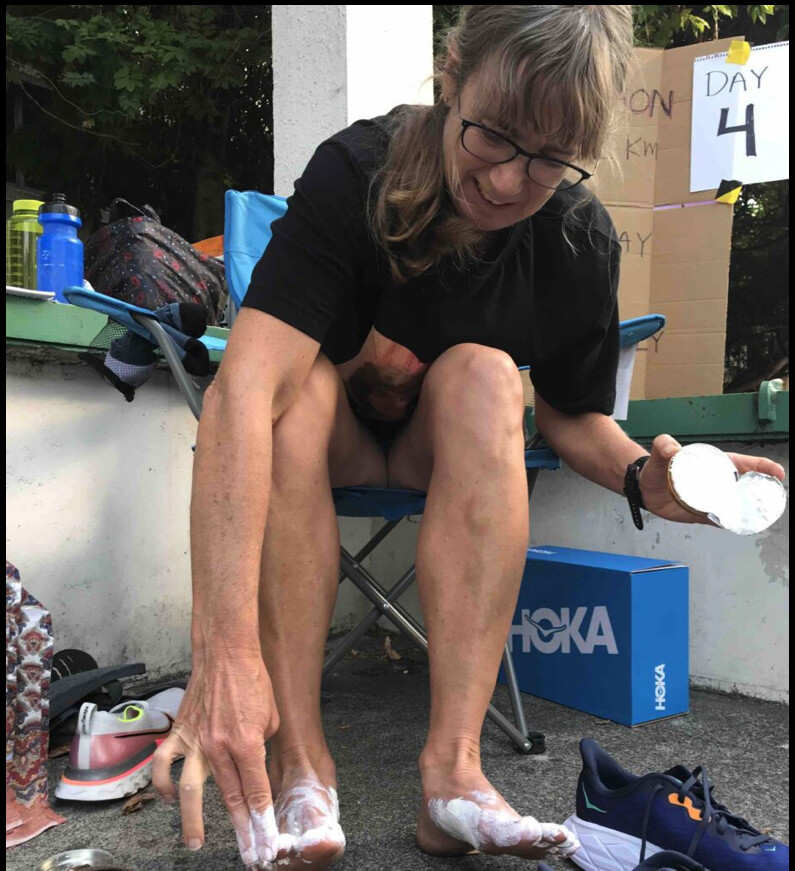
It takes Michalofsky 71 laps to complete 42.2 kilometres, and she runs five days a week. “Grief was making me feel crazy,” Michalofsky says. “I knew that Aubrey’s death had been preventable and I had to do something.”
Michalofsky is running to put pressure on the B.C. government to respond to the seven-year-long toxic drug public health crisis. The leading cause of death for 19-39-year-olds is toxic drugs. For 40-59 year-olds, it’s the second leading cause of death, and six people die in B.C. from overdoses every day. The majority of those deaths occur in private residences, and many are young men in the trades.
“This data [from the B.C. coroner’s report] flies in the face of the popular perception of the opioid crisis, which tends to portray toxic drug death as happening on the street and to persons experiencing homelessness,” Michalofsky says.
While the B.C. government has acknowledged that providing drug users with alternatives to the toxic black market supply is the safe way forward, Michalofsky says they haven’t taken any action to actually provide those alternatives. “Only a very small fraction of people in B.C. who struggle with drug use have access to safer drugs. The rest play Russian roulette each and every time they take drugs.”
Michalofsky is asking the B.C. minister of health, Adrian Dix, to provide evidence that the government is rolling out safe supply as per their 2021 announcement. She has questions, and she won’t stop until she sees action. “If safe supply is so crucial, where can I get it in rural communities?” she asks. “If my son or daughter is going through withdrawal, trying to get off street drugs, where can I send them so that they don’t end up turning to toxic black market drugs? If I’m a casual drug taker, and I want to experiment with drugs, how can I make sure I’m not going to die?”
Running to create social change
Calling herself an adult-onset runner, Michalofsky began running in her late 30s, running road races for several years before jumping into triathlon events. She completed Ironman Penticton on Aug. 28–two days before her son died. Michalofsky had plans to head to the Kootenays with Aubrey post-race for a week’s vacation. “He had died only hours before I arrived in Nelson,” she says.
Aubrey began using drugs when he was 17. At the time of his death, he had been living with his father, Rae Pryor, in the small B.C. community of Winlaw. Aubrey had enrolled in a methadone treatment program but struggled to find transportation to the city of Nelson to make appointments and pick up his allotted dose, as is the case for many people who live in rural communities or don’t have access to vehicles. He left the program five weeks before his death.
“Running as a political protest is not new–many people run for humanitarian and political reasons,” says Michalofsky. “And of course, in Canada, we have Terry Fox to thank for showing us how one differently abled man was able to start a revolution in cancer care.”
His mother describes Aubrey as a deeply compassionate person. He had expressed interest in joining a restorative justice program. Michelofsky says she sees what she’s doing as a form of embodied restorative justice: “We are using our bodies to effect social change. And I say we, because it’s not just me anymore. Every day, more and more people come to the Ministry of Health and run with me.”
A community of support
After 14 days of marathons, Michalofsky found herself facing injury–tibialis anterior tendonitis. She tried walking the distance in a walking cast, but that also become too painful. She didn’t want to quit, but knew she needed to take a few days off to heal. Michalofsky posted on social media, asking for people to come out and run for her. “I was flabbergasted when over 20 people showed up in a single day. Some of them were runners from my running community, some were friends and family members, and most amazingly, some were people who had seen my story on the news,” she says.
While Michalofsky is back to running, people continue to join her. Some have a direct connection to her story–they too have lost family members to toxic drugs; some are simply people who want to help. “One day a big group of new parents with babies in strollers came down with signs that said ‘Babies 4 Safe Supply.'” Michalofsky says they have returned every week, and Wednesdays are now called Babies Day. “It’s extremely heartwarming. And it’s helping me in my grief.”
Michalofsky welcomes the support. “If you’re in Victoria, come down and run or walk with me. If you’re not in the city, consider starting your own run. You could run a lap around your MLA’s office–make a few cardboard signs and invite your friends: consider making it a weekly event,” suggests Michalofsky.
On Friday, the one-month anniversary of her run, a rally for safe supply will be held at the intersection of Blanshard and Pandora, where Jessica runs. Michalofsky also asks supporters to share her social media posts on Facebook and Instagram because, as she notes, “In the political world, it’s all about exposure.”
“I’m trying to embarrass the government,” she says. “I’m trying to prompt them to take action and give this public health crisis the attention it deserves and stop preventable death. If it takes somebody’s mom to do that, I’m game.”
by Running Magazine
Login to leave a comment
Ironman World Championship champion's "chunky" shoes spark controversy
Last week at the Ironman World Championship in Kona, Hawaii, Norway’s Gustav Iden ran a 2:36 marathon after a 180-kilometre bike and 3.8 km swim, earning his first world championship title. Iden ran a new marathon record on the Kona course in a unique pair of On’s carbon-plated running shoes, the Cloudboom Echo 3, which have a reported stack height of 50 mm, which is outside of World Athletics legal stack height rule of 40 mm for road-running events.
Iden was allowed to wear these shoes in competition, since professional triathletes do not have to comply with any rules over their choice of running shoes, World Triathlon has confirmed.
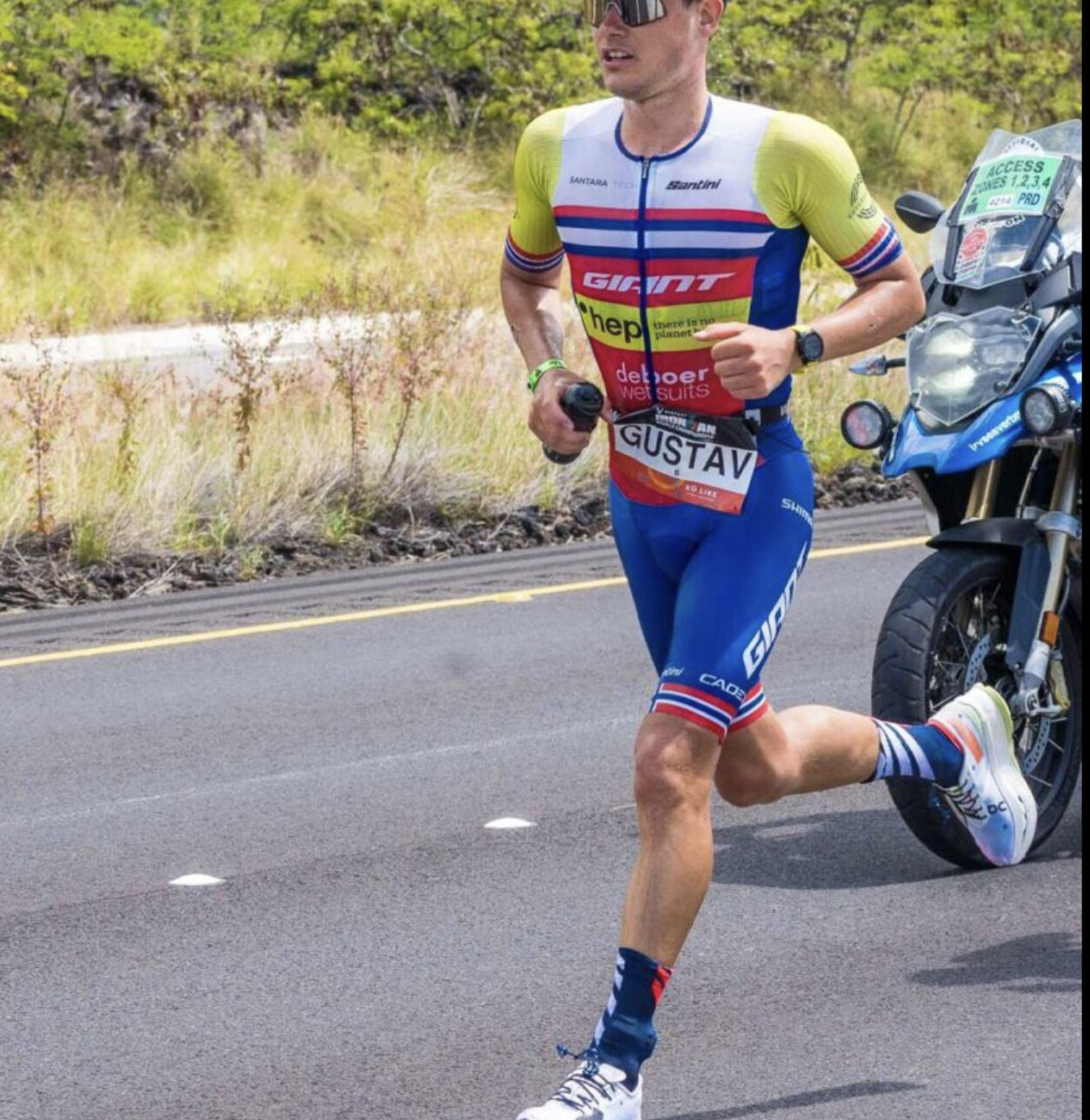
Despite regulations in athletics governing shoe technology–such as limiting the sole thickness–World Triathlon stated they will not follow World Athletics standards and no checks are being made on any of the footwear being worn.
Some fans of the sport are calling for World Triathlon to follow suit in controlling stack height for competition. The second-and third-place finishers, Sam Laidlow of France and 2020 Olympic champion Kristan Blummenfelt, both wore the WA-legal shoes Nike Alphafly Next% and Asics Metaspeed Sky 2.
Iden said this in a post-race interview with his sponsor On:
World Athletics rules state the sole must be no thicker than 40 mm and that the shoes must not contain more than one rigid or embedded plate that runs the full length of the shoes. The Cloudboom Echo 3 has a single carbon plate that runs the full length of the shoe.Canada’s Ben Flanagan also wore the Cloudboom Echo 3 during his win at the 2022 Falmouth Road Race.
Since the seven-mile road race is not sanctioned by World Athletics, elites are allowed to wear shoes which are normally not allowed at national championship road races.
Iden won in the Ironman World Championships in his Kona debut with a time of 7:40:24, taking 11 minutes off the previous course record time from 2019. On, who signed Iden in the week leading into the race, was given a green light from Ironman for the Norwegian to wear the shoe.
by Running Magazine
Login to leave a comment
Chris Nikic Becomes the First Athlete with Down Syndrome to Finish the Ironman World Championship
With his mantra of 1% better every day, Chris Nikic continues to change the perception of what is possible. Crossing the finish line at the Ironman World Championships adds his name to the history books and cements his legacy as a pioneer in the sport.
Like every other competitor in Thursday’s Ironman World Championship in Kailua-Kona, Hawaii, Chris Nikic had moments when he struggled mightily.
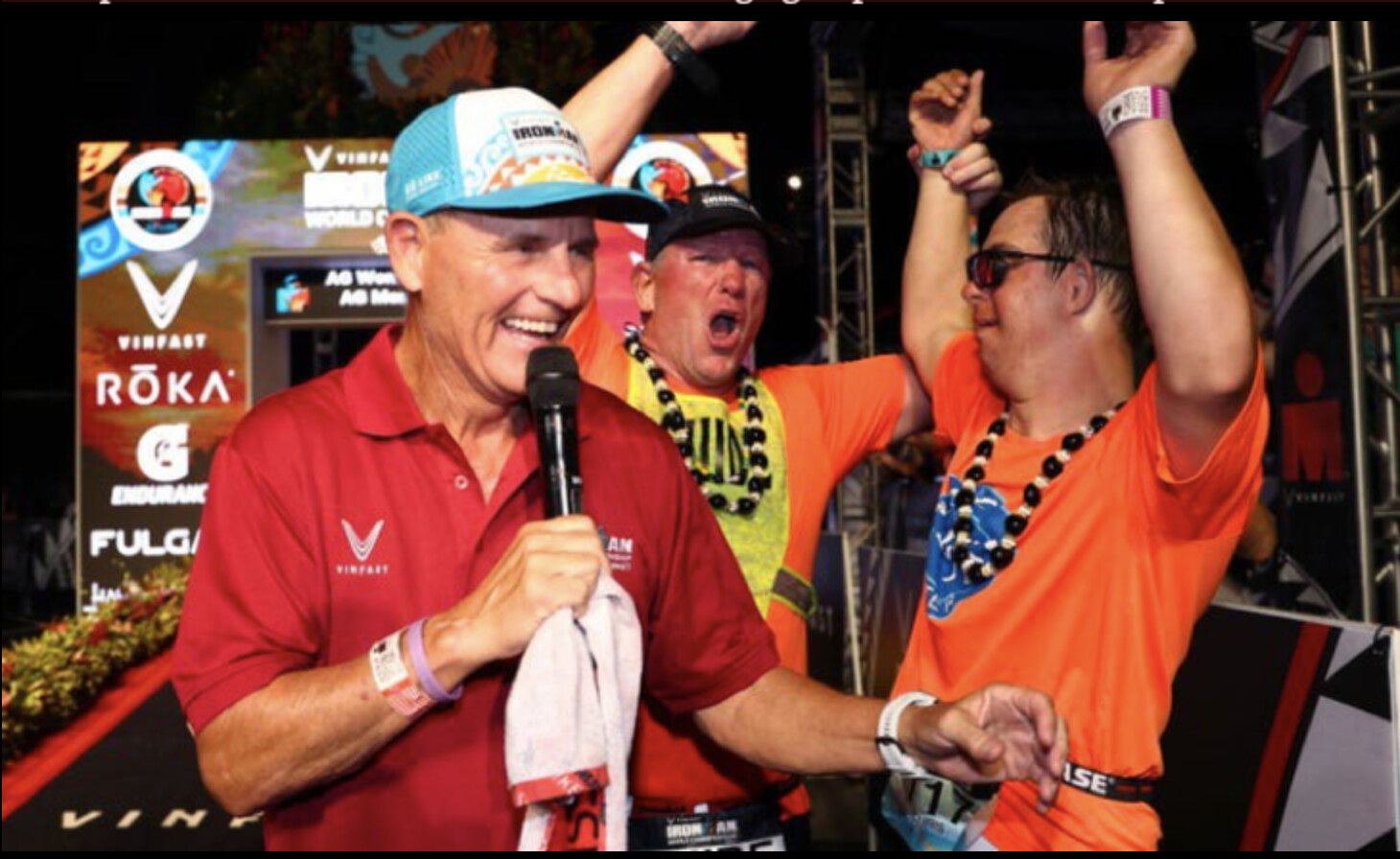
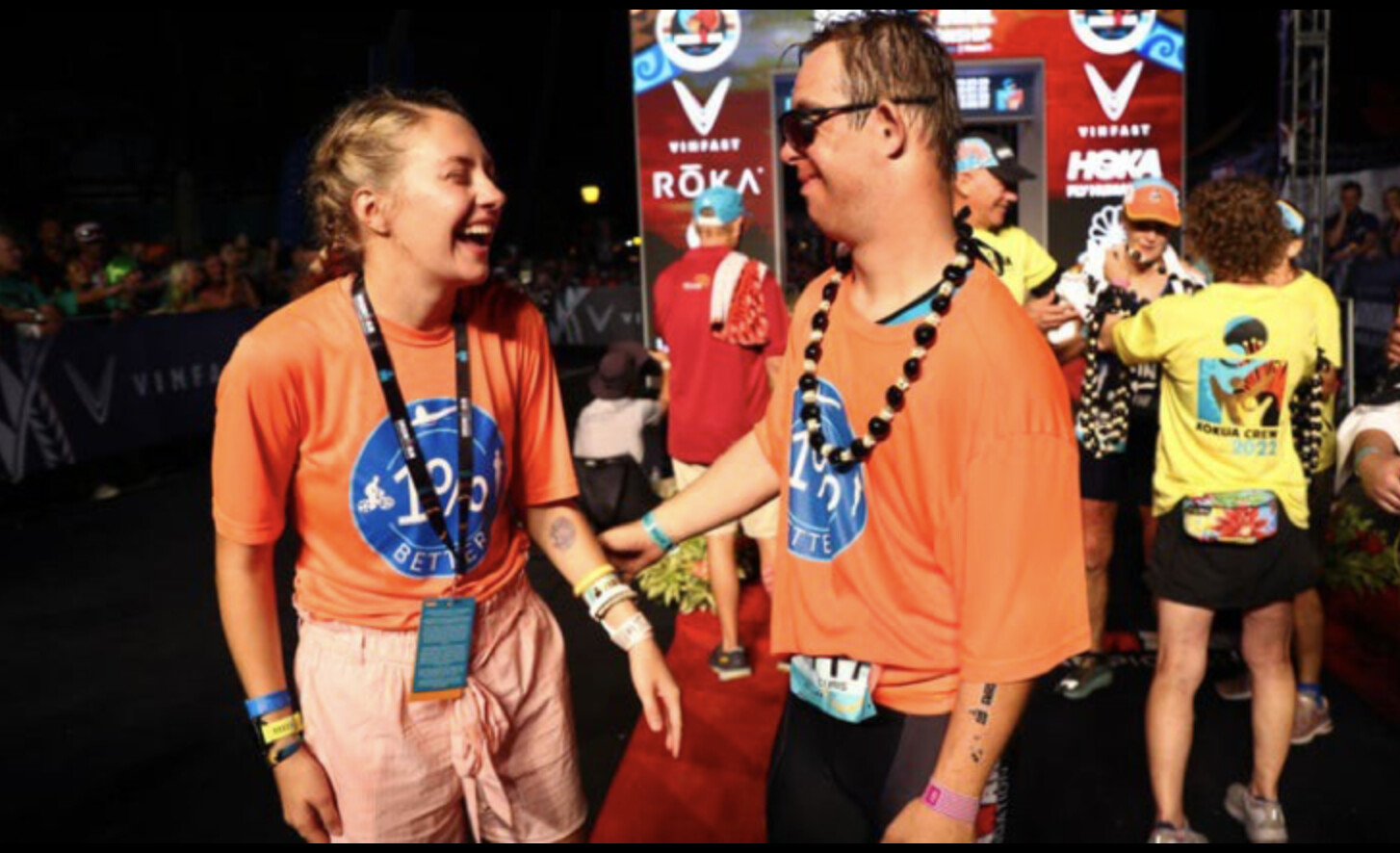
Completing a triathlon that includes a 2.4-mile swim, a 112-mile bike ride, and a 26.2-mile run is no easy task for anyone. It’s especially difficult when mid-afternoon temperatures top 90 degrees, the humidity is a muggy 85 percent, and it feels like you’re breathing through a straw. But Nikic is a unique kind of athlete, fueled by an enormous amount of determination, purpose, and the belief that anything is possible.
Late last night, after battling fatigue, dehydration, heat, wind, and moments of self-doubt, the special needs athlete from Florida became the first individual with Down syndrome to finish the 140.6-mile world championship race in Hawaii.
With help of his volunteer guide, Dan Grieb, Nikic completed the race in 16 hours, 31 minutes and 27 seconds, finishing to a cascade of cheering fans, many of whom returned to the finish line long after Chelsea Sodaro won the women’s professional race in 8:33:46. Sodaro made sure to be there, too, alongside Ironman legend Mark Allen, a six-time winner of the race, to experience the heart-warming, tear-inducing moment.
When Nikic crossed the finish line, he jumped into the arms of Grieb, who was at his side the entire way. They were tethered together on the open-water swim, in the choppy water of the Pacific Ocean. They rode side-by-side on the hot and windy bike course from Kona out to the remote town of Hawi and back along the Queen Ka’ahumanu Highway. They jogged and walked stride-for-stride on the 26.2-mile out-and-back course, to the Natural Energy Laboratory and back, to the seaside finish, a stone’s throw from where it all began.
Amid the crowd’s roar and Led Zeppelin’s “Whole Lotta Love” blaring on the sound system, Nikic marveled in the moment as he saw his finish time posed on a digital display board and then was greeted by his girlfriend Adrienne Bunn, his dad, Nik, and numerous other family members and supporters. All of this was an incredible way to celebrate his 23rd birthday, which Nikic did by not only finishing the grueling race, but by stunning the already weepy fans by presenting Bunn, a Special Olympics triathlete, with a promise ring.
It was an amazing finish to a challenging day that began at 6:27 a.m. local time and finished at 10:58 p.m. Given the harsh conditions, Nikic’s splits were impressive — 1:42 for the swim, 8:05 for the bike, and 6:29 for the run. He finished 2,265th place out of 2,314 competitors on the day, but at the finish line late Thursday night, he was No. 1 in everyone’s heart.
“This is something that changes perceptions for every parent worldwide with children with Down syndrome,” said longtime Ironman finish-line announcer, Mike Reilly. “Now they all know one thing for sure – anything is possible.”
Nikic’s resounding effort was one of the biggest highlights for the first Ironman World Championship, as it returned to Kona for the first time since 2019. The championship race was postponed in 2020 and again in 2021 because of COVID-19, and eventually the 2021 race was moved to St. George, Utah, last spring.
Other age-group highlights included 78-year-old Cherie Gruenfeld of Cathedral City, California, winning her 14th Ironman age-group world title in 16:20:07, and the 17:58 finish of Team James — 57-year-old Beth James, of Crested Butte, Colorado — who towed and pushed her 26-year-old daughter, Liza James, who suffered a traumatic brain injury in a 2004 car accident that rendered her nonverbal and unable to walk.
Because of so many backlogged qualifiers, the race was split into two days this year, with professional women and age-group women racing on Thursday, along with physically challenged athletes, hand-cycle competitors, and competitors from several men’s age-group divisions. The men’s pro race and the remainder of the men’s age-group divisions will compete on October 8.
Although he had been involved in a lot of sports growing up, Nikic’s triathlon journey started four years ago with a much shorter triathlon at the Special Olympics event in Florida. When that went well, he and his dad focused on something bigger, something they knew could change his life. He knew that if he could do big things, maybe one day he would be able to fulfill his ultimate dream of living independently, getting married, and having a family of his own.
Nikic has parlayed his triathlon success into his 1% Better Foundation as a platform to show what is truly possible, a foray into motivational speaking as a means to help others with Down syndrome. He and Grieb both competed in the race wearing bright orange 1% Better shirts.
“I want to be an example for other people with Down syndrome. I want to open doors,” Nikic said previously. “And I want to raise awareness. Anyone who sees people with Down syndrome: don’t look away or walk away.
In 2020, at age 21, he became the first person with Down syndrome to finish an Ironman triathlon. For this accomplishment, Nikic was awarded the Jimmy V Award for Perseverance as part of the 2021 ESPY Awards.
After that race, he was invited to participate in the 45th Ironman World Championship in Hawaii. To prepare, Nikic had been training three to four hours a day, six days a week, including strength training and yoga. It’s not an easy thing to do for anyone, but especially for Nikic, who suffers from reduced muscle tension (muscular hypotonia).
But Nikic has been overcoming obstacles his entire life. Nikic was born with several birth defects that affected his heart function, hearing, and balance, requiring several serious surgeries. According to the Centers for Disease Control, Down syndrome is a condition in which a baby is born with an extra copy of a chromosome. That changes how an infant’s body and brain develop, which can cause both chronic mental and physical challenges for the individual.
At 5 months old, Nikic endured open-heart surgery. He was so weak and had such poor balance that he did not walk on his own until he was 4. To keep him from choking, his family fed him baby food until he was 6. When he finally learned to run, it took him months to discover how to swing his arms at his side, instead of holding them straight above his head. It was a long journey from a challenging boyhood to the Ironman World Championship, but Nikic has always been up to the challenge.
“The second Nikic gets in the water for the start of the race, people all over the world with intellectual disabilities have won and become part of the larger endurance community,” Grieb said before the race.
Login to leave a comment
Hawaii Ironman World Championships 2022 Results: Gustav Iden Victorious With A New Course Record
Norway's Gustav Iden took the win at the 2022 Hawaii Ironman World Championships in his first try on the Big Island and second Ironman ever in a time of 7:40:24.It was calculated gutsiness that helped Norway’s Gustav Iden claim the 2022 Hawaii Ironman World Championship on his first try with a result that surprised no one – and everyone.
Much like women’s race winner, Chelsea Sodaro, this was Iden’s second Ironman event ever, but he raced it like a veteran, making decisive moves on the bike, pacing well on the run, and seizing the moment to take it all. His time of 7:40:24 is also a new course record and his 2:36 would be a new run course record of 2:36:15.
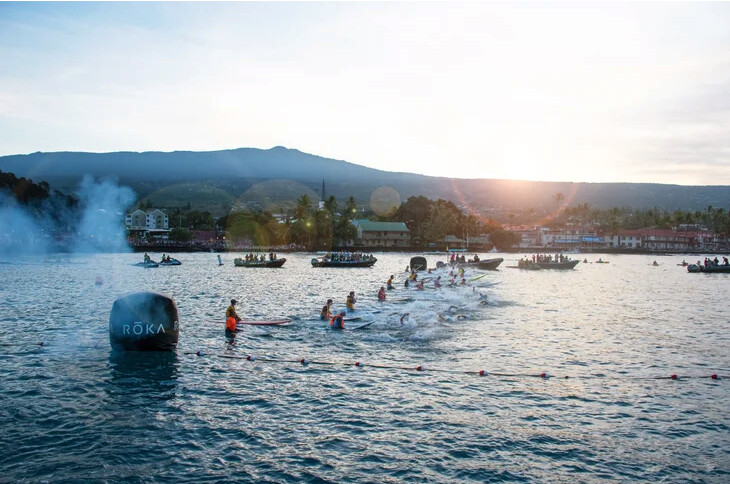
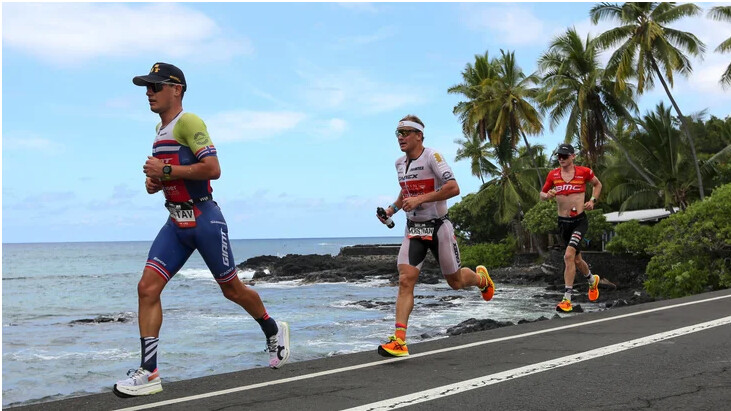
Read on to see how the 2022 Hawaii Ironman World Championship played out on the Big Island.Hawaii Ironman World Championships 2022: The SwimWith similar conditions to Thursday’s women’s race – slightly choppy with a rolling swell – many assumed the swim would favor the stronger swimmers. But on this day, everyone seemed to be a strong swimmer. Straight from the start cannon, a large pack formed, led by Sam Laidlow and Florian Angert. Despite attempts to pull away in the first half of the swim, neither were successful in building a definitive lead.
Instead, a staggering 19 pros exited the water within 15 seconds of each other, led by Angert in 48:15 and Laidlow in 48:16. This tight pack included some of the most dangerous triathletes in the field, setting up the likes of Kristian Blummenfelt, Gustav Iden, and Braden Currie in perfect position for a tactical race at the front of the field.
One minute and 15 seconds later, another large pack emerged from the water, containing even more strong cyclists capable of quickly bridging the gap. These included Igor Amorelli, Patrick Lange, Rudy Von Berg, and Magnus Ditlev.A third and final large pack, four minutes down from the leaders, contained Matt Hanson, Chris Lieferman, Cam Wurf, Sebastian Kienle, Joe Skipper, and Lionel Sanders.
Hawaii Ironman World Championships 2022: The BikeLaidlow was the one to take charge in the initial miles of the bike, setting an average pace of 27 miles per hour over the first 25 miles. Max Neumann was the only one willing to take the bait, staying just out of Laidlow’s draft to avoid a penalty.
Behind them, big groups stuck together as the crosswinds picked up through the lava fields. Fifty seconds down, the first chase group of 11 included Ditlev, Blummenfelt, Iden, O’Donnell, and Bakkegard; almost two minutes behind was a group of 18 that included contenders like Lange, Currie, Ben Hoffman, and Denis Chevrot.At mile 30 on the bike, the massive groups continued through the rolling hills on the way to Hawi. With 42 men racing within 5 minutes of each other, space was hard to come by – and the referees noticed.
As with the women’s race on Thursday, the penalties began early and often, with Angert, Clement Mignon, Mathias Petersen, and Arnad Gilloux being the first to serve their five-minute punishment for position infractions. Leon Chevalier soon joined them for a one-minute penalty as well.
Soon, more setbacks started to snowball in the men’s field. With each passing mile, Sanders saw the race get away from him as his position slipped from 4:42 down out of the water to 7:13 by mile 30. Colin Chartier, who was in the first large pack out of the swim, found it difficult to recover after an early flat tire. Lange seemed unable to jump on to the train of competitors passing him at full speed, and in a shocking twist, pre-race favorite Currie dropped from the race around mile 35.
Meanwhile, the men’s race began to take shape near the base of Hawi as Ditlev went to the front of the race and took control. Behind him, Laidlow and Neumann could not match the effort, while countrymen and training partners Iden and Blummenfelt sat 30 seconds behind Ditlev, working together near mile 50.
Just after the Hawi turnaround, Laidlow reclaimed his lead, but Ditlev, Neumann, Blummenfelt, and Iden were hot on his tail. Further back, a group including Kyle Smith, Tim O’Donnell, and Jesper Svensson trailed the leaders by 2:30; 3:30 back from the leaders were Kristian Hogenhaug and Daniel Bakkegard. A big group of dangerous bike/runners sat 5 minutes behind the front pack that included Wurf, Chevalier, Skipper, Lange, Kienle, and Andreas Dreitz.
Near mile 90, disorganization plagued the chase group of Iden, Blummenfelt, Ditlev, and Neumann as they lost an additional 1:30 to the race leader, Laidlow. Further back, Wurf, Kienle, and Chevalier led a rally to try to get within striking distance of the front, putting 2:20 into the Norwegian group over a span of over 10 miles.
As the race barreled toward T2, the chaos continued, with Ditlev receiving a five-minute position penalty at a time when most would be making their critical moves in a race.Up front, Laidlow seemed to not know – or care – about what was playing out behind him. Instead, the young gun stayed focused on his own race, surging ahead. By mile 88, Laidlow’s lead grew to 2:37; at mile 94, a 4:11 advantage.
Heading into T2, Laidlow smashed Cam Wurf’s 2018 bike course record with a split of 4:04:36—knocking almost five minutes off the previous time. Behind him, the chase group was six minutes down, and the second chase had 8:30-9:45 to make up.
Laidlow set out on the run with a target on his back. The question then became: Would his bold bike strategy pay off, or would it end in disaster? Could he actually beat the notoriously fast Norwegian runners to the finish line? Could anyone?
Hawaii Ironman World Championships 2022: The RunAs the men’s pro field moved through T2, the field shifted from large packs to a steady trickle. It was soon clear who had paced themselves well on the bike and who had burned their matches. Behind Laidlow, Blummenfelt and Iden led the charge, setting out at a 5:54 minute-per-mile pace to the leader’s 6:13 pace. Behind them, O’Donnell and Kienle were the fastest movers in the second chase pack early in the run, along with Ditlev—finally released from his penalty.
As Laidlow made his way up the Palani climb, his pace slowed to 6:23. Iden and Blummenfelt powered on, checking their watches to ensure they were sticking to their staggeringly consistent 5:58 pace. With every footfall, they seemed to cut into Laidlow’s lead. Neumann, looking to hold his own in his Kona debut, followed suit.
Slightly further back, strong runners like Kienle and Ditlev were working together as well, slowly making their way up through the top ten, through the first half of the marathon—as did Joe Skipper. At the halfway point, they found themselves in fifth and sixth place, with elder statesman Kienle offering words of encouragement to the young Dane as they ran together.Between miles 11 and 16, the Norwegians’ march toward Laidlow started to stall as the Frenchman found a way to staunch the bleeding. As he made his way out the Queen K, it seemed as if he found a pace he could comfortably sustain.
At the turnaround in the infamous Energy Lab, Laidlow could see exactly where he was relative to his competition. He knew he had a lead of just over two minutes, but what he didn’t know was whether or not the Norwegians had another gear. Anticipating a battle, Laidlow gathered all he could from the aid stations – cups of ice, a gallon bottle of water to douse himself on the scalding Kona pavement.Indeed, Iden had just decided to drop his friend and training partner, pulling ahead in the Energy Lab just before mile 19, while Blummenfelt trailed behind. With less than eight miles to go, Iden broke out into 4:38 min/mi pace, laser-focused on the task ahead.
At mile 22, Iden gave Laidlow a pat on the back to let him know his time at the front was up. With a handshake and a smile, Iden made the pass, striding confidently to the finish line.After the pass, it was the Iden show, as the Norwegian extended his lead to set a new course record with a time of 7:40:24 and a new run course record of 2:36:15. Not far behind, Sam Laidlow valiantly hung on for second place with a time that also broke the previous run record, 7:42:24. Kristian Blummenfelt would fade only slightly, but still stand on the podium with another course record time of 7:43:23.
“That was so freaking hard,” Iden said just moments after his record-setting finish. “The last 10K I was worried about the legend of the island killing me. Everything was going pretty smoothly until I caught Sam Laidlow. When I passed him, the island really tried“That was so epic, and I’m so proud of Sam and Kristian making the podium. I’m not sure if I’m coming back here, this was too hard.”
Laidlow was tearful after leading the race for so long.
“I was just loving it, I’ve been dreaming this since I was four or five,” said an emotional Laidlow. “This is my style of racing. I’ve been inspired by Jan Frodeno, and the way he races. If I win, I want to win like he does. I’m just getting started.
“It’s hard to believe as I’ve been watching the Norwegians, and to beat the Olympic champion, I really can’t put words to it.”
Login to leave a comment
This Ultrarunner Outlasted a Fully Charged Tesla
Bobbie Balenger ran a staggering 242 miles in three days, covering more distance than an electric vehicle on a single charge.
Endurance runner Robbie Balenger set a world record last year when he completed 16 laps of the Central Park Loop Challenge, running a total of 100 miles in the course of a single day. His most recent ultrarunning accomplishment—attempting to run further than a Tesla electric car on a single charge—is the subject of a new documentary from Ten Thousand, as part of their ongoing Feats of Strength series.
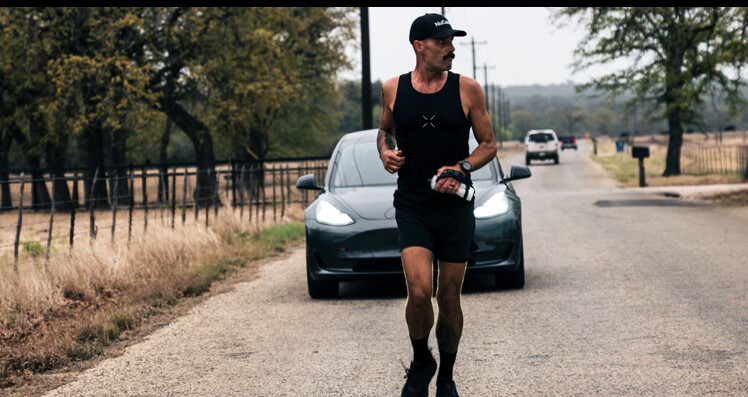
Firstly, the Tesla sets off from the same starting point where Balenger will begin his run, and is driven across the state of Texas until its battery is depleted, which occurs after 242 miles. Balenger then assigns himself 72 hours to surpass that distance on foot, a feat which he expects to be as challenging mentally as it will be physically.
It's just between my two ears, that battle," he says. "And that battle can get pretty lonely." However, he embraces the unpleasant aspects of the experience, like the physical discomfort, fatigue, and soreness which persist and only get worse as he covers more distance.
"I say that running is the inverse of a drug," he continues. "With drugs, you feel really good while you're doing it, then you feel like shit afterwards. With running, especially when you get into it, you feel like shit while you're doing it then you get to feel great afterwards."
At the halfway mark of 121 miles, Balenger pauses for an hour and 50 minutes of rest. He is then joined for the second stretch by a number of other endurance athletes, including Ironman triathlete Nick Bare and distance runner Hellah Sidibe, who run alongside him while offering encouragement.
46 hours in, at 5:30 a.m., Balenger takes another 50-minute nap before heading into his third and final day of running. "One of the things that draws me to these things is you are so aware of yourself and being alive while doing it," he says. "Through the pain, all of it, every sense is heightened."
After 76 hours 54 minutes, Balenger has run a total distance of 242.01 miles, outlasting the Tesla in terms of distance even if he went over his original time target of 72 hours. Ultimately, he says he is grateful to all of the people who helped him on his journey, and proud of himself and what he has accomplished.
"The bigger picture in life is just follow-through," he says. "You break through these versions of yourself, and tear it away and come out a new person, which I think happens for everyone as we evolve through chapters in life, but what's interesting is ones that happen so quickly... There's very few experiences in life where you look back three days later and you're like, I do not recognize that person."
Login to leave a comment
After Suffering from Years of Drug Addiction, Running Helped This Dad Get Clean
Now he’s finishing triathlons and conquering ultramarathons.As a teenager, I grew up in St. Louis, Missouri, and found myself in trouble constantly. I started smoking cigarettes and marijuana, and stealing alcohol at a very young age. And by the time I was 15, I had already started using cocaine, LSD, and ecstasy frequently.
Prescription pills took hold of me at a young age and led me into an opiate addiction. At the climax of my addiction, I was homeless and living on the street. I was the guy you would see at a highway exit holding a sign begging people for money. I tried to get off the opiates by going to a methadone clinic and taking methadone (a FDA-approved drug in the opioid family, used to treat opioid use disorder), and wound up more addicted to that drug.

In the clinic, I also met tons of heroin addicts that introduced me to that drug. Being an addict took me to prison and almost took my life several times, and all the relationships in my life were broken as a result. I tried to commit suicide and found myself in psychiatric units, treatment centers, halfway houses, and rehabs frequently.
The worst of my overdoses was the week of February 4th, 2015, where I had a total of three heroin overdoses in one week. I was found unresponsive with a needle in my arm. During one of those overdoses, I had locked myself in a bathroom with my back to the door and feet against the vanity so nobody would be able to open the door. My father, who had been trying to intervene, actually got into my apartment and broke the door to get me out. He gave me CPR and called 911.
The paramedics gave me several doses of Narcan to try and save my life, and I was put on a ventilator in the ICU due to the fluid in my lungs and pneumonia. After a very scary nine days in the ICU, by the grace of God, I woke up.

At this point, I had a decision to make: either run away like a coward or run toward my failures and take responsibility for my life. At this time, my wife was six months pregnant with our first child, so I made the decision to find help at a men’s faith-based recovery center called Lifeline-connect in Urbana, Illinois, that completely changed my life.
Lifeline-connect is a one-year residential program, so I knew I was going to be there for a while. One of my mentors in the program, RJ Eaton, was into fitness and challenged me to get into shape spirituality, mentally, and physically. Up to that point, my lungs were in bad condition. I smoked two packs of cigarettes a day for over a decade.
I had been running off and on since the first time I went to Lifeline-connect in 2009. And after my relapse in 2015, I started running again this time, and at first could barely run a tenth of a mile without stopping because my lungs hurt.
One day while running, someone saw me running in a really old pair of beat up shoes that were falling apart and blessed me with a brand new pair of Saucony shoes, which really encouraged me. A tenth of a mile turned into two and then a half-mile, and with consistency day by day, it wasn’t long until I was running several miles every day.
By the end of my time at Lifeline-connect, I was running five miles a day, five days a week. As I continued on through my recovery, I kept running and fell in love with it.
In 2019, I competed in the Illinois half marathon and remember thinking at the time about how difficult it was to run a half marathon. But following that race, I realized that running was helping me forge mental toughness to stay strong in other areas of my life. Running helped me to have the same mental fortitude to not quit on longer runs, which is the same mental toughness that has helped me not give into temptation in rough times.
Since then, I’ve run three full marathons, one a personal 26.2-mile run, then a 35-mile ultra that wasn’t a sanctioned event. I also set a PR at the Illinois half marathon this past spring, finishing in 1:42, and have also come to love mountain and road cycling.
To keep pushing the bar, I signed up for and completed the Ironman 70.3 Chattanooga this year and finished with a time that I was pleased with accomplishing. I have a goal to summit all 58 14-ers (mountains above 14,000 feet elevation) in Colorado.
Currently, my running schedule is between 25 and 35 miles a week. Every once in a while, I sign up for a 5K, 10K, marathon, or triathlon to keep me motivated because I really enjoy the community of runners/cyclists/triathletes. I’ve actually connected with a number of local athletes who are now friends of mine and I get to meet up with them for runs or rides.
Next on my running goals list is to do a 50-mile ultramarathon, then a 100K run.
Overall, running makes me feel alive and accomplished. It’s one of my personal devotional times where I express my gratitude to my God for keeping me alive. Because of running, today I now have a beautiful life with my three beautiful children: Eden, Amaeya, and Summit. My wife, Maegan, is my biggest cheerleader. She’s my rock who stuck by my side, always encouraging and believing in me. I am so grateful that I get to tuck my three beautiful children in to sleep at night and be their dad. The only thing running didn't prepare me for was raising these three kiddos ages 2, 4, and 6—talk about an endurance event!
A special shout-out to my 2-year-old Siberian husky, Slushy, who has been my running partner over the years. I train with him regularly because he holds me accountable when running. He’s ready to go every day at 5:30 a.m. rain or shine, and he has helped me to be better. We all need a husky in our lives: personally, spirituality, and professionally.
For anyone reading this, I want them to know that no matter what struggle they are going through, there is an opportunity to come out of the fire stronger than before. Sometimes it takes a fire in our lives to clear and burn away all the impurities that were holding us down. Now is the time to get up, lace your shoes, and march forth. If I can do it, anyone can.
These three trips have made my running journey a success:
1. Smile when you run
It helps me to remind myself why I love this.
2. Practice gratitude
When running gets tough, I try to remind myself of how lucky I am to be able to run. I am blessed to have found this path, when others close to me have lost their lives.
3. Run everywhere you travel.
I run everywhere, even on vacation or staying at a friend or family’s house out of state to keep the spirit of adventure alive!
by Runner’s World
Login to leave a comment
How to Run (When You Hate Running)
If you slog through the same boring miles week after week, can’t even imagine slogging through miles every week, or if your high school coach used laps as punishment... of course you’re gonna hate running. Here’s how you won’t.
If you’re not a fan of running, you’re definitely not alone. Forty-six percent of the 1,800 people who answered our MH poll said they hate it too. But here’s the thing: Running’s not about banging it out anymore. It’s still an incredibly efficient cardio workout that you don’t get with weights alone.
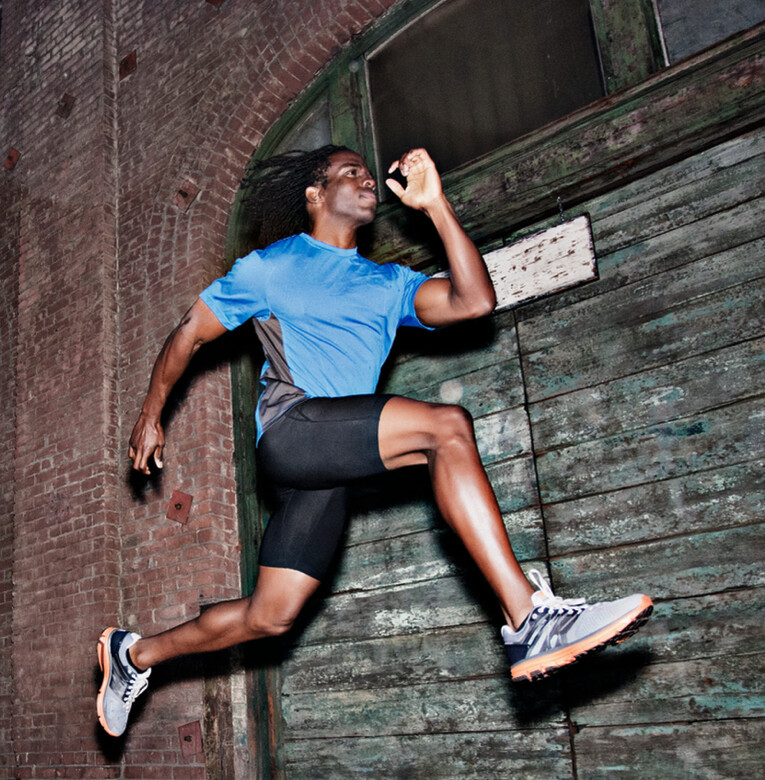
Now, however, running itself isn’t really the point. It’s just what happens to be going on in the morning, with friends. Or at night, when the city’s yours and you may or may not be breaking some rules. It’s a game you play with yourself, a way to test yourself, a way to find yourself, a way to forget. You don’t really hate running. You hate the way you’ve been running. And we’ve got six cures for that.
CURE 1:
Add a new level of exploration—or competition—by lacing up after dark.
There’s a version of running in which you don’t wake up early, you don’t pay hundreds in race fees, and the finish line, at least sometimes, is a bar. It doesn’t quite have a name, or at least it hasn’t been branded yet. It’s punk rock. It’s returning running to the people from the hands of corporate sponsors and type A, predawn joyless slogs. Call it night running if you want, since that’s when it happens.
Many groups start weekly workouts around 8:00 P.M.—not too late for us normies but late enough for the pack to be defined by the flecks of light bouncing off hidden reflective patches on clothes, shoes, caps. But there’s another kind of night running that really sets you free.
It’s not as much about a time of day as it is about a mind-set. These are unsanctioned adventures—underground races with mostly word-of-mouth buzz in which a small group of people (maybe ten friends, maybe 100 entrants) chase a win by running between checkpoints by themselves, picking whatever route they want. There are no closed roads, no signs, no aid stations or port-a-johns. Some races are pretty hardcore—strategic, competitive, and ruled by local studs.
Others, like one I did from a bar in Brooklyn to one in Manhattan, are less aggressive, and your finish time includes drinking a can of beer. That type of gritty night running is the closest you can get to the pure spirit of racing—of grinding your body into the pavement until you’re doubled over. The streets have quieted down, and you’re out in them on your own. Along with every other runner who shares this passion. —MATT ALLYN
CURE 2:
Don’t run, glide. Bound. And sometimes walk.
As the editorial director of a group that includes Runner’s World, I spend more days than not surrounded by real runners, so what I am saying to you is not opinion but lived and learned fact: Real runners rarely seem to be running. They glide. They bound. They kiss the earth with their tippy-toes as a courtesy to gravity rather than a necessity of physics.
I, however, run as if I got into a brawl with a much bigger opponent and am paying for it. Yet: I run. It’s more efficient than cycling (my sport of choice), and it’s easier to manage when you’re traveling. I highly recommend getting the shit kicked out of you by a run. But you can’t be afraid to walk. If you only run for as long as you can actually run, you’re not going to be out there long enough to do yourself much good.
At first, the only way I could do a 30-minute “run” was to run for a few minutes, walk a few, then run some more. Walking is not only okay but pretty much mandatory. Real runners know this and won’t shame you for not running while you run. Anyone else can go suck it, because they’re not even in the damn fight. —BILL STRICKLAND

CURE 3
Sprint and Get It Over With
Forget 30 minutes. Crash through just six all-out 100-meter sprints with two minutes’ rest between each (you’ll need it) and you’ll be done with all your running in less than 15 minutes. Here’s how. —EBENEZER SAMUEL, C.S.C.S.
1. A Tight Core
A rock-solid core keeps you exploding straight ahead. Train this with mountain climbers. Do 3 sets, working for 30 seconds, resting for 30. Avoid the common flaw: Don’t let your butt rise!
2. Explosive Arms
Pump your arms to generate speed. Struggling? Sit on the ground, legs extended, then pump your arms as aggressively as possible, as if running. Focus on moving from the shoulders. Do three 30-second sets, resting 30 seconds after each.
3. Back Strength
Don’t just throw your arms forward when you run; build back strength to drive your elbows high. Do 3 sets of 8 to 10 dumbbell rows per side at least twice a week.
4. Strong Feet
Toe and foot strength is key for sprinters. Build it with single-foot jump-rope hops. Jump for 45 seconds, then rest 15 seconds. Do 3 sets.
5. High Knees
Drive your knees powerfully on every stride. Practice this by doing high knees in place for 15 seconds, then resting 15 seconds. Do 3 sets. Focus on driving your knees higher than your hips.
CURE 4
Run with Friends
About two years ago, after I’d put on about ten pounds, I sent a text to two friends at 8:00 on a Sunday morning, saying, “I’m going running at 9:00. Would either or both of you like to join?” Although we’d never discussed running together, I got a “Yup” from one and a “Sure” from the other. Then I got an “I don’t understand what’s going on” from the “Yup,” but—too late!—we had a plan. An hour later, we met up and ran five miles at the slowest pace I’ve ever run, and we’ve run virtually every weekend since then.
Now it’s a ritual. We’re a lot faster, but that isn’t the point. We keep it up because we also don’t want to fail at the opportunity we’ve created. When else do three fathers— three people—get an hour of uninterrupted weekly conversation? That the conversation has the added benefit of regulating our breathing, keeping us at a sensible pace, means we never go too hard—and going too hard is probably one of the reasons I used to stop running.
CURE 5
Try the (New, Gamified) Treadmill
The treadmill’s no longer a cataclysmic-weather default. Tech has brought competition and camaraderie to what used to be just running on a belt in your basement. These three options are changing everything.
Top the Leaderboard: PELOTON
On-demand streaming puts the workout you want right in front of you, along with everyone’s stats on a leader board so you can outpace that 18-year-old in L. A. (or your dad). Buy the treadmill (with a special belt for softer landings, starting at $4,295) or get the workouts, but not the stats, on your own treadmill via an app for $19.50 a month. OnePeloton.com
Run with Far-flung Friends: ZWIFT RUNNING
Run with a friend—even if you’re in St. Louis and they’re in Toronto—via this app. Set it up on a tablet or computer by your treadmill, pick an avatar, and have your friend do it too. You’ll both show up on the same virtual course. The app is free, but you’ll need a foot pod (as little as $30)—a device that clips to your shoe and sends your pace and distance to the app. Zwift.com —M. M.
THE MILE IS THE NEW MARATHON
Train for this everything-you-got sprint to get a fitness bump and bragging rights.
For the past few years, Ironpeople and cardiovores have tried to one-up one another with epic training efforts, competing on the number of miles they run, the number of Ironmans they do, and the number of ultra-early-morning sessions they knock out. Yet one of the most effective ways to train—and one of the most beneficial for your physical and mental health—has always been the shortest and the simplest: mastering the mile.
“The mile is an amazing blend of speed and endurance, and a good indicator of your overall cardiovascular health,” says Danny Mackey, head coach of the Brooks Beasts, an elite pro track team. “You can hammer it, and because it doesn’t take long to recover, you can run it again soon to see how much you’ve improved.
You can’t say that about a marathon, where most people are just trying to finish.” Even better, Mackey says you’ll notice yourself getting faster in three weeks. While a typical in-shape guy can run a mile in ten minutes, running one in 6:30—under the 6:47 average time for a man in the 5th Avenue Mile, the largest one-mile race in the country—can win you bragging rights. (The fastest finishing time in that race last year was 3:52.) Here’s exactly how to get after it.
by Runner’s World
Login to leave a comment
This Mom Helps New Parents Return to Running After Pregnancy
Colette Berry wasn't prepared for postpartum running. So she made it her mission to help other women avoid her complications.
Just six weeks after giving birth to her daughter, Delphine, Berry set out on a three-mile run. But her core wasn’t strong enough to control her bladder, and her pelvic floor was unprepared for the impact that running demands. Nevertheless, she followed the vague advice of her OB-GYN and continued to moderately jog after those fateful first miles. “I made a bad situation worse,” she says.
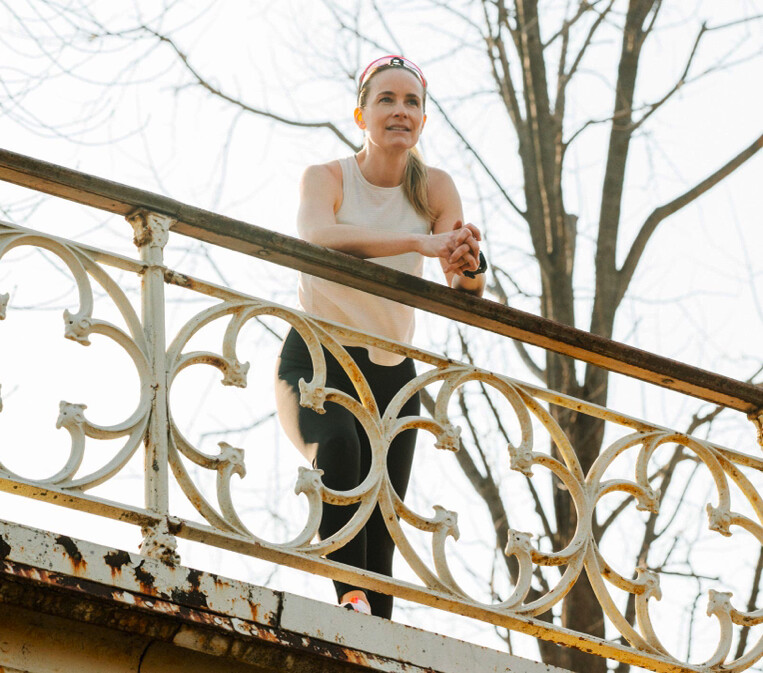
It was the lowest point in a life full of running highs. She fell in love with the sport in college at American University, then moved to Europe during her senior year and hit the European marathon circuit after graduating, running Venice and Amsterdam, and earning a 3:37 PR in Berlin. In 2010, while living in Switzerland, Berry joined the Geneva Runners, an international expat running club, where she met her husband, Edmund.
Not long after, she took up triathlon and consistently progressed from sprint distance, to Olympic distance, to completing an Ironman at Lake Placid in 2015 after moving back to the U.S., one month before becoming pregnant with Delphine.
While Berry took some time off after giving birth, she felt like her doctors didn’t give her clear instructions for returning to running. “I’m pretty intense about my sport,” she told them, but they didn’t understand how seriously she trained. After a year of running in frustration and discomfort, Berry started seeing a pelvic health physical therapist who helped her retrain her pelvic floor muscles, which undergo intense strain during pregnancy and delivery.
During the process, Berry became interested in the science behind postpartum exercise and realized that if she had been more informed from the start, she might have avoided her complications. So in 2020, she became a certified pre- and post-natal personal trainer and now guides clients through three stages—prenatal, labor, and parenthood—and gives them the tools to return to exercise safely, including these three strategies.
Train for pregnancy like an athlete
During pregnancy, you should strength train for the surprisingly physical movement patterns that you’ll face, like bathing a baby. “First, master the fundamentals with bodyweight squats, deadlifts, and lunges,” she says. “Then, add weights and combine them into compound movements.” New parents spend a lot of time on the ground, so practice standing up with an offset weight. Make sure to hinge at the hips, and avoid rounding your back by keeping your core engaged.
Don’t give up on yourself
If you’re a runner who’s recently given birth, you don’t have to endure months of misery on the road back to exercise. “A lot of women think they have to live with certain conditions—like peeing when they sneeze or run, or pressure in their pelvic floor—but they don’t have to,” Berry says. “Pelvic dysfunction is common, but not normal.” Seek out a physical therapist who specializes in women’s health or pelvic health if you’re experiencing postpartum complications. OB-GYNs might not be trained to remedy these issues, but they can help you find a referral.
Find (or form) a like-minded community
When Berry resumed running after pregnancy, she missed the social aspect of the sport. “I wasn’t going to find some track club and run with my jogging stroller at 10 a.m.,” she says. “So I created this group called Central Park Stroller Runners. Everyone was a new parent. It became a weekly thing, and I met some of my closest friends through that group.”
Berry’s running crew found a way to coexist amongst the antsy cyclists and ambling tourists in Central Park. They ran through the winter months, with their children nestled in sleeping bags and hats, and received some disapproving stares when their potty-training kids ventured behind the trees to relieve themselves. “If you’re a parent in New York, I promise that your child has peed in Central Park,” she says.
by Runner’s World
Login to leave a comment
Boston Marathon race director Dave McGillivray completes his 50th Boston Marathon
On Monday afternoon, long after Lawrence Chebet and Peres Jepchirchir stormed to victory through the streets of Boston, race director Dave McGillivray crossed the finish line of the Boston Marathon for the 50th time.
McGillivray has been an avid runner for most of his life. He’s organized and completed multiple massive charity runs (including an 80-day, 3,452-mile run from Oregon to Massachusetts), competed in nine Ironman triathlons and ran, cycled and swam for a total of 1,522 miles through the six New England states.
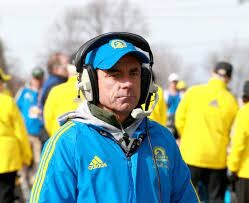
The first time McGillivray ran the Boston Marathon was in 1973 when he was 19 years old. He ran it with all the other runners for the next 16 years (including in 1982, when he ran 3:14 while blindfolded and escorted by two guides to raise more than $10,000 for the Carroll Center for the Blind in Newton, Massachusetts).
In 1988, McGillivray became the technical director for the race, so he began to run the course after the race was finished. He continued doing this every year, even when he became the official race director in 2000.
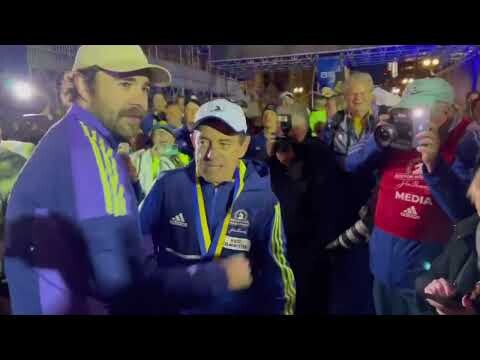
“Hard to put into words, 50 years have gone by so fast,” McGillivray told CBS Boston at the finish line. “But I have been blessed with being able to do a lot of this for charity, give back to a lot of different causes, and that’s what I hope my legacy is someday. Being able to help those in need.”
by Brittany Hambleton
Login to leave a comment
Boston Marathon
Among the nation’s oldest athletic clubs, the B.A.A. was established in 1887, and, in 1896, more than half of the U.S. Olympic Team at the first modern games was composed of B.A.A. club members. The Olympic Games provided the inspiration for the first Boston Marathon, which culminated the B.A.A. Games on April 19, 1897. John J. McDermott emerged from a...
more...Seven Long Run Workouts to Nail Your Goal Pace
How many long runs should a triathlete do each week? What intensity should they be? Should a long run follow a bike session to appropriately simulate race conditions? These are just a few questions triathletes and coaches in our sport ponder.
When training for an IRONMAN 70.3 or IRONMAN race, completing the individual discipline distances during training provides a major psychological boost, before tackling the distance in the event. It can be a huge confidence boost to have covered as much of the distance as possible before the race. While it’s quite likely that you will complete a 2.4-mile swim and 112-mile bike ride before your IRONMAN race, it’s much trickier to incorporate a full marathon into your training. We need to be much more aware of the effects of a long run due to the higher impact of running relative to swimming and biking. Long runs also require more recovery than a long swim set or long bike session.
How far and how often one should run will depend on the athlete and where they are in their training. How much volume can that individual handle? How much time is available to train and recover? What are the external factors affecting their lives, be it family or work commitments, as well as how well they sleep and manage stress. These are all things that must be considered when planning out training and volume. A coach can help you balance all those elements and prescribe the appropriate plan for you. (Find your perfect coach with the newly-launched IRONMAN CoachMatch.)

We consulted with IRONMAN Hawaii age-group champion, two-time Olympian and coach Chris Hauth for his ideas on long run training. He also shared some sample run workouts to help you prepare for an IRONMAN 70.3 or IRONMAN distance race.
The Aerobic Long Run

Hauth likes to remind triathletes that, unlike runners, they are balancing and combining three sports into a single event, and thus run training should never be viewed in isolation: "While getting ready for a standalone marathon race requires maximizing aerobic capabilities via running, triathletes have the advantage of two other sports to assist with developing their aerobic system," he said.
Hauth typically recommends an aerobic or "conversational" long run once a week—depending on the athlete, their race plans, and experience. "The goal is to build time on the feet," he states. "Since the triathlete is also gaining aerobic conditioning in the pool and on the bike, the goal of an aerobic long run is as much physiological—to increase the density of mitochondria and increase in capillary beds to improve muscle and tendon strength." This means heading out the door at a low intensity pace. From time to time, he recommends that his athletes mix in a little intensity, as long as they are careful to keep it "all good form and low stress."
Adding short intervals to an aerobic long run:
→ Workout 1: Try 60-90 minutes easy running, with the last 30 minutes alternating between 5 minutes tempo (15-30 seconds faster than race pace), 5 minutes easy. Nothing too fast here, just a little variation.
→ Workout 2: Consider adding some shorter bursts of speed throughout a 90-minute to 2-hour run. For example, you could do some 10, 20, 30, 40, 50, 60, 50, 40, 30, 20, 10 second faster bursts with 1-2 minutes easy between each burst during your run, and repeat this sequence twice through. Again these aren’t 'best efforts,' but just strong, faster efforts with great form.
→ Workout 3: Fartlek-style long run where you run ~30 sec/mile faster than race pace for 2-3 miles and then 30 sec/mile slower than race pace for 2-3 miles, repeated 2-3x through.
Higher Intensity Long Run Workout
Interval training is a great way to add intensity into your training and Hauth prescribes some longer, higher intensity runs for his more experienced athletes. During a run, intervals are typically short at paces faster than your planned race pace, with recovery at race pace or easier. They have a variety of benefits, as they build neuromuscular development and efficiency as well as improving your VO2 max. Hauth points out that a time-crunched athlete can use interval sessions to build fitness as well as endurance, though he still sees value in the aerobic long runs throughout the season and interval work cannot completely replace the long run.
One of Hauth’s favorite run workouts for practicing and testing race pace is to mix speed work with race-pace effort. "The body is switching back and forth between the fat-burning, aerobic system and the glycogen-depleting anaerobic system," he says. "The goal over several weeks is for the athlete to run at the lower intensity race-pace effort following an initial harder effort."
→ Workout 1: After a 20-minute easy warm-up, run 10-20 x 400m (preferably on the track or other flat surface), at a pace slightly higher than your goal race pace. Take 30 seconds recovery between each repeat. After completing the interval work, run 3 to 8 miles at race pace. An athlete might start with 10 x 400 and a 3-mile run after the track intervals and build to 20 x 400 and an 8-mile run after the track intervals during an IRONMAN training build over a couple of months.
Running Off The Bike
In triathlon, we run off the bike, so it makes sense that we should replicate this in training as well. This gets our body and legs used to running tired, and we get familiar with the sensation after a challenging bike ride. Hauth notes that some triathletes simply run well off the bike, despite little practice or experience: "I think it often has a lot to do with their pacing ability and effort on the bike, as well as a good bike fit!" For amateur athletes, the number of times you run after a bike workout will be determined by your personal schedule, but it’s good practice to try and do one or two runs off the bike each week, varying the intensity of the run off the bike.
→ Workout 1: After a harder intensity bike set (perhaps on the trainer), include some shorter interval speed work, for example, 12 x 2 minutes progressive where each 30 seconds of the 2 minutes gets progressively faster.
If your race pace is 8min/mile then try 30sec at 9mins, 30sec at 8.30min, 30sec at 8mins, 30sec at 7.30min pace (or scale accordingly) where the last 30sec is faster than your race pace. Take 2mins easy recovery between.
→ Workout 2: After a longer ride it’s good to add a 30-40 minute steady run off the bike. Hit your race pace (or a little faster) for the first 10 minutes, then relax into an easier, steady state pace for the remaining time. This has the benefit of getting your legs used to hitting the race pace straight off the bike, and settling into good form and rhythm. Be careful not to go too fast for the first 10 minutes, but just try to find that race-pace rhythm.
→ Workout 3: One of Hauth’s favorite workouts is "cruise intervals off the bike" where he completes a long ride (80-90 miles), and then runs mile repeats. He explains further: "after an 80-90 mile ride, I run 6 x 1-mile repeats starting each interval on my goal pace split. That means if I plan to run a 7:30 pace in the race, if I run a mile in 7:00, I have 30 seconds' rest before the next mile repeat."
There are just a few options to change up your running. There are many ways to incorporate your longer run into your training plan and add a little variation into the mix. As well as keeping your mind focused and alert, it will train the body to adapt to the right pace. As mentioned for all of these sessions, remember good posture and good form is always key, regardless of speed, pace, distance, or time.
by Laura Siddall
Login to leave a comment
Rock N’ Roll Marathon Returns this year to Las Vegas with night run On strip
For 37 years, the Las Vegas International Marathon ran from Jean to Sunset Park. Somewhere between 500 and 2,000 made the 13 or 26-mile trek. Each of the last ten years of the Las Vegas International Marathon someone would ask why it was not run on the Strip. At the time only one event warranted the obstruction and impact on the hotels caused by closing the Strip – New Year’s Eve. It was a non-starter. Until 2005.
I must admit, when Elite Racing approached LVE about producing a marathon on the Strip I was skeptical about our prospects, but they had done their homework. They talked to the hotel operators, proposing the race be run early Sunday morning. Commissioner Rory Reid championed their cause and LVE supported it. The first year the race drew 13,425 for both a half and full marathon. That was a good start!
Elite Racing founder Tim Murphy, while running the lonely miles of the Heart of San Diego Marathon, pondered how he could bring some excitement to a marathon. The first Rock n’ Roll Marathon took place in 1998, drew over 20,000 runners and culminated with a concert featuring Huey Lewis and the News, Pat Benatar and the Lovin’ Spoonful. The brand and experience of the race continued to evolve.
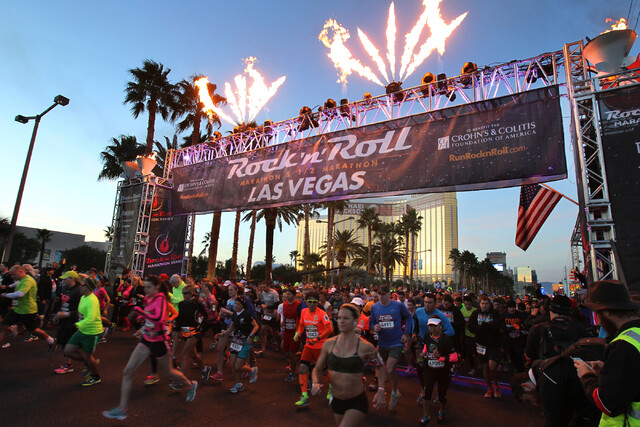
In 2007, Falconhead Capital purchased the Rock n’ Roll Marathon from Murphy. The company that managed the series was Competitor Group. They grew it from five races to 34 including six in Europe. In 2009, Competitor Group capitalized on the new brand and marketing Vegas to all of the races in the series and doubled the number of runners to 27,765.
Dale Eeles, LVE’s vice president of event development, ran the half each year. He wondered out loud why we didn’t run the race at night. I wondered out loud how we could get the hotels to support a night race. Turns out they were appreciative of the strong visitation, agreed it would be a better experience and would draw more runners. And that’s what it did.
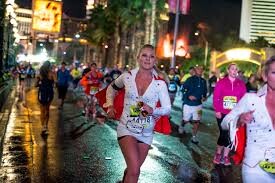
In 2011 the Rock n’ Roll Marathon used the simple tagline “Run the Strip at Night” with the name of their race. More than 40,000 runners made the Vegas trip and another 20,000+ of their friends joined them in Las Vegas to root them on. Pre-race concerts began with acts like Cheap Trick, Macklemore, Kid Rock, Snoop Dogg, Kesha, and Capital Cities.
After a COVID break the Rock n’ Roll Running Series returns February 26-27, with a refurbished experience. The full marathon has been eliminated. Anyone that ran the full race will recall the maze downtown and dark and suspicious stretches. The race is partnering with Resorts World who will host the Health and Fitness Expo and stream a live feed of the race on their 100,000 square foot LED display on the West Tower.
The 5K will take place downtown giving fans a tour of Fremont Street East and the Saturday night party at the Downtown Events Center will feature a 32-piece Symphonic Rock Show. This is a treat itself. The orchestra and band covers the likes of Pink Floyd, Elton John, ELO and The Who.
LVE’s charge is to secure events that bring visitors and then work with producers to grow each event. The runners that participate in Rock n’ Roll Running Series are affluent spenders and more than 75% of the runners each year are new to the experience.
The race in Vegas showcases the most iconic stretch of real estate in the world and provides a backdrop for a one-of-a-kind running experience. Since the first night race in 2011, Las Vegas has prospered from more than 569,000 runners and their friends participating in the most unique running experience in the world.
The new owners of the Rock n’ Roll Marathon – Ironman – have developed a plan to substantially grow runners. It isn’t more advertising or Google ads. It is the experience. Runners will be pleasantly surprised about what Ironman has planned for their Night Run of the Strip and the entire weekend.
by Pat Christenson
Login to leave a comment
Rock 'n' Roll Las Vegas
Run the Strip at night in Vegas. The half marathon course is as flat and festive as they come – perfect for runners and walkers of all ability levels....
more...Running through extreme grief
Nearly 13 years ago, Oakville, Ont. runner Lynn Keane’s life changed forever. On a late April day, she, her husband, her two daughters and many others who knew and loved their son, Daniel, became survivors of suicide loss. Since that day, Keane has had to follow a journey of radical transformation, which no one who hasn’t been through it could ever imagine taking. Recently, we spoke with Keane about her journey and how running and movement helped her find healing and peace. This is her story.
Keane’s life as a runner began in high school, when she competed as a sprinter. “As a teenager, I found joy in running high school track,” she says. “Sprinting around the track I was able to shed the labels and preconceived ideas that had been ascribed to me as a mixed-race kid growing up in Toronto.”
After several years away from the sport, she began running again as an adult, starting with 5K and eventually working her way up to a marathon. She says this process helped her build resilience and mental toughness that she would rely on to get her through the dark days ahead.
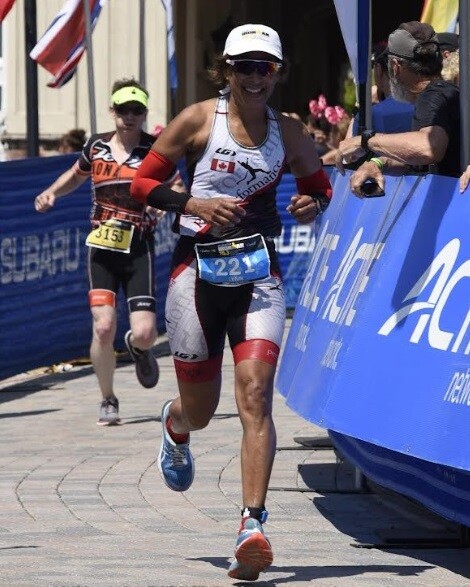
A few days after losing Daniel, when she and her family were struggling just to make it through the day, she put on her shoes and went for a run. “I needed to do something normal, and putting one foot in front of the other was so familiar,” she says. “It was also so healing because I could be alone, I could be outdoors and just scream at the sun, the moon — whatever. I could just be me and cry.”
After that first run, she knew it was something she needed to do. If she couldn’t do anything else, she would run. She also began researching and speaking with medical professionals so she could begin to understand her son’s experience. “Over the years I’ve worked to accept the loss and figure out ways to make the world a better place for young people now that I have this knowledge,” she says, “but running was the catalyst. Once I could get back out and physically move my body, the brain started to follow.”
Keane describes movement as a healing act, and it has remained that way all these years later. “I think because you make a commitment to yourself, which requires discipline, and that’s when grit happens,” she says. “Whether you’re depending on yourself, or your run crew is depending on you to show up, there are all these little habits that come from being a regular runner that builds dependence on oneself.”
Keane has now finished 14 marathons and more than 20 half-marathons. She’s a five-time Boston Marathon finisher, has done six half-Ironmans and one full Ironman and was the co-founder and co-race director of the Muskoka Rocks Races for 16 years. “In 2015 I finished my first half (Ironman), and coming across the finish line was life-changing, because that was another moment when I said ‘you can do big things’,” she says.

For anyone going through a difficult time or grappling with extreme loss, Keane says that in time, grief will not disappear, but will become part of you. “When you have these moments that are overwhelming, acknowledge them,” she says, “because in time, everything that you’ve gone through will serve to strengthen who you are.” She adds that it is an incredibly difficult process, but getting support from a professional, friend or someone you trust can go a long way toward helping you to heal. “Honour the pain, live in the pain, because if you don’t, you’re only putting it away for another day,” she says.
Advocacy and awareness
Aside from running and triathlons, Keane dealt with her loss by sharing Daniel’s story so others could see themselves and seek out the support they needed. “I wanted to offer real-time understanding around youth depression and anxiety, so that we, as family, friends and community could provide compassionate support from a place of knowledge and understanding,” she says.
Keane has done a TedX Youth Talk about suicide prevention and written a book, Give Sorrow Words. She’s dedicated herself to educating others about youth suicide prevention and has worked with a wide range of suicide prevention and mental health advocacy groups and organizations. including The JED Foundation, The American Foundation for Suicide Prevention, The International Summit on Suicide Research, the Canadian Mental Health Association (Halton) and Bell Let’s Talk Day, among others.
“In sharing our son’s story, we are honouring his life and his time on Earth,” says Keane. “I know that Daniel’s story has helped to normalize conversations around youth mental illness and suicide prevention.”
Radical transformation
“You have these horrific life experiences and you can choose to stay in that place… and of course, I did for a long time. And then one day, maybe you can see that little sliver,” says Keane. “That very little bit of light at the end of a very long tunnel and know that you can get to it, and on the other side is life again.”
Keane considers herself to be living proof of the resiliency of the human spirit. Running gave her strength she didn’t know she had until she needed it, and helped her get through the darkest moments of her life.
“When we push our body, we challenge our mind—gathering strength and fortifying ourselves for life,” she says. “Running and triathlon have served to strengthen my spirit, allowed me to survive trauma and find a greater purpose in life. That is my why.”
by Brittany Hambleton
Login to leave a comment


